FEATURING 273 Industry-First Reviews of Fiction, Nonfiction, Children’s, and YA Books

IN THE KITCHEN (AND AT THE TABLE) WITH STANLEY TUCCI
The actor, author, and gourmand headlines our first-ever Food Issue





FROM THE EDITOR’S DESK

FEATURING 273 Industry-First Reviews of Fiction, Nonfiction, Children’s, and YA Books

The actor, author, and gourmand headlines our first-ever Food Issue





FROM THE EDITOR’S DESK
I GAVE UP stamp collecting in the sixth grade, stopped practicing piano years ago, and never joined a softball league. Nowadays, if someone asks about my hobbies, I have only two real answers: reading and cooking. (Unless eating counts, too?) Without question, food and books are the things that give me the most happiness in life. I know I’m not alone . These twin pleasures inspired this, Kirkus’ first-ever Food Issue. Before anybody scrolled through viral cooking videos on TikTok and Instagram or binge-watched episodes of Top Chef and The Great British Bake Off, food lovers consumed great writing on the subject. In the middle of the last century, authors such as M.F.K. Fisher ( An
Alphabet for Gourmets) and A.J. Liebling (Between Meals: An Appetite for Paris) treated cooking and eating with the seriousness—and the literary flair—they deserve. In later decades, Laurie Colwin (Home Cooking ), Anthony Bourdain (Kitchen Confidential ), Ruth Reichl (Tender at the Bone), Jim Harrison ( A Really Big Lunch), Gabrielle Hamilton (Blood, Bones, and Butter), and others created genuine literature about their experiences in home and restaurant kitchens or the the joys of eating in and out.
Historians have unleashed a wave of books that view the world, both natural and human, through the lens of a single ingredient or foodstuff. Mark Kurlansky is perhaps the father of the genre that includes Cod: A Biography of the Fish That
Frequently Asked Questions: www.kirkusreviews.com/about/faq
Fully Booked Podcast: www.kirkusreviews.com/podcast/
Advertising Opportunities: www.kirkusreviews.com/book-marketing
Submission Guidelines: www.kirkusreviews.com/about/publisher-submission-guidelines
Subscriptions: www.kirkusreviews.com/magazine/subscription
Newsletters: www.kirkusreviews.com
For customer service or subscription questions, please call 1-800-316-9361
Changed the World, Salt: A World History, and Milk: A 10,000-Year Food Fracas. Meanwhile, revolutionaries like Frances Moore Lappé (Diet for a Small Planet), Marion Nestle (Food Politics: How the Food Industry Influences Nutrition and Health), Michael Pollan (In Defense of Food: An Eater’s Manifesto), Gary Taubes (Why We Get Fat: And What To Do About It), and Alice Waters (We Are What We Eat: A Slow Food Manifesto) continually challenge us to examine where our food comes from and how we eat—both for our own health and the health of the planet.
Few nonprofessionals better exemplify our culture’s current obsession with food than this issue’s cover subject, Stanley Tucci. As an actor, he’s embraced food-adjacent roles in films such as Big Night and Julie & Julia. But his cookbooks, The Tucci Cookbook and The Tucci Table, full of recipes from his Italian American family, cemented the association of actor and kitchen. When the
Covid-19 pandemic hit in 2020, Tucci posted a video of himself mixing a Negroni— the start of a series of viral videos of home mixology and cooking, which ultimately led to a food series on TV (Searching for Italy) and a memoir (Taste: My Life Through Food ).
Tucci’s new book is What I Ate in One Year (and Related Thoughts) (Galley Books/ Simon & Schuster, Oct. 15), in which he offers further ruminations on food and life, from gratifying meals prepared with his children at home (8-year-old Matteo has a memorable cameo making pesto) to a killer lasagna Bolognese in a Roman trattoria to completely forgettable—and sometimes insipid—food served on movie sets. My interview with Tucci appears on p. 48; like all the best foodies, he is full of strongly held opinions on ingredients, methods, and flavors. Bon appétit!




AWARD-WINNING PR FOR AUTHORS & PUBLISHERS
TRADITIONAL AND ONLINE
CONTENT, INFLUENCER CAMPAIGNS & ADS
IN-PERSON AND HYBRID LIVESTREAMS
TRAILERS AND AUTHOR VIDEOS
DEVELOPMENT AND MANAGEMENT
“WILDBOUND TOOK THE NATIONAL BOOK CRITICS CIRCLE AWARDS TEAM FROM VIRTUAL PRODUCTION NEWBIES TO A SUPERB VIRTUAL AWARDS EVENT. WE'LL ALWAYS BE GRATEFUL TO OUR WILDBOUND ANGELS.”
JANE CIABATTARI, PRESIDENT OF NATIONAL BOOK CRITICS CIRCLE
“HOW CAN YOU CUT THROUGH THE NOISE OF THE CULTURE AND GET ATTENTION FOR DESERVING WORK? HIRE WILDBOUND, FOR STARTERS. THEY’VE GOT A LOT OF ARROWS IN THEIR QUIVER AND THEIR AIM IS TRUE.”
STEVE WASSERMAN, PUBLISHER OF HEYDAY
“WORKING WITH WILDBOUND IS A DREAM! THEY’VE TAKEN OUR BOOK FESTIVAL TO NEW HEIGHTS THROUGH EXTENSIVE PRESS COVERAGE AND LEADING EDGE
SOCIAL MEDIA STRATEGIES, NOT TO MENTION SNAZZY VIDEO PRODUCTION.”
CHERILYN PARSONS, FOUNDER OF BAY AREA BOOK FESTIVAL
Co-Chairman
HERBERT SIMON
Publisher & CEO
MEG LABORDE KUEHN mkuehn@kirkus.com
Chief Marketing Officer
SARAH KALINA skalina@kirkus.com
Publisher Advertising & Promotions
RACHEL WEASE rwease@kirkus.com
Indie Advertising & Promotions
AMY BAIRD abaird@kirkus.com
Author Consultant RY PICKARD rpickard@kirkus.com
Lead Designer KY NOVAK knovak@kirkus.com
Kirkus Editorial Senior Production Editor ROBIN O’DELL rodell@kirkus.com
Kirkus Editorial Senior Production Editor
MARINNA CASTILLEJA mcastilleja@kirkus.com
Kirkus Editorial Production Editor ASHLEY LITTLE alittle@kirkus.com
Copy Editors
ELIZABETH J. ASBORNO BILL SIEVER
Magazine Compositor
NIKKI RICHARDSON nrichardson@kirkus.com
Contributing Writers
GREGORY MCNAMEE MICHAEL SCHAUB
Co-Chairman
MARC WINKELMAN
Editor-in-Chief TOM BEER tbeer@kirkus.com
President of Kirkus Indie
CHAYA SCHECHNER cschechner@kirkus.com
Fiction Editor
LAURIE MUCHNICK lmuchnick@kirkus.com
Nonfiction Editor JOHN McMURTRIE jmcmurtrie@kirkus.com
Young Readers’ Editor LAURA SIMEON lsimeon@kirkus.com
Young Readers’ Editor
MAHNAZ DAR mdar@kirkus.com
Editor at Large MEGAN LABRISE mlabrise@kirkus.com
Senior Indie Editor
DAVID RAPP drapp@kirkus.com
Indie Editor ARTHUR SMITH asmith@kirkus.com
Editorial Assistant NINA PALATTELLA npalattella@kirkus.com
Indie Editorial Assistant
DAN NOLAN dnolan@kirkus.com
Indie Editorial Assistant SASHA CARNEY scarney@kirkus.com
Mysteries Editor
THOMAS LEITCH

Contributors
Colleen Abel, Jenny Arch, Kent Armstrong, Mark Athitakis, Audrey Barbakoff, Sally Battle, Robert Beauregard, Nell Beram, Elizabeth Bird, Amy Boaz, Elissa Bongiorno, Hannah Bonner, Nastassian Brandon, Melissa Brinn, Jessica Hoptay Brown, Cliff Burke, Jeffrey Burke, Timothy Capehart, Catherine Cardno, Tobias Carroll, Caridad Cole, Rachael Conrad, Miranda Cooper, Emma Corngold, Jeannie Coutant, Perry Crowe, Sara Davis, Michael Deagler, Dave DeChristopher, Elise DeGuiseppi, Amanda Diehl, Steve Donoghue, Anna Drake, Gina Elbert, Lisa Elliott, Chelsea Ennen, Jennifer Evans, Joshua Farrington, Katie Flanagan, Hillary Jo Foreman, Ayn Reyes Frazee, Jenna Friebel, Elaina Friedman, Robbin Friedman, Roberto Friedman, Nivair H. Gabriel, Cierra Gathers, Carol Goldman, Danielle Galván Gomez, Melinda Greenblatt, Valerye Griffin, Michael Griffith, Loren Hinton, Corin Hirsch, Natalia Holtzman, Julie Hubble, Kathleen T. Isaacs, Wesley Jacques, Jessica Jernigan, Danielle Jones, Marcelle Karp, Tracy Kelly, Ivan Kenneally, Stephanie Klose, Andrea Kreidler, Megan Dowd Lambert, Carly Lane, Christopher Lassen, Tom Lavoie, Judith Leitch, Donald Liebenson, Elsbeth Lindner, Coeur de Lion, Barbara London, Patricia Lothrop, Wendy Lukehart, Isabella Luongo, Michael Magras, Joan Malewitz, Collin Marchiando, Francesca Martinez, Gabriela Martins, J. Alejandro Mazariegos, Kirby McCurtis, Breanna McDaniel, Zoe McLaughlin, Kathie Meizner, Carrigan Miller, J. Elizabeth Mills, Tara Mokhtari, Clayton Moore, Lisa Moore, Andrea Moran, Rhett Morgan, Jennifer Nabers, Christopher Navratil, Liza Nelson, Mike Newirth, Mimi Nguyen, Randall Nichols, Therese Purcell Nielsen, Sarah Norris, Katrina Nye, Tori Ann Ogawa, Mike Oppenheim, Emilia Packard, Andrea Page, Megan K. Palmer, Derek Parker, Sarah Parker-Lee, Deb Paulson, John Edward Peters, Jim Piechota, Vicki Pietrus, Margaret Quamme, Kristy Raffensberger, Maggie Reagan, Caroline Reed, Evelyn Renold, Amy Robinson, Bella Rodrigues, Lizzie Rogers, Lloyd Sachs, Bob Sanchez, Keiko Sanders, Gretchen Schulz, Gene Seymour, Jerome Shea, Maia Siegel, Leah Silvieus, Linda Simon Wendy Smith, Margot E. Spangenberg, Allison Staley, Mathangi Subramanian, Jennifer Sweeney, Deborah Taylor, Desiree Thomas, Bill Thompson, Renee Ting, Lenora Todaro, Amanda Toth, Jenna Varden, Katie Vermilyea, Francesca Vultaggio, Barbara Ward, Amelia Williams, Grace L. Williams, Marion Winik, Bean Yogi, Jean-Louise Zancanella, Jenny Zbrizher
IN THIRD GRADE , I wrote a story called “The Mysterious Intruder,” and taking my cues from the many Nancy Drew novels I’d read, I padded the plot with descriptions of food. The detectives—two sisters and their aunt—took time out of their investigation to eat cookies and, the next day, make eggs and bacon for breakfast. I was rewarded with this comment from my teacher, Mrs. Pellegrino: “This is truly a long story!”
The best fiction doesn’t use food as padding, but as an intrinsic part of the narrative even if the book isn’t about food. (What would Heartburn be without Nora Ephron’s recipes?) One of the protagonists of Caoilinn Hughes’ recent novel, The Alternatives (Riverhead,
April 16), is Maeve, an Irish culinary star who, along with her three sisters, must face her childhood demons. The menu for a private dinner she’s preparing when we first meet her includes “native lobster from the Cornish waters, in ravioli with saffron and pinot blanc foam, and sturgeon caviar…in place of salmon roe, which would have had to come from Alaska”— pointing toward the ecological concerns that unite the sisters. Our starred review calls the book “intelligent, impassioned, and wholly satisfying.”
Jack Schmidt, the protagonist of Ethan Joella’s The Same Bright Stars (Scribner, July 2), has spent his life running his family’s

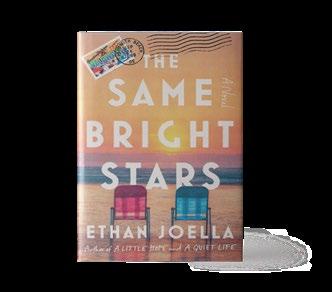
historic restaurant in Rehoboth Beach, Delaware. Now he’s 52 and suddenly thinking about all the things he’s missed while tethered to Schmidts—marriage, kids, vacations. Food is less sensuous pleasure here than a steady beat in the background of the book. “There’s so much to love about this gentle domestic drama,” says our review. “The fraught bustle of restaurant life; the rhythms of a seaside resort town; the quiet importance of male (and feline) friendship.…About as dear as a novel can be.”
Lizzy Dent’s Just One Taste (Putnam, July 16) also features a family restaurant, this one based in London. Olive Stone doesn’t want the place her semi-estranged father left her when he died, but before she can sell it, she
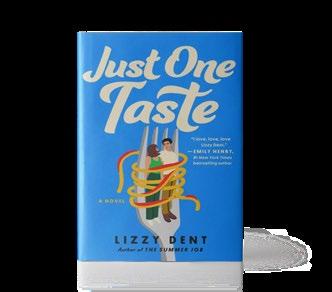

has to finish the cookbook he was working on with his sous-chef, Leo Ricci. This takes Olive and Leo on a tour of Italy, eating and cooking their way through her dad’s favorite places. Our review says, “Leo and Olive have serious chemistry that simmers slowly on the back burner as they explore Italy, and the lush descriptions of simple foods like tomatoes, cherries, and oranges will make readers want to book a trip.”
The Restaurant of Lost Recipes by Hisashi Kashiwai, translated by Jesse Kirkwood (Putnam, Oct. 8), reminds me of one of my favorite TV shows, Midnight Diner, about a tiny late-night Tokyo restaurant whose regulars are welcomed by an avuncular chef who tends to elicit their life stories. The book is the second in a popular Japanese series about a father and daughter who run a Kyoto restaurant where they recreate meals from their customers’ memories. Our review called the first installment, The Kamogawa Food Detectives (Putnam, Feb. 13), “miso soup for the soul.…A nourishing collection of bite-size stories with a hearty dash of savory flavor.”

Laurie Muchnick is the fiction editor.
An interracial couple vacations with both sets of parents.
Following the success of her novels Chemistry (2017) and Joan Is Okay (2022), Wang returns with the story of Keru and Nate, a Chinese American woman and a white man who meet at Yale, fall in love, and get married. Some years later, they go on two vacations— to Cape Cod and the Catskills—during which both sets of parents, as well as some unexpected visitors, come to stay with them. As they share rental houses with their families (and their large dog, Mantou), racial, cultural, and class tensions come to the surface. Keru’s Chinese immigrant parents are demanding and rigid, while
Nate’s white, Appalachian, working-class parents (the couple argues at one point about whether they’re “white trash”) have their own set of particularities and prejudices. Keru chafes against Nate’s parents’ rural conservatism, occasional racism, and constant need to keep up appearances through pleasantries, even when conflict lurks beneath the surface. On the other hand, Nate feels intimidated and judged for his amateur Mandarin skills and reliance upon bourgeois comforts that Keru’s parents, as immigrants who have had to live in less ideal conditions, feel are lazy. (In one memorable incident, Keru’s father proclaims that “to use a dishwasher is to admit defeat.”) Caught in

Wang, Weike | Riverhead | 224 pp.
$28.00 | Dec. 3, 2024 | 9780593545546
the crossfire of these contrasting mentalities and expectations, Keru and Nate are forced to reflect on the values that shape their relationship and their burgeoning family. Wang is an incisive writer with sharp psychological insight who does dialogue particularly well, revealing what is
not said in conversation just as much as what is said out loud. This quietly engrossing novel is subtle and powerful in its cultural critique and will surely be relatable for anyone who has in-laws.
A compelling portrait of family dynamics under pressure.
Kirkus Star
Banville, John | Hanover Square Press (336 pp.) | $28.99 Oct. 1, 2024 | 9781335000590
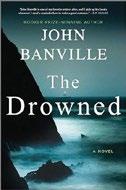
Irish author Banville brings back characters he originally wrote about under the name Benjamin Black.
Banville’s latest 1950s-set crime novel opens with Denton Wymes, a recluse who lives in a caravan in rural Ireland with his dog, stumbling upon an unusual sight: a Mercedes SL idling in a field, its headlamps on and no driver in sight. A man named Armitage accosts Wymes, saying that his wife, who had been driving the car, has gone missing and may have “drowned herself.” Wymes is suspicious of Armitage, whose affect seems off: “It seemed a piece of bad acting, but then, Wymes told himself, that’s mostly how people behave when there’s a crisis and they’re distraught.” DI St John Strafford arrives from Dublin to investigate, quickly sussing out that nothing about the case will be straightforward—Armitage is slippery and unpredictable, Wymes is a convicted child molester, and something seems amiss about the couple whose rental house Armitage and Wymes went to for help. Meanwhile, Strafford has his own problems: His separated wife wants a divorce, and his lover—who happens to be the daughter of his pathologist colleague, Quirke—is pregnant. And when two bodies are discovered, he is faced with an increasing sense of urgency. Strafford and Quirke return as characters from Banville’s previous crime novels, and Armitage played a large role in his most recent book, The Lock-Up (2023). These are compelling people: Strafford with his emotional unavailability (“The fact was, he did not understand himself, or Phoebe, or anyone. The vagaries of the human
heart baffled him”) and Quirke with his brooding depression (“He stayed away from people as much as possible. This was a loneliness company couldn’t cure”). As for the mystery at the heart of the book: Banville remains a master of suspense; it’s not easy to stop turning the pages until the novel’s genuinely surprising end. This is yet another fine thriller from an author at the top of his game. Excellent writing and a clever plot make this one stand out.
Kirkus Star
Battle-Felton, Yvonne | Henry Holt (304 pp.) $27.99 | Oct. 15, 2024 | 9781250362018
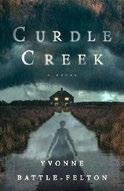
A woman plans her escape from a Black enclave in this mindbending allegory.
Curdle Creek, the setting of Battle-Felton’s second novel, has a population of 201 and is determined to stay small. Founded in 1864 as a refuge from lynching and disease for free Blacks, it’s established a series of odd rituals to run smoothly. Some are relatively benign, like a Running of the Widows, where women engage in a cutthroat race for available men; others, like the Moving On, are collective murders of residents in the name of population control and (the legend goes) fruitful harvests. But Osira Turner, the novel’s middle-aged narrator, is bristling against Curdle Creek’s ceremonies, having lost the Running of the Widows and learned her father has been selected for the Moving On. The debt to Shirley Jackson’s “The Lottery” is obvious, but Battle-Felton is drawing from a deeper well of influences, including Toni Morrison’s lyricism, the time-travel elements of Octavia E. Butler’s Kindred and the alternative universe of Colson Whitehead’s The Underground Railroad. Osira’s investigations into the roots of Curdle Creek’s ceremonies unlock a
series of surprising, sometimes hallucinatory plot turns—the mysterious death of one of the town elders, a well that’s a portal into the town’s history—but Battle-Felton imagines this world exceedingly well. And she never loses sight of the novel’s central theme: how the need for communities to protect themselves unleashes its own anxieties and traumas. “Our ways are what save us—protecting us from them and from being like them,” Osira notes. But the death, loss, ghosts, and trials (literal and figurative) that she faces suggest that no amount of structure and doctrine can fully protect a community. The novel’s somber tone is firmly gothic, but it’s also richly open to interpretation.
Sharp speculative fiction, casting a skeptical eye on insular communities of all sorts.
Beane, Jim | Mandel Vilar Press (160 pp.) $18.95 paper | Nov. 5, 2024 | 9781942134947

Traumatized by the fighting in France—increasing doses of laudanum and whiskey help only a little—Doughboy Harrell Hickman is a ticking time bomb back on U.S. soil after World War I.
A veteran’s hospital in Baltimore got him started on the drug—the only treatment it can devise for his “unscathed but unraveled” condition. Riding the rails to Nebraska, he encounters in the small town of Wisdom a fellow veteran, Willem Redd, who is visibly damaged by the war—he has an amputated arm and disfigured eye—but lives a productive life as sheriff and shopkeeper. Redd anticipates trouble when Hickman tells him he’s pursuing a job on a big ranch up near the Wyoming border. The ranch owner, Conover, is a solid sort but employs a “rough bunch” of Texans. Sure enough, after he’s hired, Hickman incurs the mockery of the Texans with his shaking hands and
GABRIEL’S MOON
refusal to go near guns or horses (both trauma triggers). When one of the Texans keeps riding him, Hickman loses it and beats him to a pulp. It won’t be the last outpouring of violence from the veteran, whose grip on sanity weakens as the laudanum, or lack of it, takes its toll. This short novel is a seamless blend of modern Western and classic noir. Though we’re not prepared for the suddenness of Hickman’s final descent into madness, there’s little doubt where things are headed. But the book’s muscular, straightforward style and deepening nightmarish tone keep you in its grip. A powerful depiction of the psychological ravages of war.
Kirkus Star
Gabriel’s Moon
Boyd, William | Atlantic Monthly (272 pp.) $28.00 | Dec. 3, 2024 | 9780802164872

A London-based writer finds himself stuck in the webs of British intelligence.
It’s 1960 and Gabriel Dax is flying home to England after interviewing Congolese Prime Minister Patrice Lumumba when a series of “strange coincidences” begins. He’s upgraded to first class and a woman on the plane is reading one of his travel books. Back home he finds someone has left his flat in “careful disarray,” and the plane woman appears in his neighborhood. She soon reappears, says she’s from MI6, and asks him to “do us a small service.” The job goes
smoothly except for the woman who plants heroin on Gabriel, which he discovers before the police do, and the CIA man who’s interested in the tape recording of the Lumumba interview because it reveals a direct link between the prime minister’s subsequent assassination and former U.S. President Dwight D. Eisenhower. Boyd sets his story not long after news of Guy Burgess and the other Cambridge Five double agents began to emerge. Dealing with such moles becomes a larger theme of the book and provides a nasty twist at the end. In this murky world, Gabriel is a kind of Evelyn Waugh naif caught in a Graham Greene plot, and one of the book’s pleasures is his entirely plausible resourcefulness as challenges grow more perilous. While Boyd craftily ramps up the complications for his reluctant spy, he also gives him a full life apart from intelligence errands. He has embarked on a new travel book, about major rivers. He’s enjoying great sex with a woman who doesn’t seem to demand much more. And he has begun therapy sessions for insomnia and dreams that recall when he was 6 and his house burned down, leaving his mother dead while he barely escaped. Boyd doesn’t quite weave all these strands into a neat little package, but it’s still a highly entertaining book that can easily bear a few loose ends.
An exceptional storyteller in fine form.

Child, Lee & Andrew Child
Delacorte (304 pp.) | $30.00 Oct. 22, 2024 | 9780593725801

A temporary bout of amnesia leaves Reacher unsure of whom to trust.
For more by William Boyd, visit Kirkus online.
Jack Reacher wakes up in pain, handcuffed to a table and with an injured right arm. How did he get there? After neatly dispatching the man guarding him, Reacher attempts to exit the house where he’s being held, only to be stopped by a stranger named Ivan Vidic. According to Vidic, Reacher was the passenger in a car crash that killed the FBI agent who was driving. Vidic and his three associates, Fletcher, Kane, and Paris, pulled Reacher out of the wreck. Vidic is anxious to find out why Reacher was in the car, suspecting he’s a colleague to the dead driver. Reacher can’t recall anything about the wreck or the man driving, but suspects his habitual hitchhiking simply put him in the wrong place at the wrong time. Reacher’s curiosity is piqued by Vidic’s strange behavior and he demands to know why he was removed from the crash site and restrained. Vidic explains that he and Paris are planning to double-cross Fletcher and Kane, the real bad guys. If Reacher agrees to help them, Vidic promises him half of a $2.2 million score. Reacher agrees, not for the money, but to give himself more time to investigate Vidic’s story and whether the crash was truly an accident. He uncovers a complicated plot involving art forgery, theft, and corporate blackmail. This 29th installment of the Jack Reacher series is the first one primarily written by Andrew Child, Lee’s brother. The plot is structured like a game of three-card monte; Reacher knows he can’t trust anyone, but he can’t figure out which player is the mastermind. It’s entertaining enough, but the story feels basic compared to Reacher’s previous complex and complicated adventures.
A series downshifts to simpler and less thrilling storytelling.
QUARRY’S RETURN
Collins, Max Allan | Hard Case Crime (224 pp.) $16.99 paper | Nov. 5, 2024 | 9781803368764

Retired contract killer Quarry— don’t call him a hit man—gets pulled back into the ring by someone who’s stirred up even more trouble than he has: his adult daughter.
Like her father, Susan Breedlove has written a string of true-crime books, but they’ve been much more successful than his. Susan has just left after a Christmas Day visit with her father, who’s only recently learned of her existence, when Quarry is menaced by a knife-wielding fake reporter who’s come calling to kill him, or maybe just to squeeze money out of him. Female assassin Lu Petersen returns from her own rumored death just in time to save Quarry’s bacon, and shortly thereafter they discover that Susan never made it home. The first half of their search for the missing author is standard franchise fare: the deadly duo confronts several contract killers— sometimes at their instance, sometimes at the other guys’—and walk away from each encounter hungry for the next. Once they establish that Susan’s latest subject was the perpetrator of Iowa’s “Cheerleader Murders,” the tale settles into a very different, but equally familiar, groove: Quarry and Lu patrol the area questioning variously obliging local police officers and suspects, with special attention to bad-boy trucking heir Christopher Lowe, hoping against hope that retracing Susan’s steps in the search for the triple murderer will turn her up still alive along the way.
“I’ve always been a softie,” the eponymous protagonist confides in
his once-again partner in sex and crime. Yeah, right.
Cornwell, Patricia | Grand Central Publishing (400 pp.) | $30.00 Oct. 8, 2024 | 9781538770382
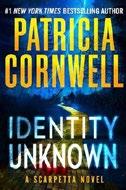
The death of an old friend who was more than a friend sends Dr. Kay Scarpetta down her latest rabbit hole. If every body tells a story, the corpse of 7-yearold Luna Briley sings the blues. On top of the many signs of ongoing physical abuse, there’s the fatal gunshot wound to her head. Ryder and Piper Briley, the wealthy and powerful parents who didn’t call the police until after their daughter died, insist that Luna’s death was an accident, or maybe a suicide. Scarpetta doesn’t think so, and her refusal to release the body to the Brileys’ hand-picked mortician moves them to legal action against her as Virginia’s chief medical examiner. You’d think it would be a relief to put this case aside for another when Scarpetta’s niece, Secret Service agent Lucy Farinelli, calls her and ferries her by helicopter to an abandoned Oz theme park owned by Ryder Briley, but this one’s even more heartbreaking. Scarpetta is there to examine the body of astrophysicist Sal Giordano, her close friend and former lover, who was evidently kidnapped, held in captivity for several hours, and tossed out of an unidentified aircraft. The leading suspects are the Brileys; Carrie Grethen, Lucy’s sociopathic ex-lover, with whom Scarpetta has repeatedly tangled in the past; and the UFO that dumped
Giordano’s body without leaving the usual traces for air-traffic technologies to pick up. The multiple rounds of physical examinations Scarpetta conducts on both victims are every bit as meticulous and gripping as fans would expect; the killer’s identity is neither surprising nor interesting, but Cornwell juggles her trademark forensics, and the paranormal hints she’s become increasingly invested in, more dexterously than usual. Expert, but unsurprising.
Dantas Lobato, Bruna | Black Cat/ Grove (192 pp.) | $17.00 paper Oct. 15, 2024 | 9780802163776

Every night, a college student and her mother reconnect over Skype.
“I’d never be able to finish telling my mother what I saw,” Dantas Lobato writes near the beginning of her debut novel. “I would need as much time for telling as I would need for living.”
Dantas Lobato’s narrator, a young girl from Brazil, has just started her first year of college in Vermont. Almost every night, she and her mother talk over Skype about their lives, their thoughts, and the mundanities of their days. This is a slim work with a narrow focus that belies the depth of its own emotion, the profundity of Dantas Lobato’s observations. It is part campus novel, part coming-of-age novel, and, more than anything, it is a novel about the relationship between a mother and daughter. The mother, whose health is less than ideal, has stayed home in Brazil while the daughter ventures out into the wider world—but not without regret and guilt for the mother she’s left behind. “I would give anything to live there with you,” her mother tells her. “Where it snows milk, and even the people are milky, and there’s milk on tap
in the dining hall, and squirrels…greet you in the morning.” There’s a quiet lyricism to Dantas Lobato’s prose, an elegance both to her sentences and to the shape of the book as a whole. It’s a work you could read in an afternoon or linger over for an entire winter, finding something new to savor on each page. In 2023, Dantas Lobato won the National Book Award for her translation of Stênio Gardel’s The Words That Remain. In her first novel, she shows that her talent as a writer is at least as tremendous as her talent as a translator.
A quiet, meticulously constructed novel about a mother and a daughter.
Doyle, Roddy | Viking (272 pp.)
$29.00 | Sept. 10, 2024 | 9780593831687

Paula Spencer returns, with the demons of her past lurking everywhere around her. Charlo, the abusive husband who drove her to alcoholism in The Woman Who Walked Into Doors (1996), has been dead for years, and the shaky sobriety chronicled in Paula Spencer (2007) is long-standing, but the damage inflicted by the beatings and the binges is still with Paula at age 66. The fallout is most evident in Paula’s eldest, Nicola, who spent her childhood dealing with a drunken mother and chaotic household. Having worked her way into middle-class respectability, with a gentle husband and three girls, she still acts as though she must take care of Paula, and she still furiously resents it. Simmering tensions between the two, well laid out in the
novel’s leisurely opening chapters, are exacerbated by the Covid-19 lockdown and come to a head when Nicola storms into Paula’s house declaring, “I’ll kill them.” A glimpse of her brother-in-law ogling her 15-year-old daughter has brought back memories of the look at Nicola that prompted Paula to violently drive Charlo from their home—but not, Nicola bitterly tells her now, before several incidents of inappropriate comments and touching. Years of rage come pouring out of Nicola, and Doyle unsparingly reveals Paula’s angry thoughts in response: Did her daughter not know how many times she stood between Charlo and her kids, how many broken bones sent her to drink as a pain reliever? Doyle is no fancy stylist; he excels in the singing speech of ordinary people that reveal the seething emotions underneath. There’s no feel-good resolution here, simply the will to go on and the understanding that the bonds of familial love may buckle but can never be broken.
A gripping, blisteringly honest examination of issues too long swept under the rug.
Giebel, Karine | Trans. by Laura Haydon HarperVia (720 pp.) | $19.99 paper Oct. 29, 2024 | 9780063393929

The American debut from French writer Giebel is a solid if straightahead suspense novel about two brothers whom gross injustice seeks out again and again.
Léonard (his name a wink to Steinbeck’s Of Mice and Men) is a
A blisteringly honest examination of issues too long swept under the rug.
large, powerful, sweet-tempered teen who’s relentlessly bullied and taken advantage of because of certain intellectual disabilities. Léonard was a foundling, discovered battered and bruised in a ditch and taken in at age 5 by kind, heartbroken Mona. The boy’s favorite keepsake is a postcard from Glen Affric, Scotland, where he’s been led to believe his brother, Jorge, Mona’s beloved elder son, lives. But Glen Affric is a cover story. Jorge has been convicted of two murders he didn’t commit, and for 16 years he’s been in prison, a status that has cemented the family’s status as shunned and despised outsiders in their town. On the day when Jorge is paroled, Léonard lands in prison himself, briefly but disastrously, after—not knowing his strength—he defends himself too vigorously and injures his tormentors. Léonard emerges from lockup psychologically and physically wounded, and he’s bewildered and upset to learn where Jorge has been. But the vulnerable brothers soon grow close, and as the horrors and injustices continue to mount, they grow ever closer. Jorge is on parole, under constant threat of being returned to prison if he loses his job or responds to the townspeople’s taunts, abuses, provocations. Framed for theft and fired once, he takes on lucrative illicit work and acquires, just in case, a bug-out bag, which he and Léonard bury in the backyard. The reader knows it cannot stay buried for long. Sure enough, Jorge is framed for another murder— of the woman he loves, a restaurateur he felt forced to break up with in order to spare her business and her reputation. The novel, a bit slow to launch, picks up major momentum around its midpoint, when the brothers kidnap a somewhat sympathetic cop and go on the run. The book, and the brothers, are headed to a destination and a denouement that seem predetermined, but Giebel delivers them and us to the rendezvous with some panache. Not twisty or unexpected, but tense— and with a surprising sweetness in the relationship between the brothers.
Karla’s Choice: A John le Carré Novel
Harkaway, Nick | Viking (320 pp.)
$30.00 | Oct. 22, 2024 | 9780593833490
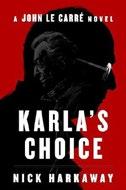
Harkaway, who’s John le Carré’s son, slips this spy tale into the 10-year gap between The Spy Who Came In From the Cold (1963) and Tinker Tailor Soldier Spy (1974)
In London in the early spring of 1963, a Hungarian assassin named Miki Bortnik shows up at a literary agent’s office to kill a man named Laszlo Bánáti, on instructions from the Thirteenth Directorate (think KGB). But the repentant killer confesses to Bánáti’s assistant, Susanna Gero, that God has told him not to do it. In any case, Bánáti has disappeared. Susanna tells MI6, who naturally wants to know what the Soviets are up to. Meanwhile, George Smiley has retired from the Circus (MI6) and is spending his time with his wife, Ann. “There was a rumour—unconfirmed and a little scandalous—that George Smiley might almost be happy.” Control (the head of British Intelligence) orders that Smiley be persuaded to deal with the case. Although it would be a temporary assignment, Smiley at first demurs, saying, “Let the old dog sit by the cooker.” But he ultimately agrees, much to Ann’s quiet exasperation. She knows he loves her, but the Circus is his “grey mistress.” Bánáti is discovered to be a Soviet agent known as Róka, and now he’s on the run. Smiley’s nemesis is the unseen Soviet Intelligence officer known as Karla, a dark presence in three previous le Carré novels. The best intelligence work is slow, and “spying is waiting.” The novel proceeds at a pace to match as it immerses the reader in a world of dread and drear, “shadows and sorrows.”
A Cold War yarn befitting the world of le Carré.
Heffernan, Julie | Algonquin (240 pp.) $28.99 paper | Sept. 3, 2024 | 9781643755595
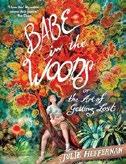
A Brooklyn-based artist and new mother’s harrowing hike in upstate New York frames a wide-ranging reflection on art and the artist’s life. In this graphic novel from painter Heffernan, we meet Julie, with infant Sam strapped to her chest, making her way through a lush forest extending to the horizon. The landscape’s myriad greens and multitudinous life awe her and, feeling small under the setting sun, Julie wonders, “What’m I doing here?” The book answers this question in senses big and small, alternating between the increasingly off-course hike and Julie’s background as the youngest member of a conservative religious family, first in small-town Illinois and then in the suburban sprawl of the San Francisco Bay Area. Chronic bed-wetting leads to shame and distressing medical intervention for Julie, anchoring her narration in the corporeal. The female body suffers—when the young Julie squirms under her father’s judging gaze, or when a friend’s excitement at seeing the Beatles provokes savage punishment from the friend’s father for perceived carnality—but is also celebrated, as menstrual rags make their way into fine art, and Sam’s nursing from Julie’s hot breasts brings calm to the lost mother. Julie majors in art; travels Europe with a nasty boy; paints in West Berlin with writer Jonathan, her eventual husband and Sam’s father; gets a New York agent who screws her over; and rivetingly explains her artistic motivations in stream-of-consciousness narration that is both erudite and amiable. Classic works of art, their secrets deciphered by Julie’s exuberant annotation, punctuate the muted tones and soft lines of the storyline panels, while the
author’s own vibrant, ornate paintings occasionally explode the page with fecund portraits of humans and hivelike homes. Heffernan takes her time laying out the narrative threads, then lets them echo through one another, painting the rich web of one woman’s life.
A sumptuous feast for the eyes and the mind.
Karlin, Wayne | Publerati (297 pp.)
$18.95 paper | Sept. 17, 2024 | 9798986617824

A novelist speculates about what would have happened if his Jewish family had stayed in Poland in the 1930s. A Genizah is a place where worn-out religious books are kept until they get a proper burial; when death is everywhere and proper burial is no longer possible, Karlin suggests, everyone starts to live in a Genizah, an in-between space. Inspired by his mother’s stories about life in Kolno, Poland, and her family’s subsequent reinvention in America, Karlin’s heartfelt book asks, “What if they had stayed?” Leaving becomes a focus of the main characters: Elazar, a talented boxer, and Rahel, the daughter of a smuggler, leave the small, heavily Jewish town of Kolno on horseback together, after Elazar leaves wealthy widow Rivka Mendl literally at the chupah. Rivka curses them as they leave, and their troubles begin shortly thereafter, when they learn the cost of getting to America. To fake your documents and get you a ticket, gangsters like Leo Bombas will ask for anything—and do. With a beautiful horse named Argamaka in tow, Rahel and Elazar decide to give up on their expatriate dream and return to Kolno. Their welcome is not warm; everyone thinks they should have gone. As they settle back into their lives, the town starts to chatter about a possible German invasion. Kolno’s descent is
There’s cleverness and craft in abundance. Also, wisdom and even warmth.
DIS//INTEGRATION
swift, as Polish neighbors are pitted against Jewish neighbors. Rahel and Elazar decide they must try to escape one last time. As history starts to unfold, the author enters his pages: “I know what has to occur, and this is not a folk tale nor a fairy tale; this is about what happened and what didn’t happen and what will keep happening.” The fact that we know how the story will end doesn’t make it any less emotionally devastating. A poetic, searching novel about fates hanging in the balance.
Karmi, Ghada | Interlink (248 pp.) | $17.95 paper | Sept. 10, 2024 | 9781623716646

Palace intrigue abounds in this story of ninth-century Baghdad. Set against a backdrop of unrest between Sunni and Shia factions, Karmi’s novel chronicles the middle-aged caliph’s growing infatuation with a younger woman, the title character. This isn’t simply a story of star-crossed lovers; political intrigue plays a large part here, and one of its central characters provides an outsider’s perspective on palace conflicts. For a book with multiple plot threads, the novel’s pacing doesn’t always work in its favor. Much of it is told in a flashback after a prologue set in 830 reveals a crisis at the caliph’s palace. From there, Karmi travels back in time by 9 months, revealing the caliph’s introduction to Murjana and introducing Abu Mansour, a doctor who is
consulted when the caliph initially shows signs of a debilitating illness. This turns out to be “the disease of love,” which prompts the doctor to advise his patient to seek out the object of his affection. It’s only then that the title character truly becomes a presence in the book, and Karmi reveals more and more of the machinations that her relatives seek to deploy to get their revenge on the caliph. The title character’s internal conflict between loyalty to her family and her husband is effectively portrayed, but she isn’t in the spotlight long enough for her experiences to truly engage readers. Similarly, Abu Mansour, who is the most compelling character here, remains offstage for long stretches of the book, reappearing to act as a detective in the novel’s final section. The palace intrigue and political tensions are individually compelling, but the novel never quite becomes as thrilling as its ingredients promise.
Uneven, but at its best, an immersive tale of power, infatuation, and sinister plots.
Kirkus Star
Kelley, William Melvin | Vintage (256 pp.) $17.00 paper | Oct. 22, 2024 | 9780593469934
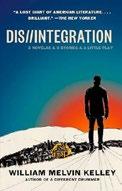
A posthumously published work by a major (if unsung) Black novelist reminds readers of his imaginative brio, verbal ingenuity, and abrasive wit. In a present day when innovative fiction by African
American writers is finding greater acclaim, it’s appropriate that Kelley, who died in 2017 at age 79, should emerge from the relative shadows of cult heroism with this previously unpublished novel. The self-described “2 Novelas & 3 Stories & a Little Play” constituting Dis//Integration make up a shapeshifting biography of Charles “Chig” Dunford, a quasi-autobiographical character who previously appeared in Kelley’s short story collection Dancers on the Shore (1964) and in his novel Dunfords Travels Everywheres (1970). Chig, a highly educated writer and academic, seems to live his life in dreamlike phases, beginning in 1952 when, at 17, he travels south to meet his grandmother Nanny Eva, who enlightens him about the fate of women in the world. Twelve years later, Chig’s in Reupeo (an anagram of Europe), where he becomes protégé to a Hemingway-esque American expatriate writer named John Hoenir, who offers counsel on writing, living, and even sparring. (“You can only go to Heaven if you die fighting. An ambush don’t count.”) The narrative shifts to the “little play” form but not without a short introduction, described as a “dream” and written in a kind of Joycean patois Kelley has deployed in earlier novels. The dramatic narrative that follows seems surreal, too; it takes place in 1965 on a passenger ship where Chig meets and falls in love with Wendy, an enigmatic Black actress passing for white, who breaks his heart, but not before telling him about a hundred Africans chained together in the ship’s lower hold. Mutineers or… slaves? Nobody seems to know. Eventually both the narrative and Chig settle in Vermont, where he teaches English at a small college; looks after Merry, his teenage niece; meets Renka Bravo, a captivating, raven-haired dancer whose cosmopolitan smarts seem to be luring him from lifelong bachelorhood; and engages in some genteel but barbed sparring with Raymond Winograd, his department chair. There’s no use in trying to fashion any kind of logical narrative from these interludes. All you can do is marvel at Kelley’s arresting collagelike portrait of the artist as an intellectual
nomad, clinging to the core of what makes him human—and humane. There’s cleverness and craft in abundance here. Also, wisdom and even warmth.
Koontz, Dean | Thomas & Mercer (400 pp.) $28.99 | Sept. 24, 2024 | 9781662500510

An epic battle between good and evil with a mystic twist. When she was 10, Vida visited a fortuneteller who presented her with two broadly different futures and prophesied that she’d be “a champion of the natural world and all its beauty.” Now Vida, raised by her late great-uncle Ogden in a remote cabin surround by the beauties of nature, has no fear of wild animals, including the wolves led by her friend Lupo. Taught by Ogden, Vida, who has a special talent for dredging up gemstones, makes a living by means of a placer mine in a nearby river on government land. Her lover, school principal and activist José Nochelobo, dies in what seems to be an accident but turns out to have been murder. Terrence Boschvark, a wealthy psychopath who’ll stop at nothing to develop some nearby land, is behind the evil doings near her home. Vida, certain that someone is watching her, patiently waits for him to show himself. When he does, he turns out to be deputy sheriff Nash Deacon, who accuses her of killing his cousin Belden Bead and demands that she surrender to him body and soul. Deacon plays a game of sexual terrorism with Vida, who watched his drug-dealing cousin die of a self-inflicted gunshot wound and buried him and his car with her uncle’s backhoe. Now she plans for Deacon to be next. Once she kills and buries Deacon and his car, Vida becomes the subject of a manhunt by Boschvark’s remorseless killers. The mystical forces within her lead her to a place of hope. With some help from
two native people and a tracker hired to find her, she fights for her life. A page-turning thriller that combines a touch of magic with deep love for the natural world.
Kornberg, Julia | Trans. by Jack
Rockwell & Julia Kornberg
Astra House (240 pp.)
$25.00
Dec. 3, 2024 | 9781662602856

Th ree siblings from Buenos Aires weather the eventful unfolding of the 21st century. Kornberg’s debut novel, which she stylishly co-translates from Spanish with Rockwell, is presented as a collection of diaristic writings assembled and edited in 2063 by a childhood friend of the Goldstein family. It begins in Buenos Aires, with Nina Goldstein: “If you want to see a Jewish girl baptize herself all day, every day, you need only go back to the summer of 2009. With a time machine, a photo lost to the internet, a Daft Punk record.” Nina and her older brothers, Mateo and Jeremías, grow up in a gated community north of Buenos Aires with scant parental involvement. The music scene of the period, including the Cromañón nightclub fire of 2004, is a backdrop to their coming of age, presaging future tragedies and two of the siblings’ careers in the arts. As Jeremías comments, “Want to destroy your friendships? Form a band. Want to destroy a band? Give its members time, feed them candy, coke, ideological warfare, propaganda,
fascism.” As the book hopscotches forward in time, settings include Uruguay, Paris, Berlin, Gaza, Brussels, and Tokyo, all in various dystopian iterations—Paris is the epicenter of a bloody hacker-driven revolution in a not-far-off future. Though their family is geographically scattered and one of them dies young, the Goldstein siblings remain crucially connected, retaining in their orbit longtime friends and romantic partners, a redefined version of dysfunctional family more lasting than anything else in Kornberg’s atomized landscape. Capturing a lost generation that feels both timeless and particular in its ironic fatalism and its various intellectual, artistic, and political responses to a broken world, this novel will be of interest to the international literary community. A striking debut from a new global voice.
Kovacic, Katherine | Poisoned Pen (320 pp.) $16.99 paper | Nov. 5, 2024 | 9781464219689

Six women consumed by rage take justice into their own hands. Naomi’s skeptical of the therapy that hasn’t helped her come to terms with the murder of her sister and the fact that the killer walks free. She reluctantly goes to her therapist Mia’s group meeting, where she meets Amy, Gabrielle, Katy, Brooke, and Olivia, all women whose sisters were killed by significant others who went unpunished. At first Naomi’s shocked when Mia mentions Strangers on a Train as providing a pattern for the
Three siblings from Buenos Aires weather the unfolding of the 21st century.
BERLIN ATOMIZED
women to arrange the deaths of their sisters’ killers so that the suspect with a motive has an ironclad alibi. They’ll work in groups of two and carry out each murder by different means so that no pattern is established. Agreeing to go ahead with the plan, the women pair up and meticulously plot each death to look like an accident. As a mining engineer, Naomi helps Katy plan how to take the first target, an opal miner, with Olivia as her backup. Well planned and well executed, the project goes off without a hitch, but it’s too much to hope that none of the others will meet problems. Perhaps the most dangerous problem is Detective Senior Sergeant Fiona Ulbrick, who’s not happy about victims of domestic abuse who died in so-called accidents while their abusers were acquitted. After several of the men die, Ulbrick begins to notice a pattern after all, but can she prove—does she even want to prove— that the men were murdered?
A harrowing story of the moral ambiguities surrounding justice denied.
Kirkus Star
Sister Snake
Lee Koe, Amanda | Ecco/ HarperCollins (272 pp.) | $28.00 Dec. 3, 2024 | 9780063355064

A darkly comic contemporary fairy tale about estranged sisters who happen to have been born snakes. The story riffs on the ancient Chinese “Legend of the White Snake,” in which a krait and a viper made a pact to be sisters forever. The krait yearned to become human, so the viper, though happy in her skin, agreed to transform too. For 800 years they practiced Taoist “self-cultivation” until they became immortal human women named Su and Emerald. “Self-cultivation? How Goop of you,” Emerald’s 21st-century best friend quips, capturing the book’s prevailing tone of
satiric, campy waggishness. In the present day, Emerald ekes out a sketchy bohemian existence in Brooklyn financed by men she meets on a sugar daddy app. A millionaire for 200 years, Su lives in Singapore, married to an ambitious official in the city-state’s government. Vivid physical and sociological descriptions bring both cities to realistic as well as symbolic life. Unruly New York represents Emerald’s embrace of individualism and impetuous spontaneity, while buttoned-down Singapore parallels the value Su places on assimilation and safety. Fully realized as complicated women, the sisters share a protective love/hate relationship all female siblings will recognize. But these sisters are also snakes, and evidently green vipers are impulsive but less deadly than white kraits, which bite infrequently but are “ruthless” with more poisonous venom. The sisters’ diametrically opposed approaches to being human become clear during Su’s lethal trip to New York, followed by Emerald’s disastrous visit to Singapore. The obvious dichotomy between their views and values, coupled with reptilian amorality, set off a series of events ranging from graphically violent and deeply tragic to romantically bittersweet and deliberately, eloquently silly. Slithers gleefully around hot-button issues such as gender politics and racism without a whiff of didacticism.
Levrero, Mario | Trans. by Annie McDermott and Kit Schluter | And Other Stories (176 pp.) | $19.95 paper Oct. 15, 2024 | 9781916751064
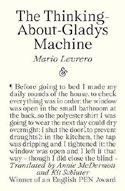
Eleven short stories from the weirder end of South American culture. Best known for his posthumously published work The Luminous Novel (2021), this collection by Levrero (1940-2004) resurrects his earliest fiction, most with shades of paranoia and
self-consciousness that would turn Philip K. Dick green. The opener already gives off a strong “Tell-Tale Heart” vibe, as one man’s checklist of his nightly bedtime rituals descends into disaster—and that’s the cheerier of the two stories that bookend the collection (“The ThinkingAbout-Gladys Machine” and “The Thinking-About-Gladys Machine (Negative)”), both concerning a machine that seems to offer a self-destructive feedback loop instead of white noise. Even a casual action like igniting a lighter becomes a labyrinthine quest for salvation in “Beggar Street,” while brevities like “One-Way Story No. 2” use a mere handful of words to examine existential truths. There is some humor here, albeit very dark. “The Stiff Corpse” offers Pythonesque absurdity, while seemingly innocuous items become instruments of destruction in “Jelly” (a take on The Blob by way of Latin American surrealism) and in “That Green Liquid,” which shows a home product demonstration going Cat in the Hat –grade awry. The only notion that’s overused is the haunted house motif that marks “The Abandoned House,” full of tiny men and spiders and unicorns and whatnot, and the lockedroom-mystery that morphs into a hero’s quest in “The Basement.” Similarly, insomnia and obsession grip the protagonists of “The Golden Reflections” and “The Boarding House,” where nocturnal wanderings lead men astray. Most of the collection’s protagonists are unnamed gray men whose featurelessness sharpens the bizarre elements of each tale. They often seem adrift, navigating a slow descent into mediocrity that makes their encounters with the surreal, and the dichotomy between their worldviews and Levrero’s phantasmagorical imagination, delightfully jarring.
A delightful artifact that will leave readers wondering if they ever truly understood the world at all.

For more by Mario Levrero, visit Kirkus online.
The YA author celebrates food, wine, and spicy queer romance in his first adult novel.
BY JENNIFER PROKOP
ADIB KHORRAM’S FIRST novel, Darius the Great Is Not Okay, was the kind of YA sensation that was everywhere, plugging directly into the teenage zeitgeist. Since then, he’s written several picture books and other YA novels. Khorram rediscovered his love of romance during the pandemic, saying, “Like a lot of people, I was very depressed, and I thought I should read romance to become happy again.” Inspired by his reading, the 40-year-old Khorram wrote his first adult romance, I’ll Have What He’s Having (Forever, Aug. 27), which our starred review called a “warm, spicy romance” and “a love letter to Persian food, good wine, and queer community.” We spoke to the author via Zoom; the conversation has been edited for length and clarity.


You’re a jack-of-all-trades, writing everything from picture books to YA novels to adult romance. Why are you so committed to writing, as it says on your website, “fiction for readers of all ages?” My own experience with literature growing up was that sometimes I was ahead of what my reading level was supposed to be, sometimes I was behind it. Even as I first started writing, people would ask me why I wrote for teenagers, and I would always say, “Because adults are boring.” Maybe adults aren’t boring, maybe I was reading boring books. But as my career has evolved, and as my own artistic sensibilities have evolved, I just hope
that any reader, no matter their age, can pick up a book of mine and see some glimmer of themselves in it, whether it’s because they’re Iranian, or because they’re queer, or because they really like food and wine.
Tell us about the new book . I’ll Have What He’s Having is a “mistaken identity” to “friends with benefits” romance about Farzan, a gay Iranian American millennial who sort of accidentally takes over his parents’ Iranian restaurant, and David, a Black millennial man studying for his master sommelier certification. After they hook up, they decide that they probably shouldn’t keep hooking up because they
want different things out of life. Farzan comes back to David and says, “Hey, I don’t know how to run a restaurant. Can you help me learn?” And David says, “Sure, I need a study buddy for this very onerous wine test. Why don’t you help me? Surely we won’t bone a lot and fall in love along the way.” What could possibly go wrong? And of course, spoiler alert, things go wrong and they bone a lot and fall in love.
Farzan loves cooking but has bitten off more than he can chew—see what I did there?—when he volunteers to take over the family bistro after his parents retire. What does he learn about the difference between cooking for pleasure and running a restaurant? We came of age in a time when there was pressure to monetize every single thing in our lives that gave us
joy—whether that was making art (Oh, you should sell it online, right?) or making food (Well, you should be cooking for a living) and we turned the things we love into jobs. I certainly could not have predicted that I would be an author 10 years ago; I had to reevaluate my own relationship to writing and creating. For Farzan, the skill set of creating art or creating food is not necessarily the same skill set as running a business, and that’s a rude slap in the face for a lot of us.
David, on the other hand, has quite a bit of studying to do for his master sommelier exams. What will readers learn about the wine business that might surprise them?
I love both wine and tea, and I also love coffee, but only espresso. Sometimes, I’ll add half a sugar cube to
an espresso—I’ll taste it first and see if it needs it. A cup of tea or coffee I prepare for myself is representative of a singular moment in my day, while the winemaker is capturing a season, a temporal expression of life we can never have again. And I think there’s a certain magic to that that’s beautiful. I love that. Throughout the editorial process, I kept paring back so many of the nitty-gritty details about the test itself, and adding more about what this particular wine-tasting experience was like for Farzan and David. As someone who drinks a lot of wine, I wouldn’t say I had to do a whole lot of research about drinking wine, but I did do a lot of research about the master sommelier certification. I’m less
interested in people learning about that process than I am in sharing my love of the magic of wine.
David thinks that “Michelin-star restaurants attract Michelin-star assholes,” while Farzan’s family restaurant is important because it’s the only Iranian restaurant and a vital pillar of the community. Through these different lenses, what is your book saying about the current foodie or restaurant landscape of America?
The way Farzan comes at it is the way of people in diaspora, which is that when people come to the United States, one of the first things they bring with them is their food. Many of the first businesses that immigrants open in the United States
are restaurants. And throughout my life, I’ve seen the way that Persian restaurants are hubs of Persian communities. And I’ve experienced the loss of restaurants here in Kansas City and the way that has fractured the community. I think that’s a very true experience for a lot of people in the diaspora.
As far as David’s view on fine dining and the kinds of people it attracts, I think so much culture in the United States exists in the tension between the highbrow and the lowbrow. Certainly, in the romance genre, we see how little respect we get for beautiful, meaningful works of art, purely because people think that humans finding connection with each other isn’t literary enough. In some ways, part
of David’s journey is learning that maybe appealing to the highest common denominator is not as soul fulfilling as he thought it was. David actually comes to wine from a burned-out career in finance, which was probably full of that same Michelin star energy, and so in some ways, it’s also emblematic of the larger cultural conversation about what we give value to culturally and what we give value to in our own lives.
Do you think that there’s a natural affinity between writing romance and writing about food? What do they have in common, or how do they complement each other?
Throughout my life, I’ve seen the way that Persian restaurants are hubs of Persian communities.
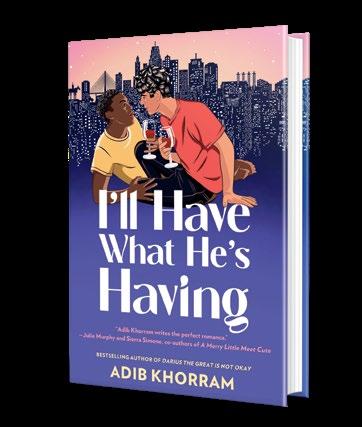
I’ll Have
What
He’s
Having Khorram, Adib Forever | 368 pp. | $28.00 Aug. 27, 2024 | 9781538739525
One thing is that food is sensual and love is sensual; the language of desire, the language we use to talk about falling in love, the language we use to talk about sex and wanting other people and body parts, can be similar. People talk about having “foodgasms” when they have a particularly beautiful culinary experience, or being hungry for someone when they feel desire. In Persian culture, instead of saying “bon appétit,” or, you know, “good meal,” we use the noosh-e jān, which means “May it nourish your soul.” And I think that perfectly encapsulates both what happens when you offer food to someone and what happens when you fall in love with someone—that person nourishes your soul.
Jennifer Prokop co-hosts the romance podcast Fated Mates. Follow her on X @JenReadsRomance.
SOUND MUSEUM
Honolulu Noir
McKinney, Chris | Akashic (272 pp.)
$16.95 paper | Nov. 5, 2024 | 9781636141985
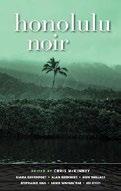
Thirteen tales that will make you think twice about booking your next trip to the Aloha State. In his introduction, McKinney aptly notes the diversity of the characters that inhabit these stories, and indeed they present Honolulu less as an idyllic vacation destination than as a multicultural crossroads that attracts Native Hawaiians, Chinese, Japanese, Filipinos, vampires, night watchers, and haoles like the tourist target audience. The stories are almost equally diverse in their temporal settings, which range from “Apana’s Last Case,” Alan Brennert’s early-20th-century mystery for the real-life model of Charlie Chan, to “It Entered My Mind,” in which Tom Gammarino’s future world is both defined and menaced by Synthetic Intellects and the crimes they recount, from murder to suicide, theft, kidnapping, cheating, sex trafficking, and fake murder. Among the highlights are “Melelani’s Mana,” a headlong, dialogue-driven account of a memorable night of Texas Hold ’em by Lono Waiwai‘ole; “Hairstyles of the Jihadi,” Kiana Davenport’s disturbing report on the recruitment of children; and “Mercy,” Christy Passion’s snapshot of an overworked emergency room crew’s struggles to keep a prisoner who’s hanged himself from slipping away. Many of the stories are less interested in crime
than in otherworldly threats rooted in Hawaiian culture, and the final three—“The Unknown,” Michelle Cruz Skinner’s glimpse of the world of the shamans called babaylans; “Shadows and Haoles,” B.A. Kobayashi’s encounter with kidnappers who may not be human but are still haoles; and “Mother’s Mother’s Mother,” a nightmarish tale of tissue-paper Venus flytraps coming to horrifying life by 19-year-old Morgan Miryung McKinney—are deeply weird. Not that there’s anything wrong with that. Not your mother’s Honolulu, though maybe your great-grandmother’s.
Meacham, Leila | Harper/Harper Collins (272 pp.) | $30.00 Nov. 12, 2024 | 9780063323100
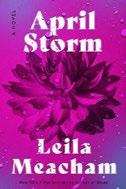
W hen she realizes she’s being watched, a suburban Colorado housewife finds her orderly life upended.
Texas author Meacham began writing novels in retirement; this last was completed before her death in 2021 at age 83. Her heroine, Kathryn Walker, is the put-together, 40-something wife of a successful orthopedic surgeon; both have come a long way from their impoverished, almost Dickensian backgrounds. Now their daughter is at college in Boulder and their son is a teacher in Houston, so Kathryn spends her time on volunteer work and fancy meals. One day she realizes she’s being followed by a
man she assumes is a stalker, though the reader knows “Golf Cap” is a private investigator, as does Mike McCoy, a local rancher who’s a former member of the military’s Special Forces. In reaction to the murder of his pregnant wife decades earlier, McCoy now puts his bad-guyfighting skills to use as a good Samaritan whenever he can. Though Kathryn’s husband doesn’t seem to take her situation seriously—he has financial troubles, demands at work, and may even be having an affair— when another library volunteer with blond hair and a Burberry raincoat is the victim of a hit-and-run, McCoy agrees with Kathryn that someone is trying to kill her. The search for who and why eschews both realism and subtlety, but Meacham’s fans, who have been eagerly waiting for her husband and her publisher to see her final manuscript though to publication, won’t care. What may be lacking in emotional veracity or prose style is made up for by the carefully laid-out plot and its satisfying (and feminist!) resolution.
A boldly imagined mystery with twists that are delightful if not overly believable.
Missaghi, Poupeh | Coffee House (136 pp.) $14.95 paper | Oct. 22, 2024 | 9781566896993

A curator explains the origins of a museum dedicated to torture.
Structured as the opening address at a press preview for the titular museum, Missaghi’s novel takes a chilling look at repressive regimes and the people complicit in their atrocities. The narrator is up front about her time spent as “an interrogator and torturer” and eventually reveals that the museum is intended to be “an educational center
through which we can pass on our knowledge and achievements.” Given the Iranian setting, the actions of its government loom large, but so does the U.S. government’s use of torture, especially in the 21st century. “I’m aware that when it comes to torture, each country, era, situation, and even type of prisoner demands its own set of rules and regulations,” the narrator says — and what follows is an unsettling tour of historical atrocities, as well as the theorists who have tried to understand them. (Tonally, it’s pitched somewhere between Ali Smith’s Artful and Roberto Bolaño’s By Night in Chile.) The narrator’s speech abounds with allusions to writers and artists, including Siah Armajani, Tony Cokes, Pauline Oliveros, Hannah Arendt and Darius Rejali. But the most unsettling segment comes when the narrator speaks of Narges Mohammadi, an activist who is currently imprisoned by the Iranian regime. “Part of me also enjoys the constant battle between us,” the narrator says, and between this and her discussion of working to make torture a more equitable place when it comes to gender, there’s a haunting specificity to her approach. As much as readers might squirm as the narrator uses works opposed to torture to justify torture, the overall effect is one of a horror in which everyone is complicit. A taut, searing tour of modern atrocities.
Miura, Shion | Trans. by Yui Kajita | HarperVia (448 pp.) | $30.00 Oct. 15, 2024 | 9780063330894
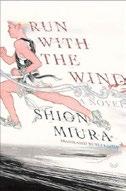
An unlikely group bands together to run in Japan’s prestigious Hakone Ekiden marathon relay. First published in Japan in 2006, Miura’s account of 10 men versus one very tough road race
launches with a chance encounter between two students just before spring classes start at Kansei University. Noting the ease with which Kakeru Kurahara is running to escape being caught for shoplifting, Haiji Kiyose recruits him as the tenth resident of a ramshackle boardinghouse but ultimately shares with him and the other residents his plan of forming them into a 10-man team to run the grueling Hakone Ekiden. The two-day race, traditionally run over the New Year’s holidays, consists of 10 sections, five a day. Each leg requires of the assigned runner mental strength and stamina as well as speed. Achieving Kiyose’s dream of forming a cohesive team out of the 10 building residents—mostly students, most without any running experience—requires patience and a great deal of tutoring in the basics of track. Kakeru and Kiyose, by far the best runners in the group, form a bond, but their past lives and track experiences remain mostly undisclosed during the months of training. By contrast, Miura gradually reveals the motivations and idiosyncrasies of each of the novice runners as they train, allowing them to arrive at their own answer as to why they run. Individual flashes of insight and self-realization punctuate each team member’s leg of the marathon. The novel, translated for the first time into English, spawned a variety of spinoffs after its publication in Japan—a manga series, an anime series, and a live-action movie—and it may appeal to younger readers facing seemingly similar insurmountable obstacles in their own paths. A sincere, plainspoken attempt to answer the question: What does it mean to run?
Moss, Eliza | Henry Holt (320 pp.)
$28.99 | Dec. 3, 2024 | 9781250355058
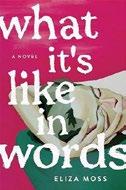
Dynamic debut portrays a dysfunctional, abusive relationship. Enola is an aspiring author in her late twenties, adrift in her life and in her writing. One day she meets a man in her writing group with whom she shares an instant physical connection. “His smile was suggestive but kind,” Enola tells us. “I wanted to play with him. I wanted to look after him. I wanted to slap him. I wanted to fuck him.” Soon, the two are involved, but at the expense of Enola’s peace or pleasure. “The desire to please him bloomed like an addiction,” she confesses, even though she can’t decide whether she even enjoys their sex. Despite the facts that her best friend, Ruth, doesn’t like him and that Enola’s body seems to be trying to tell her something as she rapidly loses weight, she continues to pursue the relationship with abandon. Eventually, Enola and her boyfriend holiday in Kenya, where she grew up, and the trip triggers memories of her father, who died when she was young. As Enola struggles with her past, her boyfriend’s constant criticisms never cease, and she must decide whether she can disentangle herself from a man who is less a peer or confidant than an addiction. The author deftly captures obsession, as well as the ways in which myriad small belittling comments can become the deepest of cuts.
A searing novel about why we love people who are bad for us.
A searing novel about why we love people who are bad for us.
IT’S LIKE IN WORDS
Ngamije, Rémy | Scout Press/ Simon & Schuster (320 pp.) | $25.99 Dec. 3, 2024 | 9781668012468

A story collection employing a variety of techniques and narrators to draw a picture of Namibian life. Billed as a “literary mixtape,” the collection is divided into “A-Side” and “B-Side” tales. “A-Side” follows Rambo, a young artist working (or just as often not) on the writing he hopes will make him known beyond Windhoek, Namibia. As his twenties grind on, he endures a painful breakup and the death of his mother. “B-Side” contains more traditional short stories chronicling the lives of Windhoek’s homeless or, in the powerful “Important Terminology for Military-Age Males,” revealing the cruelty of a secret white South African unit in the Namibian War of Independence by defining the war’s key terms, A (apartheid ) through Z ( Zulu). Ngamije has a lot of fun, and success, with his unconventional structure. The collection’s most moving passage eulogizes the narrator’s mother using the form of a shopping list (“DISHWASHING LIQUID: Sunlight or Ajax—she diluted the green ooze in the bottle and made it last longer, the hallmark of an excellent drug dealer”). The B-Sides are more impressive as stories, while the A-Sides have the deftest wordplay, as witness this comment by the second-person narrator about his shopping habits post-breakup: “You shy away from the nursery where she adopted flora to fawn over.” However, the overarching narrative struggles to make the toxic behavior of 20-something men compelling. A cup of Junot Díaz has been used where just a pinch would have been appropriate (especially in
A woman’s probe of her sister’s mysterious death makes her the next target.
THE DROWNING GAME
the second-person sections), and male coarseness sometimes becomes literary tastelessness; one story has too many witticisms about domestic violence. But Ngamije’s deep attention to technique mostly impresses, even if this coming-of-age story has been told before. The prose shines, but this serious talent deserves better subjects.
Nickless, Barbara | Thomas & Mercer (379 pp.) $16.99 paper | Nov. 19, 2024 | 9781662510014

A woman’s probe of her beloved sister’s mysterious death makes her the next target.
American yacht designer Cassandra Brenner has spent five years in Singapore working for the family business, Ocean House, on her most extravagant project ever, building the superyacht Red Dragon . Cass is also involved in unspecified spying activities for something dubbed Operation UNDERTOW. Heading to the Marina Bay Sands Hotel one evening to meet her contact, she is instead bound and gagged by a sinister duo who want to know all about Red Dragon . The scene then shifts to her sister, Nadia, who receives a cryptic message from Cass shortly before a family meeting at Ocean House headquarters in Seattle concerning a powerful competitor. As a result of all this, Nadia is dispatched to Singapore to assist Cass, who’ll need all the help she can get because she is being stalked by the
self-described killer and citizen spy Charlie Han, née Han Chenglong. Nadia arrives to the devastating news that Cass has fallen from the 40th floor of her hotel and the police are calling it suicide. Questions about Charlie’s true allegiances simmer beneath the surface as Nickless unspools several familiar tropes: dark figures pursuing Nadia, a mysterious astrologist who predicts danger, secrets withheld even by her family back in Seattle. Nadia can trust no one, not even Cass’ faithful assistant, Emily. The plot regains traction when Nadia returns to Seattle for a showdown fueled by family history. Nickless’ thriller offers local color and occasional chills, with the behemoth Red Dragon standing in for the traditional haunted house, but it sags a bit in the middle, striking the same notes over and over before a clever eleventh-hour twist provides a boost for the closing chapters.
Overstuffed thriller partly redeemed by a strong sense of place.
Notaro, Laurie | Little A (380 pp.)
$28.99 | Oct. 8, 2024 | 9781662512209

A mysterious young woman becomes the focal point of a true-crime novel about a grisly, Depression-era crime of passion. When Los Angeles train station authorities force open two leaking, putrid-smelling trunks, the dismembered female bodies they find horrify them. Yet what leaves them
especially aghast is the idea that Ruth Judd, the pretty young woman who presents a claim ticket for the trunks, could possibly be involved in what clearly appears to be murder. Notaro carefully reconstructs the Depression-era period in which this real-life crime took place and presents a sympathetic portrayal of Ruth, who manages to walk out of the baggage claim but is quickly identified as a suspect. In the narrative that follows the bodies’ discovery, Notaro alternates a chronicle of the hunt for Ruth with sections told from her point of view that reveal her motivations. A painful youth, marriage to a drug-addicted WWI veteran named Doctor, and a forced abortion at Doctor’s hands form the cornerstones of her troubled personality. She developed a lifelong obsession with the baby she lost and delusions that the child still lives. After Ruth and Doctor were temporarily separated, she eventually wound up in Phoenix, where she fell in love with Jack, a married—and unscrupulous—businessman. He got her a job at a clinic, which led to her friendship with the two lesbians who became the murder victims. As complex as it is deftly crafted—weaving newspaper accounts and letters written by the real-life Ruth within a compelling fictional web—this is a pulse-pounding, page-turning, heartbreaking account of the misunderstood woman behind a sensational news story that gripped a nation. A haunting novel that never lets the reader go.
Talnikov Family
Panaeva, Avdotya | Trans. by Fiona Bell Columbia Univ. (192 pp.) | $22.00 paper Oct. 8, 2024 | 9780231213196
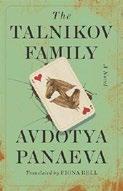
Rage, abuse, and suffering characterize three generations of a Russian family.
THE TALNIKOV FAMILY
Rage, abuse, and suffering characterize three generations of a Russian family. Born in 1819, herself the child of neglectful parents, Panaeva
was 27 when she wrote this novel, which was suppressed by the censor for its cynicism and “undermining of parental power.” It was published under a pseudonym in a limited edition in 1848, and Panaeva went on to write numerous works of fiction and a memoir. She died in 1893. The novel was finally published under her own name in 1927 and joined what the book’s introduction calls the “canon of domestic violence fiction.” Short, breathless, tinged with humor, the book is a horror show, a litany of cruelty, anger, and violence inflicted primarily, but not exclusively, on the eight children of a large, turbulent Saint Petersburg family. The father keeps “the same malicious calm whether he was plunging a fork into the dog’s back or throwing a plate at his wife.” The wife seems devoid of any shred of sympathy or love for her offspring, especially her daughters, as they endure beatings and starvations. Yet the narrator, Natasha, regards herself as happy and free until the age of 10. Then things go from bad to even worse, after a sadistic governess is hired and given complete control over her victims. When she finally leaves, the children are scattered among different households and teachers, one to a brute whose physical torment is pure torture. Even changes of scene—with their kindly grandmother, or on a summer trip to a seaside dacha—rarely offer much respite from conflict and shame. As the children grow up, two marry and escape, but tragedy befalls another. The bizarre, comfortless mood of Panaeva’s parable hangs in the air as a farewell is bid to “the house where I had shed so many tears.”
An eye-popping historical curiosity plumbing the depths of domestic dysfunction.
Pham, Jacquie | Atlantic Monthly (304 pp.) $27.00 | Nov. 12, 2024 | 9780802163806
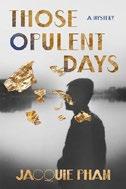
In this debut drama set in early-1900s Saigon, a rich young man is found dead—but which rich young man is it? The appearance of a dead body fulfills a prophesy made in 1917, when four 11-year-old boys snuck out of their boarding school to consult a fortuneteller. The woman had a vexing prediction for the young friends: “One will lose his mind. One will pay. One will agonize”; to the ringleader she confided, “One will die.” Thirteen years later, one of them does die—by poison. From here the novel jumps back in time six days and proceeds to inch forward, tracing the events leading to the discovery of the body, by which point readers will have learned who has died and by whose hand. The novel, whose ping-ponging chronology (some flashbacks contain flashbacks) can be discombobulating, harbors a mystery without especially reading like one, as the focus here isn’t detective work but character. Key players, who take turns with the book’s perspective, star in gorgeously appointed scenes awash in faithful historical detail and tense with stewing and scheming. The story’s villainy is rooted in restrictive attitudes about class, race, and sexuality, which can make the book feel heavy with intent, but the entrée the novel affords into the privileged lives of the four
principals—sunny Duy, volatile Minh, opium-addicted Phong, and hard-drinking French-born Edmond—feels like a rare treat. The “upstairs” abundance is judiciously balanced with the perspectives of “downstairs” characters, one of whom observes, not without justification, that the four lads “walked with confidence, the ground beneath their heels polished just for them.”
A heady, character-driven historical novel embedded with a mystery.
Pike, Signe | Atria (400 pp.)
$28.99 | Dec. 3, 2024 | 9781501191480
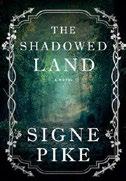
T he third book in a series set in sixth-century Celtic Britain puts powerful women in the foreground of an ensemble including the historical characters of Merlin and Arthur.
“After the Battle of the Caledonian Wood, as our celebration had cooled to embers, I’d listened with a tortured sort of rapture as Angharad described what had become of her as a child all those winters ago, in the Battle of Arderydd.” It is 580 C.E.; Languoreth, Queen of Strathclyde, twin sister of Lailoken (later known as Myrddin, or Merlin), has just been reunited with the mystically gifted daughter she’s believed dead for years. Once the truth of the events surrounding Angharad’s disappearance emerges, long-awaited justice will be served, powered in part by the 17-year-old Wisdom Keeper’s supernatural abilities. Those who have read The Lost Queen (2018) and The Forgotten Kingdom (2020) will be right at home as Pike continues her chronicle of the swirling intrigue and bloody confrontations among the Britons, Picts, Scots, Angles, Christians, and other kingdoms and ethnicities of the Arthurian period. Languoreth will
Even the Loch Ness monster makes an appearance in this kaleidoscopic epic.
THE SHADOWED LAND
again be separated from her daughter as the latter journeys into the “Shadowed Lands” to apprentice herself to the weatherworking druid Briochan, and though she’d love to visit her pregnant daughter, Gladys, in a neighboring kingdom, her husband insists she stay at home to monitor the machinations of a malign Christian monk named Mungo. To top it off, she has renounced the solace of her affair with the warrior Maelgwn Pendragon: “I am a woman of the Old Way, married to a Christian. Adultery is not tolerated. Should we be discovered, our people would lose an irreplicable advocate. You know as well as I, there is nothing that would delight Mungo more.”
Meanwhile, Artúr mac Aedan (Arthur) must answer a call from his father to assume his destiny among the Scots. An author’s note provides historical context, includes details for readers who plan to visit the U.K. locations, and promises that there is more to come.
Even the Loch Ness monster makes an appearance in this kaleidoscopic epic with deep roots in both history and myth.
Ros, Manon Steffan | Amazon Crossing (223 pp.) | $16.99 paper Oct. 22, 2024 | 9781662517549

In the wake of the death of a tiny Welsh town’s star student and resident cool girl, police and journalists descend to find out what really
happened the night she died and who she might have been when she was away from prying eyes.
After Greta Pugh’s body is found in the local quarry, residents are sent into a rapid tailspin as they grapple with her death and the sudden knowledge that there is a murderer among them. No one in the town of Bethesda appears to be telling the truth, but with reporters looking for headline news and law enforcement hunting down a killer, it’s really only a matter of time until toxic smalltown secrets are flushed out, for better or worse. As Shane, Greta’s classmate and the son of the Pugh family’s housekeeper, watches authorities questioning his classmates—many who have secrets of their own—he has questions. Who was Greta really, underneath the blond hair and perfect grades, and why would someone have wanted to kill her? Shane decides to look into Greta’s death, risking family and friendships along the way. While Ros has outlined an intriguing story with the trappings of a classic thriller, she falls flat on its execution, continually struggling to show (rather than tell) her readers what is happening. Pages of information dumps and indistinguishable character voices continue to hinder reader engagement as Shane works to find the truth.
A fast-paced tale of small-town drama that lacks depth and character.

Sainz Borgo, Karina | Trans. by Elizabeth
Bryer | HarperVia (256 pp.) | $26.00
Dec. 10, 2024 | 9780063213876

Three women negotiate death, birth, and loss in a violent landscape.
Sainz Borgo’s second novel is set in a country where (as the title suggests) a cemetery is contested land. The so-called Third Country is administered by a sharp-edged, dark-humored woman named Visitación Salazar, who handles the numerous deaths caused by a plague and a brutal cartel. Angustias, who is directed to Visitación when her twin infant sons die from the plague, is soon drawn into her long-running feud with Abundio, the regional cartel leader, who resents Visitación’s fiefdom and her knack for avoiding his thugs. Angustias, whose husband left her after the twins’ deaths and has few money-making options, finds a safe haven in the cemetery, where she cares for both the corpses and others seeking sanctuary, like Jairo, a musician who writes folk tunes about the region, and Consuelo, a barmaid who’s pregnant and escaping her abusive partner. Sainz Borgo (who was born in Venezuela and now lives in Spain) alternates between third-person narration and Angustias’ point of view, but in either case the mood is mordant and threatening (“Angustias” is Spanish for “anguish”), defined by clipped, terse sentences. That approach highlights the brutality of the environment,
though it sacrifices precision—the roots of Visitación’s role as a cemetery caretaker aren’t clear, and the occasional magical-realist touches (Visitación has a constant “plague halo” of wasps above her head) are too passing to register deeply. Subplots involving Abundio’s power struggles with a local mayor and sicarios are similarly broad-brush. But it succeeds as a study of grief and the urge to create spaces fit to contemplate loss. “I was only interested in keeping alive my memories of the babies I loved,” Angustias thinks, and Sainz Borgo suggests that the rituals of burial are essential to valuing life. Stark, intimate, and melancholy.
Seltzer, Sarah | Flatiron Books (272 pp.) $28.99 | Aug. 6, 2024 | 9781250907646

A sprawling family drama about two generations of folk rock musicians. Judie Zingerman and Dave Cantor were baby boomer musical royalty, renowned for writing and performing their own songs in the 1960s and ’70s. But when we first meet them in 1995, in their Greenwich Village apartment, they’re announcing their divorce to their young adult children, Emma and Leon. Both siblings are already involved in the music business, but Emma, a vocalist, has an antagonistic relationship with her mother, and soon the two are sparring about Emma’s decision to forgo college in
A sprawling family drama about two generations of folk rock musicians.
order to tour with a ska band—Judie had skipped college herself, which she now regrets. Later, when they’re alone, Emma and Leon allude to Judie’s “tragedy”—years earlier, she’d quit the music business, for reasons that include child rearing but are never completely clear.
Seltzer’s debut novel is big: lots of characters, lots of plot, lots of emoting, with a timeline that skitters back and forth and chapters told from multiple points of view. At times, it can be hard to keep track, and the writing can be overripe.
Other key figures include Judie’s older sister, Sylvia, with whom she first performs, and Rose, the family’s former nanny, who has a deeper relationship to them. The author writes confidently about the music business in the different eras in which the action unfolds. And the folk rock milieu, on- and offstage, is vividly drawn, with real musicians—from Joan Baez to Patti Smith—co-existing with fictional ones.
An original, sometimes stirring story that would probably make an even better movie.
Somin, Yeon | Trans. by Clare Richards Algonquin (272 pp.) | $18.99 paper Oct. 22, 2024 | 9781643756752

After breaking down at work and retreating into her apartment for almost a year, a 30-year-old television writer finds herself again through pottery. Spending months with the shades down, sleeping her time away, and ignoring the changing seasons, Jungmin needs to do something. When she finally emerges from her apartment, she doesn’t know where she’s going or what she’s looking for. She stumbles on a pottery shop, enters, and receives a cup of coffee and a warm
welcome. Accepting the offer of shop owner and teacher Johee to return, Jungmin first learns how to make plates and shallow bowls, then graduates to coffee cups and vases. She begins to get to know the regulars: Gisik, who plans to quit his job at a teleshopping firm and open up his own pottery workshop near the sea; Jihye, a graduate student who is fond of cooking and drinking but has had trouble finding a job; Jun, studying hard for his university exams; Gyuwon, who turns out to be the father of a dear childhood friend; and others. Together the group forms a community that fills the empty parts of Jungmin’s heart. Slowly, she begins to write again, this time small stories and vignettes for the workshop’s Instagram posts. Regrettably, the English translation of this debut novel leaves unexplained and untranslated many culturally specific elements that will be bewildering for readers unfamiliar with Korean language or culture, rendering murky many of the novel’s nuances and the characters’ interactions. A drama of growth and rediscovery mostly lost in translation.
Tirado, Vincent | Morrow/Harper Collins (384 pp.) | $28.00 Sept. 3, 2024 | 9780063383180
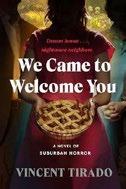
A contemporary take on suburban horror. Marisol Reyes is a Black woman, the child of Dominican immigrants. Her wife, Alice Song, is Korean
American. When they buy a home in a gated community, they quickly discover that their sexuality and their ethnicity set them apart from their neighbors. Sol has no interest in fitting in. Alice, though, feels a need to become a part of Maneless Grove. As this couple tries to navigate their differences, the homeowners association becomes a relentless presence. With each passing day, joining the HOA seems both more inevitable and more like signing a compact with the devil. This is all great stuff. Tirado is clearly riffing on horror classics like The Stepford Wives and Rosemary’s Baby, as well as the movie Get Out (which is itself a riff on the aforementioned horror classics). But the author does not deliver on the promise of this setup. Very little in the novel makes sense, and Sol is more frustrating than compelling. She’s on leave from her job as a professor at Yale while her department investigates a plagiarism claim. This makes her vulnerable, for sure, as does her increasing reliance on alcohol and what looks like clinical depression. But Sol watches her house murder the only other Black woman in Maneless Grove, hears voices in her head (including the voice of that murdered Black woman), sees a vision of dead neighbors rotting in their living room, digs up her backyard to find a diary describing freaky stuff going on in her neighborhood generally and in her house specifically, and cuts live roots out of her feet without deciding that maybe it’s time to get out of Maneless Grove. Also? There’s some stuff about a regional cult back in the day that goes…nowhere. If this seems like a lot, it is, and none of it adds up in any sort of satisfying way. Great premise, bummer execution.
A whirlwind tour through the history of philosophy. EVERYTHING FLIRTS
Wahl, Sharon | Univ. of Iowa (188 pp.)
$18.00 paper | Nov. 5, 2024 | 9781609389970

Short stories offer a whirlwind tour through the history of philosophy via a series of hapless lovers. By reputation, philosophy seems the opposite of fiction. Abstract where fiction is concrete, rational where fiction explores emotional truth, philosophy might seem an odd—or at least deeply challenging—framework around which to build a collection of stories. But here fiction and philosophy are paired like wine with cheese. Often a philosophical principle informs the story, as in the opener, where Zeno’s paradoxes of motion undergird the tale of a woman seeing a movie with her crush who vividly imagines what would happen if she acted on her desires (“Zeno and the Distance Between Us”). In the title story, steeped in cybernetics, an AI and robotics researcher goes to a get-together with scientist friends in the aftermath of being left by her longtime partner and confronts her unsolvable loneliness. Sometimes, the philosophers themselves, or their creations, make appearances in the stories: In the rollicking “I Also Dated Zarathustra,” a dating show contestant picks Nietzsche’s philosophical protagonist as her love match; their resulting trip to Las Vegas is a cascade of misadventures culminating in Zarathustra falling in love with a mannequin. (“She smiled at me over his shoulder, apparently delighted, as she was with all things. She went with him into the night with her eyes wide open.”) Elsewhere, Wahl borrows structures: Wittgenstein’s Tractatus Logico-Philosophicus with its numbered propositions here describes a student’s infatuation with her seminar leader (“Tractatus Logico-Eroticus”). Wahl moves us through stages of relationships, from unrequited
yearnings to breakups, creating subtle linkages and uniting the stories with her nimble, playful style. Surreal flashes of humor serve as a welcome counterpoint to the weight of Big Ideas. Though their conceit can occasionally feel constricting, Wahl’s stories bring old concepts to new, vivacious life.
Yáng Shuāng-Z ǐ | Trans. by Lin King Graywolf (320 pp.) | $18.00 paper Nov. 12, 2024 | 9781644453155

A (fictional) Japanese writer explores the colorful and complex culinary, linguistic, and political dynamics that shaped life in 1930s Taiwan. Originally published in Mandarin Chinese in 2021, the book is presented as a translation of a rediscovered 1954 Japanese novel by a young writer named Aoyama Chizuko. Based on the fame of a film adaptation of her novel, A Record of Youth, Aoyama is invited on a lecture tour by the government-general of Taiwan and a women’s group. She lands on a busy, colorful island where “everything teemed and surged toward me under the cobalt sky.” Amid the frenzy of “charades-like gesturing” in the process of negotiating with a marketplace fruit vendor, she is rescued by a charming young woman, who turns out to be her translator. As she and the woman, whom she nicknames Chi-chan, travel together, she finds herself drawn into an increasingly deeper friendship and begins to think that all is not as it seems. For the daughter of a concubine who was sent to live with her mother’s poor jute-farming family, Chi-chan reveals an amazing proficiency with languages; she is also well versed in popular culture and remarkably skilled at rolling dice. As Aoyama insists on probing her friend about her past, Chi-chan continues to hold
Multiple views of the Spanish Civil War as it played out in the Basque region.
back, insisting that the closeness she longs for is out of reach. Their journey together approaches its end, and Aoyama gets closer to uncovering Chi-chan’s true history, but will that bring them closer together or tear them further apart? Yáng’s sharp observation blends with sensitive, sometimes subversive political meditations to create a colorful portrait of pre–World War II Taiwan. A moving account of friendship in the shadow of the Japanese Southern expansion policy.
Zabalbeascoa, Julian | Two Dollar Radio (320 pp.) | $27.00 Nov. 12, 2024 | 9781953387530

The Spanish Civil War as it played out in the Basque region, chronicled from multiple points of view.
Debut novelist Zabalbeascoa’s decision to tell his story through a plethora of individual narrators perfectly captures the messiness of a civil war whose participants ranged from outright fascists, right-wing Catholics, and other conservatives aligned with Franco’s Nationalist rebels to the collection of anarchists, socialists, communists, and traditional democrats fighting for the Spanish Republic. This decision, however, also means that readers will need considerable time to discern the unifying thread involving Isidro Elejalde, a Republican soldier, and Mariana, who under the pen name Erlea writes
impassioned pleas to her fellow Basques to join the fight to preserve democracy. Their anti-fascist salvos are eloquent, but Zabalbeascoa provides other perspectives as well. Some Nationalists offer standard tropes about godless rojos and “divine intervention on our side,” but more humane voices include a Nationalist guard who watches his fellow soldiers abuse helpless prisoners and thinks, “This isn’t why I fought,” and a nun who smuggles out a note from Mariana pleading for help after her newborn child is taken away to be given to “a mother and a father who have not fallen.” Nationalist atrocities are amply documented, but a wife-beating Republican and Isidro’s anguished confession after he shoots two teenage boys—“I’ve become the very thing I left home to fight”— make it clear there was brutality on both sides. The war’s deadly psychological toll is incarnated in a woman known as Have You Seen, who wanders the devastated countryside asking after the son everyone knows was killed months ago. As the Republican remnants straggle toward the border, Zabalbeascoa enlists Have You Seen to suggest tentative recovery from the wounds of war in a touching penultimate scene. Even the bleak final chapter describing the refugees’ chilly reception in France offers a glimpse of hope for the future. Slow to start, but builds to an emotionally compelling climax.

For more fiction reviews, visit Kirkus online.

The Detransition, Baby author’s Stag Dance collects a novel and three novellas.
Torrey Peters will follow up her acclaimed debut novel with a new book of fiction coming next year, People magazine reports.
Random House will publish the author’s Stag Dance. It says that the book, which collects a novel and three novellas, “pushes trans-genre to its limits to explore who gets included—and excluded—from the possibilities of gender.”
Peters made her literary debut in 2021

with Detransition, Baby, a novel about three people whose lives collide after one of them becomes pregnant. In a starred review, a critic for Kirkus called the book, which was longlisted for the Women’s Prize for Fiction, “smart, funny, and bighearted.”
Stag Dance is composed of the titular novel along with the novellas “Infect Your Friends and Loved Ones,” “The Chaser,” and “The Masker.”
“The book is my evolving attempt to explore the emotional, lived questions at the murky edges of gender that can’t be captured by identity categories; the places where we are just people yearning, crashing, loving and messing up,” Peters told People. “I hope that by the end of reading Stag Dance, you can no longer really say for sure who does or doesn’t qualify as transgender— or any other gender—not only within the book, but even, and perhaps more freeingly, when you look up from the page.”
Stag Dance is scheduled for publication on March 11, 2025.
—MICHAEL SCHAUB




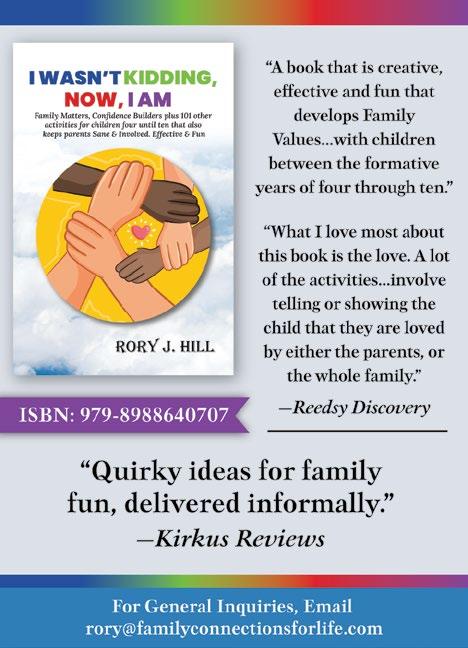
The novelist has been selected to participate in the Future Library art project.
Tommy Orange has a new book coming out— but fans will have to wait 90 years to read it.
The author is the latest pick for the Future Library, a public art project that collects a manuscript every year with the goal of publishing all of them in 2114, the Guardian reports. Orange, author of the novels There There and Wandering Stars, becomes the first Native American writer to be chosen for the project, which was established in 2014 by Scottish artist Katie Paterson. The Future Library intends to print anthologies featuring submissions from the authors in 90 years using paper made from 1,000 spruce trees currently growing in Norway’s Nordmarka forest.
On the Future Library website, Paterson said that Orange’s writing “is a driving force for transformation, destined to resonate with readers of

the 22nd century,” and praised the author’s “powerful and emotional storytelling.”
“I had not heard of this project before, but when I saw the list of the names of the other authors from previous years I was floored to be in the ranks of such people,” Orange said. “I think it’s a little scary writing for people who will most definitely deem us stupid and inferior in many ways just as when we look back a hundred years we can see clearly all the problems we had just being decent human beings.”
The first author to contribute to the project was Margaret Atwood. Other writers who were tapped to submit manuscripts include David Mitchell, Han Kang, Karl Ove Knausgård, Ocean Vuong, and Tsitsi Dangarembga.—M.S.

Blacke, Olivia | Minotaur (336 pp.)
$28.00 | Oct. 29, 2024 | 9781250336675

The fatal shooting of a Boston warehouse worker is investigated by an improbable pair of amateur sleuths. Like, really, really improbable.
Even after he’s died, Cordelia Graves can still chat with Jake Macintyre, the neighbor across the hall from her fourth-floor walk-up, for the simple reason that she’s dead too, pronounced a death by suicide at 43 after she was found in her bathtub last Christmas full of painkillers and Jack Daniel’s. Their halting conversation is abruptly terminated when Jake announces, “I don’t believe in ghosts,” and vanishes, never to return. Now that Jake’s incapable of investigating his own murder, Cordelia takes it upon herself to look into it. Since she has limited ability to interact with the pre-dead, though, she needs an ally among the living. The natural candidate is Ruby Young, an unemployed 20-year-old who’s moved into Cordelia’s apartment and whose belief in ghosts is so much stronger than Jake’s that she detects Cordelia’s presence even before her roommate is prepared to reveal herself. Their initial communications are awkward, since, as Cordelia notes, “I couldn’t touch a keyboard, and she couldn’t read my handwriting,” and the physical contact that allows them to talk to each other drains Cordelia of her energy. Soon enough, however, Cordelia has paved the way for Ruby to take over Cordelia’s old job as the office manager at the software design
firm TrendCelerate and start gathering evidence. The mystery is laughably slight, but the camaraderie between the two women is surprisingly strong, and every single joke about being dead or communicating with the dead lands with a pleasant ding. Here’s hoping the two leads get a case worthy of their considerable talents next time.
Bowen, Rhys | Berkley (336 pp.)
$28.00 | Nov. 19, 2024 | 9780593641361
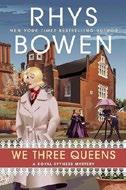
A new mother’s perfect life is upended when murder comes to Eynsleigh Manor. Lady Georgiana Rannoch is cousin to David (King Edward VIII to you), sister to a duke, and wife of Darcy O’Mara, a spy for Great Britain. Happy to leave her exciting past behind and devote herself to doting on her adorable infant son, she lives with her family on the estate she’ll inherit from her godfather, Sir Hubert. Darcy’s just returned from Germany, where Georgie’s beautiful mother spends a lot of time with her wealthy industrialist lover, apparently unaware of the dark clouds gathering in 1936. Trouble arrives in the form of Wallis Simpson, the mistress David wants stashed somewhere quiet while his subjects absorb the news that he’s determined to marry her despite all the warnings that he can’t. Georgie, appalled at the idea, is aggravated further by her brother, Binky, her bossy sister-in-law, Fig, and their children, who plan to use her home as
The murder of a warehouse worker is investigated by a pair of amateur sleuths.
a base while they investigate boarding schools nearby. Next, Hubert arrives with a Hollywood production company; they may be staying elsewhere, but they still disturb the routine of the estate while they’re filming. Mrs. Simpson vanishes. So does a child star, who seems to have been kidnapped. New mother Georgie is more upset by the second of these developments than the first and in the course of her search for the child, she discovers something distinctly odd about the kidnapping. Things get even worse when Georgie’s dogs find the strangled body of the film’s leading lady. Georgie and Darcy must use all their skills and connections to thwart a murderer. Plausible suspects throng this amusing look at the hidden lives of the aristocracy.
Carlisle, Kate | Berkley (288 pp.)
$28.00 | Oct. 22, 2024 | 9780593637647

The merriment you’d expect between Thanksgiving and Christmas is stifled by murder in Lighthouse Cove, California.
The star of the season is the Cliffs Hotel, a marvelous restored Victorian mansion overlooking the ocean. Building contractor Shannon Hammer and her crew are working on plans for a Christmas Fun Zone on the grounds highlighted by a carousel and of course Santa. Shannon is close to Bill and Lillian Garrison, who own the Cliffs, and their children, who all work there except for the eldest, Logan, who is in the Navy. Logan’s stunning but awful wife, Randi, is a close friend to Shannon’s archenemy, conniving backstabber Whitney Reid Gallagher, who ruined Sharon’s long friendship with Arabella Garrison. Soon after Logan surprises the family by leaving the Navy and taking a job as
MURDER ON THE PAGE
community director for Homefront, a community supporting veterans, cracks quickly appear in long-standing family relationships, and it’s clear that Logan and Randi’s marriage is on the rocks. Shannon is enjoying a fancy pre-Christmas dinner at the Cliffs with her fiance, popular author MacKintyre Sullivan, and their circle of friends when the lights go out. When Shannon goes to check the circuit breakers with Mac and their friend Police Chief Eric Jensen, she finds Randi with her throat slashed. The fact that one of Shannon’s pink tools was used to do the deed makes her determined to find the killer. Luckily, both Shannon and Mac already have some experience as sleuths, and there’s no shortage of people who hated Randi.
A character-driven tale whose Christmas cheer pretty much edges out the feeble mystery.
Gerber, Daryl Wood | Kensington (336 pp.)
$27.00 | Oct. 22, 2024 | 9781496748171

A popular caterer turns detective to find the killer of her bestie’s aunt. Even when she’s rushing to cater a midmorning tea for the Bramblewood Community Theater Foundation, hosted by bookshop owner Marigold Markel, Allie Catt keeps calm by channeling her favorite literary characters, especially Elizabeth Bennet. She’s joined in that obsession by Tegan Potts, Marigold’s niece, whose
husband has just asked for a divorce. A phone call from Marigold sends them both racing to the bookstore, where they discover Marigold in a dazed condition, perhaps dehydrated. Arriving shortly thereafter are Tegan’s half sister Vanna, a rival caterer whose open hostility reminds Allie of one of her least favorite Austen characters (“persnickety and rude” Caroline Bingley); Marigold’s younger sister Noeline, quarter owner of the bookshop; and her new boyfriend, financial consultant Rick O’Sheedy. When Marigold is found dead in the bookshop clutching a copy of Pride and Prejudice, Allie has little doubt that she’s been murdered, and Detective Zach Armstrong tends to agree. Although the two are obviously attracted to each other, Zach isn’t happy when Allie starts sleuthing. Marigold was even better off than her relatives knew. In addition to the store, she leaves behind a large jewelry collection and plenty of cash—at least, until $100,000 of it goes missing. Tegan does not seem to have an alibi, and Vanna is quick to accuse her and Allie once she learns that Marigold left Allie an interest in the bookshop. Money is always a plausible motive, but is it the right one here?
Foodies and Jane Austen fans alike will delight in this charming mystery.

Kelly, Vanessa | Kensington (400 pp.)
$27.00 | Oct. 22, 2024 | 9781496745972

The leading characters of Emma are shocked by a murder in the summer of 1815. Emma Woodhouse Knightley and Harriet Martin are taking flowers to the church when they discover the bloodied body of Mrs. Elton, the vicar’s wife. The lessons Emma learned before her happy marriage to George Knightley, which forced her to acknowledge she was a less clever matchmaker than she thought, have given her a force of character that permits her to remain moderately calm in very trying circumstances. Emma had rejected an earlier marriage proposal from Mr. Elton and was no fan of the woman he married instead. Convinced that Mrs. Elton’s death was no accident, she sends for Dr. Hughes, the coroner, and for her husband, who is also the local magistrate. After hearing someone leave the church, Emma finds a ladies’ handkerchief near the lych-gate and a bloodstained candlestick on the altar, but not the very expensive necklace Mrs. Elton had been wearing. Emma’s father is a hypochondriac of nervous disposition, so she always tries to shield him from bother, but he bravely defends family friend Miss Bates, the owner of that handkerchief, when she’s accused. Dr. Hughes tries to take over the case, and Constable Sharpe fails to live up to his name when he ignores clues that would prove Miss Bates innocent. It turns out that Mr. Elton and his brother-in-law have a contentious relationship over money. Since Mrs. Elton was very unpopular, the possibilities are wide open for Emma, who’s both curious and determined to expose the killer.
Fans of Jane Austen will love this lively pastiche featuring one of her most beloved characters as a clever sleuth.
Lagercrantz, David | Trans. by Ian Giles | Knopf (352 pp.) | $30.00
Sept. 10, 2024 | 9780593319239
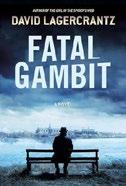
A distinctive Swedish duo returns (Dark Music, 2022) in this missing person yarn. Almost 14 years ago, Claire Lidman left her home and husband with neither notice nor note. She apparently perished in a fiery crash; her charred corpse was identified through dental records. Nearly everyone believes that she is dead, but her husband clings to hope. A recent photo—a holiday snap taken by a neighbor—surfaces with what looks like Claire’s face in the background. Enter professor Hans Rekke and police constable Micaela Vargas to investigate. “I may be a detective of sorts,” Rekke says, “but I am not a policeman or a lawyer.” He sees himself as “a pianist and Professor of Psychology, a fragile intellectual” who sprinkles his sentences with Latin phrases. But he underrates himself. For one thing, he has powers of deduction rivaling those of Sherlock Holmes: he hears footsteps coming from an elevator and he knows it’s Micaela, “with her punctuated eighth tempo,” and he concludes she’s with his brother, Magnus. Claire once had business ties with Gabor Morovia, whom Rekke has known since his youth and who now is a powerful, vengeful “lapsed mathematician and womaniser,” not to mention a rotter who also likes to torture and burn cats. Readers will enjoy hating this villain, who would have fit perfectly in a James Bond movie. He’s a demon on the chessboard, which plays a key role in the outcome. And readers will like the good guys, who have their own baggage to tote. Rekke is a pill popper who enjoys his “hardly addictive” OxyContin. Down-toearth Vargas is a good cop who hates
Readers will enjoy hating this villain, who would fit well in a Bond movie.
FATAL GAMBIT
crime, especially when it’s committed by her career criminal brother. (One of his pals warns, “Stop digging dirt on your brother, you piece of cop shit.”) Tension builds to a crescendo in this well-crafted novel with an ending that suggests a third volume to come.
Quirky and satisfying.
Lynch, Christina | Berkley (384 pp.)
$28.00 | Nov. 5, 2024 | 9780593640364

The author says it all in the closing acknowledgments: this is “a book about a pony who solves a murder.”
Twenty-five years after 12-year-old Penelope Marcus rode into the woods with Frank Ross, the owner of High Rise Farms, newly revealed evidence suggests that she bashed him to death. She’s arrested, extradited from California to New York, and uprooted from both Laus, her estranged husband, and Tella, the daughter who struggles with mental health issues. After her arrest, we meet the beloved pony she had been riding on that fatal day, who’s gone by so many names over the years—Houdini, Sequoia, O—that the chapters presented from his point of view are wisely labeled “The Pony.” Whatever his name is, he’s resented Penny since the day in the past when, “out of the blue,” he believes, “she up and sold me.” He determines to seek Penny out.
Conferring with a wide variety of animal companions from Circe the
goat and Caya the hound dog to Fifi the sparrow and Cassandra the barn cat, the pony dodges the humans who block his path by treating him as property to be used and sold. He is finally reunited with Penny and solves the long-ago mystery—which, to be fair, isn’t that hard even for a pony. The story is consistently more absorbing when it focuses on the animal characters, perhaps because so many of its humans treat each other so inhumanely. The parallels it traces between the imprisonments of Penny and the pony are especially eye-opening.
Ever wished for “Black Beauty, Private Eye”? Wish no longer.
McKinlay, Jenn | Berkley (320 pp.)
$28.00 | Oct. 8, 2024 | 9780593639368

A writer-in-residence program wreaks havoc at a suburban Connecticut library. Library director Lindsey Norris is justifiably proud of the varied and popular special programs she and children’s librarian Beth Barker offer at the Briar Creek library. Seasonally themed children’s storytimes, technology workshops, and a “crafternoon” every Thursday give patrons more than just a chance to borrow books. But luring Helen Monroe, author of the acclaimed Mallory Quest mysteries, for an extended winter stint as writer-in-residence was a coup even for Lindsey. With her Louis Vuitton handbag and
Ray-Ban sunglasses, Helen seems a bit much for Briar Creek, and Lindsey worries that the writer’s frosty demeanor may put some of the locals off. But out-of-towner Jackie Lewis exudes enthusiasm about Helen’s visit—so much enthusiasm, in fact, that Lindsey worries that she may have drawn a stalker to the library’s door. Meanwhile, book banner Betty Caruthers, who’s taken against Helen, vows to derail the whole residence project. It takes a while to determine which of these three toxic women will be the victim, let alone which will be her killer. Once the fatal blow falls, details show that the relationships among the trio are older and more complicated than they first seemed. Still, McKinlay seems more invested in engaging readers’ affinity for Lindsey, her staff, and her patrons than in asking them to figure out who killed whom and why.
A pleasant addition to the longtime Library Lover’s Mysteries series.
O’Connor, Carlene | Kensington (368 pp.)
$27.00 | Oct. 22, 2024 | 9781496737588
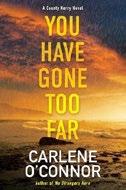
A bizarre message launches a murky threat to women in the Irish village of Dingle. It starts with an email. Someone who signs herself One Who Has Not Forgotten sends it to an unspecified number of pregnant young women telling them that the time has come for certain secrets to come to light.
Recipients DeafGirlsRule@gmail. com and FiFoFum@gmail.com take the conversation to a chat, messaging each other about the strange warning and finally agreeing to a meetup at the Dingle Spring Festival. In the meantime, John Malone, whose neighbors describe him as “the nosy old goat next door,” is old school enough to become fixated by the aforementioned neighbors’ overflowing mailbox, left unattended while they’re vacationing. When he takes the liberty of retrieving their mail, he finds a ransom note targeting their daughter, Fiona. While Malone is rushing to the Garda station to report the threat to Fiona, pregnant and deaf Shauna Mills arrives at the home of the couple she’s chosen to adopt her out-ofwedlock child to find them bound and gagged by a masked man who holds up signs telling her, “YOU CAN COME QUIETLY / AND LIVE / OR YOU CAN STRUGGLE / AND DIE.” Local veterinarian Dimpna Wilde, who ran into Shauna shortly before she disappeared, calls Detective Inspector Cormac O’Brien, but things quickly spiral out of control. More kidnappings, a body in the local bog, and flashbacks to 30 years earlier, when a shadowy cult leader called the Shepherd impregnated female followers and kept them captive in a compound called the Womb, all contribute to a chaotic narrative in which childbirth appears simultaneously as a crowning achievement and a deadly danger to women. Neither Cormac’s determination to execute his job faithfully nor Dimpna’s love for all creatures great and small can
A bizarre message launches a murky threat to women in an Irish village. YOU HAVE GONE TOO FAR
overcome the ick factor of the underlying puzzle. The title says it all.
Rowell, D.M. | Crooked Lane (320 pp.)
$31.99 | Nov. 19, 2024 | 9781639104994
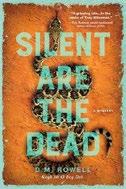
One mystery bleeds into another as a Native woman and her cousin seek a missing headdress that may have instigated a murder.
Mud Sawpole and her cousin
Denny have gathered with their tribal elders to bless the Jefferson Peace Medal outside the Kiowa Museum. Cleansing the medal’s negative energy, especially after the duo had to solve a murder to recover the precious symbol, brings a healing sense of contentment to Mud. After the ceremony, she tries to get herself back into the head space of her adopted Silicon Valley home and work, but when she and Denny see that tribe leader Wyatt Walker’s office has been tossed, they know the danger isn’t over. Is this about the medal, other relics in the museum, or the fracking operation that’s commenced on tribal lands? Things get more complicated when the cousins run into Mud’s former flame Georgie Crow, who claims that she just saw the body of Gerald Bean, the gallery owner bent on stealing Native art. When Mud and Denny look, the body’s gone. Georgie begs them to figure out what’s going on to protect Buck, Georgie’s ne’er-dowell husband, whom Eli Tonay claims stole his family’s headdress. The overlapping mysteries send Mud and Denny on an investigation marked by a room full of venomous snakes, the disappearance of Gerald Bean’s body, and enough obstacles to make it clear that someone doesn’t want them to learn the truth.
An immersive cultural experience with Kiowa culture and language wrapped in a mystery plot.




Millie Bobby Brown Will Adapt Her Novel for Netflix
The actor will produce a film based on her novel, Nineteen Steps
Millie Bobby Brown is developing a film adaptation
of her novel, Nineteen Steps, Deadline reports.
Brown, the actor known for her breakout performance in the series Stranger Things and her roles in the films Enola Holmes and Damsel, will produce the adaptation for Netflix.
Brown’s novel, co-written with Kathleen McGurl and published last year by Morrow/HarperCollins, follows Nellie, an 18-year-old woman living in 1942 London. She meets and falls for Ray, an American airman, but her life is thrown into disarray after a sudden tragedy. A critic for Kirkus wrote of the
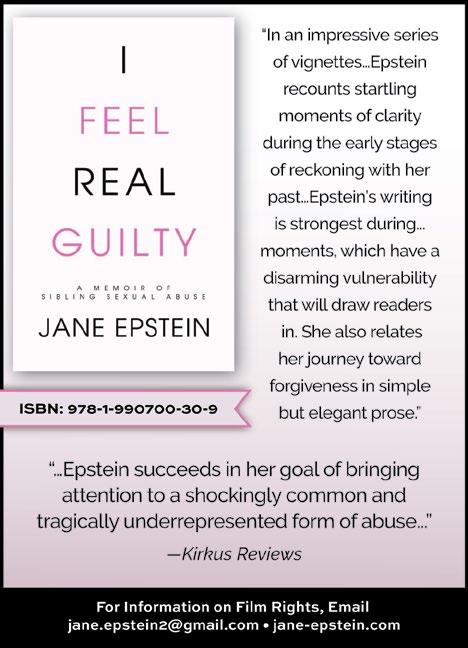
book, “Though it seems likely to be a hit, the novel lacks the depth to elicit real emotion. Poorly drawn characters and clichés abound in this familiar story of WWII.”
Deadline says that Brown has plans to star in the adaptation, which will be written by Anthony McCarten, whose previous screenplays include The Theory of Everything, Bohemian Rhapsody, and The Two Popes
Brown is working on another literary adaptation for Netflix: She will star in The Electric State, based on

Simon Stålenhag’s illustrated novel, alongside Chris Pratt, Stanley Tucci, and Ke Huy Quan. That film is scheduled to premiere next March.
Netflix did not provide a comment to Deadline on the Nineteen Steps adaptation.—M.S.


Wood at Midwinter
Clarke, Susanna | Illus. by
Victoria Sawdon
Bloomsbury (64 pp.) | $16.99
Oct. 22, 2024 | 9781639734481
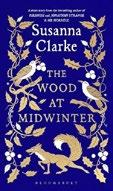
A much-loved author shares a tale for Christmastime.
In an afterword, Clarke tells readers how this story began as a BBC Radio 4 broadcast. Or, rather, she explains how her father’s neurodivergence, her beliefs about the consciousness of trees, and the music of Kate Bush begat a tale in which a young woman sees her future during a walk in a snowy forest. The author also explains how she was certain that Jonathan Strange and Mr Norrell (2004) contained a footnote describing the city where her protagonist lives, but that it’s gone now—probably removed by a fairy “for reasons of his or her own.” It’s laudable that Clarke wants her readers to experience the narrative without preamble, but this backstory reveals her charms as a writer in a way that the story itself does not. Our heroine, Merowdis Scot, feels most at home in the woods and most herself in the company of animals. Even her sister, Ysolde—who comes closer than anyone to understanding her—is no substitute for Merowdis’ pig, her dogs, her many cats, or the spiders that weave their webs undisturbed in her room. Merowdis is taking a winter walk in the company of a trio of her four-legged companions when she encounters a fox and a blackbird and tells the wood of her desire for a child—a “midwinter child…A child to bring light into the darkness.” Given that Merowdis can’t imagine marrying and, given her ease with animals and unease around people, her wish will require a miracle that’s very different from the miracle found in the Christmas story. Once Merowdis sees her fate, this tale takes on some of the uncanny truth of folklore. Getting to this point, though, means connecting with an
“unconventional” heroine who is both familiar and unexceptional in both children’s lit and books for grownups. Could this be a made-for-gifting book created to coincide with the 20th anniversary of Clarke’s phenomenal debut?
Groner, Cary | Spiegel & Grau (288 pp.)
$28.00 | Dec. 3, 2024 | 9781954118423

A pensive, dystopian Western set in the wake of a devastating pandemic stars a reluctant Buddhist hero with an ability to talk to animals.
In 2048, 52-year-old Will Collins is one of the oldest surviving members of a human society that consists mostly of those 30 and under. Living as a hermit for a year when Disease X struck, he got sick but didn’t die. Now the sole caretaker of the Colorado Buddhist community where he has spent decades, he receives a message from California-based scientist Lars, father of his old flame Eva, who, Will has been told, died when the pandemic spread 14 years earlier. Lars instructs him to go to a local veterinarian and get an ampoule, which may contain an antidote, implanted in his body, and then make his way to the Sovereign Republic of California. Will calls together his two best friends, the raven Peau and the cat Casse, and uses a team of mules to pull an old truck across the deserted roads, pursued by the vicious Flynn and his militia. Along the way, he reluctantly assumes custody of bright, mouthy 14-year-old orphan Sophie, who is at risk of being forced into prostitution. Groner is at his best in describing the changed landscape, where passenger pigeons and bison have returned in full force and mutant crocodiles make river crossings dangerous, and the many settlements his little troupe
encounters, some welcoming and others very much not. The novel sometimes bogs down in discussions of religion, philosophy, and the history of the series of pandemics that led the world into its present situation, and its final chapters are loaded with unlikely twists. But as long as the narrator is on the road, his exploits and observations provide an engaging window into a strange new world.
An ultimately hopeful vision of the aftermath of disaster.
Killjoy, Margaret | Feminist Press (320 pp.)
$17.95 paper | Sept. 24, 2024 | 9781558613317
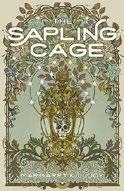
A girl discovering who she is joins a coven of witches as the land around her stands on the brink of change.
Sixteen-yearold Lorel has always known she’s a girl and not a boy, but of the people in her town only her mother and her best friend, Lane, know. Lane was promised to the witches, but she has no interest in joining them and so the two decide to switch places: Lorel will join the witches, living as a girl for the first time, and Lane will become a knight. Though Lorel worries that her secret will be discovered through the witches’ magic, she is accepted into the Order of the Vine and slowly begins to find camaraderie—and rivalry—among the other trainees, or whelps, of the Order. As the coven journeys across the land, they find that a blight is spreading, turning trees cold, fueled by an uncanny magic. To find and stop whoever is responsible for the blight, the witches must form an uneasy alliance with the knights, many of whom have never trusted the witches. As Lorel and the other whelps face battle, death, and more, they must learn whether they can rely on each other and where their place is
A quiet yet mesmerizing story reveals how a family was impacted by a curse.
THE MIRROR
in the world. Told in a fairy tale–like style, the narrative does not focus on Lorel’s transgender identity, but instead weaves her coming-of-age story into a larger narrative of factions vying for power and a world changing. Quiet, despite the looming threat of war, this is an exploration of relationships of all kinds and the belonging one can find in sisterhood. An almost whimsical tale of witches and knights, infused with queer representation.
Liang, Ann | St. Martin’s (336 pp.) $32.00 | Oct. 1, 2024 | 9781250289469

A beautiful young peasant is selected to become a spy in an enemy king’s court in Liang’s take on an ancient Chinese legend.
Xishi is extraordinarily beautiful. Even as a lowly peasant girl in Yue, she’s been told all her life that her looks set her apart from others. But beauty doesn’t matter much to Xishi. After all, it wasn’t enough to save her beloved little sister, Susu, from being murdered by the invading Wu army. But one day, Fanli, a great military advisor to the king of Yue, comes to Xishi’s rural village and tells her she has been chosen for a special mission. She must leave home, learn the ways of aristocratic life, and be sent as a concubine to the Wu King, Fuchai, and become a spy in his court. Xishi is so beautiful, she should be able to seduce Fuchai and manipulate him to endanger his own crown. Xishi is terrified to leave
for the rival court, but she wants to avenge Susu’s death more than anything. When she arrives in Fuchai’s court, her legendary beauty and skill as a seductress win her the king’s heart, and Fanli’s plan looks like it will work. But despite her hatred for the nation that killed her sister, Xishi comes to understand that the citizens of Wu, and even Fuchai, are human beings just like her, and her mission of vengeance might not leave any room for her to live her own life. Liang’s plot follows the large arcs of the legend, and she skillfully fills the pages between plot points with careful character work. What would it feel like to spend years lying to everyone around you? How do large-scale wars stop people from recognizing their common humanity? Do your ideals matter if they prevent you from forming real relationships? Lovely historical fantasy breathes new life into an old tale.
Roberts, Nora | St. Martin’s (448 pp.)
$30.00 | Nov. 19, 2024 | 9781250288776
Series: Lost Bride Trilogy, 2

A woman works to cast out the evil witch haunting her inherited home in the second book of Roberts’ Lost Bride Trilogy, following Inheritance (2023).
Sonya MacTavish inherited a mansion in a small coastal Maine town, only to discover it was haunted
by ghosts known as the lost brides. In 1806, a malevolent witch named Hester Dobbs wanted the mansion and its owner for herself, so she killed his bride on their wedding night and then sealed the curse by killing herself. The first woman in each subsequent generation was killed by the curse on her wedding day. Dobbs has become a poltergeist that controls part of the mansion, while the rest is inhabited by the ghosts of her victims. Roberts follows her typical trilogy plotting: In this middle book, the forces of good retrench, gather information, and build their forces, saving the final showdown for the last volume. Sonya builds a small cadre of supporters around her here, including her cousin, best friend, and lover. Inside the mansion, the foursome discovers a magic mirror that shows them scenes from the past, but as family members, Sonya and her cousin can also travel through the mirror. On the other side, they become ghosts, able to experience the murders of the brides as if they were present in the room. Sonya and her friends treat these visits as fact-finding missions, hoping to use the information to cast out Dobbs and end the curse once and for all. Meanwhile, Dobbs builds her own power, hoping to intimidate and frighten Sonya away. Roberts is a masterful storyteller, weaving together the tales of Sonya’s ancestors, not only the murdered brides but also desperate survivors who did monstrous things to avoid the curse. It’s a fascinating look at the destructive power of ambition, greed, and weakness while Sonya marshals the power of creativity, community, and togetherness. A quiet yet mesmerizing story reveals how a family was impacted by a curse over the centuries.

Appelbaum, Lauren | Forever (320 pp.) $17.99 paper | Sept. 24, 2024 | 9781538757840
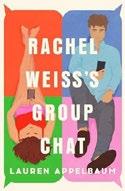
Rachel Weiss has a group chat: hilarity ensues. Rachel can never let a noteworthy update escape the group chat. From hot-yoga blackouts to hot guys wearing loafers without socks, Rachel and her friends Eva, Sumira, and Amy lay it all out over text. Out of the four girls, Rachel is by far the chattiest of the chat—but why wouldn’t she be? Rachel’s mom is on a constant warpath, urging her second-eldest daughter to find a husband before she turns an elderly 30, and her most recent fling only wants a physical relationship though he’s not even that good in bed. To top it off, the billionaire tech whiz who bought the house next door to her parents for his parents, a Mr. Christopher Butkus, has a bad habit of showing up during all of Rachel’s most embarrassing moments. Yet, she can’t help but notice that her relationship clock is ticking, and friends with benefits isn’t really her style. It doesn’t help that her mother flags Christopher as the potential husband of the year, and though Rachel can’t help but find his CEO status off-putting, she constantly finds herself thinking about him. But amid all of her own gossip to spill, the group chat erupts into chaos. Amy and her husband haven’t slept together in a month, Eva can’t seem to find the “one,” and Sumira’s been practically MIA. In spite of all her gabbing, it’s time for Rachel to lend a listening ear, rally her friends, and find her happily-ever-after…with plenty of shenanigans to spare. In Applebaum’s laugh-out-loud romance, Rachel bears a charming similarity to that quirky British heroine Bridget Jones. Rachel is confident, loud, and boisterous, and despite her lack of self-awareness and
Two exes agree to get married for as long as it takes to flip an apartment.
THE CO-OP
knack for causing a scene, readers will need to know what nonsense she’ll get up to next. The star of the show, however, is Rachel’s tightknit friend group: You’ll come for Darcy, but you’ll stay for the Charlottes. A true-blue rom-com, perfect for readers wanting a contemporary Jane Austen or Helen Fielding novel.
Caña, Natalie | Harlequin MIRA (352 pp.)
$18.99 paper | Oct. 29, 2024 | 9780778305460

After having had an on-again, off-again secret relationship for years, one couple must decide whether they’re ready to commit to each other in public.
Former firefighter Leo Vega was in search of a new purpose long before he sustained an injury that changed everything for him, but the recovery process has caused him to rethink his priorities in both life and love. His secret recurring fling with Sofi Santana, his sister Kamilah’s best friend, has cooled off in recent years, especially in the wake of a long trip she took to Europe. Now that Sofi is back in town for Kamilah’s wedding, her heightened proximity is a strong reminder of all the reasons Leo first fell for her way back when, and it’s clear that their mutual attraction is still going strong. For her part, Sofi is determined to make a fresh start, hardly looking to revisit the past, but when one thing leads to another and she and Leo unexpectedly end up as roommates, their close quarters
reintroduce the buried feelings they’ve always had. If that weren’t enough, Leo’s grandfather Papo Vega is back to his old matchmaking tricks, and he and Sofi’s grandmother team up to ensure that yet another of his descendants gets their happy ending. The biggest strength of Caña’s Vega Family Love Stories trilogy has always been the element of community, and readers who have been eagerly waiting for Leo’s turn to shine won’t be disappointed by this conclusion. The couple comes preloaded with years of complicated history, but their story would have benefited from more moments set in the present to give the third-act conflict more emotional weight. With an ensemble this big, the emphasis falls more on the family dynamics rather than the romantic narrative, but the book offers everything longtime fans of the Vega clan could want.
A heartwarming contemporary romance that delivers both humor and heat.
DeWitt, Tarah | St. Martin’s Griffin (352 pp.)
$18.00 paper | Nov. 12, 2024 | 9781250329387

Two former flames agree to get married for as long as it takes to flip the run-down apartment they’ve inherited together. LaRynn Lavigne and Deacon Leeds haven’t laid eyes on each other since
the summer in Santa Cruz when they had a brief fling as teenagers. The relationship didn’t last, but it made enough of an impact that when they’re finally face to face again, a decade later, they have to figure out how to exist around each other. Total avoidance isn’t a possibility, because their grandmothers—who were married to each other and both recently died—left them a shared inheritance of a ramshackle apartment, and LaRynn and Deacon have to figure out the best way to fix it up and sell it for a profit. The only snag in their plan is that LaRynn can’t access the money they need in her trust fund until she gets married, and Deacon can’t use his construction skills to do the repair work without said funds. When the idea of tying the knot comes up between them, they reluctantly agree to a temporary union: stay hitched for as long as it takes to renovate the house, then go their separate ways. Living in the apartment while they fix it up, they’re sharing a space that lacks most of its walls, but that doesn’t mean there aren’t plenty of emotional barriers still in place. As their forced proximity also forces LaRynn and Deacon into some tough but long-needed conversations, it begins to lead them to the realization that the intense feelings they had for each other still burn just as hot as they did during that summer 10 years ago. DeWitt’s latest romance is less about two people finding love and more about how they rediscover a love that never truly disappeared. Through dual timelines and points of view, we’re offered a window into both
the evolution of Deacon and LaRynn’s romance and their incredibly satisfying, hard-earned road to a happily-ever-after. A swoony slow-burn romance that lives in the little moments.
Elliot, Amanda | Berkley (368 pp.) | $18.99 paper | Oct. 8, 2024 | 9780593815830

A struggling coffee-shop owner and her most cheerful customer fake a relationship for Hanukkah in this cozy contemporary romance. Former New Yorker Abby Cohen moved to Vermont for a relationship that didn’t work out, but she stuck around anyway and opened a coffee shop. There’s only one thing—or rather, person—who disturbs her beloved peace and quiet, and that’s the sunny Seth Abrams, a regular at her shop. When it’s revealed that Abby is the only Jewish person on her town’s tourism board, she becomes the de facto head of planning for this year’s Hanukkah festival. Unfortunately, Abby is quickly disappointed by the lack of creativity and enthusiasm from other local vendors. In desperation, she takes to the internet to ask for help and is surprised to learn that Seth is also Jewish. (“Apparently, my own Jewdar was broken,” she thinks.) He’s happy to connect Abby with other vendors who could make the Hanukkah festival a hit, but there’s a catch. Abby must play the role of
The universe gives a tarot card reader a second chance at love.
THE LOVERS
“Nice Jewish Girlfriend” on a trip back to New York to spend Hanukkah with Seth’s family. Seth is endearing and supportive, the sunshine to Abby’s grumpy. They make a very cute couple with their black cat meets golden retriever energies; their interactions are the highlight of the book. Wintertime in New York City is picturesque and romantic, but there’s a reason Abby has stayed away from her old stomping grounds for so long—her verbally abusive parents. The novel’s two settings are in a tug-of-war, and there’s enough detail and motivation to have focused on just one. The smalltown power struggle between Abby and Lorna, the president of the yearly festival, makes for a more traditional and fun holiday romance plot. The fake-dating portion in which Abby arrives back home and confronts the terrible behavior of her parents makes this feel like two separate books. A warm and welcoming, though disjointed, holiday romance.
Faubion, Rebekah | Berkley (352 pp.) | $19.00 paper | Sept. 24, 2024 | 9780593640869

The universe gives a tarot card reader and a wedding planner a second chance at love. Inspired by her parents, Kit Larson has been pursuing the “Ideal Rom-Com Life Path,” searching for the perfect man even though she secretly desires women as well. Then she learns her mom is leaving her dad to be with a woman, which unmoors her. Kit is an influencer working in the realm of spiritual entertainment, and escaping L.A. for Joshua Tree to provide tarot readings at a high-profile wedding seems like just what she needs. The multiday extravaganza is Julia
Kelley’s last gig before she starts her own wedding-planner business, and she needs everything to go perfectly. But when Julia sees Kit, this trip becomes the emotionally fraught reunion neither of the childhood best friends expected. It’s been more than 10 years since they became each other’s first loves, just before Kit broke Julia’s heart and left for college. Now they have the opportunity to rekindle their relationship, if only they can be open and honest about their true selves. Kit’s complicated coming-out journey and Julia’s struggle to be her authentic self after a toxic relationship with a manipulative ex may resonate with readers, but there’s a shallowness to the characters and their conflicts that prevents them from feeling fully believable. It doesn’t help that the alternating first-person narratives are often indistinguishable. The vibrant California setting comes alive through lush descriptions, but some scenes feel like filler, giving the story a plodding pace.
A debut that doesn’t live up to its potential.
Juniper, Josie | Forever (368 pp.) | $17.99 paper | Oct. 8, 2024 | 9781538768976

A Formula 1 driver falls in love with his race engineer.
Phaedra Morgan knows most people assume she only has the job as race engineer for Emerald F1 because she’s a nepo
baby—her father is the team’s owner. Yes, she was raised at the track, but she also earned a master’s degree at 22 and has been working in racing for a decade. Phaedra has always been hot-tempered, but Cosmin Ardelean, Emerald’s newest driver, brings out the worst in her. As his race engineer, it’s her job to guide him through every straightaway and turn, but their clashes have started to attract notice. She’s infuriated by his sexist, inappropriate comments, which he insists are friendly banter. In late March, only a few weeks into the F1 season, Emerald’s manager orders them to spend a weekend bonding as teammates in between races. On Santorini, the two discover that their enmity is in fact intense chemistry, and they each let down their guard. Phaedra tells Cosmin a closely held and personally devastating secret—her father has been diagnosed with terminal cancer. Cosmin shares the story of how his abusive guardian ruined his sister’s life. The two return to the circuit and eventually become lovers, but their relationship must be kept secret due to rigid nonfraternization rules. The novel is plagued by weak, even mercurial, characterization for both main characters, with little coherence in their behavior from scene to scene. The primary driver of the narrative is the globe-hopping F1 season, culminating with the final grand prix in Abu Dhabi in December. The combination of weak characterization and a plot fueled only by the characters’ secrets makes for an aimless reading experience. This F1 racing romance spins its wheels rather than reaching the finish line.
Katz, Rachel Runya | St. Martin’s Griffin (320 pp.) | $18.00 paper Sept. 10, 2024 | 9781250888334

Estranged childhood best friends confront long-buried feelings on an emotional road trip. Nia and Jade had been friends since they were introduced by their mutual bestie, Michal, at her 10th birthday party. Now, 19 years later, Michal is gone—she died of cancer a few years ago—and they’re barely on speaking terms. But before Michal passed away, she left letters for Nia and Jade to open on their future birthdays, and the ones written for when they turn 29 come with a special request: To go on a road trip the three of them had planned to explore the history of Jews (including their own families) in the South. Wanting to cherish and honor Michal’s memory, the two women reconnect, and they set off on the trip with Jade’s twin brother, Jonah, who was Michal’s boyfriend. All three seem to settle back into old habits and routines; in some ways it feels as if no time has passed at all. But there’s still the elephant in the room that blew up Nia and Jade’s friendship—an attraction both feel but only one has acknowledged. Author Katz deftly enfolds multiple themes within their slow-burn romance: the history of Jewish communities in the South and the generational trauma that comes with it; an intense examination of grief; and a testament to the complexities of friendship and sibling relationships. Heaping doses of the two women’s yearning and pining tenderly supplement it all. However sweet and emotional the romance may be, though, it often fights for attention with the novel’s other rich elements. Visits to locations with deep histories for the Jewish and Black communities and a
A mishap transports a magical-artifact hunter and a Welsh witch back in time.
consideration of how ugly, upsetting life moments can leave people and relationships changed are the more compelling components. An emotional romance buttressed by strong themes of history, trauma, loss, and identity.
Loigman, Lynda Cohen | St. Martin’s (320 pp.) $29.00 | Oct. 8, 2024 | 9781250278104
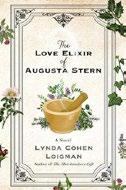
A n octogenarian’s past comes bubbling to the surface when she begins a new chapter in her life.
Growing up in 1920s Brooklyn, Augusta Stern had two heroes. First, her father, Solomon Stern, a well-respected pharmacist. Second, her great-aunt Esther, who moved in with the Sterns after Augusta’s mother died and deals in medicinals in a less conventional way. Watching her great-aunt brewing healing concoctions in the kitchen in the middle of the night after seeing her father measuring out dosages and counseling patients in the back of his drugstore during the day, Augusta dreams of becoming a pharmacist herself. And she does just that, for decades, until a hospital employee figures out that Augusta, pushing 80, has doctored her records to show that she’s in her 60s. Forced to retire, Augusta begrudgingly moves to a retirement community in Florida, and on her first morning there runs into the last man she ever
wanted to see: Irving Rivkin, her father’s former delivery boy and her first love. Irving is delighted to see Augusta, whom he lovingly/annoyingly calls by her childhood nickname, Goldie, but this feeling is certainly not mutual. The complicated history between the erstwhile lovers is slowly uncovered as Loigman alternates Augusta’s present with her past. A hefty dose of theatrics bordering on the soap-operatic frequently makes the story hard to swallow. That said, Augusta and Irving’s love story is charming without being saccharine, and Augusta’s tongue-in-cheek wit combined with her renewed hopefulness makes her the perfect unexpected heroine for new beginnings: “Oh, how she wanted to be that woman again—a woman who, yes, had suffered losses, but whose heart had not yet been broken beyond repair.”
For anyone who believes in second chances.
Sterling, Erin | Avon/HarperCollins (288 pp.) | $18.99 paper Oct. 8, 2024 | 9780063297593

A wedding-spell mishap transports a magical-artifact hunter and a Welsh witch back in time.
Tamsyn Bligh has earned a reputation for procuring magical objects, particularly the type that will earn her an impressive sum. While she’s not a witch herself, her line of work
allows her to cross paths with many people in that particular community, but none of them have left quite as strong an impression as the stoic, bearded Bowen Penhallow. When the two of them strike a deal in which Tamsyn will procure magical items for Bowen without resorting to less-than-legal means, it seems like the perfect agreement. Never mind the fact that Bowen has been the leading man in most of her filthy fantasies; Tamsyn has been an artifact hunter long enough to recognize that it would be a mistake to blend the professional and personal. Besides, she’s got one more job lined up that could ensure she’s financially set for the rest of her life; she’ll just need to sneak into the witchy wedding of the century at Tywyll House in North Wales to pull it off. Meanwhile, Bowen has been invited to the same wedding, and when the two cross paths, sparks fly—in part because an unexpected spell catapults them back to 1957, to another Yuletide wedding on the same estate. As Tamsyn and Bowen are forced to work together to return to the present, they also have to perform some important matchmaking to ensure that Bowen’s grandparents tie the knot—but nothing may be more dangerous than giving in to their own growing feelings. The latest installment in Sterling’s bewitching series sets another charming romance against a new seasonal backdrop, with Bowen and Tamsyn proving themselves a couple to cheer for. Navigating time travel and magical mishaps might seem like a lot, but the book mostly succeeds at balancing all of these elements without sacrificing a beat of its main love story.
A winsome, witchy rom-com.


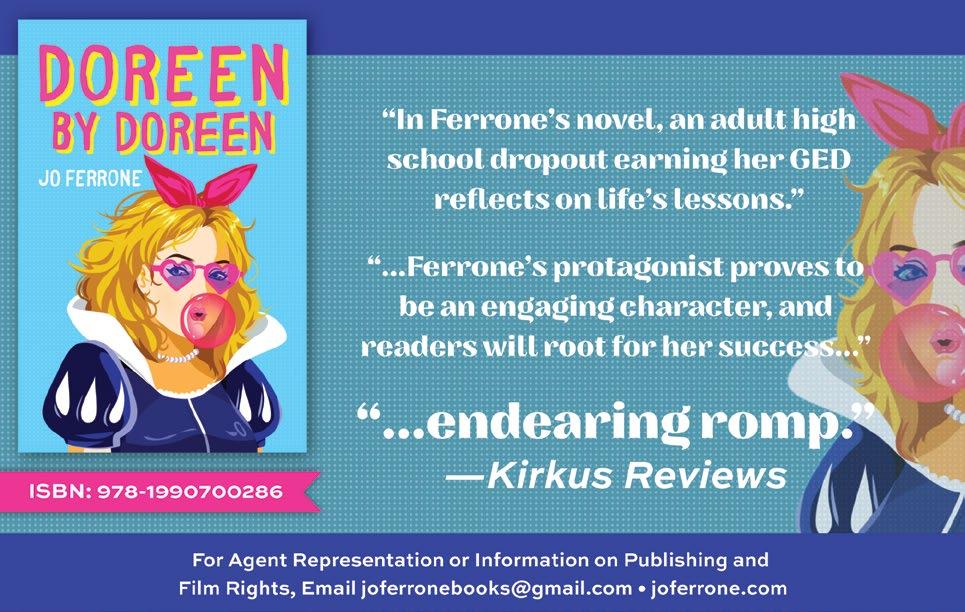

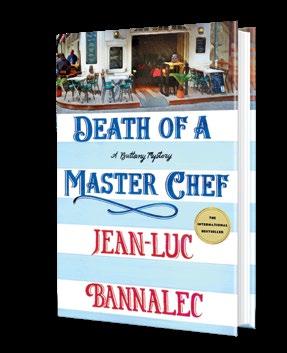



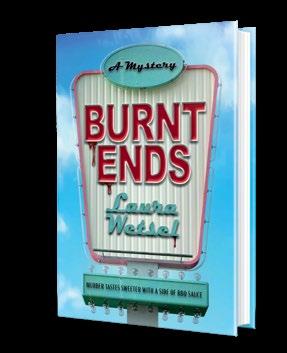

JOHN McMURTRIE
IS THERE A cuisine you think you could eat every day, one you wouldn’t tire of? For me, the answer is easy: Vietnamese.
Composed of fresh and healthy ingredients and contrasting flavors and textures—herbs and tropical fruits, lime, palm sugar, fried shallots, and a lot of fish sauce—Vietnamese food is invariably delicious and satisfying but not overly heavy.
All this is reason enough to immerse oneself in Nini Nguyen’s marvelous new book, Dac Biet: An Extra-Special Vietnamese Cookbook (Knopf, Aug. 27). Born in New Orleans in 1986, Nguyen didn’t visit her ancestral homeland until age 28. She nevertheless inherited her family’s love of Vietnamese cuisine; as children, she and her late brother, Bobby (to whom the book is dedicated), would watch the Food Network “religiously.” In little time, Nguyen achieved her reality-TV dreams, being invited onto Top Chef. She has since found her calling as a popular cooking instructor. “My logic is that if everyone
knows these dishes,” she writes, “Vietnamese cuisine will be here to stay, and will—I hope—find its place in American culture.”
The many dishes in Nguyen’s book are certainly a good start, guiding readers through everything from tangy sauces and noodle soups to her inventive “Southeast Asian/Spanish” jambalaya.
There are countless other cuisines finding their place in American kitchens, and many cookbooks showcase them. A standout is Alexander Smalls’ The Contemporary African Kitchen: Home Cooking Recipes From the Leading Chefs of Africa (Phaidon, Oct. 15). Like all of Phaidon’s titles, this book is gorgeous. It divides its 120 recipes regionally (which makes sense for such a diverse continent), and it spotlights famous dishes like Egyptian falafel but also lesser-known ones— the scallops with hibiscus sauce, from Togo, is especially inspired.
One of the most enjoyable cookbooks of 2024 is Koreaworld by Deuki Hong and Matt Rodbard (Clarkson
Potter, April 23), which, in addition to its recipes, profiles chefs, shopkeepers, and others in chronicling a cuisine that is “exploding” in popularity. The lively photos capture a street-food culture that is growing around the world.
After some of those high-protein meals, you might be in the mood for something lighter. Here to help is influencer Radhi Devlukia Shetty’s JoyFull: Cook Effortlessly, Eat Freely, Live Radiantly (S&S/Simon Element, Feb. 27). The plant-based recipes include a restorative chai and brightly colored drinks, such as one made of lavender and blue matcha.
Finally, for those of us not ready to acknowledge
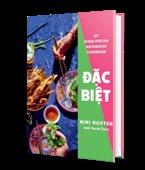

the departure of summer, there is Zaytinya: Delicious Mediterranean Dishes From Greece, Turkey, and Lebanon (Ecco, March 19). Written by José Andrés, the bighearted chef who founded the relief organization World Central Kitchen, the book takes its name from Andrés’ Washington, D.C., New York, and Miami Beach restaurants. Zaytinya is a celebration of mezze, small plates of warmweather food from the Eastern Mediterranean that have been shared across boundaries for centuries. As Andrés so aptly puts it, “The connections between the people of this region are old and deep—and their shared food traditions prove that what brings us together is more powerful than what separates us.”
John McMurtrie is the nonfiction editor.



Engrossing, precise account of Elon Musk’s takeover of Twitter (now X).
New York Times reporters Conger and Mac collaborate successfully on an ambitious narrative capturing how Musk engineered Twitter’s downfall, set against the vast financial stakes and dehumanizing aspects of the tech economy. The authors assert, “What he owns is no longer Twitter—not in name, but also neither in substance nor in spirit.” Their approach is sprawling, yet comprehensible, encompassing the role of Silicon Valley culture, political convulsions provoked by Trumpism and Covid-19, and the roles of many luckless Twitter veterans. They initially contrast the trajectories of
Musk and Twitter’s enigmatic founder, Jack Dorsey, whose two tenures as CEO left him disillusioned following a prior takeover attempt. His replacement, Parag Agrawal, planned deep layoffs in response to Twitter’s delayed profitability but was sidetracked when mercurial Twitter addict Musk first teased a desire to join the company’s board, then engineered a buyout. For many employees, “Musk represented the ideal leader: a visionary technocrat guided by science and engineering who listened to his own instincts above all else.”
But then Musk attempted to call off the deal, and the board filed a lawsuit holding him to his original offer, by which point “any

optimism that Musk might be a good steward of the platform had long been erased.” Indeed, Musk engaged in mass layoffs, so that by 2023, “the company had become so lean that everything was on the verge of falling apart.” The authors conclude, “Musk had not bought Twitter to be a responsible steward [but] as an object of personal obsession.” Musk is portrayed as a complex, fragile, ultimately chaotic and malicious figure: “This was a man who chewed through people, using their loyalty to work them into the ground.” Compelling fusion of business history and worrisome social narrative.
The creator of the Truth-O-Meter examines what he calls an epidemic of political lying.
BEYOND THE BIG LIE
Adair, Bill | Atria (304 pp.)
$28.99 | Oct. 15, 2024 | 9781668050705

How politicians are stretching the truth more than they used to. When Adair, founder of the Pulitzer Prize–winning PolitiFact, was bureau chief for the St. Petersburg Times, he instituted national fact-checking using his Truth-O-Meter. Recent events, he says, show that lying threatens our democracy, endangers our health, and cripples our discourse. Leaning left, the book is full of excellent examples, facts, and statistics. He begins by discussing in detail a 2022 Department of Homeland Security release about a new organization created to coordinate its efforts to combat disinformation and how it went horribly bad after right-wing media attacked it as a governmental Orwellian Ministry of Truth. Adair’s detailed taxonomy of lying differentiates its severity, type, and technique. Besides Bill Clinton, the author’s lying hall of fame includes the “nation’s most prolific and damaging liar,” Donald Trump. Adair argues that when a political lie is created, campaigns must debunk it quickly and often. With the rise of so many fact-checkers, it soon became clear that Republicans “lied more—and they lied worse.” Former Democratic Senator Al Franken of Minnesota tells Adair that, in the author’s words, “lying has been part of the Republican ethos since
the early 1990s,” beginning with Newt Gingrich. Adair asserts that a “citizen movement to hold politicians accountable for lying” has some promise, concluding with some ideas for helping reduce lying, such as politicians making public pledges to stop it, as well as lowering ad rates and offering more debate time for truth tellers.
A sobering and bleak assessment of lies in politics.
Alameddine, Rabih | Univ. of Virginia (96 pp.)
$19.95 | Oct. 22, 2024 | 9780813952512
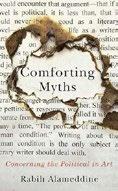
Two lectures look to unsettle audiences complacent about the role of politics in contemporary fiction. Lebanese-born novelist Alameddine is the author of six novels, most recently The Wrong End of the Telescope This slim volume consists of two essays that he delivered as lectures, the second of which was published in Harper’s Magazine in 2018. In both, he plays the role of political gadfly. The first essay begins with the assertion that “every time I talk politics in this country, I notice that people’s faces go blank. Never fails.” He goes on to question the assumption that political novels are necessarily inferior, and to make a case that all novels are in fact political. “If a novel reinforces the dominant culture’s values, that culture will not think of the novel as political; if it doesn’t, it will,” he writes. “If John Updike writes a novel about a white man’s life, is it not
identity politics?” In the book’s second lecture, the author writes about himself and others involved in “this world literature thing”—including Amy Tan, Junot Díaz, and Salman Rushdie—as being coopted by American universities and of being “safe, domesticated, just exotic enough to make readers feel they are liberal.” They are, he says, “the cute other,” not the “utterly strange other, the other who can’t stand you.” Alameddine might not always be convincing, but he is consistently entertaining. A provocative pair of essays.
Araujo, Ana Lucia | Univ. of Chicago (640 pp.) $39.95 | Oct. 19, 2024 | 9780226771588
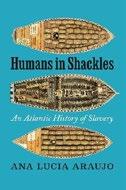
A comprehensive survey of the Atlantic slave trade.
“Raised as a white person” in southern Brazil, Howard University professor Araujo is determined to include in her account both Latin America and those regions from which enslaved Africans were kidnapped. Synthesizing primary sources and other historians’ findings, she works her way from West Africa and West Central Africa, through the Middle Passage, to the Americas, then back again. As she contrasts the experiences of bondspeople across time and space, she takes care to explore the lives of enslaved women and to highlight enslaved people’s persistent efforts at resistance. Encouraging readers to understand suicide, infanticide, and celebration as expressions of resistance, Araujo argues that “bondspeople were protagonists of their own emancipation.” Araujo’s writing can sometimes be dry, but this does not diminish the importance of her work. The facts alone are staggering; among them: “More than 4.8 million enslaved [people] landed on Brazilian shores…nearly ten times more than [in] the United States.” Seeing Nat Turner’s Rebellion of 1831
alongside Tacky’s Revolt in Jamaica in 1760 and the Malê Revolt in Brazil in 1835 helps readers understand the scope of enslaved people’s armed resistance. Also astonishing is the range of sources from which Araujo and her colleagues glean information: In addition to slave narratives and oral tradition, she cites Inquisition records, enslaved people’s wills, and a particularly revealing 1684 Portuguese law regulating conditions on slave ships, among a wealth of other documents. A sweeping and essential history of the slave trade.
Ashton, Dianne with Melissa R. Klappers New York Univ. (256 pp.) | $32.00 Oct. 29, 2024 | 9781479831906

A Jewish daughter of the Confederacy tells her story.
Of 150,000 Jews among 31 million Americans in 1860, between 20,000 and 25,000 lived in the South— about 0.2% of the population. Like those in the North, they considered themselves ordinary citizens, if suffering some traditional antisemitism. Scholars have barely explored the avalanche of 19th-century diaries resting in archives and state historical societies. One of them is Mordecai’s 1864-1865 journal, which occasionally delivers a vivid snapshot of the Civil War’s final year. Middle-aged and unmarried, Mordecai was living in Richmond, Virginia, when the Union army moved south in the spring of 1864. With the city threatened, she moved to a nearby farm owned by her sister-in-law, settled into a room, and began her diary. Both she and her sister-in-law owned slaves (she refers to them as “servants”). Literate and pious, she remained a loyal woman of the South, detesting Yankees and convinced that slavery was an admirable institution. Routine activities take up
most of the text: chats with friends, sewing, meals, chores, weather, the contents of letters. Except for reports of Jewish holidays and appeals to God, her Jewishness plays a modest role; many of her family had converted to Christianity. As she wrote, armies clashed. She grew skilled at interpreting the source of cannon fire, but the news she received, mostly announcing Yankee defeats, doesn’t match the historical record. Soldiers appeared to appeal for water and food, and occasionally to steal, yet her farm remained untouched; a few relatives serving in Robert E. Lee’s army dropped in. Raw diaries are best skimmed. Fortunately, editors Ashton and Klapper do their duty with a long, insightful introduction on the historical background, Mordecai’s life before and after the war, and an overview of the diary’s contents. Good niche history.
Bruno, Debra | Three Hills/Cornell Univ. (304 pp.) | $32.95 Oct. 15, 2024 | 9781501776564
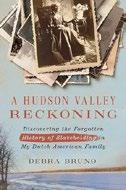
A New Yorker charts the long history of slavery along the Hudson River. The enslavement of African and African American people was, the national narrative has it, a thing of the agrarian South, terminated by Civil War–era emancipation. Bruno, a freelance journalist, learns almost by accident that the “peculiar institution” extended far to the north. “If you have Dutch ancestors in the Hudson Valley,” a friend tells Bruno, “they were probably slave owners.” It’s not for nothing that Sojourner Truth spoke English with a Dutch accent, after all. Methodical if not always meticulous, as her notes on
the intricacies of genealogy show, Bruno explores this story: she talks to anyone she can, digs into the archives, reads, learns. There’s much to absorb: as she travels farther back in time, exploring the generation of her great-grandparents times five (and, she notes, that’s 128 people, a number we all share), she discovers that “nearly every one of them was an enslaver, registered with a check mark on the far edge of the 1790 census, our new country’s first official count.” It comes as no comfort to learn that the Dutch and Dutch-descended slaveholders of the Hudson were no more eager to manumit their slaves than were Southern plantation owners, and it’s disheartening to know that as recently as 1903 a Black man was threatened with lynching in the quiet town of Coxsackie, saved by a sheriff who, a newspaper reported, “took him down the river on the boat to Catskill, where there is a well built jail.” While chasing down these little-known stories, Bruno examines her own intentions: “Was I looking for absolution?” Her answer: a calling drew her to the task—and good thing, too, for this is very well done.
A strong, surprising addition to the history of slavery in America.
Lucky Loser: How Donald Trump Squandered His Father’s Fortune and Created
Buettner, Russ & Susanne Craig Penguin Press (480 pp.) | $35.00 Sept. 17, 2024 | 9780593298640
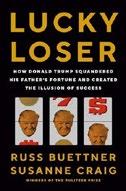
In which the former president turns out to be not quite so wealthy. How is it possible, one might ask, that a casino owner could go bankrupt? In the case of Donald Trump, as New York Times investigative reporters Buettner and Craig report, it’s part of a long pattern of overspending, sinking deep into debt, and somehow bobbing
back to the surface, all while spreading endless lies. One, by the authors’ account, emerges at the very start: Trump has long said that his father “gave me a very small loan in 1975.” But that supposed pittance, they reveal, consisted of “millions of dollars through unrepaid loans, trust funds, and interest paid on loans that existed only on paper,” including a loan of $15 million (about $90 million in today’s dollars) that Trump père was forced to write off when his son fell behind on mortgage payments—a write-off whose details, the authors hold, “could rise to the level of tax fraud.” The portrait that emerges won’t surprise longtime Trump watchers: the self-proclaimed business genius would not have gone as far as he had without his father’s money (“His favorite son was a black hole for Fred Trump’s cash”), which has all pretty well gone up in smoke. That trend turned around with the fortune Trump earned from his Apprentice TV show, a fortune that would now seem to be in danger of evaporating through a combination of high living and impending legal judgments, including an IRS audit that may lead to a $100 million bill. Examining tax returns and deeply sourced documents, the authors portray a business empire built on bluster and blue sky rather than reality. They conclude of Trump, “He would have been better off betting on the stock market than on himself.”
Two investigative reporters turn the Trump origin story on its head.
Casserly, Michael | Harvard Education Press (280 pp.) | $36.00 paper Oct. 29, 2024 | 9781682539316

Education activist Casserly makes a case for the utility of urban public schools. America’s “great city schools,” writes Casserly, have made measurable
improvements in the last three or so decades, including increasing the graduation rate from about 65% in 1990 to about 80% in 2023, which “swelled the ranks of higher education and contributed substantially to the nation’s economy.” Many schools have exceeded the expected outcomes in mathematics, reading, and other academic areas. For all that, as Casserly observes, urban schools have faced tremendous challenges: the pandemic forced students into isolated learning situations that relied on technology that was not always readily available to them, and under the Trump administration and Secretary of Education Betsy DeVos, private schools were privileged over public schools “in defiance of the Congressionally approved Title I formula.” Casserly’s appeal to such formulas speaks to his intended audience of education policymakers and advocates, but it is well taken. More accessible to general readers is Casserly’s case for better pay and support for teachers, as well as his advocacy for some of the basic tenets of “improvement science” and its reliance on “a process of continuous inquiry” to measure and spur progress. On that score, Casserly allows that not every school district is golden and that gains have been uneven, but those that have strived to raise the quality of instruction have seen across-the-board improvements. “Public support for its schools is fragile,” Casserly notes, and raising confidence as well as standards must be an ongoing commitment. In that spirit, he delivers a persuasive argument for supporting public education against its many discontents, always with an eye on what’s best for the children being served. Of most interest to fellow education activists, but with plenty of useful rebuttals to the anti–public school crowd.
Castor, Helen | Avid Reader Press (576 pp.)
$35.00 | Oct. 15, 2024 | 9781982139209
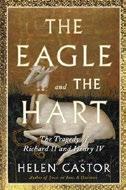
In a psychological portrait of two medieval kings, a British historian revisits a tragedy familiar from Shakespeare. The political crisis culminating in the deposition of Richard II in 1399 by his cousin, Henry of Bolingbroke, ignited the issue of sovereign legitimacy between the houses of York and Lancaster for the next 85 years. In her probing work in four parts, with chapters titled after lines from the Shakespeare plays, Castor delves into the upbringing and character of these two very different men: Richard, the effete “spare,” becomes king at age 10 after the successive deaths of his older brother, father (the celebrated Black Prince), and grandfather Edward III in 1377, and his swashbuckling cousin Henry, son of the ambitious, influential John of Gaunt. It is a time of constant tension and war between England and France, as well as internal rebellions, and Richard’s incessant need of money creates tensions with the Commons in Parliament. Richard’s ennobling of his favorites and increasingly imperious tone prompt the actions of the so-called Lords Appellant, including Henry. The author adds a “Directory of the Main Players” at the end as many have different names from those in Shakespeare’s plays. Richard’s calculated revenge on these men eight
years later and Henry’s ultimate challenge to Richard’s authority mark what Castor calls “a moment of political masculinity in crisis.” Castor follows Henry IV through his brief “white-knuckled” reign and emphasizes that the era’s “themes of power, legitimacy, and the limits of rule and resistance are as urgent now as they have ever been.”
Astute, multilayered drama offers valuable insights into a fraught era.
Cleaveland, Carol & Michele Waslin New York Univ. (288 pp.) | $30.00 paper Oct. 15, 2024 | 9781479824335

The disconnect between U.S. asylum policies and the reality of women fleeing genderbased violence.
Cleaveland, a social worker who since 2015 has been involved in assessing claims of asylum seekers, and Waslin, whose research focuses on asylum and immigration policy, make a compelling debut with this detailed analysis of the experiences of 46 women from Central America and Mexico seeking asylum in the U.S. The authors draw on interviews with the women and immigration attorneys, as well as the “pro bono psychosocial assessments” they have provided, at attorneys’ request, “to document asylum seekers’ credibility and to ascertain the impact of trauma.” Their observations of closed court proceedings and redacted asylum decisions contribute to a dismaying picture of the women’s plights both in their countries of origin and in the U.S. government’s “adversarial judicial process.” That process, the authors assert, “is informed by restrictive policies and the assumed ascription of illegality,” which became even more draconian under the Trump administration. Criteria for granting
asylum, the authors reveal, were created for victims of political persecution, not for survivors of so-called private violence. Gender-based violence perpetrated by domestic partners or gangs is the reason for these women’s plea for asylum: beatings, rape, murder of family members, threats with weapons, incest, and child kidnapping. “Private violence,” the authors argue, is a misnomer for violence rooted in public factors: Political violence and the drug war exacerbate conditions for gender-based violence in countries where machismo culture normalizes women’s subjugation. Lacking educational and job opportunities and community support, these women feel they have no choice but to flee. After surrendering to border patrol agents, they are sent to demeaning detention centers and over several years undergo repeated hostile interviews to determine whether they have been traumatized enough to warrant asylum. Their harrowing stories amply support the authors’ persuasive argument in favor of systemic, humane immigration policy reform.
A timely, eye-opening study.
Clementi, F.K. | Univ. of South Carolina (376 pp.) $27.99 | Oct. 15, 2024 | 9781643364957
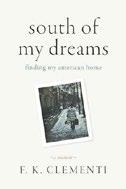
How the daughter of a wealthy Jewish family in Rome made a home for herself in the United States—eventually.
Clementi spent much of her early 20s as a journalist in various European countries, dealing with sexual assault and harassment from a number of her supervisors before heading to Israel to live in a kibbutz to recover from a breakup with a boyfriend who had “an ego of steel, a heart of mud, and a soul of distilled alcohol.” But in the back of her mind was always the dream of moving to the United States, and
particularly to New York, which was more of a fantasy than a real city in her mind, thanks to multiple viewings of Woody Allen movies. When Brandeis University offered her a scholarship to graduate school in 1995, she accepted it as a step in the right direction, even though its location near a historic American city was no incentive, since, according to Clementi, “Boston is disliked by most people.” Eventually, she dropped out of the program and, with more than a little help from her parents, moved to New York and picked up work as an adjunct professor, teacher of Italian, and journalist before becoming an American citizen and earning her doctorate at City College of New York, while juggling a series of romantic relationships, some good and some horrifying. In her late 30s, she received the offer of a tenure-track job as an assistant professor of English and Jewish studies at the University of South Carolina, and once there, despite the initial culture shock, found herself happier than she had ever been. Clementi’s wry and often startling memoir zigs and zags through her life at vertiginous speed, but readers willing to hang on through a wild and sometimes confusing ride will be rewarded with the author’s uncensored observations, both positive and negative, of life in this strange new world.
A sparkling and quirky look at life as an immigrant academician.
Kirkus
Cox, Christopher | Simon & Schuster (938 pp.) $34.99 | Nov. 5, 2024 | 9781668010785
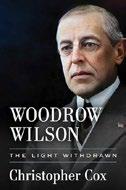
A reappraisal of our 28th president. Historian, lawyer, and former Congressman Cox writes that Wilson was the first Southern Democrat to occupy the White House since
Andrew Johnson. Scholars have long considered him a giant among presidents for his progressive reforms and leadership in World War I. They have not ignored his flaws, emphasizing the censorship, suppression of civil rights, and persecution of war opponents. Cox will have none of that. Sticking to the historical record but keeping Wilson’s achievements in the background, he concentrates on his subject’s beliefs, morality, and intellect—and paints a dismal picture. Born in 1856 in Virginia to a father who enthusiastically supported secession, Wilson believed to his death in the righteousness of the Confederate cause, the horror of Reconstruction, and the inferiority of the Negro race, to whom slavery was a positive benefit. He also proclaimed that universal suffrage was “the foundation of every evil in this country.” Only when the 19th Amendment was about to pass Congress overwhelmingly did he express lukewarm support. Perhaps equally distressing is Cox’s low opinion of Wilson’s political talents and learning. As a president of Princeton and an author of college textbooks, Wilson is regarded as among our most scholarly presidents, but Cox quotes historians who give Wilson’s acumen low marks, and his praise of “Aryan” culture and institutions makes uncomfortable reading. Even traditional historians agree that the defeat of America’s League of Nations entry was entirely Wilson’s own doing. When the Senate disobeyed his order to approve the League bill without modifications, he urged Democrats to vote no, and enough senators changed their votes to defeat it.
Well researched, insightful, and dismaying.
Dunkle, Iris Jamahl | Univ. of California (416 pp.)
$27.95 | Oct. 15, 2024 | 9780520395442

Honoring a forgotten writer. Biographer and poet Dunkle sensitively recounts the life of Sanora Babb (1907-2005), a noted journalist, novelist, and memoirist. At the age of 5, she was nicknamed “Riding Like the Wind” because she managed to stay on a runaway pony by holding desperately to its mane. As the biography’s title, the epithet aptly describes Babb’s uncommon grit and determination. When she was 7, her family moved from Oklahoma to a desolate region of Eastern Colorado, where the failure of her father’s dry-land farming scheme forced the family to live in a crude dugout, nearly starving. Many moves followed, which resulted in Babb’s finally going to school, working as a newspaper journalist, and publishing poems and short stories. In 1929, she set out for Los Angeles, eager to escape her father’s volatile temper and cruelty. Dunkle chronicles Babb’s professional successes and growing fame; among her friends and supporters were Ray Bradbury and poet Genevieve Taggard. An attractive, lively young woman, she refused many marriage proposals, including William Saroyan’s. Her longest, most intense relationship was with Academy Award–winning, Chinese-born cinematographer James Wong Howe, whom she was able to marry in 1949—when miscegenation laws ended. In the 1930s, Babb volunteered with the Farm Services
Wilson believed to his death in the righteousness of the Confederate cause.
WOODROW WILSON
Administration, taking detailed notes on the plight of migrant workers during the Dust Bowl. Unfortunately, she was asked to share her notes with John Steinbeck, who mined them for The Grapes of Wrath. Although her own novel based on her experiences was already under contract, when Steinbeck’s book appeared in 1939, her contract was canceled. Despite that grave disappointment, Babb continued to write, earning acclaim for her memoir An Owl on Every Post ; her contribution to Dust Bowl history was recognized in Ken Burns’ PBS documentary. A well-researched, empathetic biography.
Ewing, William A. & Elisa Rusca Thames & Hudson (280 pp.) | $65.00 Oct. 15, 2024 | 9780500027691

Images that honor the best in humanitarian photography. Ewing and co-curator Rusca joined forces in 2021 to choose images from the portfolios of 5,000 photographers who had been nominated for the Pictet photo prize since 2008. Their aim was to discover images that not only highlighted the prize’s mission to “bring global attention to issues of sustainability” but also demonstrated “care, respect, sympathy [and] consideration” either on the part of the photographer or subjects photographed. Ewing and Rusca ultimately chose 30 photographers from 24 countries. Their work was displayed in an exhibition at the International Red Cross and Red Crescent Museum in Geneva. Some, like Ezra Acayan, who captured the 2020 eruption of the Taal Volcano in the Philippines, reveal a concern for the impact that underreported natural disasters have on ordinary lives. Others, like Adriana Zehbrauskas, who created poignant portraits celebrating the dignity of retired Mexico City sex workers, chose to record individuals hidden from everyday view either because of who they
are or—as in the case of the indigenous Bolivian skater girls Luisa Dörr photographed—because of the remoteness of where they live. Still others, like Lynsey Addario and Alex Majoli, use photography to confront the human costs of crises such as the Syrian and Sudanese civil wars and the pandemic. This book’s beautiful images will appeal to anyone interested in world-class photography and how such photos can offer moving aesthetic experiences. A thought-provoking and diverse collection.
The Paris Document
Feldman, Jacqueline | Rescue Press (298 pp.)
$20.00 | Oct. 15, 2024 | 9781612198118

A journalist’s experience of living among squatters in Paris. Le Bloc, an acronym of “bâtiment libre, occupé citoyennement ” (free building, occupied by citizens), was a Parisian squat occupied primarily by artists and immigrants until they were evicted by police in December 2013. It is also the subject of American journalist Feldman’s first book, a poetic study of squats, squatters, and broader themes of community and housing rights in Paris that often reads like something of a love letter. Feldman lived in Paris for years as she reported on Le Bloc, often staying as a guest amid its eight floors of artists and their creations. Even after squatters were evicted, Feldman remained connected to many of the people she’d met there and continued to interact with other squats around the city. Although Feldman’s personal observations can have a rosy tint, her deep knowledge of the subject keeps the narrative grounded. In addition to her reporting, Feldman shares a fascinating history of squats in Paris, noting, “Authorities handled a squat differently if it contained artists, referring the dossier to the ministry of culture, which evaluated, in its own words, the ‘artistic
value of the project.’” The inclusion of interviews can feel chaotic at times, but the authenticity with which she renders her subjects on the page creates memorable characters and brings Le Bloc to life as a character in its own right.
An atmospheric work of personal reportage that artfully renders the history and lived experience of Parisian squats.
Fernando Jr., S.H. | Astra House (352 pp.)
$30.00 | Oct. 29, 2024 | 9781662602177

L ooking back at a late rapper inspired by comics. Journalist Fernando explores the short and troubled life of the popular masked rapper MF Doom, who died at age 49 in 2020. The London-born Doom was raised in New York and faced challenges early on, including the death of his collaborator brother, Sub, at age 19. The experience doesn’t harden him so much as it breaks his heart. “Some part of DOOM was gone when Sub died,” says a music executive. This dark period, however, compels the rapper to seek a sort of rebirth, adopting the alter ego Doom from the comic book villain Dr. Doom of the Fantastic Four. One comic book fan describes him as “a compelling villain because he’s unabashedly the hero of his own story.” A love of cartoons, escape, and fantasy underscores Doom’s journey. “DOOM also possessed a time machine like his comic-book alias,” the author writes, “taking rap back to the fundamentals of dope beats and clever wordplay.” With the release of the album Madvillainy, Doom becomes “a certified star and no longer simply your rapper’s favorite rapper.”
An insightful celebration of a beloved rapper.
Garfield, Simon | Norton (144 pp.)
$22.99 | Oct. 22, 2024 | 9781324086208

Brief history of the eponymous typeface designed by an 18th-century printer.
Garfield, author of more than 20 nonfiction books, recounts the origins of this common typeface, its use, and the life of the man who invented it, John Baskerville. This book is a companion to two others—on the Albertus and Comic Sans typefaces—and follows Garfield’s Just My Type: A Book About Fonts. (Although font and typeface are often considered synonyms, a font is actually the weight of the typeface.) Launched in 1757, Baskerville is admired for its openness, clarity, and ability to produce an uncluttered and highly readable text. These qualities echo Baskerville the man’s early career as a teacher of cursive handwriting and as an importer who was adept at lacquering furniture, a highly skilled craft known as japanning that emblemized his perfectionist nature. His Baskerville alphabet and numbers, composed in 14 sizes in both roman and italic, took seven years to perfect. Using the typeface, Baskerville printed high-quality books, among them Virgil’s poetry, Charles Bowlker’s The Art of Angling, and a “magnificent Bible [that] failed to sell.” After Baskerville’s death, he and the typeface moved about; his body was buried, unearthed, lost, and then found and reburied, while the original steel punches were sold to a printer in Paris, moved to Germany, sold a few more times, and finally deposited in the Cambridge University library. Slow to be adopted, the typeface became “truly accepted” when reissued in the 1920s. Garfield is curious about the world and anxious to share his interests, making for a pleasant and informative read. No connection to the man or the typeface goes unmentioned, including an amateurish experiment in 2012 to determine if one typeface might
In a new book, the celebrated actor shares a delectable journal of his daily life and meals.
BY TOM BEER
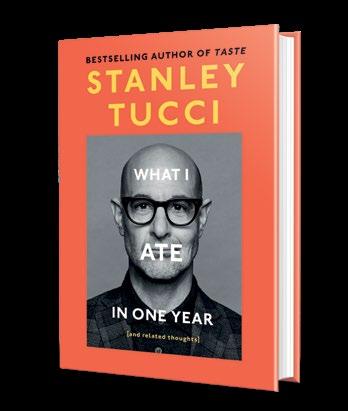
Tucci, Stanley
Gallery Books/Simon & Schuster
368 pp. | 9781646052295 | $35.00
Oct. 15, 2024 | 9781668055687
FOOD REALLY MATTERS to Stanley Tucci. After all, the actor’s breakthrough role came as a 1950s Italian American restaurateur in the 1996 film Big Night (which he co-directed with Campbell Scott). Later, he played Julia Child’s husband, Paul, in Julie & Julia. He’s published a pair of cookbooks, filmed two seasons of Searching for Italy, an Emmy Award–winning series that has Tucci eating his way around the Bel Paese (a third season will air on Nat Geo), and written a well-received memoir, Taste: My Life Through Food (2021). And that’s not even counting the videos of Tucci mixing cocktails that went viral on his social media accounts during the early days of the Covid-19 lockdown.
Now Tucci, 63, is back with a second memoir, What I Ate in One Year (and Related Thoughts) (Gallery Books/Simon & Schuster, Oct. 15), which, as the title suggests, documents 365 days of cooking, eating, travel, film work, home life, and more. Our reviewer calls it a “charming and sometimes touching glimpse into the life of an actor and gourmand.” (See the full review on p. 67.) We caught up with the peripatetic actor on Zoom from London, where he lives with his wife, Felicity Blunt, and their children. Our conversation has been edited for length and clarity.
Are you a regular diary keeper?
No, I did it for the purpose of writing the book. I have a lot of notebooks filled with thoughts, ideas, musings—but never anything consistent. Felicity is the one who suggested this, and I thought it was a great idea.
You have a busy life. Was it difficult to get in the habit of writing in the diary every single day?
At first it was, and then it just became part of what I did. I couldn’t do it every single day, but I might make a note and then backtrack a couple days. But I was pretty consistent. I really liked doing it, and now I miss it.
It forces you to reflect and not just let life rush past you. Exactly. You learn a lot by going back through your day. You learn a lot about yourself.
I pick up on a philosophy of food from the book: You like simple food, simply but well prepared. And patience is a virtue in the kitchen. Patience is a virtue in the kitchen. My mother has it. My son Nicolo has it. My wife has it. My late wife had it. I don’t have it. I’ll try to do too many things at once, as opposed to focusing on just one thing. I have patience when I’m acting or when I’m writing—I become quite forensic—but I also hate waiting. I hate waiting on a set to act, but when I’m acting, that’s fine. When I’m waiting to act, I just want to go home and cook.
Besides being impatient, what are you like in the kitchen? Do you like to be the boss? Or cook collaboratively with friends? It depends on the people and what we’re preparing. Everybody has a different way of roasting a chicken, for instance. I want to know how they do it, and I want to learn from them, or we put our heads together and figure it out. But there are some people who should never be in the kitchen with you. I mean, they don’t know how to chop a fucking piece of celery or something. I’m always like, “No, no, it’s all right. I got it. There, have a glass of wine.” They can talk to me, but they can’t talk to me too much. Otherwise, I can’t. People want to talk to you while you’re cooking, but the ones who don’t cook
don’t understand that it takes focus at certain times where you literally cannot engage in conversation or you’re going to have a really shitty meal.
And nobody wants that. You write about plenty of shitty meals in the book—bad food on the set, mediocre restaurant food. How do you deal with the disappointment?
You get annoyed because, let’s face it, it’s not cheap to eat out. You go to a place and a glass of wine is $15—why the fuck is that wine $15? I mean, we know why it’s $15, because it costs a lot of money to run a restaurant, and booze is where they make their profit. It’s an incredibly hard business. But there are people who are inventive and really understand good food and simple cooking without pretension—that’s the stuff I’m looking for. Like going to a great Japanese restaurant. There’s a real complexity to it, and yet it’s also some really, really simple stuff. It’s the quality of everything that makes a difference.
The ingredients.
The ingredients. I do find it annoying when people are putting all this stuff into one dish. You explained it for a half an hour, first of all, it had so many ingredients in it. Then I ate it, and it’s like, Did it
is a virtue in the kitchen. I don’t have it. I’ll try to do too many things at once.
need all those ingredients? I can’t taste all those ingredients. So why are they there? They’re there so you can tell me that they’re in there, and nobody else is doing that. I don’t really care. I just want it to taste good. And then you get the bill, and you’re like, Really? Am I paying you for the ingredients, or am I paying you for the amount of time it took you to tell me how many ingredients are in it?
It’s easier to stay home and cook for yourself and your family. That’s why my mother never goes out to dinner. She hates it. My father goes, “Let’s go out.” She goes, “Why?” He goes, “Well, I just thought—” “No.” I mean, it’s over, that’s it.
It seems like cooking is a family activity for you. You write about the joy of cooking with your kids, like a pesto you make with your 8-year-old son. Matteo made a wild garlic pesto—so cute. He was chopping herbs with the mezzaluna and was just so excited that it was a sharp object and he was allowed to use it. And then with the mortar and pestle, beating it to death. The more you can engage kids in stuff like that, the better.
What’s your go-to meal? The meal that
you just love to cook and to eat and want to have all the time?
Probably something really simple, like pasta with tomato, or pasta e fagioli— pasta with beans. Or minestrone soup. Or a really great fucking hamburger. A great hamburger is one of the greatest things in the world, and I couldn’t eat them for a long time after my radiation treatment. [Tucci was treated for oral cancer in 2018 and is in remission.] Now I’m able to eat them more. And I love them. I love them, but they have to have enough fat in them. I’m obsessed with the fat-to-meat ratio.
I’m with you on spaghetti and tomato sauce. I make it all the time, and it always satisfies.
I’ll have tomato sauce for breakfast, with scrambled eggs. Do you know what I mean? Not too much sauce, just a little hint of it, and then you scramble the eggs in it, and it gives you everything you need. An incredible meal in one dish.
What’s next for you? Another cookbook? Does the world need another cookbook from me? Probably not, but musings on food maybe? I don’t know. I don’t have any plans to write another book right now. But I do miss writing this one.

appear more truthful than another. Baskerville beat five other candidates. A well-documented and entertaining glimpse into one small episode in typographic history.
Alexander the Great and the Gateway to Empire Guenther, David A. | Westholme Publishing (256 pp.) | $32.50 Oct. 25, 2024 | 9781594164286
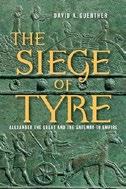
A historian focuses on a key victory that cemented the Macedonian king’s “reputation for invincibility.”
In an absorbing, meticulously researched study, Guenther hones in on Alexander’s 332 BC siege of what was once a Phoenician island—now attached to the coast of Lebanon. In hot pursuit of the Persian emperor, Darius, Alexander made the strategic move to disband the Macedonian-Greek navy, as it was no match for the powerful Persian navy, and instead concentrate on striking by land the string of Phoenician coastal towns that made, supplied, and repaired the great Persian ships. After enduring a long march into Asia Minor, then clashing with and scattering Persian troops in the battles of Granicus and Issus, Alexander moved down the Phoenician coast to subdue the home ports, from Arados to Sidon—and all except Tyre accommodated him. The Tyrians resisted and killed Alexander’s envoys, ensuring a violent outcome. The author undertakes in detail the elaborate engineering feats that Alexander and his army used to besiege the recalcitrant Tyre, starting with the “mole,” a kind of massive pier to reach the city’s walls. Despite the ingenious resistance of the Tyrians, Alexander now had a reinforced navy arrive to block the harbor, as well as the use of his catapults and rams, and perhaps “ladders” (the author rather humorously debates the various historians on the scholarly interpretation of certain ancient Greek words), to
breach the walls at last. Drawing from ancient sources as well as from modern historians, Guenther dwells extensively on the makeup of Alexander’s army and marvelous engineering for a surprisingly readable adventure. Suspense and action galore in this original, accessible study of an otherwise well-known historical personage.
Hamilton, Kate | Beacon Press (240 pp.)
$29.95 | Oct. 15, 2024 | 9780807016404

Powerful postmortem of an abusive marriage. Deconstructing the hetero-patriarchy that buttressed her toxic relationship is a weighty and confusing task, yet Hamilton does it with aplomb in this literary memoir. She does not ask for the reader’s pity as she dissects her dangerous marriage to a now ex-husband and the betrayal of those who did not believe her. How does the patriarchy uphold standards that support and normalize abuse like this? Hamilton both asks and answers that question in her honest and eye-opening story. Once readers dive into her unvarnished account, it is not easy to continue yet equally impossible to stop. Hamilton’s prose is cutting, uncomfortable, and heartbreaking. In her opening pages she asks, “Who is the monster here?” after detailing a violent outburst by her husband. She uses this thread to dissect patriarchal views that give more grace and understanding to men, even those who have proven to be brutal and cruel, and none to the women who endure their cruelty. At times, the tonal shift from intense memory recall to academic analysis can feel like being wrenched from the deep end of a pool of emotions into a lecture hall as Hamilton goes beyond personal experience to tackle the world that allowed her suffering to continue. “I am clear in my own mind that I do not tell this story to humiliate or wound,” she states. “I am trying to do something much less petty and more
important: to make visible the ways in which misogyny shapes relationships, culture, and the legal system.” Hamilton calls upon feminist authors such as Kate Chopin, Maria Carmen Machado, and Angela Carter to find her footing within her emotions. Untangling the complex threads of her narrative is no easy task, but it’s worth the effort. Reflection and honesty that will move readers to sorrow, rage, and introspection.
Hargrove, Nikkya | Algonquin (240 pp.)
$29.00 | Oct. 15, 2024 | 9781643751580
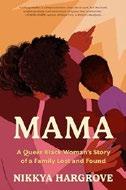
A memoir proposing a wider, more inclusive definition of family Hargrove’s candid, straightforward narrative touches numerous social issues, including addiction, incarceration, trauma recovery, and the shaky legal ground of LGBTQ+ families. When she was 24, her third half sibling was born, and Jonathan’s toxicology screening at birth placed his health, safety, and guardianship in question. Intimately familiar with her mother’s crack cocaine addiction—Hargrove was herself raised primarily by her grandparents—she was determined to give her new half brother a measure of stability away from relapses, drug raids, and volatile relationships. Persuading an aunt to sign the paperwork “on the verbal condition that I would do the heavy lifting,” the author became Jonathan’s temporary guardian. Just months later, her mother died, and Hargrove fought for permanent custody of her half brother with the reluctant support of her extended family. While this battle inevitably revived traumatic memories from her own childhood, Hargrove is most concerned here with suggesting a path forward for others who come to “family” from nontraditional starting points. Personal
reflections on the nature of caregiving, her LGBTQ+ identity, and the roots of her determination to become Jonathan’s mother intertwine with accounts of clearing bureaucratic hurdles and taxing visits with Jonathan’s biological father. In the second half of the text, Hargrove pivots to describe her efforts to construct a family and get free of her past with the help of a romantic partner. The pace accelerates at this point, whisking through years of ups and downs at a steady clip, and at times the rapid pace muffles the impact of the emotional trials and rewards the author delineates. Nonetheless, her story provides an accessible, encouraging model of how to construct a family with hope and intention. Quietly revelatory and affirming.
Hartmann, Thom | Berrett-Koehler Publishers (192 pp.) | $19.95 paper Oct. 8, 2024 | 9781523007288
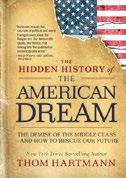
Brisk polemic exposing the 40-year conservative campaign against the social contract. Progressive radio host and self-identified “Boomer” Hartmann takes aim at the “Reagan Revolution,” arguing that since the 1980s, gains in the stability and social infrastructure around a growing middle class were intentionally reversed. He notes sharp distinctions between his own working-class upbringing and the paucity
of opportunities facing young people today, directly due to Republican gaming of the system. He argues, “They’ve been trying to undo or reverse FDR’s New Deal ever since it was put into place in the 1930s,” while tartly predicting that younger generations are finally “waking up from the fog of BS Republicans have been crop-dusting over us since 1981.”
Such occasional venting comes linked to facts: “When Reagan came into office, for example, a bit over 60 percent of all income in the United States went to middle class families; by 2020 that number had collapsed to 42 percent. Meanwhile, the income of the top 10 percent of Americans went from 29 percent in 1981 to over 50 percent today.” Punchy chapters move through subtopics including the rise of student debt, the affordable housing crisis, Americans’ medical debt burden, and more—establishing for each a narrative of fundamental protections being rolled away following the 1980s. Current activism leads to a guardedly optimistic conclusion: “The zoomers may be able to lead a rebirth of the American Dream— if enough of us from all generations get involved.” Hartmann marshals evidence well to support his sometimes heated assertions and concludes each chapter with progressive proposals to address the damage he charts, always emphasizing, “It’s going to take major and radical action to stop and then reverse the Reagan Revolution.”
Accessible primer on the roots of today’s pro-billionaire pseudo-populism.

Johnson, Chelsea Mary Elise
New York Univ. (296 pp.) | $30.00 Oct. 15, 2024 | 9781479814732

A sociologist offers an exploration of the practices and politics that inform the modern natural hair movement among Black women. In its malleability, writes Johnson, “hair almost always expresses social dynamics.” This is especially true for Black women, who learn from childhood that straightening hair is essential to “ doing Black girlhood respectably.” Drawing on her experiences and on interviews with women in the U.S., Europe, South America, and South Africa, Johnson examines the politics of Black women’s hair in the context of the modern natural hair movement. She observes that during the Jim Crow era, for example, adhering to Eurocentric ideals of beauty helped Black American women better succeed in a society created not only to serve white people (especially men) but also (white) capitalism. “Going natural” during the civil rights era and experimenting with transatlantic Afrocentric styles in the ’80s and later became a way for Black women and men to express cultural pride. Johnson traces the return to natural hair for Black American and European women during the 2010s and 2020s to a worldwide rise in xenophobia. This movement saw transitioning, the act of purging straight hair, as part of a new politics of authenticity that privileges health, wellness, and self-care. The author further suggests that the modern natural hair movement, in aligning with other global ones like the green movement, has given rise to Black-owned “naturalpreneur” businesses committed to serving Black women worldwide but also circulating profits within Black communities. Ambitious in scope, this book interweaves personal, historical, political, and transnational reflections about
Black women’s hair and beauty culture into a nuanced academic study with strong interdisciplinary appeal. A provocative study about an overlooked but important cultural movement.
Johnson, Theodore R. | Amistad/ HarperCollins (208 pp.) | $30.00 Oct. 1, 2024 | 9780063346451
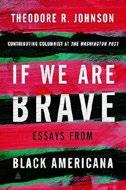
A critical examination of weak points in American democracy. Johnson, author of When the Stars Begin To Fall: Overcoming Racism and Renewing the Promise of America (2021), served as a White House Fellow, military professor, and speechwriter. From a churchgoing culture he learned that everything happens for a reason and that there is always an explanation when God’s will doesn’t make sense—“The Lord works in mysterious ways.” These credos also apply to democracy, he says. When it seems comfortable “coexisting with slavery and oppression and dispossession and state violence—well, that is just democracy working in mysterious ways.” Except for banning slavery, legal barriers to Black equality were not eliminated until the civil rights acts of the 1960s, which proved a bonanza to Republicans as most white Southern Democrats switched parties, eliminating the minority status that Republicans had held since before the New Deal. It’s no secret that Black people overwhelmingly vote Democratic and that while only half of white people identify as Republicans, they account for 95% of the party’s congressional members. There is no shortage of Black conservatives, including Johnson’s father, who advocate self-help and suspicion of government, but they rarely vote Republican. No radical, Johnson writes that America remains more or
less a land of opportunity where energetic members of its historical minority, like himself, do well, but most can’t escape traditional if extralegal pressures of hostile white institutions—police et al. Asian Americans, meanwhile, have outclassed many whites, who resent their superiority in education and income but hold them up as a “model minority.” Johnson paints a lucid picture of how minorities negotiate values we are supposed to share and reframes issues like voting and policing to reveal warning signs of problems that reasonable citizens both white and Black are nowhere near solving.
Evenhanded and astute essays on race.
Kaplan, Bruce Eric | Henry Holt (272 pp.) $28.99 | Oct. 22, 2024 | 9781250370334
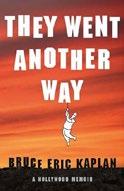
A veteran television writer and producer chronicles his struggle to get a TV show sold and into production. Kaplan’s pilot, about a woman in a relationship with a man half her age, attracts industry interest when Glenn Close signs on, then even more buzz when Close suggests Pete Davidson as her co-star. What follows is a blizzard of emails, texts, premeetings, Zoom meetings, and postmortems with the actors, their agents, and reps from streaming services and production companies. These would read as tediously as they sound, were it not for Kaplan’s wry, ironic delivery, and his wearied perspective as the pitches and counter-pitches plod on for months. Kaplan is also a New Yorker cartoonist, and his journal entries have the same snappy rhythm and pace as cartoon captions; each day’s reflections rarely run more than a few pages. Because the diary covers 2022, Kaplan notes that year’s cataclysmic events: the Russian
invasion of Ukraine, the overturning of Roe v. Wade, the pandemic. His project thus becomes “an aspirational comedy…in dystopian times.” At the same time, he writes about his everyday life with his wife and children in Los Angeles, including home repairs and recipes for vegan soups and casseroles. In the end, Showtime pulls out of the deal, and Kaplan realizes that his book is about not shooting his TV show. But even this he finds “profound,” and he achieves a certain equanimity, writing that he doesn’t “need or want anything other than what I have.” In the context of today’s Hollywood, that comes close to achieving enlightenment. Hollywood dealmaking as seen from the inside out.
Malone, Erin | MIT Press (390 pp.) $45.00 paper | Oct. 15, 2024 | 9780262548892

Giving credit to the women who designed the tools for personal connection. Technology giants have long been known for an atmosphere of sexism, with the upper tiers looking like a boys-only club. Malone, head of the interaction design program at the California College of the Arts, argues that women have always been an essential part of the tech equation, even though men reserved the spotlight—and the high-paying positions—for themselves. The “side door” for women to enter the tech industry was the field of user interface design, which called for deep skills in communication, empathy, and imagination. The company men treated the area with disdain, believing that the development of operating systems was the crucial profit driver. Malone disputes this, emphasizing that most customers
were more concerned with an interface that was simple, clear, and flexible than with programming details. The emergence of the internet called for a new generation of tools, which were mostly developed by women, including those with backgrounds in social psychology and aesthetic design. Despite their work, women were usually denied promotion into leadership positions, remaining locked in the interface field. The situation has improved in the past decade, mainly because the latest generation of female designers has included activism in their skill set. True equality and due recognition, however, are still a long way off. Malone’s book has important things to say but is a dense read, and the narrative sometimes becomes lost in technical issues. Despite the importance of its subject, the book is more for specialists than general readers. Bolstered by meticulous research, a necessary look at women who make tech work.
Mardou, Sacha | Avery (336 pp.)
$30.00 | Oct. 15, 2024 | 9780593541364
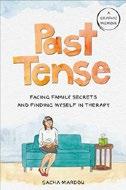
In therapy, a woman faces decades of family secrets and repressed truths. Mardou’s graphic memoir begins with a scene that is
difficult by any standards: She’s remembering the last time she saw her now-estranged father and how, as she writes, “I felt so much ambivalence just being around him.” As she goes on to reveal, Mardou’s father had been imprisoned during her childhood for sexually abusing Mardou’s stepsister, Gail. Mardou’s stepmother reconciled with him afterward, and the two went on to have two additional children—and kept them a secret from Gail. The trauma surrounding all of this serves as the launching point for Mardou’s tremendous book, in which she recounts the emotional journey she undertook, via therapy, to confront these events and heal from them. The patience with which Mardou unravels each layer of pain, betrayal, and, ultimately, forgiveness, is a marvel to behold. She is unflinchingly honest about the simple facts informing her biography and her emotional state in responding to them. Mardou traces her conversations with a pair of therapists— remarkable figures of great insight themselves—as she faces generations’ worth of repressed trauma. “I’ve decided I’m going to take this seriously and do my homework,” Mardou writes after her first therapy session. “I really need this to work. Otherwise, I’m doomed to be anxious forever.” The resulting book is an inspiration not only because of Mardou’s particular courage, but because of the path forward she offers readers: by consciously facing our individual hurts with patience and kindness for ourselves, she seems to say, we can learn to live as whole beings.
A deeply moving story about generational trauma, healing, and growth.
Trauma serves as the launching point for Mardou’s tremendous graphic memoir.
A Rosie Life in Italy: Move to Italy. Buy a Run-down Villa. What Could
Meleady, Rosie | Sourcebooks (368 pp.) | $16.99 paper Oct. 15, 2024 | 9781464222665
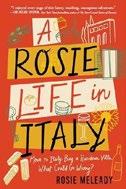
An Irish wedding planner recovers from a series of setbacks to build her dream life in Italy. Meleady was a child when she first began to dream of a big house abroad, complete with an idyllic al fresco tablescape. For decades, she remained in Ireland, built a career and a family, then lost businesses and buried her sister, continually recalibrating and postponing her dreams. Somehow, she was able to start over again and again, both emotionally and financially, finding her way into international destination wedding planning and building a business that allowed her to mount a sense of financial security. Meleady’s path to finally laying the first bricks of a life in Italy is long and winding—her children are teenagers before she finally makes a permanent move— and unfolds in a series of waves of ambition, excitement, and interruptions, alternatively inducing whiplash and slowing to a turtle’s tread. Initially, the text provides a charming antidote to the “just do it” missives and unencumbered immediacy of younger influencers or aspirational writers, peppered with relatable practicality. But Covid-19, the regulations for gatherings and business that surrounded it, and the economic havoc it wreaked erected a final barrier between Meleady and her dream. Just as Italy and the world devolved into the murk of the pandemic, so too does Meleady’s narrative. Despite hints at inner work and transformation, the author reveals little about these processes, instead filling pages with tedious details of Google searches, wine
counts, grocery shopping, and lockdown legalities. To be sure, the author is to be admired for her relentless pursuit of her dream and her adaptability in the face of such a vast number and variety of obstacles. But the author’s exacting specificity of banal occurrences hollows her text, interrupting both the plotline and the connection to the author. Sweet and mildly entertaining but rather uninspiring.
Mintz, Elliot | Dutton (304 pp.)
$32.00 | Oct. 22, 2024 | 9780593475553

A radio personality recounts the peculiar friendship he enjoyed with John Lennon and Yoko Ono. Mintz begins at a dark moment, when, soon after Lennon was killed, he is charged with inventorying the musician’s countless possessions: roomfuls of guitars, the attaché cases with which he was smitten, boxes of cassettes and their works in progress, granny glasses “in a rainbow of tinted colors.” He came into this responsibility circuitously. As a Los Angeles disc jockey, he listened to a promo of Ono’s 1971 solo album Fly and invited her to be an on-air guest. She agreed. Interestingly, Mintz writes, although he was well aware of her marriage to Lennon, “I was never a Beatles superfan.” Instead, he adds, he was more of an Elvis freak, which didn’t necessarily serve him well when, after Ono began to call him at all hours, Lennon did, too. “It was a never-ending loop,” he writes, an eccentric conversation that often found him wondering why it was he on the other end. There’s no brutal dish of the Albert Goldman trash-the-star variety, though Mintz doesn’t shy from the dark side: Lennon, he writes, could be a monster when he was drinking, and he harbored odd views: “Even though
John had smoked, ingested, or snorted just about every illegal recreational drug he could get his hands on, he was weirdly suspicious of the ones that were properly prescribed and proven efficacious.” As for Ono, she’s alternately remote and generous, instinctively mistrustful—and for good reason—of anyone who wanted a piece of her husband, as so many did. All in all, he writes, “they were a magical couple,” and it’s clear that all these years later, he misses them. A charmingly modest tale of a long brush with stardom, with all its pleasures and frustrations.
Morris, Desmond | Thames & Hudson (240 pp.) | $21.95 Oct. 29, 2024 | 9780500027813
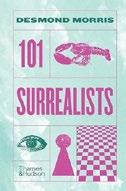
The faces of surrealism, 100 years after its founding. Morris, “one of the last surviving Surrealists,” celebrates the centenary of the groundbreaking movement by offering a concise overview of its origins in tandem with short biographies of famous and lesser-known artists. The movement officially came into being in 1924 when French poet André Breton published a manifesto that defined surrealism and linked it to a theory of creativity “free from aesthetic or moral concern.” In his introduction, the author observes that although the movement was started by writers, the term was actually coined by visual artist Pablo Picasso, who sought to explain the “realer than real” effects that he was creating through his art. Yet art historians credit Picasso’s friend, poet Guillaume Apollinaire, with creating the word because he was the first to mention it in the art criticism he published. Almost all of the individuals Morris includes are, like Picasso, visual artists, including such fellow luminaries as Joan Miró,
Frida Kahlo, and Man Ray. The only one who is not is Breton, the sole representative of literary surrealism. Among the more obscure, but no less interesting, artists Morris features are painter Leonor Fini, whom Morris calls “the highly skilled sex goddess of the surrealist movement,” collagist Georges Hugnet, and filmmaker/ artist Len Lye. In keeping with the playfully perverse nature of surrealism, the book, which contains no artist images, presents each biography in green-and-pink ink and offers a summary of each artist’s life as a set of vertically oriented notes. This delightful compendium will appeal primarily to art history buffs. A fittingly exuberant tribute to a singular art movement.
Moss, Sarah | Farrar, Straus and Giroux (320 pp.) | $27.00 Oct. 22, 2024 | 9780374614638
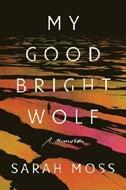
A novelist’s memoir about the relationships and memories that informed her later compulsions.
Moss remembers her mother and father as the “gods and monsters” who dominated her girlhood and taught her that “care and attention [were] scarce resources.” Yet as she tells the stories of growing up in Scotland and northwestern England, she also contests those memories with dueling voices: that of the storyteller she would become and that of the self-critical, self-loathing skeptic who often chided herself for an otherwise comfortable, privileged life. As a teen, Moss took refuge in novels by authors like Charlotte Brontë and Sylvia Plath, feminist-inflected analyses of which she interweaves into a narrative of a youth spent becoming the “clever girl” who consumed books while struggling with
an eating disorder. A university scholarship eventually took her away from a fraught home life. Success as a scholar and writer followed, yet she remained haunted by her past and, in particular, the “northern Protestant work ethic fused with second-wave feminism” exemplified by the Ph.D. mother who “fum[ed]” in suburbia. Yet in the shadows of outward good fortune, the author’s body shame continued to lurk, driving her to control her physicality with punishing diets and exercise regimens that forced hospitalization and psychiatric intervention. Though at times disturbing in the self-flagellation and personal fragmentation it depicts, Moss’ book also presents a compelling portrait of a sensitive, deeply intelligent woman struggling to reconcile a difficult emotional past with the misogyny that tainted the social and intellectual environments she inhabited.
Rich, complex reading.
Kirkus Star
Nayman, Shira | Guernica Editions (200 pp.) $21.95 paper | Oct. 31, 2024 | 9781771839167

A memoir in essays about making connections across great distances. Nayman, a clinical psychologist and a fiction and nonfiction writer, brings her storytelling skills to bear in her poignant memoir. Unfolding across standalone chapters, the book explores connections with lost friends, her children, and her mother, who continues to be a complicated character in the author’s life even years after her death. “To live is to grieve,” Nayman writes, ruminating on the deaths of close friends and both of her parents, as well as imagining the impact her own future passing will one day have on her children: “Shorelines
Contextualized by race and gender no matter where she traveled.
MY PISCES HEART
never only offer welcome; they’re ever hearkening departure.” Born in South Africa, raised in Australia, and now living in New York, Nayman is no stranger to departure, yet her sense of connection with place and people remains rich. Nayman also returns to her Jewish heritage, inspiring thoughtful interactions with writers such as Joseph Roth and with ideas like postmemory, a term coined by Marianne Hirsch to describe how trauma transmits between generations. Through the exploration of Hirsh’s idea, Nayman examines her relationship with her mother in a brilliant chapter that straddles fiction and nonfiction. In artful prose and well-crafted stories about the different relationships with places and people that she has held throughout her life, Nayman shows how “full-bodied relationships are like works of art, defined by hiddenness and shadow, by the bits of emptiness and silence, by the unsayable.”
A dazzling memoir that artfully renders the importance of connection across time and space.
Neal, Jennifer | Catapult (368 pp.)
$28.00 | Oct. 22, 2024 | 9781646221844

A first-person examination of immigration, racism, and oppression around the world.
Neal, author of the novel Notes on Her Color, has
traveled to more than 40 countries, where, she writes, “race and gender have never failed to be a factor in how I was contextualized, and how I in turn investigated my surroundings.” Her family moved every several years due to her father’s banking job. One result of her peripatetic childhood was the habit of discarding gifts from friends in other places so as not to feel attached. The book is divided into four parts, each dedicated to a country in which the author has lived as an adult. The sections are prefaced with brief looks at her astrological chart, e.g., “A standout characteristic of those born under the sun sign of Aquarius is their unwillingness to follow the beaten track.” Part 1 takes place in Kudamatsu, Japan, where Neal teaches English for a year. In addition to detailing various aspects of Japan’s history of racism, the author recalls being gifted a basket of skin-bleaching product. She then relocates to Chicago to study art; there, she experiences “white-liberalism shock. White- everything shock.” This is followed by eight years in Australia, where she moves after falling in love with an older white man she meets online. Neal recounts mixed reactions to their interracial relationship—“Love seemed to be the last thing on anyone’s mind except for mine.” The final section takes place in Berlin, where the author has lived since 2016. Neal’s writing can sometimes be dry, but her questing narrative is driven by this powerful point: “Black life enriches every corner of the world. More importantly, Black life deserves to exist in any part of the world, for no reason whatsoever.”
A welcome and fresh perspective on global travel.

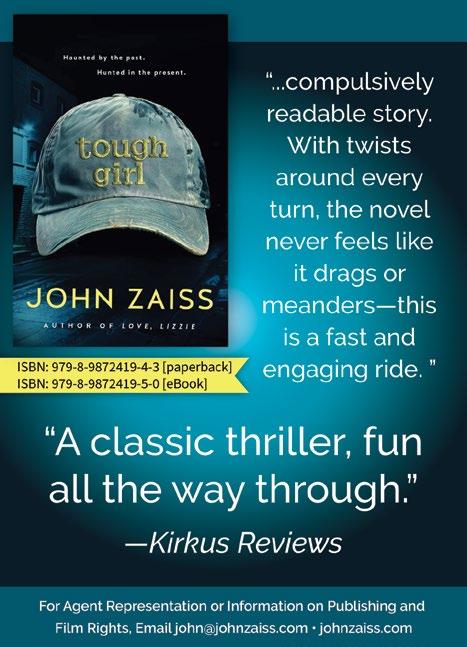

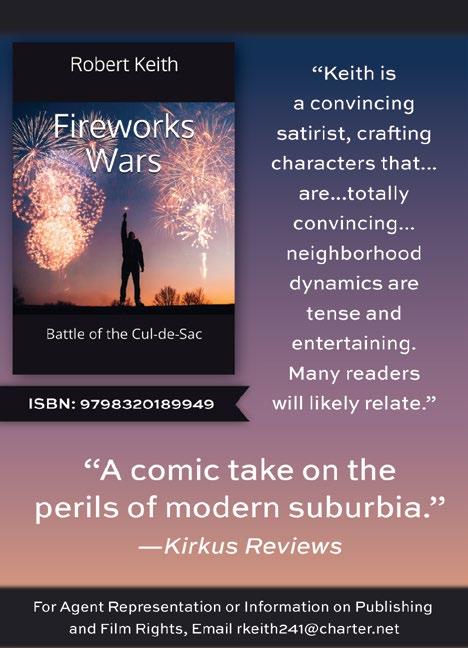
Three new audiobook memoirs showcase women in the public eye—and the threats they face.
BY MARION WINIK
THE THREE MEMOIRS I listened to this month all include a violent crime or the threat of one, and two of the three ruminate on Gavin de Becker’s message in The Gift of Fear : The best way to stay safe is to lean hard into your first intuition of danger. It comes up in Griffin Dunne’s The Friday Afternoon Club: A Family Memoir (Penguin Random House Audio, 12 hours and 18 minutes) because the moment that he met his sister Dominique’s boyfriend, who would become her killer, he was sure the guy was a creep but hid it because he wanted to please his sister, a fledgling actor who appeared in
Poltergeist. The book opens with her death and finishes with an account of the trial, often quoting his father Dominick Dunne’s famous articles about it in Vanity Fair. In between, Dunne regales us with one terrific story after another, beginning with his extraordinary childhood growing up among the literati and glitterati of the 1970s, including his aunt and uncle, Joan Didion and John Gregory Dunne, and everybody from Frank Sinatra and Truman Capote to the author’s longtime best friend, Carrie Fisher. Accounts of the endless bad luck that plagued his prep
school years and his career as an actor and film producer are filled with snappy writing and black humor, and his delivery brings it home. You’ll love him.
You’d have to be made of stone not to feel for Christine Blasey Ford, author and narrator of One Way Back (Macmillan Audio, 8 hours and 44 minutes), who unwittingly invited a reign of terror into her life when she decided it was her civic duty to share, during his Supreme Court confirmation process, the long-ago experience she’d had with Brett Kavanaugh. The misogynistic fury unleashed by her testimony fueled an avalanche of threats and hate mail, along with an almost equally disturbing number of letters from abuse survivors who reached out to tell their own stories and thank her. By the time someone gave her de Becker’s book, she was loath to read it: “I already have the gift of fear a thousand times over,” she writes. The audiobook of her memoir includes clips from her testimony, which even Donald Trump initially termed “credible.” But after Kavanaugh was confirmed in spite of it, the retaliation went into overdrive. Blasey Ford is a surfer; a scientist; a Metallica fan; a make-upfree, hoodie-wearing California mom; and it’s

almost your civic duty to let her tell you her story, which at this point has been spun and respun past recognition. Michigan governor Gretchen Whitmer doesn’t touch on Gavin de Becker, but she too is a victim of sexual assault (she was raped in college, a fact she first revealed on the floor of the state legislature as part of her fight for reproductive rights). Living in a world of death threats and kidnapping plots, she left her naïveté behind long ago. But whether it’s to a gun fight or a knife fight, “Big Gretch” always brings a sense of humor (and 24-hour security.) Her upbeat techniques for dealing with adversity are laid out in chapters titled “Don’t Let the Bullies Get You Down,” “Run Toward the Fire,” and “Never Give Up.” True Gretch: What I’ve Learned About Life, Leadership, and Everything in Between (Simon & Schuster Audio, 3 hours and 21 minutes) is upbeat, lively, and full of good advice. Whitmer’s Michigan accent isn’t too different from the parody version Cecily Strong delivered on SNL —and that clip is included here, along with other live audio from her inspiring career.
Marion Winik hosts NPR’s The Weekly Reader podcast.
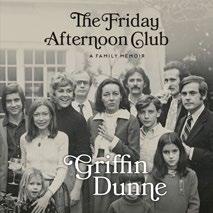

Cat Bohannon and Kashmir Hill are among the authors in the running for the Royal Society’s award.
The Royal Society has announced the finalists for its Trivedi Science Book Prize, the annual U.K. award that “celebrates the best popular science writing from across the globe.”
Cat Bohannon made the shortlist for Eve: How the Female Body Drove 200 Million Years of Human Evolution, which was also a finalist for the Women’s Prize for Non-Fiction. Kashmir Hill was named a finalist for Your Face Belongs to Us: A Tale of AI, a Secretive Startup, and the End of Privacy Tom Chivers was shortlisted for Everything Is Predictable: How Bayesian Statistics Explain Our World, alongside Gísli Pálsson for The Last of Its Kind:
The Search for the Great Auk and the Discovery of Extinction. Also named finalists were Venki Ramakrishnan for Why We Die: The New Science of Aging and the Quest for Immortality and Kelly and Zach Weinersmith for A City on Mars: Can We Settle Space, Should We Settle Space, and Have We Really Thought This Through?
Adrian Smith, president of the Royal Society, said in a statement, “Each of this year’s shortlisted books is a testament to both the wonders of science and the art of writing and bring these fascinating and varied areas of enquiry and discovery to curious readers everywhere.”
The winner of this year’s award will be announced on Oct. 24.—M.S.

For more great science books, visit Kirkus online.


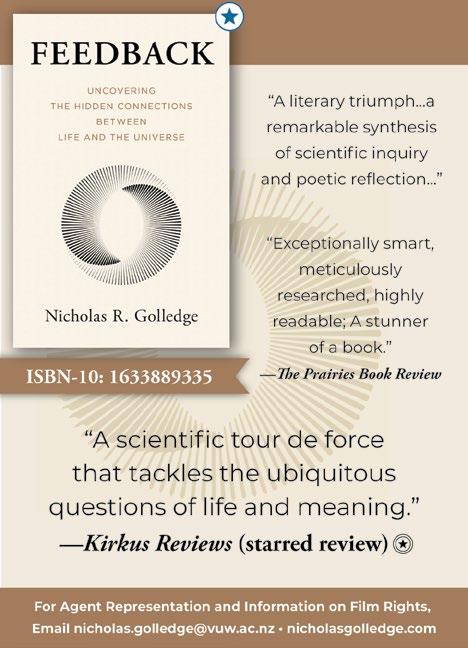
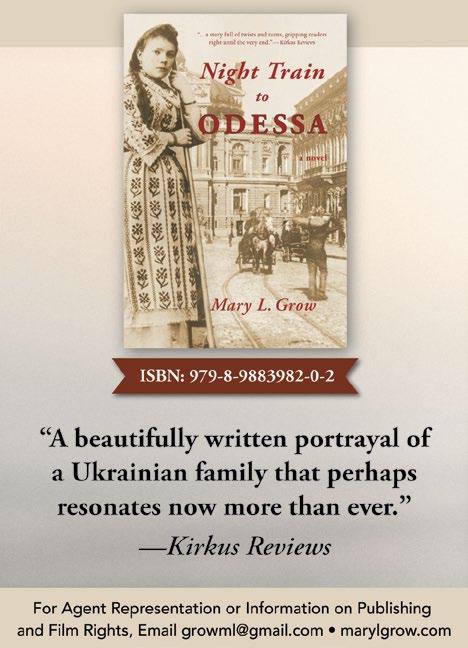
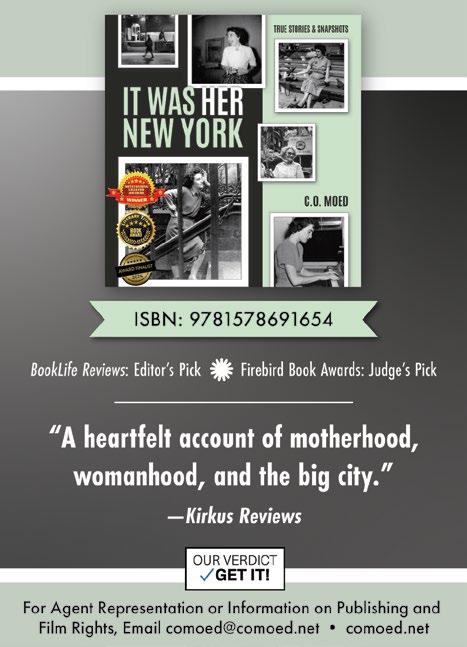

The actor’s Dare I Say It will be published by Crown next year.
Naomi Watts will explore menopause in a new book, People magazine reports. Crown will publish the actor’s Dare I Say It: Everything I Wish I’d Known About Menopause next year. The press describes the book as “a frank, funny and informative guide to menopause and aging.”
Watts rose to stardom after her performance in David Lynch’s 2001 film, Mulholland Drive, and later earned Oscar nominations for her roles in the movies 21 Grams and The Impossible. She was recently nominated for an Emmy Award for her performance as Babe Paley in the series Feud: Capote vs. the Swans Crown says that the book was inspired by

For more books on menopause, visit Kirkus online.
Watts’ realization that she was “on the brink of menopause” when she was 36.
“This is the book Naomi Watts wishes she had when she first started experiencing symptoms,” the publisher says. “Like sitting down over coffee and having an intimate chat with your girlfriend, Dare I Say It blends funny and poignant stories from Naomi and her friends with advice from doctors, hormone experts, and nutritionists to take the secrecy and shame out of menopause and aging.”
Watts announced her new book on Instagram, writing, “We should all hold our heads high. We are older, we are wiser, and we are NOT DONE!! We’ve earned our STRIPES.”
Dare I Say It is slated for publication on Jan. 21, 2025.—M.S.
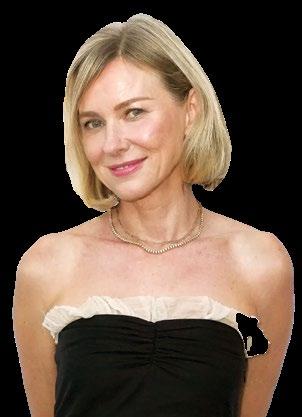
Pelosi, Nancy | Simon & Schuster (304 pp.)
$30.00 | Aug. 6, 2024 | 9781668048047

The former Speaker of the House offers a frontrow perspective on landmark legislation, showcasing her pivotal role across decades in the U.S. House of Representatives. Pelosi frames her bracing yet keenly instructive political memoir around key tenets of leadership, illustrating how she has effectively navigated global, domestic, and career challenges throughout her extensive tenure in the U.S. House. Setting the stage, Pelosi recounts the harrowing ordeal when an intruder, targeting her, brutally attacked her husband Paul in their San Francisco home. This incident starkly exemplifies the violent polarization that has intensified under Donald Trump’s influence. And Pelosi has much to say about Trump, addressing not only his erratic and disreputable behavior during his presidency and the events surrounding the Jan. 6, 2021, insurrection, but perhaps most consequentially his role in undermining constructive bipartisan legislation within both congressional chambers. She writes, “While some of us may have frequently disagreed over the years, there’s generally far more mutual respect in our chamber than the public is aware of. That is, there was until recently, when Trump eroded that spirit and diminished bipartisanship.” Distinguishing her narrative from typical political memoirs, Pelosi illuminates the intricacies of lawmaking and the diplomatic leadership required for legislative success. She details her experiences under six presidential administrations, from George H.W. Bush to Joe Biden, as one of the most powerful women holding government office, bravely confronting misogyny and Republican demonization throughout her career. She reflects on various
seminal moments, from her opposition to the Iraq War—“the most destabilizing mistake in recent American history”—to her instrumental role in passing landmark reforms like the Affordable Care Act and the Dodd-Frank Act, tenaciously asserting, “I have won nearly all of the legislative battles that I started—and those that I haven’t I characterize simply as ‘not yet achieved.’” A shrewd portrait of political leadership, offering invaluable insights into wielding power effectively in Congress.
Rekdal, Paisley | Norton (304 pp.) | $22.99 paper | Oct. 22, 2024 | 9780393881981
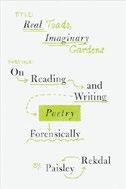
A professor’s guide to understanding the craft of poetry.
For Rekdal, all poems, regardless of form or any other apparently defining feature, require individuals to pay “conscious attention to how [they] think about and use language.” Readers must therefore dispense with interpretations they may bring to a poem and instead become literary “detective[s].” To work toward that end, she dedicates each chapter to in-depth discussions of poetic elements—diction, rhyme, meter, etc.—and to what she calls “forensic” analyses of those elements that she accomplishes by examining works by such diverse poets as François Villon and Robert Hayden. What sets Rekdal’s method apart from simple close reading is that it focuses on how meaning—in the form of poetic “evidence”—accrues
for individual readers. This gives insight into the way that poets combine elements for a particular effect. The author further suggests that forensic ladder-style readings give readers the space to question themselves and their own observations (for example, why they may be drawn to certain images or words). In this context, even “red herring” misreadings are useful for the way they help individuals learn to navigate the polysemic complexities of poetry and become more skilled reader-detectives. To help individuals better understand—and wrestle with more meaningfully—the poetic elements she brings to the fore, Rekdal offers exercises and a selected list of poems to consider at the end of each chapter and a comprehensive glossary of poetic terms. This meticulously crafted guidebook will appeal not only to teachers seeking to educate beginning students of poetry but also anyone seeking to understand the intimate and complex connection between poets and their readers. Wise words about how we can become better readers.
Roberts, Eric with Sam Kashner St. Martin’s (304 pp.) | $30.00 Sept. 17, 2024 | 9781250275325

The character actor recounts five bumpy decades in Hollywood. Best known as the brother of toothy megastar Julia (née Julie), the elder Roberts has racked up quite a reputation in the business, as
Pelosi frames her keenly instructive political memoir around key tenets of leadership.
much for bad behavior as for his actor’s craft. First he logged time in New York, working, unhappily, as a waiter while auditioning for roles, finally landing a bit part in a soap opera, Another World —and losing it over a longtime addiction to cocaine. “I don’t know everything that I did wrong, but to do a soap opera, you really have to have your shit together,” he writes. He didn’t, but being fired opened up other roles, and soon he made star turns in films such as The Pope of Greenwich Village and Runaway Train. In them, Roberts allows, he interpreted his characters in ways that clashed with the director’s vision: instead of playing Paulie as a tough mobster in Pope, he played him as a dimwit with big dreams; then, in Runaway Train, he insistently played another dimwit, this one doing time for statutory rape, leaving Jon Voight to run with his character as a ruthless murderer. Roberts’ longtime drug use took its toll; as he writes, “I’m probably the only actor in Los Angeles who’s appeared on both Celebrity Ghost Stories and Celebrity Rehab, which is funny because it’s been a long time since I felt like a celebrity.” Sure to make family holiday get-togethers tense are frequent swipes at Julia: she’s a movie star, he writes dismissively, while he’s an actor. Of interest to budding thespians is his account of how, given sweeping changes in the movie business, he’s been making 100 films (mostly of the Lifetime variety) a year but is barely scraping by financially, about which he remarks, “I’m doing penance for how difficult I was to work with and to be around.”
A refreshingly honest apologia.
Fabro:
Rowell, Margit | The Monacelli Press (248 pp.)
$75.00 | Oct. 22, 2024 | 9781580936118

curator Rowell if she “would edit an anthology in English of his lectures and writings.” Rowell agreed to participate but felt it would have been better “to write an illustrated book that prioritized his sculpture, at the same time shedding light on the thinking behind it.” Before the project got going, Fabro died. To honor his achievement, Rowell has produced this volume, in which she draws from the many interviews Fabro granted to her and others to “clarify the mysterious beauties and infinite complexities of Fabro’s art.” In this amply illustrated coffee-table book, Rowell charts Fabro’s career, from formative influences such as the writings of Locke and Rousseau to his two-year 1960s “moment” as an adherent of Arte Povera, characterized by “a drive to oppose the currents of consumerism and industrialization.” Subsequent decades included a period in which he incorporated Wittgenstein’s definition of tautology into works involving “commonplace things that engage the senses directly”; his series of Piedi (Feet) 1968-73, “among his best-known sculptures, singled out for their unclassifiable grotesquery” and intended “to reinvent the traditional premises of sculpture by attacking its own conventions”; and later experiments such as “hanging stone sculptures in the air, setting them on a pitched diagonal suggesting imminent fall, or even sliding down stairways, accentuating a precariousness and the loss of sculpture’s generic stability.” Rowell, a passionate guide, provides relatively little analysis but describes Fabro’s works and influences in considerable detail. She writes that Fabro’s work demonstrated “a range of diversity and complexity rarely seen in a single artist.” Readers of this handsome volume will understand why. An excellent introduction to a 20th-century sculptor who deserves to be better known.
Schmiesing, Ann | Yale Univ. (360 pp.)
$35.00 | Oct. 29, 2024 | 9780300221756

A n art historian chronicles the career of a celebrated sculptor.
Two decades ago, Italian sculptor Fabro (1936-2007) asked

The real Brothers Grimm are rescued from Disneyfication and myth. The timeless fairy tales Jacob and Wilhelm Grimm collected, nurtured, and published have survived to become part of the world’s popular and literary canon. Not so a sense of who the Grimms were and the breadth of what they achieved. Many of the works they published beyond the tales are largely forgotten. Few know of their extensive, often groundbreaking work on mythology and medieval literature, on legends, on a comprehensive German dictionary, Jacob’s scholarship on grammar, or the cultural significance they attached to their various projects. In her thorough, densely detailed biography, Schmiesing restores them to prominence. She places the Brothers Grimm in the context of a tumultuous era preceding 19th-century German unification, exploring the exceptionally close brothers’ personal lives, accomplishments, and striking inconsistencies. For much of the book’s length, the tales take center stage. The surprise is that the Grimms assembled these stories not from peasants telling folktales in the field, but from educated young women, whose recalled narratives the brothers sometimes reworked, not always remembering their own dictum that editing should be “a gentle nurturing that preserves the organic nature of the text.” The Grimms recovered many now-famous stories, wishing to preserve them before they were lost to the forces of urbanization, industrialization, and war. As Schmiesing demonstrates, the aim was not simply to preserve the stories and traditions, but to reveal how they had descended (in their view) from a vast store of
ancient epic literature—the collective voice of a people. As such, the tales came to be seen by some as “dangerous,” reflecting a nationalistic fervor and image of Germanness that was “too easily appropriated by Nazi ideology.” Yet, as the author underscores, the Grimms were scholars of high aspirations, not ideologues. A magisterial, if occasionally overfurnished, rendering of the Grimms’ lives.
Schreier, Jason | Grand Central Publishing (384 pp.) | $27.00 Oct. 8, 2024 | 9781538725429
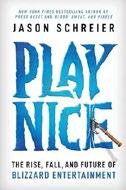
Chronicling the ups and downs of a popular video game empire. Beginning with the friendship and shared video game obsession of two UCLA tech buddies, Allen Adham and Mike Morhaime, who in 1991 founded a video game company called Silicon & Synapse, Bloomberg News journalist Schreier astutely charts the evolution of Blizzard Entertainment, whose hits like World of Warcraft and others put the entertainment developer on the gaming map. Though originality during the company’s early days was challenging to achieve, eventually, after numerous name changes and the development and immense popularity of Warcraft and its spawned sequels, Blizzard catapulted into the tech gaming arena. The ensuing contract negotiations, acquisitions, and mergers, namely with Activision, ushered the company
forward, but those progressions came preloaded with pitfalls. Schreier doesn’t overlook or sugarcoat the less savory details of Blizzard’s sketchy “frat house” corporate culture, its “aura of secrecy,” its questionable office politics and philosophies, or how its games like Diablo and StarCraft suffered sagging sales. The author also digs into the scandal surrounding Morhaime, Blizzard’s president for two decades, who would abruptly leave to start his own company.
A frequent documentarian of the gaming industry, Schreier cleverly incorporates commentary from original Silicon & Synapse programmers, tech experts, executives, game programmers, and Blizzard employees themselves to create a well-rounded image of the company as well as the grave mistakes costing the company its reputation, despite being purchased by Microsoft in 2023 in an acquisition lauded as the largest in tech and video game history.
A thorough, well-researched report on the evolution of Blizzard Entertainment.
Seaman, Donna | Ode Books (150 pp.)
$13.95 paper | Nov. 5, 2024 | 9781734643565
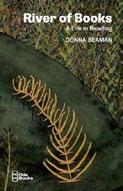
A meditation on reading and its redemptive powers. “I didn’t devote myself to reading because I was instructed to or because it was supposed to be good for us, like vegetables, which I also devour,” writes Seaman of her formative years. “I read because reading was a way to escape
A “constant reader” generously advocates for a wide diet of literature.
RIVER OF BOOKS
the chaos and the pressure and to make sense of it.” A compulsive reader of the cereal box and matchbook variety, Seaman, an editor at Booklist magazine, chases down madeleines and Rosebud sleds in long-forgotten books from her childhood, such as a copy of Chinese Fairy Tales buried away in her parents’ basement, and exalts in memories of early heroes and heroines (“Jo March was my idol, as she was for so many bookish girls”).
In later youth Seaman turns from characters to their creators as her chief source of fascination, the idea gaining on her that she, too, might become one of the world’s storytellers, if one of the disaffected teenage variety, cutting class with a book and a joint. Art school in the Midwest introduced her to new books and new readers, from Irish epics to difficult modernist novels; moving to the bookishly scruffy city of Chicago, home to Studs Terkel and Studs Lonigan, introduced her to other kinds of readers, among them the shadowy figures who haunted the “porn rags” section of a bookstore at which she worked. All along, Seaman’s life is punctuated by books, an ocean of Roth and Sontag and Woolf and Chekhov. A “constant reader” who generously advocates for a wide diet of literature, from novels to poetry to narrative nonfiction to essays and all that lie between, Seaman counsels that “the more varied our reading, the more detailed, intricate, and vital our perceptions become.”
A lively and entertaining contribution to the shelf of books about books.
Singer, Peter | Princeton Univ. (128 pp.) $9.95 | Oct. 22, 2024 | 9780691231686

The noted animal-rights ethicist and activist delivers a plea to leave Meleagris gallopavo off the holiday table. For decades, in league with Francis Moore
Lappé and other advocates of plant-based diets, Singer has been writing on the moral standing of animals and their right to live free of pain and terror. That would certainly not apply to the “46 million turkeys killed annually for Thanksgiving dinners,” which, by his account, are raised under appalling industrial conditions until they are “spent,” no longer capable of reproduction, at which point they’re marched off to slaughter. In that killing process, he adds, the indignity continues: sometimes, hung upside down so roughly that their legs are broken, their throats are slit; increasingly, and perhaps even more horrifically, they’re killed by having their holding chambers heated until they succumb to heatstroke. Singer notes that these methods are pretty well uniquely American, since most developed countries, and certainly those in Europe, require that animals be humanely killed, while American producers are subject to no such scruples. “I take the utilitarian view that the right action is the one that does the most to reduce pain and suffering, and increase pleasure and happiness, for all beings capable of having those experiences—in other words, for all sentient beings,” Singer explains. The reader may be shocked enough by his descriptions to adopt the same view, but if not, Singer counsels that the least one can do, if bent on eating turkey at the holidays, is to buy a bird that has been humanely farm-raised and killed— adding, “expect to pay much more for it.” For those willing to go further, he offers recipes for vegetable and tofu dishes that are both appealing and not especially challenging to prepare.
A well-considered exhortation to give a thought to a badly treated bird.

Slate, Jenny | Little, Brown (240 pp.)
$29.00 | Oct. 22, 2024 | 9780316263931

An actor and comedian tells the story of her journey from being an unpaired “animal” to a “new mammal mother” in love. After Slate completed her first book, “the issue of finding a partner… never rested and never allowed rest for [her] either.” Senses heightened, she had stepped into her most animal self and was on a quest to “fulfill [her] mammal instincts.” Loneliness and emotional vulnerability made her seek connection with neighborhood dogs and insights from books that promised to bring soulmates. When love did finally find her, the anxiety that he would reject her for being herself and “drinking tequila on a Saturday afternoon…then [having] a bath with my friend” was intense. After the pair became a couple and Slate became pregnant with the baby she called “the lifeform,” her neuroses— which the author mocks through an imaginary session with a psychologist— went into overdrive. Yet even as she wrestled with her fears, Slate also discovered that the body that was so often a “bay of doubt” was also becoming a “harbor of well-being” for the life-form to which she was attached. Then, during a time of “plague and disruption,” the author “exploded [her] vagina” to give birth, becoming not only a mother, but a “mammal with a soul that [was] born anew every day.” Though still haunted by a “purple-dark hole marking me in the afternoons,” Slate had become secure enough in the “nest” she had built for herself to see the hole more as a “bluish egg-thing” portending possibility. At times whimsical in its flights of fancy and always surprising in the moments of lyrical grace it offers, Slate’s book celebrates the transformative power of surrendering to love and life. Delightfully offbeat and unexpectedly moving.
Sonnet | Grand Central Publishing (288 pp.) $28.00 | Sept. 17, 2024 | 9781538767504

A British professional career woman details her adventurous personal life as a sexual submissive.
In her provocative memoir, Sonnet, a pseudonymously named businesswoman based in London and New York, celebrates her identity as a sexual submissive. As a child, the author recounts fetishizing the Bible stories that her religious mother read to her at bedtime. Her interest in erotic pain, punishment, and consensual subservience expanded as she grew older. Her memoir, an erotically charged journey of sexual submission, chronicles her unabashed arousal and sexual gratification involving “total, willing surrender,” humiliation, and sexual shame through active, positive submission. Through graphically unconstrained, conversational prose, Sonnet describes episodes of “happy deviance” that had a calming and empowering effect on the rest of her life, which, she admits, isn’t all about sex, kink, and depravity, as media portrayals of BDSM roles tend to depict. Meeting her unassumingly “cherubic” boyfriend Max changed her life as he would escort her down “a rabbit hole of kink” as they got to know each other, fell in love, became longtime BDSM partners, enjoyed polyamorous omnisexual adventures, and made her deviant erotic submission fantasies come to vivid life. Split into three sections, the book addresses the evolution of the author’s mind and how it became a key component to unlocking the pleasure centers of her body and how she perceived her desires. Other sections detail how her body and soul connected to issues of identity, belonging, self-love, consensuality, and community. These revelations are interwoven into explicitly graphic details, making the memoir strikingly candid but not for every taste. The author escorts readers into the boudoirs, dungeons, bathrooms, and play spaces of
>>>
Exploring the genealogy of a Black Appalachian family—and the foods it cooked.
BY LISA KENNEDY
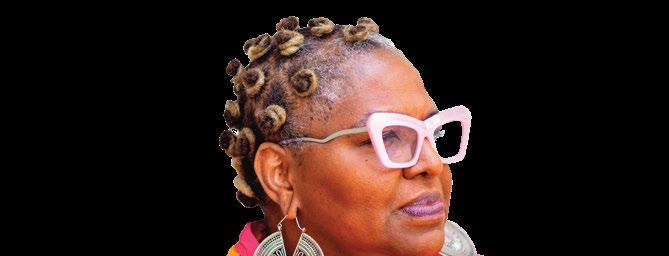
CRYSTAL WILKINSON KNOWS that cooking is intergenerational; it’s legacy and séance. The spirits haunting her delectable culinary memoir, Praisesong for the Kitchen Ghosts: Stories and Recipes From Five Generations of Black Country Cooks (Clarkson Potter, Jan. 23), include fourth great-grandmother Grandma Aggy and great-grandmother Lillie Wilkinson. And then there’s her grandmother, Christine. Wilkinson’s mother, Dorsie, struggled with mental illness, so Granny Christine, along with her husband, Silas, raised Wilkinson on 64 acres of wooded land in Indian Creek, Kentucky, in Appalachia. Or Affrilachia, as poet Frank X Walker dubbed the loamy rural environs. Wilkinson was part of the Affrilachian Poets Collective that Walker founded in 1991 to celebrate the Black denizens of the storied region—but also to counter their erasure.
Wilkinson, former poet laureate of Kentucky, O. Henry Prize winner, and novelist, hopped on a video call to discuss how Praisesong came to be; the conversation has been edited for length and clarity.

can meet content. A way of stacking one thing on another for a cumulative effect versus thinking about a more linear narrative. So, I think the mosaic and the fractured narrative is a perfectly appropriate form for the memoir. My next book is going to be similarly fragmented.
them into more contemporary recipes that people can actually cook from? We’ll work with you on that.” And I was like, “Mmm, OK.”
OK, folks are coming over for dinner; they hail from West Virginia. What should I make?
Greens are always good.
Well, you do have a killer recipe for meatless greens. But chicken and dumplings has become a go-to dish for you, which is funny for a onetime vegetarian.
It’s not in the book, but I also used to do some really good, soulful cooking with tofu. I make chicken dumplings so much now because all those years, I tried my damnedest
to make chicken and dumplings. I would make something that was…edible.
In many ways, the book defies a recipe. But you teach writing, so for someone interested in memoir, what would the recipe be?
Last spring I taught a class in fractured narrative, or hybridity. I think that’s kind of the way I’ve always written. I love the short story. I love a fragmented novel, or a novel in stories. There are ways that form
Fiction or nonfiction?
Nonfiction. It’s about my mother. You know, I sort of resisted the cookbook part of [Praisesong]. My intention was to have the recipes appear as my grandmother spoke them, within the narrative of each chapter, and not pull them out. Coming from the food world, my editor said, “Don’t you want people to cook from the book, Crystal?” I said, “Mmm, if they want to.”
“Well, wouldn’t it be great if we hired a food tester, tested these out, and turned
It’s a gorgeous book. We had such a creative team. They were all women of color that worked on the book—the photography, the props, everything. They had me in tears every five minutes. I had talked to the prop person, and she asked me what I felt were little random questions— Would your grandmother have done this or done that? She read the book, she took everything I said and went around to antique shops to find [things] like the yellow bowl that is an exact replica of my grandmother’s bowl. I brought my grandma’s dress with me to New York, and the way that they hung
it up with lace behind it—it was amazing.
The production design really meets your prose, your poetry.
I felt like the kitchen ghosts were present even when they were cooking the food to take the pictures. It was work, yes, but it was such a spiritual experience, too.
You often mention your cousins in the book. What have been their reactions?
The highest compliment was when one of my older cousins said, basically—and this is my word—You are our griot. “You are the keeper. You keep Granny and Granddaddy alive. Even the ones beyond them, you kept them alive.”
This book inspires readers to come to you with their own family stories. Has there been a reaction you just know you’re never going to forget?
I’ve been on book tours before this one, but I don’t think that I’ve ever been so tired. Every stop, there were tears. People would come up and wouldn’t even be able to say anything. We would just hold hands. And that was every night for 30 days. It was really intense, but it also let me know that all things are possible. Meaning that I’ve always kind of felt isolated in this body—with this particular voice, with this particular twang, being from Appalachia, being Black in a mostly white area. But the reception as I went across the country let me know how really universal human experiences are. There was an understanding that this book and the research that I
did, along with the genealogical part of it, the personal part of it, are very much in the conversation in this country, especially now with JD Vance and all that. Is that Appalachia, or is this Appalachia, or are they both Appalachia? I feel like this book helps us to be able to continue to have a conversation. There’s no monolith. There’s not a
one-eyed region or a one-eyed people. We’re multitudes. We are multitudes
You’ve described your childhood as “idyllic.” Which is striking because your mother struggled with mental illness, so your grandparents raised you. Some people, would read “idyllic” and think, Yeah, but.
I felt like the kitchen ghosts were present even when they were cooking the food to take the pictures.
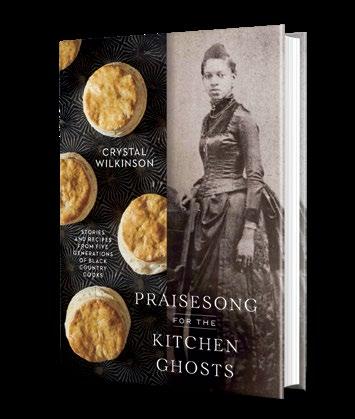
I think we all have that Yeah, but.… I wouldn’t be a writer, I don’t think, if I hadn’t been raised by my grandparents in that particular way. You know, mother loss was there. So, my mother— where she was and what was going on with her, which was a big secret—was always at the back of my mind. But in front of me was a creek and minnows and trees, and I would make a pilgrimage to go talk to the cows (my grandfather had milk cows) and go see the pigs. A lot of this helped fuel my imagination.
When did you know that you wanted to write?
Early on, I was curious. I either wanted to write or draw. I did both. I don’t think I tell many people this, but my scholarship to college was in visual arts. I changed to journalism because I wanted to be a writer. That was my primary love: books. And my grandmother read to me every night. She always told the story that after I had read all the books in the house, I started to write my own. I remember not even being able to write and her saying, “Well, what would happen next?” And me telling her the story and her writing it down.
So she’s a writer’s room ghost, too. OK, so which vegetable shortening do you use?
I probably use Crisco most often. I’ve used some shortenings from the health food store that I think are better for you. But they’re not better for the biscuits.
Lisa Kennedy writes for the New York Times , Variety, and the Denver Post .
her exhibitionistic life as a woman dedicated to BDSM servitude, encouraging readers not to make snap judgments about kinky folks and to celebrate, as she does, everyone’s “beautiful weirdness— which is usually not so very weird at all.” An intense and unapologetically sex-positive self-portrait.
Swett, Benjamin | New York Review Books (224 pp.) | $18.95 paper Oct. 15, 2024 | 9781681378633

A photographer known for his evocative portraits of urban trees writes both mystically and matter-of-factly about the art form.
“What I see through the lens of my camera, the picture I take, is just what is there and not what is not,” Swett writes at the end of this brief memoir and meditation. It’s a statement as elusive—and as meaningful—as Miles Davis’ observation that the silences in music are as important as the notes, but it works, perhaps more so than an early moment in which Swett and friends ponder “the arbitrariness of any of our constructed realities.” Peppering his pages with photographs from both family albums and his portfolio, Swett celebrates his aspirational father, who first put a camera in his son’s hands even while taking not entirely masterful art images as he worked for years as a photojournalist (“My father wasn’t fast enough on the focus and the birds, zooming around on their own courses, came out as hazy
ideas rather than fast facts”). Though his father never enjoyed personal renown, he serves as a fine example of a work ethic and a practice that made something memorable of “the heavy, high-priced hunk of glass and metal that we call a camera.” That hunk of glass and metal, of course, has been an object of adoration—and plenty of shoptalk—for generations of photographers. On that note, and worth plenty of conversations among photographers now, Swett questions the use of the cell phone as a camera, for even as he does so himself, he allows that “it’s a bit creepy to think that every shot I take on my iPhone has been pre-visualized by an algorithm.”
A provocative book to shelve alongside Sontag, Barthes, Cartier-Bresson, and other philosophers of the image.
Thomas, Hank | The Monacelli Press (360 pp.) $64.95 | Oct. 15, 2024 | 9781580936620

Artists transform public space. Inspired by Franklin D. Roosevelt’s 1941 proclamation of four basic American freedoms (freedom of speech, freedom of worship, freedom from war, freedom from fear) and Norman Rockwell’s Four Freedoms paintings, the For Freedoms organization, an artist-led coalition, was created in 2016 by Hank Willis Thomas, Eric Gottesman, Wyatt Gallery, and Michelle Woo, aiming to integrate artists’ voices into the political conversation. “What is the role of art in a democracy?” they asked, a question that seemed newly urgent after the 2016 election. Along with exhibitions and artist-led town hall meetings, the group
Swett celebrates the “heavy, high-priced hunk of glass and metal that we call a camera.”
engaged artists to create hundreds of billboards all across the country that, the artists hoped, would inspire in viewers a way to “better understand themselves, the world, and the artist’s experience.” Color photographs of billboards mounted between 2016 and 2023, along with textual commentary, convey hope, despair, and a call to activism—including the powerful act of voting. “Not voting is actually voting,” one billboard, erected in Flint, Michigan, warns. “Grab em by the Ballots” is the message on another. Many billboards respond to hot-button issues, including reproductive rights, climate change, racism, violence against Asians, indigenous rights, antisemitism, police brutality, gun violence, health care, and immigration: “Every Refugee Boat Is a Mayflower” announces one billboard in Maine. The words “Thoughts” and “Prayers” are superimposed on images of guns on a billboard in Cheyenne, Wyoming. “Your Body Your Business” appears in St. Louis, Missouri. “Think Science,” advises a billboard in Kentucky. The 2020 Awakening campaign was “a culmination of communal artistry, ideation, and visions for a radical future” that proposed four new freedoms: healing, awakening, justice, and listening. One billboard puts it simply: “Cultivate Care.”
Fervent messages for the nation’s future.
Saint Thomas, Sophie | Running Press (288 pp.) | $18.99 paper Oct. 15, 2024 | 9780762485291

A tongue-incheek, frequently sarcastic history of abortion practices from ancient times to the present. In the wake of the 2022 Dobbs v. Jackson Women’s Health Organization case that overturned the constitutional right to abortion in the
REPRODUCTIVE RITES
United States, author Saint Thomas mines the historical record for some engaging reminders of the long history of the vilification of abortionists, midwives, and so-called witches. Women’s fertility has always fascinated and motivated humankind, and the author depicts some of the age-old rituals for encouraging or preventing conception, such as the Egyptian use of crocodile dung for birth control. Saint Thomas delves into stories around the “far-flung oppressors” like Emperor Constantine, Saint Augustine, witch hunters such as Heinrich Kramer (author of a “witchhunting handbook” titled Malleus Maleficarum), and officers of the Inquisition. She also finds some admirable stories of unusually courageous women, among them early practitioner of birth control Béatrice de Planisoles, the “first gynecologist” Trota of Salerno, French midwife Catherine Monvoisin (ca. 1640-1680), Planned Parenthood founder Margaret Sanger, abortionist Madame Restell, and Norma McCorvey aka Jane Roe of Roe v. Wade Other characters making brief appearances are Pocahontas, Sally Hemings, “spiritual nihilist” Aleister Crowley, rabid anti-abortionist Michael Griffin (who murdered abortionist Dr. David Gunn in 1993), and Nancy Reagan’s astrologer Joan Quigley. The author is especially interested in the early colonial witch hunts in America. “Reproductive oppression and witch hunts,” she notes, “have always been intertwined.” A breezy call for a radical new approach to reproductive rights.

Tucci, Stanley | Gallery Books/ Simon & Schuster (368 pp.) | $35.00 Oct. 15, 2024 | 9781668055687

A diary of food, love, and friendship. This follow-up to Tucci’s 2021 memoir, Taste: My Life Through Food , is structured as a food diary, and it is the book’s quotidian moments that are especially engaging, such as quiet dinners at home with his wife, Felicity Blunt; making pastina, that Italian cure-all, for his son; or rescuing wilting produce from the fridge. The actor and dapper host of Stanley Tucci: Searching for Italy is an ardent carb lover, tucking into bucatini and spaghetti with abandon. While he is well-steeped in all things Italian, we also learn that his love affair with noodles deepened after a bout with oral cancer altered his tastes. Tucci is as unfussy about his own challenges as he is about the steady rota of celebrity friends who drop in to the Tucci-Blunt household for dinner (“a home away from home for the gypsies of the celluloid world”). In addition to the recipes he sprinkles throughout the book, What I Ate in One Year doubles as a travel guide to spots he visited in 2023—Rome, London, Dublin, and elsewhere. During one such dinner, a stranger opens up to the actor about his wife’s passing. Tucci, who lost his first wife, Kate, to cancer, sums up grief’s evolution
in these arresting words: “Because she was no longer there, he had become the conduit through which she could still experience the world and through which the world could still experience her,” he writes. A charming and sometimes touching glimpse into the life of an actor and gourmand.
Varese, Federico | Polity (140 pp.)
$25.00 | Nov. 19, 2024 | 9781509563609
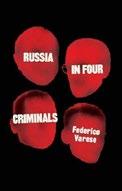
An Oxford criminologist profiles a small group of perpetrators and their outsize role in modern Russia. In this concise volume, Varese, who studies organized crime, examines the nature of unlawful activity in Russia from the 1980s to the present. First is Vyacheslav Ivan’kov, a mobster who became the “most feared” representative of the vory v zakone, or “thieves in law,” a sect of “professional criminals who follow a code of honour.” Next is Boris Berezovsky, a powerful businessman who was “instrumental in ensuring Putin’s election” in 2000, then made a white-collar fugitive when Putin turned against the oligarchs who aided his rise to power. Sergei Savely’ev, the subject of the book’s third section, is distinguished not by his crime (drug trafficking) but by his actions during his incarceration, when he leaked videos of prison torture and rape to a human rights group, proving that the state had “condoned and indeed encouraged the mass rape of convicts.” The final section of the book deals with Nikita Kuzmin, the young inventor of the “world’s most powerful computer virus, Gozi.” While Varese does provide the occasional colorful detail (noting, for example, that 26-year-old Kuzmin longed to purchase a Playboy Russia photoshoot for his then
girlfriend), the book is less interested in its subjects as individuals than as emblems of larger issues in the “macro history of Russia.” Mikhail Gorbachev’s reforms in the 1980s, Varese argues, failed to equip the new economy with protections for fair exchanges, thus informal enforcers like Ivan’kov emerged. In the case of cybercrime, the state is increasingly forced to turned to “freelance criminals” to carry out their operations. This is an intellectually rigorous book, compellingly argued and crisply written. A concise, scholarly look at the rise of crime in post-Soviet Russia.
Wang, Phoebe | Assembly Press (288 pp.) | $17.95 paper Oct. 15, 2024 | 9781738009824

A Toronto poet and educator recounts her experiences learning how to sail.
The daughter of Chinese immigrants from Hong Kong, Wang never quite felt at ease in her native Canada. The sense of discomfort followed her into sailing, a sport she quickly realized posed many barriers to admission. In this collection of 18 essays, the author discusses the lessons she learned about sailing and the way her life on the water intersected with her writing life. One of the first hurdles she faced was learning nautical language. Words like jib and halyard seemed impenetrably arcane. But as she began to decipher meanings and maneuver boats, Wang also learned that her new “language” had emerged out of British naval history, which was inextricably bound to the colonial history that Hong Kong shared with Canada. Another challenge she faced was coming to
terms with the classism and racism inherent in many recreational sailing clubs. The more she became involved in the sport, however, the more she saw evidence that “sailors could [also] look like [her].” Nevertheless, she remained aware of the “visibility and foreignness of [her] body,” an experience she had already become accustomed to in the literary world to which she belonged on land. Yet crewing—and especially racing— helped her learn to strategize and “how to maintain my momentum” not only on the water but in her creative life, especially when experiencing severe writer’s block. That Wong experiments throughout the book with many different nonfiction narrative forms—journal entries, letters and the braided essay—only adds to the uniqueness of this refreshing collection that weds art to one of the oldest human pastimes. A thoughtful, illuminating look at life away from land.
Wroe, Ann | Thomas Nelson (224 pp.) | $19.99 paper Oct. 15, 2024 | 9781400347933

The mysteries of lives.
Wroe, a biographer and obituary editor for the Economist, offers a graceful, haunting meditation on her life’s work: “catching souls,” her term for
capturing “the unique and essential part of ourselves, our self-conscious and transcendent core.” Some biographical subjects were singularly challenging: Pontius Pilate because there was little direct evidence of his daily life, Percy Shelley because there was so much. “Entering the life of Shelley was permanently exhausting, exhilarating, fraught; I would find myself at dinner parties,” she admits, “suddenly holding forth on the freedom of the press or the rights of man, shocking myself as much as anyone else. Because, for a while, I was more than myself.” Her sensitivity to her subjects—“the way they walk, sit in a chair, shrug off a jacket, hold their heads; tiny gestures, snatches of talk”—is apparent in the obituaries she references (a list is appended). She delicately evokes the individuality of poets Seamus Heaney and Derek Walcott; singers Miriam Makeba, Joan Sutherland, and Luciano Pavarotti; physicist Steven Weinberg and ebullient tomboy Shirley Temple, among many others. “Life resides in details,” Wroe notes, rather than in a résumé of achievements. She learned from the conductor Claudio Abbado, for example, “that there was a certain sound to snow.” She brings the same attentiveness to her observations of nature and the precise language of her poetry and prose. “On days of mist or snow,” she writes, “the emptier hills and valleys lie like creatures still breathing, as if sheets have been thrown over sleeping bodies or muslin drawn across a face.” A failed clarinet player, she exults in the sounds of woodwinds and reeds, “the voices of wild landscapes.” From inner lives to windswept hills, Wroe’s world is filled with wonder.
A lyrical, radiant memoir.
“Life resides in details,” Wroe notes, rather than in a résumé of achievements.
Yang Camp, Ellie | Heyday (272 pp.)
$28.00 | Oct. 22, 2024 | 9781597146616

A polemic against Asian American stereotypes as well as a case for how to heal and move forward.
This accessible first book by Camp, an artist and a teacher, is organized into three sections: The System, Living in the System, and Dismantling the System. “My hope,” she writes in the introduction, “is that we can collaboratively create a deeper understanding of what it means to be Asian American.” The author distinguishes between ethnic identity and racial identity. “Being Asian American,” she writes, “is its own unique experience of integrating these two parts together.” Camp interweaves stories of her own upbringing, with Taiwanese roots, and the necessity of examining personal experiences within a global framework. She offers histories of Eurocentric thinking, American capitalism, settler colonialism, and white supremacy, explaining how these contributed to the creation of race. Asian Americans, she writes, were long consigned to a space “characterized by fulfilling a need for cheap labor, but later it was met with periods of extreme xenophobic backlash, not being granted citizenship, having severely limited rights…experiencing segregation, and being victims of racial violence.” She explores how this began to shift during the Civil Rights Movement, one result being the perception of Asian Americans as the “model minority,” stereotyped for hard work and pressured to perform well academically. In addressing how white supremacy affects everyday living, she makes a convincing case for resisting
A bracing look at “phages,” bacteria used to battle other bacteria in treating illness.
THE LIVING MEDICINE
commodification of labor and taking time to rest. In noting that Asian American history is often erased from curricula, she writes, “We need to be visible to ourselves and believe in our own worth.” Camp envisages a reality that allows Asian Americans to center— and care for—themselves.
A personal and impassioned look at Asian American life.
The Living Medicine: How a Lifesaving Cure Was Nearly Lost―and
Zeldovich, Lina | St. Martin’s (320 pp.)
$30.00 | Oct. 22, 2024 | 9781250283382
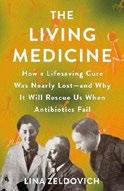
A bracing look through the murky depths at “phages,” viruses used to battle bacteria in treating illness.
Science writer Zeldovich grew up in the former Soviet Union, reading scientific articles “not as stories but as puzzles, from which occasionally— if I managed to figure out enough words to form a sentence—I could deduce some meaning.” One word she knew from experience was the Russian word for dysentery , which, years afterward, pointed her to the possibilities of “biological entities… [that] have been feeding on bacteria for eons, so they are better equipped than our pharmaceutical industry to keep up with bacterial evolution.” Given CDC statistics that 1 in 7 Americans suffers from
some foodborne illness each year, and given that many bacteria are now resistant to or even immune from treatment with conventional antibiotics, the prima facie case for using these specialized bacteria is strong indeed. Yet, as Zeldovich discovers, making phages part of the American pharmacopoeia is easier said than done: In Europe and the United States they’re interdicted, for creating phages means manipulating the stuff that otherwise winds up in sewage treatment plants. Still, it’s fascinating to learn of free-floating bacteria in the Ganges River (which one suspects would be an undesirable place to take a swim) that in untreated water “dissolved cholera vibrions”; just so, it’s sobering to hear that the potentially deadly MRSA bacteria, so common in American hospitals, can be killed by viruses in short order thanks to advances made in the former Soviet republic of Georgia. In a well-written book that ranges widely through scientific history, marked by episodes of suppression on the part of both the Soviet authorities and the American medical and pharmaceutical establishments, Zeldovich makes a convincing case for phages helping us all in the future.
A capably told microbiological detective story, with the promise of magic bullets to come.

THERE’S SOMETHING about bread. Just about every culture has a different take on this staple, and almost everyone I know has their own version. Over the last year, I’ve encountered several picture books that remind me that bread is so much more than a tasty food. It’s childhood memories of baking alongside a loving adult passing down a generations-old recipe. It’s an opportunity to slow down, waiting for dough to rise. It’s a deep connection to heritage and identity. In short, it’s a way to nourish the soul.
Don’t be fooled by the title of Cristina Quintero’s The Only Way To Make Bread (Tundra Books, 2023); the author makes clear that there are as many ways to bake bread as there are people. As diverse families converge on a single apartment to whip up arepas, focaccia, bannock, and more, the text—collectively narrated by the children— expounds on how to prepare bread. Some people use a wooden spoon to mix; others rely on their hands. Some braid the dough; others
roll it into balls. But there’s one essential ingredient: love. Making inspired use of perspective, Sarah Gonzales’ earth-toned illustrations exude warmth, joy, and a sense of community.
As Sidura Ludwig’s Rising (Candlewick, May 14) opens, a pregnant mother and her child awaken early one morning to make challah for Shabbat dinner. They bond as they knead, stir, and roll, but just as crucial are the moments they take to pause and reflect as the bread bakes and, later, cools. Ludwig’s meditative text homes in on ordinary but heartening sensations such as the feeling of wet dough, while Sophia Vincent Guy’s elegantly composed artwork is rife with details that will reward careful readers. Nudging little ones to savor the little things, this languidly paced tale is a much-needed counter to the frenzy of modern life.
“Nana’s mama taught my mama when she was my age, and now Nana is going to teach me.” The young narrator of Lisl H. Detlefsen’s Still There Was Bread (Harper/HarperCollins, Oct. 15) can’t wait to
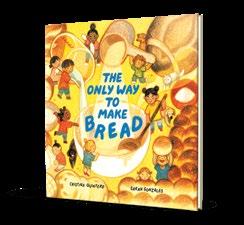

learn how to make “Nana rolls.” As they work, Nana explains that baking was an all-day affair for her own grandmother, who grew up during the Depression.
David Soman’s painterly illustrations alternate present-day scenes of grandmother and child relying on modern conveniences such as an electric oven with images of Nana’s grandmother gathering eggs and using a woodburning oven. The narrative sets a reassuring tone as Nana notes that bread has always anchored the family through hard times, including the Covid-19 pandemic.
With Mama’s Roti (Little, Brown, Oct. 29), Raakhee

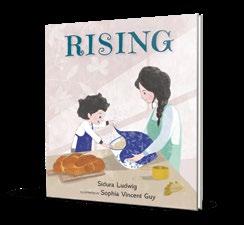
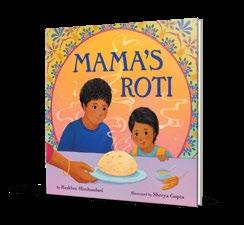
Mirchandani demonstrates that this South Asian flatbread is so much more than the sum of its parts. The members of an immigrant family building a new life in America preserve a connection to their homeland through a love of roti, while farmers in India spend long hours planting and harvesting the grains used to create this bread. Brimming with emotion, Shreya Gupta’s artwork seamlessly shifts between settings as Mirchandani’s text conveys moving truths about the power of food: “Roti is home, even when the streets are full of strangers....Roti is life.”
Mahnaz Dar is a young readers’ editor.
Lola Reyes has plenty to worry about.
The Guatemalan American fifth grader is processing her dad’s sudden death, her mom’s overly controlled grief, and changing friendships. When she and her cousin find a box of worry dolls at Abuela Gloria’s house in Guatemala labeled “Do Not Open” in her dad’s handwriting, she sneaks them into her suitcase, hoping to keep a piece of Pop with her. Ignoring his warning note about an ancient Mayan curse, Lola soon faces more than she bargained for when the dolls come to life. The six dolls soak up worries from
nearby humans, grow larger, and escape, causing mischief. Lola and annoying neighbor Chance Townsend, who’s cued white, team up to find the dolls within six days— before they release the magnified worries, with grim consequences. Lola doesn’t feel as though she can burden her grieving mother by asking for help with this problem, and she’s hurt that her best friend has become closer to one of their classmates over the summer. Lola is overwhelmed and must find a way to reverse the curse before it’s too late. Rodriguez seamlessly marries supernatural

adventures with realistic, universal themes of grief and human connection. This dynamic, creative story highlights themes of loss, vulnerability, and the power of asking for help. The multifaceted
characters remind readers that people often struggle with hidden complexities—a poignant message for middle graders. A relatable, high-energy journey through grief and magic. (Fiction. 8-12)

Ahiyya, Vera | Illus. by Debby Rahmalia
Random House (24 pp.) | $10.99 | $5.99 paper | Dec. 10, 2024 | 9780593810002 9780593809549 paper | Series: Getting Ready
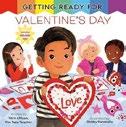
Love is in the air.
Kai’s family is excited for the upcoming holiday. Everyone makes valentines, Kai and Dad hang decorations, and Mom bakes heartshaped cookies. At bedtime, Kai signs “I love you” to Mom and Dad (though Kai doesn’t appear to be deaf). The next morning is extra special. Dad hands Kai a huge valentine, Mom whips up heart-shaped pancakes, and Dad snaps a photo of Kai to send to Nana. At school, Kai’s teacher asks the students to list things they love; she draws images of their answers on the board. Later, the students make mailboxes before delivering cards to one another. Kai frets a bit—what if Kai doesn’t get any valentines? But the teacher reminds the children to make a card for everyone so that no one feels left out. When at last the students open their boxes, they’re delighted to have received mail. Kai’s best friend, Chelsea, says, “This is the most beautiful card I’ve ever seen, Kai!” The class enjoys a very happy Valentine’s Day indeed. Children will appreciate this upbeat traditional holiday book, full of cheer, warmth, and love. The teacher’s reminder to include everyone is laudable, while the images of wide-eyed, smiling children radiate joy. Kai’s family is brownskinned, while the class is diverse. A most welcome tale to help youngsters celebrate Valentine’s Day. (Picture book. 4-7)
Aitken, Stephen | Orca (96 pp.)
$24.95 | Oct. 15, 2024
9781459837294 | Series: Orca Wild, 14
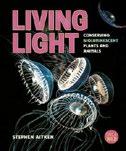
A itken spotlights bioluminescence in the natural world. This survey of bioluminescence among plants and animals explains the phenomenon, describes research in the field (including ways that recently isolated bioluminescent genes support research in other areas), and discusses conservation issues. Bioluminescent animals use light to communicate, reproduce, and feed and defend themselves. Descriptions and photographs of these animals provide some of the most dramatic content of this information-packed title. Readers without some science background may get bogged down in the third chapter’s details about DNA and proteins, whose discoveries have led to scientific breakthroughs. But those who persevere will be rewarded by extensive examples of luminous animals and plants and heartened to learn how many diseases the use of green fluorescent protein is helping to cure. A final chapter describes threats, bioluminescent organisms used in art and fashion, and what readers themselves can do to support these intriguing creatures; Aitken quotes an ocean explorer who has built “Eye-inthe-Sea,” a new stealth camera system, to discover more such creatures. The author occasionally personalizes the narrative by inserting his own experience as a biologist. Though the text is broken up by colorful and clearly captioned and sourced illustrations,
subheadings, and text boxes, this is still a challenging read, yet one well worth the effort. The few humans represented have a range of skin tones. Shines new light on light-making organisms. (glossary, index) (Nonfiction. 10-15)
Alley, R.W. | Kane Press (40 pp.)
$18.99 | Dec. 3, 2024 | 9781662670299
Series: Breezy Valley at Work, 2

Hospital workers truly do heroic work. Tomorrow’s Parade Day in Breezy Valley, a city populated by anthropomorphic animals, but its sick and injured residents still need help. At the hospital, doctors, nurses, and other vital personnel spring into action. As this fast-paced book unfolds, readers follow the activities of numerous hospital heroes as well as an especially important patient. Lemur, the parade’s bandleader, has an injury (as he tells doctors, “My drum kerplopped on my tail”). A simple operation sets things right, but he must remain in the hospital overnight. Will the parade be canceled? No! Several hospital heroes “operate” on the drum so that all will proceed as scheduled—but not before Lemur leads a special Thank You Concert for the staff. In painstaking detail, Alley explains virtually everything that curious kids might want to know about hospitals, relying on both text and numerous labels and arrows. Reminiscent of Richard Scarry’s work, the jam-packed, busy illustrations often appear in graphic novel–like panels, with characters’ dialogue conveyed in colorful speech bubbles. While the diminutive pictorial labels are sometimes overwhelming, the information, delivered in a matter-of-fact, upbeat tone, will allay reader apprehension, and the parade angle provides a cheerful backdrop. The all-animal cast exudes sunny professionalism; sound effects are liberally incorporated into the artwork.
A fact-filled, candid, and reassuring introduction to the ins and outs of hospitals. (quiz, additional hospital facts) (Picture book. 5-8)
Anderson, Constance | Star Bright (32 pp.)
$18.99 | Nov. 1, 2024 | 9781595729927

A text that explores diversity in birds.
This appealing title showcases some of the most obvious adaptations that differentiate bird species, including size, feet, flight, nests, eggs, hatchlings, beaks, and vocalizations, each in a spread or two. A concluding spread summarizes these adaptations and adds the range of colors, obvious throughout Anderson’s careful collage portraits. She introduces topics in large text using occasional rhyming couplets, internal rhymes, alliteration, and frequent repetition of the phrase “so many ways.” Each spread includes examples, with dozens of labeled species. The birds may be familiar or unfamiliar, but the information will be intriguing— robins have three toes in front and one in back to hold on to a branch while perching; woodpeckers cling to trees with two toes each in front and back; the common murre’s egg is tapered so that it can only roll in a circle, not off the cliff where it was laid. The egg is shown on a spread of variously sized, shaped, and colored eggs, some of which are “wee as a pea.” The narrative reads aloud smoothly, and the illustrations show well. Readers who are also knowledgeable birders will appreciate the way every bird, identified or not, is recognizable. For young readers or browsers, the two-level text offers flexibility. Accurate and interesting facts and imagery will
make this a positive addition to readers’ nature collections. Engaging and informative. (author’s note) (Informational picture book. 4-8)
Applegate, Katherine & Gennifer Choldenko Illus. by Wallace West | Feiwel & Friends (336 pp.) | $17.99 | Sept. 17, 2024 9781250345004 | Series: Dogtown, 2
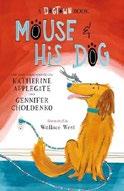
An intrepid mouse tries to help his canine friends find forever homes. This second visit to the Dogtown animal shelter brings back some familiar furry faces while introducing a new narrative perspective—that of one of the mice residing in the building’s rafters. Mouse enjoys lounging in the basement with the “unadoptable” pups, among them Buster, a “bounceback,” who has been adopted several times but then been returned following a litany of tragicomic mishaps. There’s also Smokey, the robot dog, who (due to an error at the factory) randomly emits a tremendous, miseryinducing smoke alarm sound. Saanvi and Owen, kids from Dogtown’s Reading Buddies program, also find their way to the basement, where they spend time with these exiled animals. Growing mutual affection between the dogs and children leads Mouse to devise an ambitious plan to help the dogs get to the apartment building where Saanvi and Owen live, in pursuit of a happy ending for all involved. The authors thoughtfully portray the growing relationships, and moments of breakneck action culminate in a conclusion that pulls together a dizzying array of moving pieces. Mouse at times feels more like a literary device than an integral
A reassuring introduction to the ins and outs of hospitals.
member of the Dogtown universe, an element further emphasized by the frequent references to mouse-focused children’s classics. Final art not seen. A relatable, entertaining second entry in a charming series. (Fiction. 8-12)
Basseri, Etan | Illus. by Zeynep Özatalay | Kalaniot Books (32 pp.)
$19.99 | Aug. 6, 2024 | 9781962011976

Follow Rafael, Alegra, and León as they help Nona prepare for a wonderful “Anaya buena” in old Istanbul. At the market, Nona assigns the cousins items to purchase for the upcoming Jewish Rosh Hashanah holiday feast. Pomegranates, leeks, and a whole fish will fill their baskets, while Nona gets apples, beets, pumpkins, and dates. Their characters are revealed as they visit each vendor. Rafael is kind and protective, little León is quiet and shy, and Alegra is brave about everything except creepy cats, whose presence causes her to freeze in place. On the way back to Nona, the cousins encounter a bully, who grabs one of their juicy pomegranates and smashes it against a wall. Alegra stands up to him, and so does León. But the bully is ultimately vanquished by his allergy to the cats that swarm around the nearby fish scraps. The extended family’s holiday proceeds as planned, with each food symbolizing a wish for the new year. The highly descriptive text, generously sprinkled with Ladino phrases, provides the actions and motivations. Brightly hued, beautifully executed, detailed illustrations bring it all to life. The market’s abundant wares, the Ottomanera clothing, a vendor who sings to his produce, and each character’s expressive individuality appeal to all the senses. The cousins have light brown skin.
A long-ago place, time, and traditions lovingly recalled. (history of Jewish life in Turkey, celebrating Rosh Hashanah, Senyor Benezra’s song, Ladino glossary) (Picture book. 4-10)
Berlin, Ethan T. | Illus. by Jimbo Matison Hippo Park/Astra Books for Young Readers (40 pp.) | $18.99 Aug. 27, 2024 | 9781662640643

An inevitable and much-anticipated follow-up to the team’s How To Draw a Happy Cat (2022).
“Chickens are known for being…well… chicken,” an unseen narrator admits, “but follow these instructions and you can draw a brave chicken.” Simple directions ensue: an oval for the chicken’s body, dots for her eyes. Uh-oh. A frightened Chicken hides behind a pail. Giving her a knight’s suit of armor and a horse will make her look brave; the narrator explains how to draw these items. Then a dragon arrives. What will make Chicken feel brave? Friends on a trampoline can help (among them Cat, the hero of Berlin and Matison’s earlier book). The dragon flies off, and, feeling courageous, Chicken wants to pursue. She asks for a rocket ship, which the narrator initially rejects. But when Chicken begins crying, the narrator quickly agrees. A rocket ship takes the friends to the moon, where the ravenous dragon awaits. Chicken proposes a creative solution: drawing an ice cream truck. Bits of bright color enhance the action, while Chicken’s path to bravery will gently bolster many young readers. Matison’s firm linework and clear steps make replicating his charmingly childlike drawings look doable, inviting kids to try. It’s a blast, and as the narrative concludes, Chicken has proof that she’s brave—but now her pal Dog is hiding under the pail. Stay tuned. A winning combo of easy-to-draw figures and a wacky, interactive storyline with a subtle emotional point. (Picture book. 5-8)

Boxer, Elisa | Illus. by
Vivian Mineker
Sleeping Bear Press (40 pp.) | $18.99
July 1, 2024 | 9781534112810
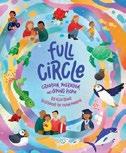
Boxer brings her storytelling prowess to bear on the animal world.
The author provides an easy-to-understand account of the cycle that brings some animals back to their birthplaces to breed, while also drawing parallels with human lives. Spread by spread, she describes egg laying, birth, and migration among salmon, puffins, bluefin tuna, and sea turtles. Mineker’s expressive illustrations depict the animals in appropriate landscapes. Most spreads also include an expectant human couple preparing for the birth of their baby. As the animals grow, so does the human infant. A young puffin “hobbles along the rocky cliff” before its first flight; the baby takes those first few tentative steps. As a baby bluefin tuna learns to swim fast to avoid orcas, the human child figures out how to balance on a bicycle. When the salmon begins its journey back home to mate and lay eggs, the child, now all grown up, is shown between two proud parents, wearing a graduation gown and displaying a diploma. Finally, after all four animals return home to lay eggs, the young adult comes back, holding a new baby as the gray-haired parents look on proudly. In the informative text, repetitive phrases detail each stage, enhancing the point that natal homing—animals’ ability to find their way back to their birthplace—is something many creatures share. One of the human parents and
the child are brown-skinned; the other parent is lighter-skinned. Readers will want to return to this gentle, effective account. (author’s note, further information) (Informational picture book. 4-8)
Brown, Waka T. | Illus. by Yuko Jones Quill Tree Books/HarperCollins (40 pp.)
$19.99 | Oct. 1, 2024 | 9780063280229

What do you do when your favorite things are no longer perfect?
Golden endpapers crisscrossed with mysterious, uneven lines, followed by an overhead illustration of a child’s room where everything is neatly put away, foreshadow the conflict at the center of this tale. Miki Amelia Masuda, a third-generation Japanese American girl, likes “everything to be perfect.” No broken cookie for her, no torn pants; she even spurns her beloved stuffed toy Owlie when his wing comes off. One day, Miki’s obaachan (grandmother) gives her a ceramic teacup, which Miki loves drinking from. But then she drops the cup. Miki is inconsolable, her stricken face reflected in a teacup shard on the floor. To reassure her, Obaachan teaches her the Japanese practice of kintsugi, meaning “to join together with gold.” Before long, the teacup is whole again, restored with shiny paint along the cracks. As Obaachan mends Miki’s torn pants and Owlie’s wing, she shows Miki that perfect isn’t always best and that mended things can still have just as much heart. Brown’s poignant, tender prose expertly depicts Miki’s emotional ups and downs, enhanced by Jones’
A moving, humorous exploration of friendship and trust.
sweet yet elegantly composed art, full of light and vivid color. Together, author and illustrator bring to life the quiet dramas of childhood, gently imparting a powerful lesson that will linger with readers. The perfect tale to demonstrate the importance of finding beauty in life’s imperfections. (author’s note) (Picture book. 3-6)
Burk, Rachelle | Illus. by Chiara Fedele Creston (32 pp.) | $19.99
Oct. 1, 2024 | 9781954354302

America’s first president was a beacon of hope to the Jewish community of Newport, Rhode Island. Based on actual events and people, this story details George Washington’s visit to Newport on August 17, 1790, after Rhode Island’s ratification of the Constitution. He also came to raise support for the Bill of Rights, which would guarantee religious freedom. As the narrative begins, everyone is excited about Washington’s arrival, including 9-year-old Bella Seixas. Her father, Moses, head of Congregation Yeshuat Israel, has told her that Washington is a “guiding light to religious freedom,” because in America, Jews “can pray and celebrate our holidays without fear.” Bella, her younger sister, and several other kids create signs in Hebrew and English to express their gratitude, but the crowds greeting the great man’s ship are so large that they go unnoticed. Undaunted, they make candles—perfect for a “guiding light”—but children aren’t allowed in the inn where Washington is lodging. Bella’s final idea succeeds: The children rush to the port from which Washington’s ship will sail and, with their lit candles, sing to him. Washington notices them at last and smiles gratefully. This fascinating story offers encouraging evidence that young people can do important things.
Though solemn, Fedele’s artwork is imbued with a sweetness that makes distant historical events feel immediate. An uplifting historical account for younger readers, and a necessary reminder of the importance of religious inclusion. (author’s note) (Picture book. 4-7)
Bury, Katryn | Harper/HarperCollins (320 pp.)
$19.99 | Oct. 29, 2024 | 9780063337411
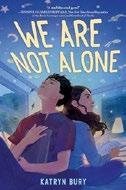
After his best friend’s death, a boy vows to continue their UFO investigations. Thirteen-yearold Sam Kepler Greyson is dealing with “Big Things™”: His Hodgkin’s lymphoma is in remission, but his best friend, Oscar Padilla, recently died of brain cancer. When Sam returns to school, he’s greeted with hostility—thanks to a rumor spread by “former friend, current jerk” Kevin Bellman, who claims that he lied about having cancer. Moreover, he’s partnered with Cat Pellegrini— whose clique peripherally includes Kevin—for eighth grade’s annual California History Project. To cope, Sam imagines Oscar giving him advice. Before his death, Oscar left Sam a message in their UFO notebook: “We are NOT alone in the universe.” Sam finds an unlikely ally in Cat, who’s secretly a fellow UFO enthusiast. As they investigate cryptic clues from a mysterious online contact, their friendship grows, and Sam finally feels like a normal kid—a welcome relief from being treated as fragile or heroic. So how can he tell Cat about Oscar—or the full story of his own cancer? And if Sam tells his moms about the bullying—or the new pain in his chest—how could life ever return to normal? While Bury, herself a cancer survivor, intricately explores Sam’s conflicting emotions, Sam’s occasionally wry narration and imagined banter with Oscar add levity, and his moms are
heartwarmingly supportive. Sam and one of his moms are white and Jewish; his other mom is Black.
A moving, humorous exploration of friendship and trust. (author’s note) (Fiction. 9-13)
Camp, Joaquín | Trans. by Kit Maude Tapioca Stories (36 pp.) | $18.95 Sept. 3, 2024 | 9798988749929

It’s not easy being a ghost dog. Camp’s naïve-style illustrations provide a suitably off-kilter atmosphere for this humorous tale translated from Spanish. A scruffy-looking gray pooch named Aldo gets tangled up in a sheet hanging out to dry and believes he’s left the world of the living. As a ghost, Aldo contends, no one can see when he steals food (though the disgruntled, racially diverse humans in the park would disagree). He also claims to have learned to fly (actually, he’s hopping), and he’s adopted a new bark (his canine friends don’t appreciate his prolonged “booooo!!!!”). So far, pretty standard for a goofy dog story. But then Aldo laments the one true sadness of his ghostly experience: He’s separated from his loved ones. Some readers may find the subsequent reveal hilarious, while others will see it as mean-spirited: Aldo spurns the tan-skinned human crying at home over his picture and instead focuses on his love for his favorite toy, a smiling red ball. Envisioning a series of romantic cliches (going on a movie date with the red ball, slurping a strand of spaghetti, Lady and the Tramp –style), Aldo grows increasingly dejected until he returns home, where both his human and his beloved toy await. The surrealist humor and obvious dissonance between Aldo’s narration and the illustrations will make this tale a big hit with some readers, though it may leave others cold. A curious confection for audiences open to absurdism. (Picture book. 4-8)
Chanani, Nidhi | Viking (40 pp.)
$18.99 | Oct. 8, 2024 | 9780593205099

A seemingly withdrawn child actively engages with the world.
“People call me Quiet Karima like it’s my first and last name.” But while the rest of the world chatters away, Karima is watching and listening. Karima’s “ears seek rhythm and beat”—the sounds of the softly falling rain, the scrabbling of squirrels’ paws, and the almost imperceptible noises made as Mama rolls rotis. The nearby park is a “symphony,” filled with the sounds of leaves whirling, bicycle wheels rolling, and shoes hitting the pavement. Most people don’t notice Karima’s observational bent—except for Mrs. T, who works at the music store. The two of them appreciate the treasures that Karima has collected—“a box, a can, a pair of chopsticks”—before gathering up the shop’s drums and turning the store’s silence into joyous noise. In the ensuing rhythms, Karima transforms, too: a little bit quiet, a little bit loud, but always Karima. This rhyming picture book is filled with lyrically crafted lines and sweetly professed feelings. Featuring textured backgrounds, the watercolor, ink, and colored pencil illustrations have an appealingly childlike, intimate feel, capturing intangibles such as the sounds Karima so loves, as well as the child’s complex emotions. The book’s message—that shy or introverted young people needn’t change who they are—comes through clearly. Mrs. T and Karima are brown-skinned; Karima is cued South Asian.
A poignant reminder that quiet kids often have richly resonant inner lives. (Picture book. 4-8)

A poignant reminder that quiet kids often have richly resonant inner lives.
QUIET KARIMA
Chang, Adam R. & Stephanie Wildman
Illus. by Dream Chen | Kar-Ben (24 pp.)
$19.99 | Nov. 5, 2024 | 9798765603017

Moving stirs up big emotions for a young Jewish Chinese child. Miri blinks back tears; the little one will miss Mah Mah and Yeh Yeh (Cantonese for paternal grandmother and Mandarin/Cantonese for paternal grandfather, respectively), who look after Miri while Mom and Dad are at work. Miri will also miss the stone Chinese lions outside the family’s apartment. But as everyone packs up the furniture, Yeh Yeh and Miri’s other grandfather, Zayde (Yiddish for grandfather), take Miri out for ice cream. Yeh Yeh gives Miri a beautiful mezuzah case and explains, “There are no stone lions to guard your new apartment building, but you can hang this mezuzah at your door.” Zayde supplies the scroll to place inside, and they all head to Miri’s new apartment. The whole family gathers as Zayde says the special blessing; then they hang the mezuzah above the front door. Later, Zayde has another surprise for Miri: a pair of small carved red lions. Miri is adorable, but other characters are less consistent in their depiction from page to page, and details in the text aren’t always fleshed out (Mah Mah and Yeh Yeh were Miri’s caregivers before, so what will happen in their new home?). Nonetheless, the family’s love is palpable, and readers will appreciate how all four grandparents work to honor Miri’s heritage—Yeh Yeh mentions learning about mezuzahs from Zayde, while Bubbe (Miri’s
maternal grandmother) and Mah Mah both prepare Shabbat dinner. A sweet story of a family blending traditions. (authors’ note, glossary) (Picture book. 4-8)
Chantler, Scott | First Second (160 pp.) $22.99 | $14.99 paper | Oct. 15, 2024 9781250846907 | 9781250846891 paper

Travelers on a journey through the forest find themselves going in circles. Sir Kelton, Squire, and Shadow are escorting Cade to wizard school, but they keep returning to the same marked cairn. They encounter Sir Reynholm the Bold of Upper Claxtonbury, but the group is separated when a swarm of giant mosquitoes attack. Squire relies on his wits, survival skills, and flashback memories of a conversation with Queen Marley about his duties to Sir Kelton, but he is captured by gnolls, large, doglike monsters that intend to eat him and Cade. Fortunately, the gnolls are lost in the forest as well, giving Shadow a chance to rescue them. Back at the cairn, Squire nearly gives up, but memories of Queen Marley and support from Cade revive him, and he realizes what they’ve missed all along: The cairn hides a lodestone that will help them find the castle. The palette consists of earthy greens and browns, and the action is easy to follow, with no more than six panels per page; the flashbacks are in a washed-out version of the same
colors. While in the first tale, Squire was the obvious hero, this one sees him humbled when being right isn’t enough. Sir Kelton is, once more, filled with cheerful bravado. A victory against the gnolls and a humorous twist ending will satisfy readers, who may hope for a third installment. Sir Kelton, Squire, and Queen Marley are light-skinned.
A rewarding adventure. (“fun extra stuff”) (Graphic fiction. 8-12)
Clark, Mariko | Illus. by Rachel Eleanor Convergent (288 pp.) | $24.99
Sept. 24, 2024 | 9780593580318
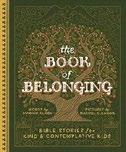
A collection of stories of God’s love inspired by the Bible.
This collection of 42 kid-friendly stories pulls from the Old and New Testaments. Starting with the creation story, it covers Exodus, follows Jesus’ life, and ends with a tale from Revelation. Readers will encounter a variety of both better- and lesser-known stories. Each entry emphasizes one of three main messages God has for us: “You Belong. You are Beloved. You are Delightful.” Clark retells episodes from the Bible in accessible text using her original dialogue and phrasing to convey her messages. Each chapter opens with a title that may trigger recognition of the original story (“She Laughed,” “Jesus and the Party People”), the Bible verses the story stems from, and notes on the characters’ Greek and Hebrew names. “Mindful Moment” sections describe God-focused mindfulness activities, while “Wonder Moment” segments pose thoughtful questions for readers to reflect on. Throughout the Old Testament section, two-page spreads explain key groups of people, such as judges and prophets, and their roles among God’s people. Ample illustrations throughout feature beautiful embellishments and borders,
breathing color and life into the descriptive text and adding cultural context. God is depicted in golden hues and given human facial features and a more amorphous body; the human figures are racially diverse. Biblical stories presenting a moving message, contemplative questions, and captivating illustrations. (notes) (Religion. 7-12)
Colfer, Eoin | Illus. by Steve McCarthy
Candlewick (64 pp.) | $17.99
Nov. 12, 2024 | 9781536240665
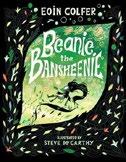
Sometimes friendships emerge from the most unexpected places. “Everybody in Ireland knows that banshees are supernatural harbingers of doom.” Referred to as bansheenies when they are young, these fairies grow in pods. Each banshee forms an unshakable link with the first human they see until one day, the banshee bursts forth to “howl the banshee’s howl at them”—a sign that the human is about to die. (Apart from that, banshees and humans don’t interact.) Beanie is knocked loose from her pod during the all-important bonding phase and finds herself unable to glean all the knowledge she needs about her human, Rose. As Beanie struggles to do her job, she connects with Rose on a much deeper level than most banshees do with their humans. When Beanie learns of a powerful storm that will destroy Rose’s cottage, Beanie appears to Rose, warning her of her family’s fate and helping them escape certain death—all conveyed in thrilling, moody swirls of color across several spreads. After much soulsearching, Beanie decides to set aside her grim life tasks and instead further her bond with Rose and continue to “learn the songs of the elements.” With their Celtic green palette, McCarthy’s spirited digital illustrations are full of life, propelling the narrative forward
with motion. They pair well with Colfer’s joyful text, which echoes the storytelling tradition of fairy tales with clever descriptions and effective page turns. Rose and her family are brown-skinned.
A modern twist on classic folklore and the bonds of friendship. (author’s note) (Picture book. 5-8)
Coy, John | Illus. by Kristen Adam Sleeping Bear Press (32 pp.)
$18.99 | Aug. 1, 2024 | 9781534113053
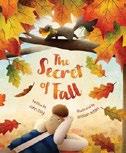
Some secrets must be widely shared. Can you keep a secret? Leaves can. They keep a marvelous secret that explains the glorious colors they display in the fall. How does this phenomenon occur? What happens to leaves’ usual green, and where does it go? Bursting with leafy images and autumnal hues, this charming, easily comprehensible book describes how, as “sunlight decreases and temperatures cool, changes happen in the trees.” Some of the language in this title, geared to young readers and written simply and in an inviting, conversational tone, is as robust as the beautiful shades we see in autumn: “a splash of orange,” “a burst of yellow,” “a rush of red,” “a blast of brown.” Every color word is presented in that particular hue, in boldfaced capital letters. As the prose carefully notes, these colors were “hidden underneath all along.” The backmatter provides a longer, more comprehensive account of photosynthesis and the process by which leaves undergo their remarkable metamorphosis in fall and show off their stunning, vibrant glory. Popping with color, the enticing, collagelike illustrations feature a group of playful, curious, racially diverse children frolicking outdoors and marveling at the seasonal changes. Don’t keep this lovely book a secret: Display it widely and hand it to inquisitive young readers this fall. (Picture book. 4-7)
To woo a mate, a male bowerbird gathers enticing objects to decorate his home.
BERT, THE BOWERBIRD
Cuevas, Adrianna | Amulet/ Abrams (256 pp.) | $14.99
Oct. 29, 2024 | 9781419772924
Series: Monster High School Spirits, 2
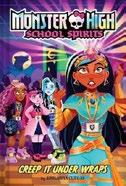
A self-centered mummy learns a tough lesson. This second volume of the Monster High School Spirits series follows image-obsessed mummy Cleo de Nile, who divides her time between making videos for EekTok and scheming how to catch her jet-setting parents’ attention. Cleo begins to plan HumanCon, a convention in which monsters will celebrate and learn about all things human. As her plans grow more grandiose, she stumbles upon an item she thinks would be the perfect prize for the con’s costume contest; after she steals it, however, she quickly learns that the object has cursed her. Now Cleo is moving in a trancelike way, helping everyone around her whether she wants to or not. It gets to the point where she eschews sleep and food, despite being hungry and exhausted. Can Cleo figure out how to break the curse before it’s too late? Based on the Nickelodeon show, Cuevas’ work falls solidly in line with the tone and pacing of 2023’s A Fright To Remember. Fans of the franchise will be well acquainted with the vast character list and bespoke monster lingo. Newcomers may be deterred by the bloated list of monsters (some garnering nothing more than a passing mention) and the endless monster puns. Cleo’s journey to self-realization is predictable and facile, becoming obvious to readers long before it is to Cleo.
An overly moralistic tone weighs down the appeal of this volume. (Paranormal fantasy. 8-12)
Dennis, Elizabeth | Illus. by Clarice Elliott
Simon Spotlight (32 pp.) | $17.99 | Aug. 27, 2024
9781665957212 | Series: Ready-To-Read
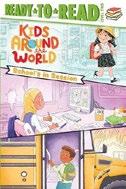
Differences and similarities among schools around the world.
Readers will glean intriguing facts about how students get to school and learn, study, play, and even eat lunch in schools in America and various global locations in this briskly paced early reader in three chapters. First up is the chapter describing how pupils travel. Some go by buses or subways, as in New York City; other transport options include snowmobile (Mackinac Island, Michigan), cable car (Caracas, Venezuela), or zipline (Colombia). Some kids walk miles (Nigeria), while motorcycle rickshaws transport pupils in some areas of Thailand. Readers will learn that in some towns in India, students receive instruction on train platforms or in buses and that some students learn on riverboats in floodprone regions of Bangladesh. Young readers will be especially interested in the “Schoolwork and Play” chapter, which provides information about the length of school days, what school lunches are like, and how much homework is assigned. Readers won’t envy some South Korean high schoolers, who attend class for more than 14 hours daily, but they might wish they lived in Finland, where school days last five
hours and students receive 75 minutes of daily recess and less than three hours of homework each week, or in France, where pupils get two-hour daily lunch breaks, with meals consisting of mouthwatering, multicourse cuisine. These interesting tidbits and more are delivered via short sentences written in a breezy, conversational tone and will help young readers understand that they’re connected to kids everywhere. Colorful, lively illustrations feature children and adults with a broad range of skin tones. A glossary opens the book, which includes a world map.
A nice entree to the school year. (create your own school!) (Early reader. 6-8)
Star
Di Franco, Ani | Illus. by Rachelle Baker
Rise x Penguin Workshop (48 pp.)
$18.99 | Aug. 27, 2024 | 9780593383773
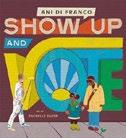
Musician Di Franco and illustrator Baker emphasize the significance of doing one’s civic duty in this story of a Black mother and child heading to the polls. It’s Election Day, and despite the terrible weather this November day, Mama has a “very important job.” Accompanied by her young child, who narrates, Mama sets out to cast a ballot. Mama and her little one line up, enter a booth, and pull the curtain. Mama makes her selections, while the child pushes the buttons. Di Franco’s language reflects the magnitude of the day while remaining accessible to curious readers.
The youngster’s pride and sense of belonging are palpable as Mama explains why everyone votes (to “have a say / about laws and rules / about parks and schools / about who’s gonna run them / and in what way”). The well-deployed internal and end rhymes make for a read-along as whimsical as it is civicminded. Baker’s thickly outlined, earth-toned artwork is charmingly realistic, with a pleasingly retro vibe.
Author and illustrator portray the electoral process as simultaneously familiar, momentous, and joyous. As our narrator identifies the ways voting can connect us to the people in our communities and beyond, the illustrations depict a whole world of diverse faces and engaged, smiling citizens. Sporting their “I voted” stickers, mother and child return home that evening, thoughtfully aware that voting is “how it all starts.” A powerful primer on citizenship. (Picture book. 3-7)
Donaldson, Julia | Illus. by Catherine Rayner | Boxer Books (32 pp.)
$18.99 | Dec. 3, 2024 | 9781915801845

To woo a mate, a male bowerbird gathers enticing objects to decorate his home.
Scruffy, bighearted Bert places a purple flower outside his new bower and awaits his bride. “Haughty” Nanette arrives, sniffs, and makes clear that a simple flower won’t be enough. Hurt, Bert flies off to gather more objects to improve his chances at love. A cumulative rhyme structure anchors his multiple attempts to please Nanette: “The snail shell, the silver bell, / The wrapper from the caramel, / Plus the pretty purple flower. / ‘Now will you come inside my bower?’” Fickle Nanette continues to reject Bert. Alas, a second male bird, Claude, arrives and tricks Bert, sending him on a doomed expedition to find a gold ring for Nanette. While Bert flies off, Claude steals his treasures and, ultimately, Nanette. Donaldson’s intricate rhymes, together with Rayner’s illustration of a dejected, slumping Bert, convey his heartbreak: “Where were the comb, the gnome, the foam, / The green pea, the strawberry.” Rayner’s mixed-media illustrations capture the eager-to-please Bert’s open nature, using an earthy palette that pops whenever the purple flower appears. Bert considers giving
up on love, but the purple flower’s bold color still has some magic to work. He hears another bird approach: “She look[s] Bert over once or twice / And add[s], “You look very nice, / And what a pretty purple flower!” Could he, at long last, have found his mate? Delightful rhyming combined with clever illustrations elevate a simple search for love. (brief information on bowerbird behavior) (Picture book. 3-6)
Drew, Ain Heath | Illus. by Erin K.
Robinson | Barefoot Books (56 pp.)
$19.99 | Sept. 17, 2024 | 9798888592113

A Black child receives a bedtime lesson on the interconnectedness of the African diaspora. As Ayo tries to sleep, he turns to an alphabet book that inspires a dreamy adventure. Whether taking in the calypso music of Trinidad and Tobago or enjoying Nigerian fufu made from pounded plantain and cassava, Ayo gets a thorough education in the diversity of African diasporic cultures. He’s even transported through time as he travels to early-20th-century Tulsa, Oklahoma, to learn about Black Wall Street, and to the Bronx circa the 1980s to witness the development of hip-hop. The book is made up of alphabetically arranged entries (A is for Afro, while K is for Kente cloth), each listing a location and a brief description. Some pages are overburdened by text, and at times the author struggles to distill complex topics into digestible bits; a single spread doesn’t feel like enough space to explore hip-hop, while the Yoruba people are known for more than their “wood carvings, glassmaking, and weaving.” Occasionally, the digital art feels somewhat chaotic, with discordant colors, textures, and elements mingling. Still, it’s a laudable and ambitious effort, and one that will likely stir curious readers to learn more.
A jam-packed, at times unwieldy, globetrotting primer on Blackness. (supplemental information, glossary) (Informational picture book. 5-9)
Driscoll, Laura | Illus. by Catalina Echeverri HarperCollins (32 pp.) | $5.99 paper
Dec. 3, 2024 | 9780063276505

A child and grandfather— both artists— explore the range of professional possibilities open to creative people. This beginning reader opens in the midst of the child’s school art show. The brown-skinned, curly-haired youngster has created a portrait of the child’s beloved grandparent, complete with a balding brown pate, bushy eyebrows, rectangular spectacles, and a red bandana around his neck. The following week, the duo visit a gallery opening of modern work, where they mingle with abstract painters and a sculptor. When the youngster wonders about being a “real artist,” Papa initiates a tour of his own workspace (he does hand lettering) and neighboring studios. The protagonist enjoys exploring the output of this diverse cast of characters, from a potter and animator to a book illustrator and cartoonist. While some of the vocabulary includes longer words that may be unfamiliar, such as “botanical artist” and “photographer,” the context provided by Echeverri’s lively illustrations provides clues to help children through repeated readings. Beautiful, colorful combinations, varied textures, and interesting patterns in the art, clothing, and hairstyles kick this format up a notch. The narrative concludes with the pair participating in the creation of an outdoor mural. Part of a series introducing various occupations, the book ends with a page briefly defining each type of artist mentioned. A joyful glimpse into the notion that a pleasurable childhood activity could be a lifetime pursuit. (list of types of artists with definitions) (Early reader. 4-7)
The children’s author whets young readers’ appetites for American food facts.
BY MEGAN LABRISE
“WE ALL ASSUME the food we eat has always been here,” says Aronson, co-author of Bite by Bite: American History Through Feasts, Foods, and Side Dishes (Atheneum, May 28), “but much of what we eat, where we eat, how we eat is an incredibly recent development.”
Aronson, an editor, author, and publisher of children’s books with a PhD in American history, teamed up with Paul Freedman, a Yale professor who specializes in the history of cuisine, to tell the stories behind some of America’s formative foods. To enrich entries on key foodways, including salmon feasts, corn cultivation, and fish fries, they invited a team of collaborators to share their expertise and lived experience: Dr. Frederick Douglass Opie, Amanda Palacios, Tatum Willis, and David Zheng. The result is a toothsome tome “loaded with fascinating facts about regional types of pizza, the origins of nachos and General Tso’s chicken, the histories of the Automat and of the renowned New York eatery Mamma Leone’s,” and much more, as Kirkus writes in an admiring review.
“What interests me, when it comes to food, is lifting up the edge of assumed reality to see what’s behind it,” says Aronson, who recently spoke with us via Zoom. The following interview has been edited for length and clarity.


What made you want to write about this subject for young readers?
So what is American food, anyhow?
Great question! The obvious answer is, “It’s whatever Americans eat.” But I think it’s ultimately a reflection of, on the one hand, what we think of as normative—the assumption that everybody likes burgers, or everybody likes pizza, or whatever it might be—pressing against the individual heritage of our
families, our neighborhoods, and our cultures. How many middle-grade or elementary school stories are there about the kid who brings in food to school that they’re afraid other kids will find smelly or odd or different, because it isn’t what the other kids eat? There’s an ongoing dialogue between what’s considered prototypical and what you get at home.
I’ve always been really interested in food. Years ago, Marina [Budhos] and I wrote a book called Sugar Changed the World, and I think there are ways in which a food can [be like a prism] to lift up, through which you can begin to see the world differently. So often the way we teach history is about laws, presidents, wars, conflicts, economics. They’re all vastly important, but you can also think about how people actually lived. People ate things! What they ate, how they got their food, how they cooked it, and how they experienced it was a big part of their lives.
How did you and Paul Freedman decide to enlist a team of collaborators for this project?
In some ways, what Paul and I were trying was an experiment. I wrote this article in the Horn Book about how the question of identity and writing applies to nonfiction. There was some controversy about it. But I think we were trying to find a way to do two things: to have a book that has a unified throughline that isn’t an anthology but, on the other hand, gives voice to many lived experiences. How can we tell history? History can’t just be all broken up into my experience, my experience, my experience, my or my ancestors’ experience. How can we have a unified narrative but at the same time pay attention to what is gained in lived experience? That’s what we were trying to build toward.
How did you assemble the team?
Tatum Willis, who is an enrolled member of the [Confederated Tribes of the Umatilla Indian Reservation], who helped us on the Native American salmon feast, was a student at Yale, where Paul teaches. Amanda Palacios, I sought out through various academic contacts, as someone who was in the Southwest who could draw on a Latina and Indigenous experience. Dr. Opie is recognized as the leading academic student of African American cooking and food. And David Zheng, who speaks to the history of Chinese cuisine, was also at Yale. We called upon each of them to share their experience, to provide the resources to tell a broader story.
So how American is apple pie?
Not that American! It’s semi–Turkish, English, and did not actually become considered “as American as” until the 20th century. It’s just like the way that the initial Thanksgivings—and I’m hardly the first to say this—were much more about venison and eel than turkey. So, we should really be talking about the Thanksgiving eel celebrations. But I don’t know how well they would take to stuffing.
What are some of the German contributions to what we generally consider American food?
Germany is fascinating. It’s so funny, “Frankfurter” and “Hamburger” announce themselves self-evidently. Then, of course, there’s chicken-fried steak, which is really wiener schnitzel. And then there’s all kinds of pastries. Germans were
[America’s] largest 19thcentury immigration group, and they transformed food. But because of World War I, it was erased. Sauerkraut became “liberty cabbage.” You did not want to announce your Germanness. The Germans had these beer halls, which were sort of festive family restaurants, kids running around.
Something I learned in this book, which I didn’t know, is that a good part of the temperance movement and Prohibition was to get rid of
the beer halls, because they were considered German, foreign. It’s exactly like modern book banning: Oh, it’s a great danger to our vulnerable youth!, who are running and scampering while they’re eating hamburgers and hot dogs. I hadn’t realized the antiGerman element of the temperance movement.
One note you sound powerfully in Bite by Bite is that Native peoples, enslaved peoples, and
What interests me, when it comes to food, is lifting up the edge of assumed reality to see what’s behind it.
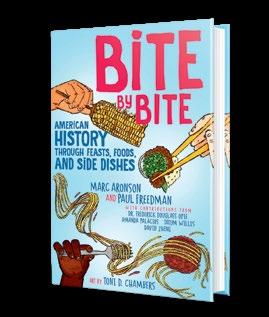
Aronson,
Marc, and Paul Freedman; illus. by
Toni D. Chambers
immigrants brought a wealth of food knowledge to America, leaving many indelible impressions on the national cuisine. We have them to thank for many important developments. One of the examples Dr. Opie shared is that fishing was a big part of how people got protein in West Africa, and so they continued here and found catfish—similar to the catfish that they knew— which grew into this rich, varied tradition of African American fish fries, which is the subject of Chapter 4. There’s even a debate about how deep-fat frying may have come from Africa. It certainly was not prevalent in Europe. So yes, they all brought things that we now think of as American. They brought the skills that they had, and adaptations, and resilience.
What would you say to a potential reader of Bite by Bite?
Look at what’s around you and just question, “Where did it come from?” Why, for example, do we have Whole Foods everywhere? That’s relatively new—as opposed to some more standard-bred stores. Why do we have farmers markets? Where did they come from? All these things represent something in a cultural moment that you can ask questions about. My biggest hope is that people will use the book as a beginning to ask questions about their own food, and to use those questions to explore their own history and culture.
Editor at large Megan Labrise hosts the Fully Booked podcast.
FREEDOM BRAIDS
Dumas, Marti | Amulet/Abrams (384 pp.) | $18.99 | Sept. 17, 2024 9781419772733 | Series: Wildseed Witch, 3

In this follow-up to Charmed Life (2023), Hasani finds herself faced with questions, choices, and her biggest magical challenges yet. Hasani and her best friends, Luz, Angelique, and Dee, are back in this third series installment. Still fresh from hearing the news that she’s a witch and having spent her summer at witch camp, Les Belles Demoiselles, Hasani is trying to balance learning more about her magical side as a wildseed with being on the school’s Mathletes team. She’s also continuing to grow her YouTube channel, MakeupontheCheapCheap. This entry involves some chapters from the perspective of LaToya, Hasani’s fellow witch who’s something of a rival; she appears to be up to some grand scheme that apparently involves all of Riverbend Middle School. While strange and possibly dangerous occurrences at school related to LaToya crop up, Hasani and friends are uncertain of exactly what’s going on, and they try to figure out LaToya’s plan and to determine whether they should intervene or “live and let live,” as is the custom of witches. As they embark on their search for answers, they discover more about themselves, each other, and the magical society in which they exist. Dumas continues to expand the worldbuilding while adding layers to the characters’
histories and personalities. Readers should be familiar with the previous volumes to fully immerse themselves in this book.
A fitting sequel that deepens the magical world and its well-developed characters. (Fantasy. 10-14)
Duncan, Monique | Illus. by Oboh Moses | Lantana (32 pp.) | $18.99 Sept. 10, 2024 | 9781915244802
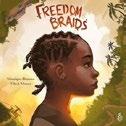
An enslaved Black child reflects on the role hair braiding plays in her life and her community.
Nemy scatters seeds and pulls weeds in the fields. She observes a woman named Big Mama, who works hard in the sugar cane fields, cooking and telling stories before bed. When Nemy follows Big Mama to a shack one night, she sees her and other women braiding one another’s hair. Nemy joins them, and as her hair is braided, she remembers her own Nana. Surrounded by a loving, tight-knit community, she learns how women braid messages, information, and even seeds into their hair. One morning, the group—including Nemy—flees, the routes of freedom braided in their hair. They avoid danger and recapture until they can establish a new home, deep in the forests surrounding the plantation. In an author’s note, Duncan explains how she drew from real history— specifically the experiences of those enslaved in Colombia. Quietly tinged with hope, her narrative demonstrates how those in bondage used skills
passed down over generations to find the liberty they desired. Moses’ digitally rendered art depicts intricate braid patterns; his dramatic use of color during the escape scene heightens the drama, bathing characters in deep blues as they make their way to freedom.
A poignant tale of courage and resistance and of long-standing cultural traditions. (Picture book. 5-9)
Oct. 8, 2024 | 9798988749936
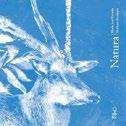
Stop and look— and look again. At first glance, each illustration appears to be mostly white space surrounding a single monochromatic image painted in deep blue. But hold it up to the light, and an intricate magenta underlay appears. Suddenly, simple branches are full of hidden birds, bugs, and butterflies. Bears and squirrels roam through previously barren woods. This striking effect is accomplished by thin, doubled pages connected at their outer edges. The blue artwork is printed on the front, while the magenta layer sits on a sheet behind it, just dark enough to show through. The effect is subtle enough that readers quickly flipping through the pages might miss it entirely. Seeing the full detail requires holding the book up to eye level and positioning it just so in the light. (Fittingly, natural light works best.) While the art sets this tale apart, the words are beautiful, too. Originally written in Spanish and presented alongside an English translation, the verse is also an ode to looking closely. Ferrada begins by expounding on the lines crisscrossing a leaf. Slowly, as the illustrations switch focus to the leaf’s branch, the tree, and the forest, the author contemplates their interconnections
to each other across the year. A child (who isn’t depicted in the art) notices that the patterns of the forest are reflected within a single leaf. A quietly astonishing delight unfurls for those who take the time to look beneath the surface. (Picture book. 6-10)
Flanagan, Liz | Illus. by Joe Todd-Stanton | Union Square Kids (176 pp.) | $8.99 paper | Dec. 3, 2024
9781454956419 | Series: Wildsmith

A strange call’s coming from the Dark Forest… Rowan doesn’t want to leave her home in the city of Holderby, especially without her father, but war has finally arrived in her hometown, and she must escape with her mom to stay at her grandpa’s house in the woods. She’s never met her grandpa before and is surprised to discover that he’s a healer of animals and humans. When she sets off deep into the forest to follow a mysterious noise, Rowan makes an astonishing discovery: an injured dragon. As she attempts to help the dragon, Rowan witnesses its mother’s capture by hunters from the enemy country of Estria. Worried about what will happen to the young dragon, Rowan returns to her grandpa to search for answers and help, only to discover that her grandpa is the feared wildsmith the poachers were talking about—someone who can communicate with animals. Together with her grandpa, some witches, and neighbors Will and Cam, Rowan must find a way to stop the poachers and protect the forest. Filled with adventure and friendship, this novel will capture readers’ hearts with its magical creatures and exploration of belonging. The sketch-style art is rich in detail and shading while retaining whimsy in the way it colors slightly outside of the lines. Rowan and her
family have light skin, and Will and Cam are pictured with darker skin. A magical adventure in the woods. (Fantasy. 6-11)
Fox, Janet | Simon & Schuster (288 pp.)
$17.99 | Oct. 22, 2024 | 9781665956666
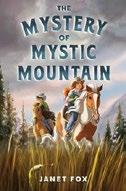
Against a rural Western backdrop, rumors of a hidden treasure pull two young people into an adventure.
Becca, who’s nearly 13, had different hopes for her summer, ones that didn’t involve leaving Connecticut to bond with her mom at Get Away Ranch, a Montana resort that promises yoga and cooking classes, a spa and swimming pool, and more. Due to a mix-up, they end up instead at rustic Far Away Ranch, with its spotty internet and more down-to-earth facilities. Meanwhile, Jon, who’s almost 14, is working at the ranch with his dad. He’s heard stories from his greatgrandmother about the founding of a famous nearby ghost town, Piney Woods, and the treasure left somewhere in the area by an outlaw in the mid-1800s. Jon, who possesses a clue to the treasure’s whereabouts, invites Becca to help him search for it. They follow interconnected clues and, after some missteps, learn to trust each other. All the while, Becca is trying to figure out who she is and what kind of friend she can be, both in Montana and back home. Vivid, poetic descriptions bring the setting and characters into focus, and the mystery maintains a strong pace. An overbearing YouTube personality, who’s also pursuing the treasure and chases after the kids, feels more like a caricature of a bad guy, however. Main characters are cued white. A well-written mystery adventure bolstered by high stakes and a burgeoning friendship. (map) (Mystery. 9-13)
Xavier’s Voice
Franklin, Ashley | Illus. by Tatiana Gardel
The Innovation Press (48 pp.)
$18.99 | Oct. 8, 2024 | 9781959244035

A timid boy learns to summon his own internal strength. School is filled with the raucous sounds of kids laughing, shouting, and playing. Quiet, bespectacled Xavier is swallowed up by all that noise. Whenever he tries to speak, his voice gets stuck in his throat. Even when other children make a friendly effort, “his small voice [can’t] find its way out.” Inspired by a new comic hero named Super Saleem, Xavier starts drawing his own superhero world. He fills a sketchbook with characters who have the qualities he wishes he could possess. When a sudden rainstorm drenches his drawings, another student helps Xavier dry them off. Could this be the beginning of a beautiful friendship? Afterward, overwhelmed with anxiety and what ifs, Xavier starts to worry. But he feels bolstered by a superhero strength deep inside. Though Xavier’s outward attempts at trying to be loud fail miserably, he eventually finds a way to shine—by relying on his huge imagination. Peppered with calming techniques, this narrative will speak to many young people grappling with anxiety as Franklin creates a safe environment for introspection and growth. Gentle cartoon art brings the action to life; Xavier’s fantasies of flying alongside superhero characters add child appeal. Xavier and his family present Black and are cued Muslim; his school is diverse.
An encouraging story for those who struggle to be heard. (Picture book. 4-7)

Gervais, Bernadette | Trans. by Lawrence Schimel | Milky Way Picture Books (56 pp.)
$21.99 | Nov. 19, 2024 | 9781990252365

W hat does a slice of cheese have in common with a suede shoe? Or a fork with a hedgehog? These inquisitive strands of commonalities form the basis for Gervais’ eclectic bilingual word book, a hodgepodge of animals, vehicles, everyday items, and natural phenomena. Each spread opens to a catalog of things—faithfully rendered via stencils and brushes against mostly solid color backgrounds—collected around a declarative statement in all caps. “THINGS THAT SMELL GOOD” boasts a scrumptious apple cake, a lush rose, and a bar of soap. “THINGS THAT ARE FAST” presents a rocket in flight, a rather proud-looking ostrich, and an almost toylike race car. Groupings and page arrangements vary from spread to spread, as does sizing for each featured item, labeled by name in both English and Spanish. Flashes of playful, cheeky humor emerge in unexpected ways. Gervais juxtaposes morsels of popcorn with a formidable kangaroo under “THINGS THAT JUMP,” and on the spread labeled “THINGS THAT ARE STICKY,” she includes a jar of jam along with a toilet plunger. A few interludes, with an entire page devoted to just one thing, allow readers to draw unexpected connections between the mundane and
everyday wonders. Under “THINGS THAT ARE…EXTRAORDINARY,” for instance, Gervais lists a rainbow, followed by a colander on the next page. Little ones who appreciate a more ruminative pace will find much to muse on here. A curiously offbeat treat. (Picture book. 2-5)
Griffith, Evan | Illus. by Anna Bron Sleeping Bear Press (40 pp.)
$18.99 | Aug. 1, 2024 | 9781534112919

Griffith and Bron pay tribute to two biologists whose advocacy spurred the creation of the Arctic National Wildlife Refuge in Alaska and other protected areas across the United States. Olaus and Mardy Murie bonded over a shared love of the outdoors; they married in 1924. After years of travel, they became staunch and successful advocates for establishing wildlife preserves. While Griffith’s account is inspiring, Bron’s intricate, graceful illustrations may prove the stronger draw. She depicts the couple hiking through rugged northerly landscapes to observe wild creatures in their natural habitats, dancing around a remote campfire beneath starry skies, or animatedly sharing stories and insights with attentive groups—of bears and other beasts, as well as racially diverse human audiences. Throughout, the pages light up with the joy the Muries took in being together, in being outside, and in being links in a
A delightful and insightful child’s-eye musing on size.
wondrous “chain of life.” Commendably, the author, too, is meticulous. His backmatter includes more biographical detail about the Muries (with photos), acknowledges the help they received from local Inuit and Ojibwe residents, and notes frankly that Olaus most likely “collected” Indigenous ancestral remains (which are currently being repatriated) and animal specimens for museums. Griffith leaves it to readers to decide whether that’s a permanent blot on an otherwise admirable legacy. A moving salute to lives lived in service to nature. (map, bibliography) (Picture-book biography. 7-9)
Gutman, Anne | Illus. by Georg Hallensleben | Hippo Park/Astra Books for Young Readers (48 pp.)
$18.99 | Nov. 5, 2024 | 9781662640483
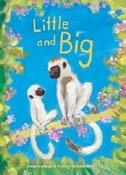
Adorable lemurs learn that there are benefits and drawbacks to being both too big and too little. Faly is too little to stay up late. His older brother, Mahandry, is too big to be carried on Mama’s back. Faly is too little to cross the river’s mossy stepping stones, while Mahandry is too big to be held in Mama’s arms as the family crosses the narrow path under the waterfall. Faly is too little to climb a tree to reach Mahandry’s splendid vantage point. Mahandry must peel lychees himself, while Mama peels them for Faly. Mahandry can forage on his own, but Faly can climb on Mama’s shoulders to reach the tastiest of the orchids Mahandry has found. After every disappointment, each lemur expresses a poignant wish: “I would like to be big, too.” “I wish I were still little.” But at the end of the day, in their bed of leaves, they can snuggle together with Mama, who reassures them that they are getting bigger daily, but they’ll both always be her “sweet little ones.” Most children, even those without siblings, often hear themselves labeled “too big”
or “too little,” so the message of this tender yet never overly sentimental book will resonate. The lush, painterly illustrations, with swathes of intense neon color, immerse readers in a vibrant setting, presumably Madagascar. A delightful and insightful child’s-eye musing on size. (Picture book. 4-8)
Hammond, Ryan | Simon & Schuster (256 pp.) | $18.99 | Oct. 15, 2024
9781665950077 | Series: Villains Academy, 2

Five young villains in training save their school from a rogue teacher in another round of cozy evildoing. In this second series entry, the Weirdoughs— werewolf Bram, Sheila the ghost, surly Mona the elf-witch, Skele-tony Le Bone, and fartmeister extraordinaire Bryan the Lion—immediately smell something rotten in Felix Frostbite, a charismatic if literally icy new instructor. The friends wind up in a good position to scupper his genuinely villainous scheme to destroy the Villains Academy—and oh yes, the world. Meanwhile, the increasingly tightknit squad disrupt exams (to the grudging approval of homeroom teacher Master Mardybum) and learn evil arts from teachers with names like Whiz Warmbottom and Professor Plops. They also struggle to keep secret the pair of runty but rapidly growing dragons they’ve illegally rescued from culling. In the end, through teamwork and TLC, the Weirdoughs come out smelling like… well, not roses, considering the continual noxious contributions of
Bryan, but at least close friends. Told that even she is loved, student villain Mona responds characteristically, “I know…But never tell anyone I just said that, or I’ll have to destroy you.”
The pages of accessibly written text are festooned with charming duo-toned illustrations. In the multi species cast, Hammond depicts Bram as a boy who’s lightly covered in fur and Emma and some fellow students with dark skin and pointy ears.
A gas for fans of magic school stories. (drawing instructions) (Paranormal. 7-10)
$18.99 | Nov. 5, 2024 | 9781250828606

A child imagines painting love that rains down like hearts touching the world.
With a paintbrush aimed at the sky, a child streams pink, purple, and yellow beams from a wand. Bright red hearts flutter and fall, touching everything the child sees: hills, trees, zoo animals, a group of musicians in the park, birds in a nest, and of course the child and caregiver. The book has a meaningful message about the reach and spread of acts of love, with the child continuing to find and share love. The final two lines of each group of four rhyme, but this pattern makes for a disappointingly awkward read-aloud. Still, the illustrations, featuring people of varying skin tones, hair styles, ages, and abilities, are a delight. The child is drawn with light brown skin and dark brown hair, while the caregiver has brown skin and black hair. The tricolored ribbon of
A boy-meets-dog story that evokes warmth and nostalgia.
love is a consistent presence throughout the book, and the hearts appear like butterfly wings. This representation of love really brings the concept of “painting love” to life in a way that little readers will be able to visualize. The final images of the child cradling the globe and snuggling with the caregiver bring home the idea of just how much love we hold and how far it can reach if we share it. Bumpy text saved by touching illustrations. (Picture book. 2-4)
Hautman, Pete | Candlewick (240 pp.)
$18.99 | Oct. 1, 2024 | 9781536234886
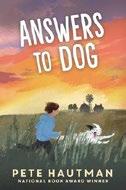
“The thing about dogs is, no matter what you want, there’s a dog for you.”
Rural life was predictable for Evan Dunn until the white dog with the black ear appeared while he was walking to the bus stop one day. The stray border collie finds comfort in the 13-year-old’s presence, avoiding the Man who drives the white van while he keeps pace with Evan on his after-school runs along roads lined by fields and trees. Evan’s fascination with the dog gives him the courage to question adults, establish new friendships, and take calculated risks for the sake of canine companionship. Whether it’s a dog in a kennel or a boy trapped within his solitary parents’ routines, themes of neglect and isolation dominate the story, although the author’s careful approach ensures that this heaviness is balanced by the presence of uplifting supporting characters, such as Hana Ganz, who’s a dog enthusiast despite her allergies, and track coach Mr. Raley, who displays subtle kindness. The balance of the third-person limited narration between the perspectives of Evan and the dog makes this an enjoyable gateway book for readers who typically prefer stories featuring talking animals. Mentions of and brief scenes including animal abuse, although not graphically rendered, may
be upsetting for sensitive readers. Most characters are cued white; some supporting characters are navigating health conditions.
A boy-meets-dog story that evokes warmth and nostalgia. (Fiction. 9-13)
Holland, Tom | Illus. by Jason Cockcroft Candlewick Studio (208 pp.) | $19.99 Nov. 5, 2024 | 9781536234169

Atmospheric illustrations ratchet up the melodrama in this retelling of the war between the Greeks and Persians. Plainly influenced by ancient vase paintings, Cockcroft places slender, actively posed, geometrically planed warriors and women into darkly clouded settings sometimes splashed with red to reinforce the grim tone of a narrative delivered by Gorgo, daughter of a Spartan king. Like nearly everyone in the cast except the Greek gods and demigods who put in occasional appearances, she was a real historical figure. Though Holland reifies ancient legends by having Athenian girls literally turn into bears at will and Spartans of both sexes into wolves, he also sticks closely to the historical plotline while delivering pithy accounts of numerous myths and disturbing details of growing up in Sparta. Gorgo lays out in detail the political situation that led to the successive invasions and recounts Greek heroics at the battles of Marathon, Salamis, and Plataea. As a wolf, she witnesses the doomed stand of her husband (and half uncle) Leonidas at Thermopylae, with the illustrator treating readers to the particularly lurid sight of Leonidas’ severed head mounted on a spear. “Know that what you have read is the truth,” she concludes, but what may stick with readers is not so much what happened as the violence the book glorifies. Characters are pictured with a variety of skin tones.
Dark and brutal. (cast gallery, map) (Fictionalized history. 11-14)
Kirkus Star
Hopkinson, Deborah | Scholastic Focus (224 pp.) | $9.99 paper Oct. 15, 2024 | 9781338882339
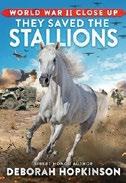
A multilayered account of the effort to save the Lipizzaner horses of Vienna during World War II. The famed Spanish Riding School of Vienna was named after the Spanish ancestors of the Lipizzaner breed. The beautiful white horses perform the intricate, difficult, balletic movements of dressage, an intensive riding discipline in which rider and horse must be in perfect communication and that takes years to master. But when the Second World War broke out, the horses—and, indeed, the existence of the then nearly 400-year-old school itself—were in danger. After the Germans annexed Austria, and the Allies subsequently began bombing Vienna, the riding school’s director, Alois Podhajsky, knew that their days were numbered and that he had to get the beloved horses to safety. While the gripping story of the race to save the horses through Operation Cowboy is the main storyline, this narrative goes much further, providing background on the fascinating Podhajsky, the horrific oppression and murder of Jews and other marginalized people, and the roles of Black GIs and members of the Women’s Army Corps (WAC) in the war zone. “Virtual field trips” throughout the book expand readers’ experiences; Hopkinson wisely advises:
“If a link doesn’t work, please use it as an opportunity to practice your research skills. Need help with a search? Ask a librarian—that’s what I do.” Exquisite black-and-white photos enrich the text. This riveting account will hold readers spellbound. (author’s note, cast list, glossary, timeline, bibliography, source notes, picture credits, index) (Nonfiction. 8-13)
Hung, Louise | Scholastic (336 pp.) $19.99 | Oct. 1, 2024 | 9781338832587

A 13-year-old girl’s paranormal abilities lead to an emotional journey with a resident ghost. Chinese American Molly Teng and her free-spirited mom have already moved eight times. While her mother always rallies her to support Team Teng, homebody Molly is resentful about leaving Maine for Buckeye Creek, Texas, and yet again becoming “the weird girl who’s an easy target.” Molly and Mom move into an old house that comes complete with an attic-dwelling spirit named Jade who’s over a century old. At first, Jade’s excited—Molly is sensitive to her presence and Asian like she is. For her part, Molly initially decides to ignore Jade, until her presence becomes impossible to overlook. As their friendship grows, so does Molly’s resolve to help Jade figure out her past before she fades away. Molly’s abilities include what she calls “the zaps,” the energysucking pull she experiences from the
Captures the everyday power of friendship and trust to heal hurts and solve problems.
overwhelming memories contained in some inanimate objects. Knowing the toll the zaps take on Molly, Jade hesitates to expose her to something physical belonging to her. Hung artfully integrates Chinese American history and present-day racism into a story that explores themes of belonging. Molly longs for stability and community while also being acutely aware of being “the Asian Girl” who’s a perpetual outsider. While the book has a few loose ends that may frustrate attentive readers, its compelling twists and fast pace keep the interest level high.
Spooky and intriguing, with plenty of heart. (Paranormal. 9-13)
Hwang, Sarah | Simon Spotlight (32 pp.)
$18.99 | Dec. 10, 2024 | 9781665950701

A hungry bunny has a feast in a picture book that can also function as an early reader. The titular Bunny is a cute, pink little chunk of a critter, barely more than a rounded rectangle with ears, limbs, and an expressive face rendered in dots and lines. The visual effect is rather porcine, which ends up making sense because this rabbit’s zeal for trying new foods is downright piggish. The spareness of Bunny’s form is matched by the controlled text, which will invite new readers to sound out brief phrases as the “Hungry Bunny” performs a “Bunny hop” through an open kitchen window, upending a grocery bag filled with foods for the taking. Bunny eats through all manner of victuals, with adjectives like sour, bitter, sweet , and sticky describing foods such as beets, strawberries, bubble gum, and pizza, all depicted in the brightly colored illustrations but unnamed in the text. After several more spreads comically showing Bunny trying many other
kinds of food and drink, the protagonist’s overindulgence culminates in a closing spread that reads “Bathroom Bunny!” as the gluttonous creature makes a beeline for the toilet. Silly fun for new readers, with an abundance of adjectives to stretch their decoding skills. (Picture book/ early reader. 2-6)
Jaimes, Olivia | Andrews McMeel Publishing (224 pp.) | $12.99 paper Sept. 24, 2024 | 9781524884963
Series: The Very Genius Notebooks, 2
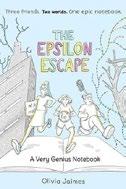
T he heroes of Deltovia embark on a new adventure. The unwelcome redrawing of school catchment boundaries captures the attention of the friends from The Chronicles of Deltovia (2022) as seventh grade winds to a close. Misha Schmidt, June Okoro, and Ollie Chen begin another co-authored story—this one set in a training facility for psychic teen assassins—that parallels and reflects their real-world concerns. The trio collaborates (loosely) via a shared notebook in which their fictional contributions mix with their drawings, journal-like musings, and conversational messages to one another. After the notebook accidentally lands in the hands of their classmates, a mysterious note (“you are so cute”) appears on one of the pages. Misha thinks she knows who wrote it, while June has a plan for finding out for sure. Ollie, for her part, is focused on her interest in Evan, a fellow piccolo player from band. Jaimes’ narrative voice for each of the girls, displayed in different fonts, is just right: earnest and bright for Misha, determinedly ambitious and a bit perfectionistic for June, and innately cheerful for Ollie. Their drawing styles and self-portraits
mirror their personalities. The names and illustrations cue ethnic diversity, and one classmate uses a wheelchair. Jaimes nicely captures the everyday power of friendship and trust to heal hurts and solve problems. Funny, low-key, and charmingly relatable. (Illustrated fiction. 9-13)
on
Kampion, Helen & Reneé Critcher Lyons | Illus. by Erin McGuire Sleeping Bear Press (40 pp.) | $18.99 July 1, 2024 | 9781534113015
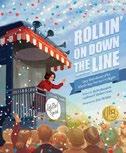
Lady Bird Johnson redefined the role of first lady, campaigning for her husband through the politically hostile American South. After signing the Civil Rights Act into law in 1964, President Lyndon B. Johnson faced an uphill battle for reelection, especially in the segregated South. When Secret Service agents deemed it too dangerous for the president to campaign in Southern states, the first lady—a Southerner herself—stepped up and began her historic whistle-stop tour (so named because “trains whistle over and over as they pass by or make stops”), visiting eight states in four days. Though it was unheard of for political wives to campaign alone, Lady Bird courageously faced protestors, hecklers, and even a bomb threat. While it can’t be proven, the afterword suggests that Lady Bird’s grit and Southern charm may have swayed the votes of several Southern states in LBJ’s favor. Soft, painterly illustrations evoke the time period through color and clothing. Though this appealing book’s focus is the actionpacked tour itself, Lady Bird reflects on the injustice of segregation during her childhood in Texas, wondering “why her best friends could play with her in her front yard but not in the schoolyard.” The authors gloss over Lady Bird’s own privileged upbringing, but
Gives new meaning to the notion that every dog—or pup—has its day.
THE
on the whole, they offer an illuminating look at a historical moment that many may be unaware of.
An engaging whistle-stop tour through an important chapter in women’s history that’s rarely given room to shine. (additional facts, timeline, authors’ note, photos, bibliography, source notes, photo credits) (Informational picture book. 6-10)
Keller, Shana | Illus. by Stephen Costanza Sleeping Bear Press (40 pp.) | $18.99 Aug. 1, 2024 | 9781534113008

Jan Matzeliger’s name might not be on everyone’s lips, but it should be on everyone’s feet.
The son of a mechanic-shop owner, Jan was raised in Dutch- speaking Suriname. At 19, he began working on a merchant ship, sailing around the world until he landed in Philadelphia. (The year is unspecified, but readers are told that “the Civil War had ended nearly a decade earlier.”) As “a Black immigrant who couldn’t speak English,” Jan struggled but found work in a shoe factory. Seeing the labor-intensive hand process used to sew a shoe’s upper piece to its sole, he proposed mechanizing the task. The other workers scoffed. Even after moving to a shoe-manufacturing center in Lynn, Massachusetts, Jan still met with skepticism, but he persisted, arduously building his machine (which dramatically increased productivity) and receiving a patent. Keller details Jan’s
painstaking process, reinforcing the message of perseverance. Costanza’s flat, clear illustrations, in muted sepia and blue, abound in period details. They are slightly stylized and somewhat fanciful but reflect photographic evidence of Matzeliger’s appearance and provide touches of humor. Playful use of typography and depictions of the machine parts Jan designed add appeal. Only the final pages of the backmatter reveal that Matzeliger died of tuberculosis at 37, just six years after his patent was approved. Skill and persistence lead to STEM success against historical odds in this brief and attractive biography. (Picture-book biography. 6-9)
Killen, Nicola | Paula Wiseman/ Simon & Schuster (32 pp.) | $17.99
Dec. 3, 2024 | 9781665965903
Series: My Little Animal Friend

A young girl learns that plans that go awry need not spoil the day.
Ollie has ambitious intentions for dog sitting Milo, her grandmother’s puppy, but those plans are spoiled when he chews up her drawing, a gift intended for Grandma when she returns from visiting friends. The girl scolds the little dog and then takes some time to herself, leaving him behind and walking farther and farther away from home in order to cool off. But as the illustrations show, Milo is never far behind, surreptitiously trailing her all the way through the woods. Ollie reflects on the part she played in the drawing’s destruction, since she knew
better than to leave it unguarded on the floor, and she regrets getting mad at the dog. When she finally stops and wishes for company, the loyal pup is right nearby. They spend their day frolicking in the woods, playing fetch, splashing in mud puddles, and hunting for treasure as pirates. When they return home, she still has time to draw another picture or two. Accessible text with relatable, appealing characters helps the message of adaptability go down smoothly. The charming artwork features various shades of gray as well as pink and red spot color, often in heart shapes. Ollie, who has skin the white of the page, wears a dog costume throughout the story. Her experience demonstrates that things can work out just fine, even when they weren’t what you had in mind.
Gives new meaning to the notion that every dog—or pup—has its day. (Picture book. 4-7)
Larsen, Andrew | Illus. by Dawn Lo Orca (32 pp.) | $19.95
Oct. 15, 2024 | 9781459839762
Series: Sally’s Puppy Adventures, 3

Sally is going outside…in the snow!
Fluffy tan pup Sally prepares to go outside in the winter weather. First, her tan-skinned little human zips Sally into her puffy pink coat; then she gets one, two, three, four boots on her paws. She snuffles her way to a local park, where other dogs await, all dressed in their own winter gear. No two dogs match; they are as different from each other as the snowflakes. The humans in the park are making snowballs; some balls are big, while others are small. All over the dog park, people make snow dogs in a variety of sizes and shapes. Sally investigates every one with a good sniff. After Sally and her person say goodbye to their friends, they head home. Getting the boots off is harder than putting them on, especially since Sally is tuckered
out from their excursion. While her little human reads by the fire, Sally sleeps and dreams of…snow dogs! This third installment in Sally’s adventures is a simple tale of dog and child enjoying an outing in the snow. Young animal lovers will enjoy the sweet story, possibly recognizing their own behavior in the ways the humans care for and love their pets. Lo’s minimal yet colorful digitally created illustrations bring the tale to life. The humans are of many hues, and the dogs of many species. Another pleasurable doggy day with this lovable pooch. (Picture book. 2-6)
Latham, Joe | Andrews McMeel Publishing (272 pp.) | $14.99 paper | Oct. 22, 2024 9781524893743 | Series: Haru, 2
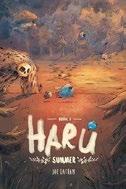
As an evil force gains in strength, Haru delves deeper into their quest. Jumping into the whimsical forest backdrop where the previous volume, Haru: Spring (2024), left off, bright blue bird Haru and their pig friend, Yama, continue their fight against the nightmarish skeleton creature Blight. Blight’s power has been steadily growing, eventually culminating in the creation of the fearsome Stone Golem. Meanwhile, Haru and Yama find themselves separated. Yama is still coming to terms with her possession of the cursed Stone Heart and its growing power over her, while Haru embarks upon a solitary journey, discovering more about Blight’s mysterious backstory as the forest’s secrets unfold. Friends Herb, Frei, and Goose (who’s Haru’s younger sibling) also have exciting side quests; observing the blending of the discrete plot threads is enthralling. Latham’s dreamy offering is thoughtfully rendered, with its enchanting worldbuilding and adroitly imagined characters, and it balances both the beauty and destruction that is nature. The pacing is thoughtful and
measured (but never too slow), twisting and turning while exploring the themes of feelings, family, and friendship. The earthy palette breathes life into each panel, and the striking scarlet hues in the scenes containing Blight reinforce his villainy. As this series develops, it becomes more and more intriguing; readers will eagerly anticipate subsequent volumes.
A lush and immersive sequel to lose oneself in. (Graphic animal fantasy. 8-11)
Ling, Nancy Tupper | Illus. by Shirley Ng-Benitez | Union Square Kids (40 pp.) $18.99 | Dec. 10, 2024 | 9781454949749

Navigating a divorce—and the changes it brings— can be difficult. A child with tan skin and long brown braids describes the feelings involved in splitting time between two homes. Mommy still lives at the house where the narrator grew up, while Daddy has moved to the city. At one home, the surroundings are almost the same: old friends, familiar neighbors, and a favorite walking trail—but no Daddy. Another has new restaurants, a new bed, and new friends—but no Mommy. School brings more change—a new teacher, new bus routes—but also a return to a beloved art class and cafeteria. The youngster feels split in two. “I’m so mad. I’m tired of going back and forth—wondering…why? Why can’t things be like they were before?” Extra hugs and extra chats help, but nothing heals until the child finds a tiny heart drawn on a train window. The discovery of that heart leads to finding more, including a heart-shaped rock, ornament, and basketball’s bounce pattern. There are hearts all around, just like the family’s love; that is the one thing that divorce hasn’t changed. The tot collects the hearts and holds them close as a reminder. Eagle-eyed readers can flip back to the start and discover other hearts hidden
A tender look at the many emotions that separation can cause. (Picture book. 4-7)
Lucido, Mikaela | Illus. by Joanna Cacao Annick Press (232 pp.) | $19.99 | Sept. 24, 2024 | 9781773218960 | Series: The Unofficial Official Renley Crow Detective Club, 1
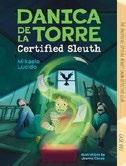
A headstrong gumshoe takes on her spookiest case yet. Danica dela Torre, the “youngest sleuth” in the small Canadian town of Renley Crow, worries that her new neighbor and all-around smart kid Kennedy Fang might take all the good cases away from the Unofficial Official Renley Crow Detective Club, the business she began with her best friend, Jack Harrow. Instead, Kennedy enlists their services to determine whether his house is haunted after a crow delivers strange, floating letters, each with cryptic messages addressed to all three kids. Forbidden from meddling with “the Other Side” by her Tita Mary, Dani nevertheless follows the clues to identify the spirit behind the letters, working alongside trusty Jack and secretive Kennedy even as the ghostly phenomena increase in intensity. As the sleuths navigate working together, the letters prod them into confronting uncomfortable truths. Centered on a Filipino protagonist, Lucido’s series opener is at its best when exploring Dani’s familial complications, including her relationship with her increasingly absent parents. Though the supernatural mystery is initially intriguingly spooky and quite compelling, things peter out somewhat. Still, Dani and her friends possess a delightful, often humorous dynamic, bolstered by Cacao’s fine illustrations; the book lays a
>>> throughout. Ng-Benitez’s delicate, illuminated art shines with warmth. Secondary characters have a variety of skin tones.

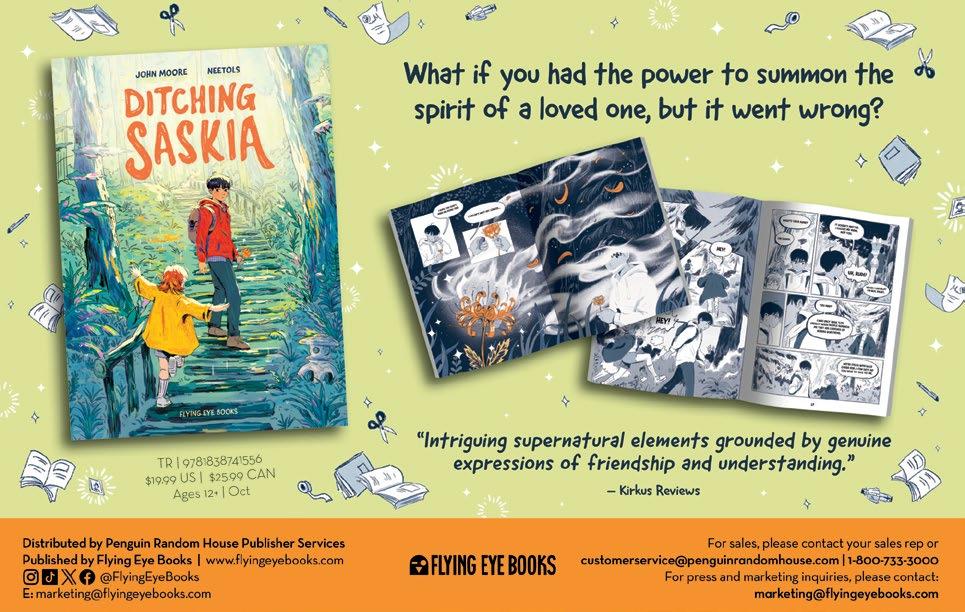
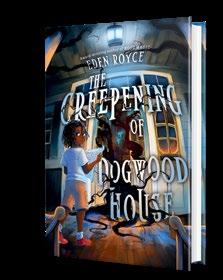

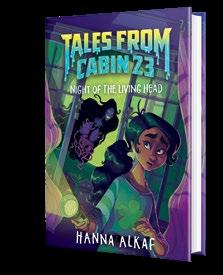

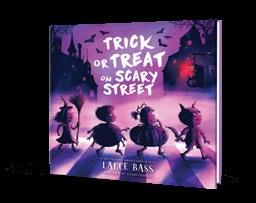

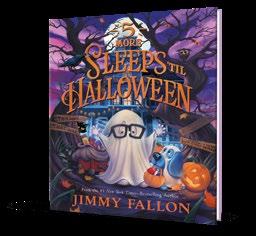
strong foundation for future installments. Kennedy is cued Asian, while Jack presents white in the artwork. Introduces a charming cast of characters whom readers will be eager to see more of.
(Paranormal mystery. 8-12)
Mackenzie, Bryher | Illus. by Gillian Eilidh O’Mara | Candlewick (32 pp.)
$18.99 | Oct. 1, 2024 | 9781536238846

A child narrates a starry winter adventure with Nana, while text and pictures hint at the elder’s transition from earthly life to what’s beyond.
As they’ve often done, the two meet at sunset for stargazing on the hill above the child’s cottage, sharing hot chocolate, a blanket, a telescope, and each other’s company. Nana relates astronomical knowledge and “tales from many moons ago.” Tonight, they wait eagerly for “her, a constellation of crumbs scattered in the wind.” The Night Whale (presumably, the winter constellation Cetus) appears, a huge creature who has a clear connection with Nana. The duo dance together to a “magical song.” With permission, Nana and the child climb onto the whale’s back. Off they fly, above oceans, forests, and cities, past the northern lights, then “home—the long way around.” As the fantastic flight comes to a close, the pair’s multisensory communion on the hillside becomes at once a series of realizations, a container for grief, and a poignant parting. “We were stargazers for so long. Now we are explorers.” O’Mara’s lovely pictures evoke the shimmering luminosity of sunset, sea, and starlight. Nana’s accoutrements—her motorbike, telescope, and binoculars—stud the sky like constellations. In final scenes, the child’s parent is present as Nana, riding the Night Whale, waves in loving departure. The characters are tan-skinned.
A tender affirmation of intergenerational bonds, echoed in a fine-tuned union between words and images. (Picture book. 4-8)
Mahoney, Meagan | DCB Young Readers (216 pp.) | $14.95 paper Oct. 19, 2024 | 9781770867604

Thirteen-yearold Malcolm McKenzie’s wits are tested in this atmospheric mystery set in Scotland in 1902. The orphaned Malcolm lives in Mrs. McCardle’s Home for Children and is apprenticed to Jack Alexander, a clockmaker and inventor. Malcolm’s good friends with Jack’s son, Peter, and is a regular visitor to the Alexander home, where Peter’s aunt also lives. The novel unfolds around two intertwining and mysterious misfortunes that strike the family: a strange illness that Peter succumbs to, followed by Jack’s murder. Mahoney explores the world of Edinburgh’s first generation of female physicians through the character of Dr. Fiona MacIsaac, who plays a prominent role in Peter’s care and is present when Malcolm discovers Jack’s body in a locked church tower. When Malcolm takes up Jack’s interrupted quest to help Peter, Dr. MacIsaac provides a crucial piece of the puzzle—an item that may lead to a healing serum. Malcolm’s sleuthing leads him all over the city and offers insights into the fascinating and intricate worlds of early-20th-century medicine and clockmaking. This mystery, which features a white-presenting cast, will appeal to readers who enjoy historical settings, intriguing puzzles, and some element of danger. The author brings to life the richly evoked Edinburgh through descriptive writing as well as its residents’ speech patterns. A thrilling, transportive historical adventure that offers hope and explores
themes of found family. (glossary, author’s note) (Historical mystery. 10-13)
Martin, Stephen W. | Illus. by Linh Pham Algonquin (208 pp.) | $12.99 paper
Sept. 10, 2024 | 9781643750651
Series: Nancy Spector, Monster Detective, 1
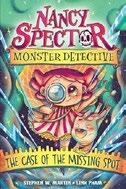
Meet Nancy Spector, a feisty, accomplished detective. Big-eyed, violet-haired, tan-skinned Nancy and her opinionated talking dog, Jinx, have a new client: an invisible professor who has lost his invisible pooch, Spot. The pair search the Professor’s house and lab, as well as Spot’s amazingly well-equipped invisible doghouse. This graphic novel moves briskly, with surprising twists and turns, including an underground encounter with “adorable creatures of death,” in one of many original settings. Pham’s manga-esque illustrations artfully bring to life Nancy’s supernaturalinfused world: a two-headed pterosaurlike creature, a young vampire’s spooky mansion, a diner where monsters nosh on eyeballs and fish heads, and a cemetery where Nancy visits her late parents. When Nancy becomes discouraged after a trap baited with a hot dog catches her monster friend Fred instead of Spot, her parents find a subtle way to show their support as flowers spontaneously blossom on their graves. Nancy is a complex character, direct and sure of herself but humanized by moments of doubt. Ultimately, her self-confidence returns, resulting in a happy conclusion, not to mention a brand-new evil nemesis. Readers of this clever take on the mystery genre will be eager for repeat readings and anticipate a sequel. There’s no mystery here—this is one inspired, poignant, and imaginative tale. (Graphic fantasy. 7-11)
Matheson, Christie | Illus. by Anuska Allepuz | Farrar, Straus and Giroux (40 pp.)
$18.99 | Sept. 24, 2024 | 9780374389802

A lonely child shines a light in the darkness. Mouse feels alone on this chilly, stormy evening. When a power outage plunges the town into darkness, Mouse decides to light a lantern she made at school and set it on her front stoop. An adult, apparently Mouse’s mother, helps her with the candle. The blustery winds blow out the flame, though the lantern itself doesn’t topple; persistent Mouse relights the candle and goes inside. As the storm rages, passersby notice the lantern and are heartened by its light. Young Sam, walking his schnauzer and “worrying about a hundred small things,” smiles at it; Harriet, who’s cycling by in a hurry, is similarly inspired. One by one, they return home to kindle lights of their own. Throughout, Allepuz employs multimedia illustrations in a style reminiscent of G. Brian Karas, with an inviting, soft visual texture. Even greater play with contrasts between cool darkness and warm light might have enhanced the visual storytelling; as it is, the light feels a bit subdued. With guidance from adults, though, young people will come to understand and appreciate the book’s gentle metaphor. Mouse and her parent are light-skinned with dark hair, Sam has skin the color of the background of the page, and Harriet appears to be brown-skinned. Warmly reassuring. (Picture book. 3-6)
youngsters to admire what the outside world has to offer in the colder seasons. Perfectly pitched and paced, McCanna’s elegant, well-chosen words would make this a pleasure to read aloud. “Cold is a feeling, / a quiver, a quake / that sinks to the bone till you shiver and shake.” Though this isn’t a bedtime tale, the text and illustrations have the same calming effect. The artwork is full of curves and swirls—of light, water, snowmelt patterns, even bird wings and raccoon tails. A nicely rounded story arc carries readers from fall to snowy winter. First, author and illustrator introduce a family of deer in a meadow on “a morning / dappled in dew.” The following scenes, mostly double-page spreads, depict other animals in a variety of locations and times of day—even on a desert at night. The last few scenes return to the meadow and woods of the earlier pages and show a human family enjoying the snow as the deer family from the first page grazes nearby. This quiet, dreamy narrative concludes with the backmatter, which explains not only cold, but also climate change. Enlarged snowflake patterns adorn the endpapers. One of the parents is light-skinned, while the other parent and the children are brown-skinned. Lovely. (Picture book. 3-8)
McCurdy, Janelle | Aladdin (320 pp.)
$17.99 | Sept. 24, 2024 | 9781665901338 Series: Umbra Tales, 3
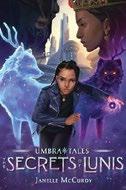
McCanna, Tim | Illus. by Ramona Kaulitzki
Paula Wiseman/Simon & Schuster (40 pp.)
$18.99 | Nov. 5, 2024 | 9781665940504

A serenade to low temperatures. Rhyming couplets accompanied by nature scenes encourage
In this trilogy closer, a girl must learn how to harness both her dark and light energies if she’s to save her community. Umbra tamer and Lightcaster Mia is mourning the death of her father, who sacrificed himself to seal a portal
that allowed the Reaper King to enter the mortal world. Mia and brother Lucas channel their grief into action, using their powers to awaken their grandparents from the unconscious state that Queen Katiya put them in. The Reaper King is now roaming around Lunis, attempting to free Ria, his sister, from the queen’s clutches. Mia’s friends try to comfort her, but her shame over her inability to save her father continues to isolate her. Mia and Lucas work together to translate the Lightcaster book. They also find out that Mia can connect with other Lightcasters while both sleeping and awake, including Ria, and Mia’s best friend, Miles, who’s being controlled by the Reaper King. In past battles, Mia’s impulsive nature and poorly managed powers hurt other tamers; now she’ll have to learn how to be part of a team if she wants to defeat the Reaper King. Readers will enjoy the fantasy quest aspect of the story, and the exploration of grief and its impact will resonate. Mia grows over the course of the story arc and remains an engaging character in this strong end to a series centering on a Black cast. A thrilling adventure that takes readers on an emotional roller coaster. (map) (Fantasy. 9-13)
Messner, Kate | Illus. by Julia Kuo Chronicle Books (60 pp.) | $19.99 Aug. 27, 2024 | 9781452176963

A message to the groundbreaking scientists of the future, with connections to those of the past and present.
“So,” Messner writes, “where are the next great scientists now?” Perhaps they
are “building stuff” in their yards or garages—like Isaac Newton, who made kites when he was a boy, or Lonnie Johnson, who as a youngster built a go-kart engine from scrap. Johnson grew up to design spacecraft for NASA (and invent the Super Soaker); as for Newton, he only became one of the greatest scientists ever. Likewise, as a child in Lebanon, Ayah Bdeir enjoyed taking radios apart and later became a maker of electronic educational toys; as a refugee from El Salvador, Carolina Peñalva-Arana came to the U.S. to become a molecular ecologist. The inspirational tenor will assure young people that they, too, can follow suit, while the variety of subjects—many not typically covered in children’s nonfiction—sets this one apart from similar fare. In a gallery of over 40 people who are diverse in terms of race and cultural background, Kuo depicts this array of scientific luminaries first as children and then as adults, differing in dress and setting but all looking intently focused on what they’re doing or studying. As Messner concludes in a soaring finish, all are also hoping that today’s young “makers” will “be up to the job of creating a better world.” She leaves it to readers to answer her opening question.
A stirring invitation to join the great enterprise. (source list, further reading) (Collective biography. 6-10)
Mirchandani, Raakhee | Illus. by Supriya Kelkar | Little, Brown (40 pp.) $14.99 | Oct. 29, 2024 | 9780316587730
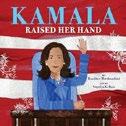
A rapturous tribute to the “first Black American, first woman, and first South Asian American vice president in American history.”
Mirchandani confines this celebratory biographical sketch largely to a set of highlight-reel glimpses of times when Kamala Harris figuratively raised her hand, an act that the author defines expansively as “showing everyone—and
MUMMY & ME
yourself—that your voice is power. And that you are powerful.” So, having learned about the gesture on Civil Rights marches with her parents, she “stood up” to a bully in kindergarten (though precisely what this entailed is never made clear), wrote anti-war letters to President Nixon, organized a children’s protest when she was 12, and went on to law school. Later, she stood for various political offices, including, as a tacked-on finale notes, “when America needed a president—and Americans needed hope,” in the summer of 2024. In textured cloth and cut-paper collage scenes, Kelkar shows Harris raising her hand as a child, in court, on the campaign trail, and while taking an oath of office; a final scene shows her waving to a silhouetted crowd that’s waving back. “You aren’t just the future,” the author writes, addressing readers in a personal afterword; “you are the present, too.” She closes with a photo of her own young daughter, hand raised, dressed in a “Kamala” shirt.
High on inspirational language, somewhat vague on specific facts; still, demand will be brisk. (author’s and illustrator’s notes) (Picture-book biography. 6-8)
A Monster’s Tale
Mohiuddin, Danesh | Owlkids
Books (32 pp.) | $18.95 Aug. 27, 2024 | 9781771475952
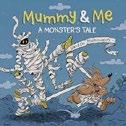
Mohiuddin pays homage to the loving bond between parent and child.
A “wee wolf” and its mother—a
literal mummy—frolic at night. Awakening from a “good day’s sleep,” they rise from their casket bed. Wolf helps Mummy prepare lunch: midnight stew, filled with bones and eyeballs. “I try to be a perfectly well-behaved monster for Mummy,” Wolf tells us. “I use my indoor voice. I have excellent table manners.” (The rollicking illustrations clearly reveal otherwise.) Like all kids and parents, Wolf and Mummy do have fractious moments, but music soothes their conflicts. Finally, at dawn, Mummy announces that it’s bedtime. Time to clean up messes, brush teeth, and bathe. Naturally, Mummy reads Wolf a story: Hairy Tales. Wolf falls asleep knowing that no matter what, Mummy will always be there, providing love and support. Wolf wants to be just like Mummy one day “and do all of the most Mummy things there are to do.” And on nights when she’s “feeling a little undone…I will always be there, too.” This sweet, knowing, tonguein-cheek nod to a genuinely loving parent-child relationship, written from the youngster’s perspective, will leave readers smiling. The real draw is the crisp, dynamic artwork filled with very witty, nonfrightening yet monstrous details. Wolf is endearing; Mummy is very loosely bandaged and has yellow, glowing eyes. Pure fun and proof that kids can sometimes be monsters, but we (usually) wouldn’t have it any other way. (Picture book. 4-7)

Morgan, Karen Koepcke | Illus. by Nelke Roose | Clavis (32 pp.) | $18.95
Nov. 12, 2024 | 9781605379876
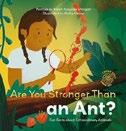
Younger readers are invited to appreciate the special abilities of a variety of wild animals.
Morgan presents a series of rhetorical questions (“Could you eat your food while your head is upside down?” or “Could you eat 3,000 treats in one single night?” or “Could you drink 20 gallons of water in under 20 minutes?”), then uses the answers as jumping-off points for sharing information about animals including flamingoes, bats, and camels. While much of the information is interesting and age- appropriate, such as how bats use echolocation and ants are able to carry burdens many times their own weight, some facts are poorly chosen or even potentially dangerous. The stones in Roose’s accompanying illustration are unrealistically hefty, but the awkwardly phrased “Could you…gulp down rocks without them being chewed?” (as several crocodilians do) could well prompt reckless readers to try lithophagy. “Penguins are flightless birds,” Morgan observes on another page, “which means they can’t fly.” Elsewhere, rather than offer possible reasons why sloths descend to ground level to defecate, she airily takes them to task for not staying safely up in the trees, and anthropomorphically suggests that mosquitoes “enjoy” the smell of stinky feet. The uneven text is presented alongside illustrations of animals and children with a variety of skin tones sharing outdoorsy scenes.
Promising in concept, careless in execution. (Informational picture book. 6-8)
Munro, Carol Joy | Illus. by Chelsea O’Byrne | Minerva/Astra Books for Young Readers (40 pp.) | $18.99 Dec. 10, 2024 | 9781662651212

Munro draws from actual events for this story of Katerina and Luka, a monogamous stork couple whose bond endures even the harshest setback.
During the birds’ southward migration, Katerina is shot down over a village. A farmer and a little girl rescue her, bring her home, and nurse her back to health. Her mate remains nearby, afraid to approach, but eventually comes to her. Katerina, unable to fly, urges Luka to leave before winter. He returns late the next spring. They have three chicks together, and before Luka leaves again, he promises to return early next spring with their children, “when the magnolias bloom.” The real story, recounted in the author’s note, is somewhat different but still focuses on the couple’s fidelity. Munro explains that a bird named Malena was shot while traveling from Croatia to South Africa, 8,000 miles away; a villager cared for her and built her a nest on the roof of his house. A male stork, Klepetan, noticed Malena, and the two formed a relationship. Klepetan would migrate but return to her each spring, year after year. Livestreamed
This long-distance tale of animal devotion will captivate readers, especially bird lovers.
SPRINGTIME STORKS
video kept the world apprised of their activities. Narrated by Katerina, the story is both immediate and tender, ideal for individual and group sharing. The large white birds with orange beaks swoop gracefully across green fields in attractive naïve-style illustrations rendered in chalk pastel, colored pencil, and digital pencil. This arresting long-distance tale of animal devotion will captivate readers, especially bird lovers. (information on the other birds mentioned in the story) (Picture book. 4-7)
Nader, Santiago | Illus. by Paula Wegman | Kalaniot Books (32 pp.) $19.99 | Oct. 15, 2024 | 9798986396583

A child’s special light shines brightly in the world.
In many ways, Dani, a Jewish boy living in Buenos Aires, is an average kid, but a bright light follows him everywhere. It cheers him when he’s frightened, but sometimes it annoys people, like at the movies or on Shabbat, “when the beauty of the candles’ light [is] impossible to see.” Classmates complain that Dani’s light gets him special attention, and Dani worries that no one will come to his upcoming birthday party. But his mother tells him, “The light of your soul is so big that it overflow[s].” His birthday is the perfect time to remember how special he is and to share himself—and his light—with the world. Dani’s friends arrive for the party, and though the glare of his light initially causes some mayhem when the gang plays a game of futbol, everything changes when Dani blows out his candles. He wishes for his friends to have lights, and they do—albeit temporarily—and are delighted, realizing they also have “something special to share with the world.”
Featuring exuberant, loose-lined
illustrations, this is a sweetly told, affirming tale, though the philosophical implications of Dani’s light may escape some readers. The backmatter discusses how many Argentinian Jews have incorporated both elements of their identities; the use of flowers throughout the illustrations is one such example. A tale of a boy coming into his own that also shines a light on Jewish Argentinian culture. (what’s Jewish about a birthday? glossary) (Picture book. 5-8)
Nicholas, Jamar | Illus. by Jamar Nicholas Colors by Bonaia Rosado | Graphix/ Scholastic (240 pp.) | $12.99 paper Oct. 1, 2024 | 9781338744200 | Series: Leon, 2
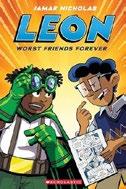
A would-be crime fighter discovers that swagger is not a superpower—just the opposite, in fact. Eager to get on with his one-kid crusade against bullies, which began in the series opener, Leon the Extraordinary (2022), Black fifth grader Leon irritates his racially diverse schoolmates with big-headed boasts and trash talk: “What’s up, civilians!…Your hero is here!” He also gets on Principal Principle’s bad side (“One moment you’re protecting people from danger, and the next day you are the danger”) by instigating confrontations with the Tardy Boys and other menacing elements. Leon even alienates best friend Carlos with his attitude. Meanwhile, a reality TV show crew, who are filming at the posh home of volatile hall monitor and shape-shifter Clementine, turns out to have a secret and nefarious agenda. Suddenly, Leon’s mom and other superheroes are in serious danger. Both
storylines rush along in big, bright, action-filled panels. This sequel finishes abruptly with a sudden cliffhanger, but feuding preteens Leon and Carlos make their peace after sharing valuable insights for readers to reflect on about sticking with friends and making good, sensible choices.
An appealing blend of action and personal growth that will set readers up to anticipate the next series entry. (Graphic adventure. 8-11)
Oet, Rainie | Illus. by Mathias Ball
Astra Young Readers (32 pp.)
$18.99 | Dec. 3, 2024 | 9781662620027

A child dreams of friendship. Robin, a nonbinary kid who lives with their uncle Miles, sits alone in the basement, bored and lonely, as they do every night. Suddenly, a “tall figure in a thundery coat” enters: the Cat-Headed Wanderer. The dapper, anthropomorphic feline whisks Robin to a magical purple treehouse filled with mystical characters from Robin’s dreams. Everyone has come together to celebrate Robin’s birthday. Elated, the child feels “like their body is made of feathers or flowers all opening at once.” When Robin announces their plans to stay here forever, the Cat-Headed Wanderer interjects: “Actually, this is just for tonight. But we exist in the real world. There are so many of us…You just have to find us.” Abruptly, the party ends, and Robin returns home; soon after, Uncle Miles walks in with a birthday cake. Robin falls asleep that night, happy and hopeful for “friends just waiting to be found.” Ball’s swirling comic images set
A cozy celebration brimming with traditions and sisterly love.
an enchanting tone but do little to make up for the awkward flow of the story. And while it’s heartening to see a nonbinary child centered in a picture book, Oet’s sudden transitions and piecemeal revelations are likely to leave readers confused rather than uplifted. Midway through the party, for instance, Robin is presented with old photos of them with their mother and father, but it’s never clear where their parents are now or why Robin is so lonely. Human characters are tan-skinned. An uneven plot leaves this tale without much sparkle. (Picture book. 5-7)
Park, Michelle W. | Illus. by Hyewon Yum | Random House (32 pp.) | $14.99 Dec. 3, 2024 | 9780593567302

Two siblings eagerly prepare for the Korean Lunar New Year. Madeleine excitedly wakes her younger sister, Eloise. “It’s Seollal! We have to get ready for the Lunar New Year party!” she exclaims. Madeleine’s already getting out their garments as Eloise is still reluctantly stirring. After the girls don their hanboks, they go downstairs to see that Mom has prepared the charae-sang, the ceremonial table covered with food offerings to the ancestors. They hurry to make mandoo, or dumplings, and join their relatives for yutnori, a game where players must strategically throw marked sticks. Mom calls the sisters for sebae, and the girls bow in gratitude to their elders. A warm sibling dynamic is apparent as the playful narrative unfolds, with bossy but loving Madeleine explaining various elements of the holiday to Eloise (and readers). Yum’s deftly blended colored pencil illustrations emphasize the joy of the celebrations; her knack for capturing children’s expressions is especially evident on a spread depicting Eloise intently attempting to create the perfect mandoo. Some drama ensues as Madeleine realizes she’s forgotten to
compose a poem to read to her visiting family (as she does each year), but with Eloise’s gentle encouragement, Madeleine writes and recites her verse. Instructions for a craft project and a recipe for mandoo follow, encouraging readers to further explore the holiday. A cozy celebration brimming with traditions and sisterly love. (glossary) (Picture book. 5-8)
Pintos, Octavio | Illus. by Martín Iannuzzi | Little Gestalten (52 pp.)
$24.95 | Oct. 8, 2024 | 9783967047769
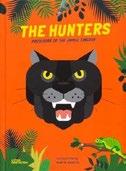
Fact files on carnivorous beasts, from scorpions to swordfish. Rather than construct narratives for their 20 randomly ordered selections, Pintos and Iannuzzi toss pithy fact bits and spot images across each spread around a full body portrait, with inconspicuous arrows here and there to link related items. Though at least systematic when it comes to providing range maps, typical sizes and weights, conservation status, and like basics, several entries may leave readers struggling to decode statements—for instance, the rat’s “predatory instinct is activated only when hungry.” Readers may also be left wondering why only about 3,000 electric eel young are born when a female lays roughly 17,000 eggs. The stylistic art is arresting, making vibrant use of texture to depict patterns on the Indian cobra, the Tasmanian devil, and the panther. Brief descriptions of the various animals ramp up the drama: The eagle is “silent and powerful,” while the heron’s “beak never misses.” A final note on food chains headed “Everybody Hunts” (herbivores may take rightful umbrage) closes out an informative if somewhat disorganized survey of the “red in tooth and claw” set. The only human figures are small silhouetted bodies or body parts included to show scale.
Chewy fare for animal lovers, best suited for random browsing. (websites) (Informational picture book. 6-8)
Polacco, Patricia | Paula Wiseman/ Simon & Schuster (84 pp.) | $19.99 Dec. 3, 2024 | 9781665938426
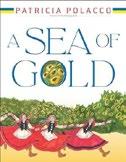
Three generations of Ukrainian sunflower farmers thrive until Russia wages war on their country. Every good family saga features a wedding, and this one boasts two. First, Alina marries Fedir. The newlyweds receive land with a dacha built on it to set them up for the future. Soon they’ll have a “sea of gold”—sunflowers that provide food, oil, and mulch. Alina becomes a baker and makes offerings to “BA BA SPODIVATYSYA,” an ancient oak tree. The couple’s daughter, Yana, is born in 1991, as Ukraine wins its independence from Russia. Years later, the second wedding—Yana’s, to a young man named Andreyev—is accompanied by rumors of Russian aggression toward Ukraine. Yana and Andreyev’s daughter, Oxana, is born with the expectation that she, too, will farm sunflowers. Then the Russians invade. The family house is set on fire; Oxana stops speaking. Alina, Yana, and Oxana, separated from their husbands and fathers, escape to Poland, then to America to live with Alina’s brother. Oxana’s sadness persists until it’s time to plant sunflower seeds there. Hidden within her doll are her family’s sunflower seeds, and sharing them reawakens her joy as she’s reminded of her homeland. With this methodically paced, poignant story, Polacco draws on her own Ukrainian heritage with illustrations of babushkas, their homes festooned with icons that evoke folksy farm scenes and resplendent sunflower fields.
An empathetic, heartbreaking look at how warfare can tear families
apart—and how traditions still endure. (author’s note, glossary) (Picture book. 7-10)
Richter, Jennifer Ann | Holiday House (240 pp.) $18.99 | Oct. 22, 2024 | 9780823456567

A fifth grade girl experiments with friendships and grows to love birds. Nyla Braun, unkindly dubbed “Encyclopedia Braun” by her classmates, is taking the spring birding tournament between Anderson Elementary’s City Birders and Penn Elementary’s Burb Birders very seriously. She’s determined to count the most birds and learn all the bird songs and calls, allowing her to leave Anderson “on a high.” Becoming obsessed with her interests isn’t new—but this time, she also wants to improve her social status by leading the City Birders to victory. Nyla’s dreams start to come true when the wealthy Portia invites her to study for the trivia portion of the competition. Nyla already has a best friend, but Tasha isn’t into birds, and Nyla can’t put birding—or her chance at popularity—on hold. Thankfully, Nyla gets abundant support from Aunt Cherise, Granddad, and her parents, who help her with both birding and feelings (even if Nyla sometimes struggles with her mom’s relentless positivity). In her debut, Richter skillfully addresses mild tensions between the City Birders (who are mostly Black, like Nyla) and the Burb Birders (who are mostly white) and shows how common interests can unite people. With clear, descriptive writing, a tight storyline, and plenty of bird-related information (including excerpts from Nyla’s birding journals and checklists), readers may feel inspired to explore birding, too. Quietly shares hard-won wisdom on friendship as well as a well-informed passion for birding. (author’s note, resources) (Fiction. 8-12)
Rocco, Hayley | Illus. by John Rocco
Putnam (32 pp.) | $16.99 | June 25, 2024
9780593618127 | Series: Meet the Wild Things, 1
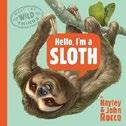
A genial slowpoke invites young readers to hang out in the trees. “Oh, hiiiiiiiii!”
Kicking off a series of basic encounters with threatened or endangered species, the Roccos wake a smiling brownthroated three-toed sloth from a nap so that it can describe its lifestyle in Mr. Rogers–style simplicity. “Actually, the only time I climb down to the ground is once a week to poop. How often do you poop?” Along with introducing the algae, fungi, and insects that live in its long hair (“I’ve got hundreds of friends with me wherever I go”) and describing other sloth species, the arboreal narrator frets about predators like harpy eagles and the way logging has left gaps in the leafy understories, which make new food sources hard to reach. Luckily, though, there are people who plant new trees and string rope bridges between patches of forest to climb across. “ Will you help, too? ” Various leads to organizations that are working to preserve and restore sloth populations cap a closing set of additional sloth feats and facts, plus a more detailed explanation of the threats facing these slow, nonaggressive creatures. Human characters are diverse. A particularly absorbing overview. (Informational picture book. 5-7)
Rocco, Hayley | Illus. by John Rocco Putnam (32 pp.) | $16.99 | June 25, 2024 9780593618158 | Series: Meet the Wild Things, 2
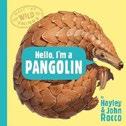
Join the only warm-blooded animal with scales on a quest for ants and termites over African grasslands. Not to be confused with giant anteaters, armadillos, or anything else (“some people even say I
Mashed-up fairy tales yield intriguing results.
ALL AT ONCE UPON A TIME
look like an artichoke with a face”), the eight species of pangolins are actually related to bears and cats, walk on their hind legs (“like a T. rex!”), and can roll up into an armored ball to repel predators. Unfortunately, such defenses don’t help against human predators, who misguidedly harvest pangolin scales for supposed medical purposes. According to a closing note, humans poach up to 200,000 pangolins a year, giving them the status of “most illegally trafficked mammal on Earth.” Still, glimpses of people working to preserve pangolin populations (perhaps including the offstage child whose brown-skinned hand is inserted into one of the finely detailed illustrations) add an encouraging note; the closing fact file offers leads to animal-friendly organizations to support. Scenes of a lion fruitlessly trying to munch on a rolled-up pangolin and later views of an irrepressibly cute pangolin baby add plenty of visual pizzazz to this plea to readers’ conscience. “Okay, well, there’s oodles more ants to eat, so we’d better get going,” says the pangolin parent, strolling off into the sunset. “But I hope to see you again soon!” Human characters are diverse.
An engagingly informal appeal. (Informational picture book. 5-7)
Rockliff, Mara | Illus. by Gladys Jose Abrams (48 pp.) | $18.99 Sept. 10, 2024 | 9781419768170

Mashed-up fairy tales yield intriguing results. From the very first page, readers are welcomed into bright and cheery Fairyland, which features rounded hills, green grass, and a crooked tower, with a distressed fair maiden peering out of a high window. “Once upon a time,” starts this story,
the text presented in distinctive gold lettering, “lived a princess with the longest…” Flipping to the next page reveals the word nose ; this blondhaired, Rapunzel-like character’s schnoz grows every time she tells a fib. Riding by on a white horse, the prince hears her cry and climbs the tower via a nearby beanstalk. With every page turn, a familiar character veers off into a different tale. This is an entertaining read-aloud choice; giggles will immediately ensue, though there are lessons to be learned as well. Many of the twists bring a kinder storyline into focus: Princesses are tired of waiting to be rescued. The big bad wolf falls into a funk, and the little pigs help cheer him up. The zany cartoon illustrations effectively capture the humor of each switch. The intentionally absurd plot speeds by; familiarity with the source material is a must for young readers. Overall, Rockliff and Jose emphasize the importance of treating others with compassion—perhaps a better lesson than those offered by the original tales. Human characters are diverse. Sidesplitting exercises in absurdity. (Picture book. 5-8)
Román, José Carlos | Illus. by Julio Antonio Blasco | NubeOcho (40 pp.)
$16.99 | Nov. 12, 2024
9788410074224 | Series: Somos8

Being the fastest isn’t the only way to win.
The yearly animal race is almost here, and all the forest creatures involved have been training in their own way, in part because the route is different every time and no one knows what the new race will be like. Colorful and
energetic illustrations show that Rat has been weight training with a giant ball, Frog has been practicing her jumps, Fox has been “working his tail off,” and Rabbit has been running laps. Rabbit’s friend Snail, however, is opting out because he knows from experience that he’ll end up in last place. At the suggestion of her mom, Rabbit decides to help Snail and starts by gathering the other animals together. Each animal has an idea, but Rabbit doesn’t want to be obvious. Then she comes up with a solution that will allow Snail to play to his strengths (first one to reach home first wins!), resulting in a triumph for Snail—the race, sure, but more importantly, because he has “the best friends in the whole world.” Everyone shares in his joy. This celebration of consideration and creativity makes its points loudly and clearly and is ripe for an investigation into and discussion of social-emotional and problem-solving skills. Kindness and friendship are the winners in this tale of animal competition. (Picture book. 3-7)
Tiana’s Perfect Plan
Rose, Anika Noni | Illus. by Olivia Duchess | Disney-Hyperion (48 pp.)
$18.99 | Oct. 22, 2024 | 9781368081603

Disney’s Princess Tiana sets out to make the perfect cake for a royal Mardi Gras visit.
Tiana leaps from the film The Princess and the Frog (2009) to the page in this book written by the Tony Award–winning voice of Tiana, Rose. When her husband Naveen’s parents, the queen and king of Maldonia, announce that they will be arriving for Mardi Gras, Tiana begins planning a special treat for her royal guests. She secures a treasured recipe for king cake and begins searching the bayou for a “dollop of magic glow” to enhance her planned “king and queen cake.” Even though the final product is imperfect, Tiana realizes that the real magic is her love and effort. The story includes a peppering of French words and phrases, thoughtfully explained to
readers: fêted, je ne sais quoi, and even simply voilà. Rose’s Tiana is capable and determined, leaving Naveen behind to prepare the house while she ventures out for her special ingredient. Even her accompanying manservant, Raha, bumbles in comparison with her confident proficiency. The illustrations are a match for Disney’s, and Raha’s missteps—seen mostly in the artwork—will make readers giggle. Besides showing Tiana as a quick, skillful problem solver, the story also has a sweet message of the value in doing your best and doing it with love. Tiana is Black; most characters are pictured with brown skin. A capable, strong role model takes charge in this entertaining, worthy read. (Picture book. 5-7)
Roselló, Jarod | Random House Graphic (112 pp.) | $10.99 | Dec. 17, 2024
9780593427811 | Series: Super Magic Boy, 2

A boy and his toy dinosaur leave the planet in search of the perfect present. Hugo and his dino sidekick made their debut in a flurry of messy, creative backyard adventures. In their second outing, their antics take them out of this world, on a fantastic, apparently imaginary voyage to the planet of Space Tigers. Their purpose? To find a present for Hugo’s mother, whose birthday is approaching. When Dino asks what Mami likes, Hugo replies, “weird rocks!” And what better place to find them than in outer space, “where everything is weird!” In short order, the pair blast off to Space Tiger planet, whose feline inhabitants have run out of power because they’ve lost their Magic Power Stone. Hugo gleefully transforms himself into an extraterrestrial feline to uncover a series of clues and solve this mystery. The hunt leads through spikes and sludge, a treacherous tunnel, and finally to a volcano filled to the brim with pie. The duo’s original mission becomes a bit
Sanderson, Brandon | Illus. by Kazu Kibuishi | Roaring Brook Press (48 pp.)
$19.99 | Sept. 24, 2024 | 9781250843661

In this collaboration between sci-fi novelist Sanderson and Amulet creator Kibuishi, an unreliable narrator informs readers that here be no dragons. “A boy sat in a chair.” The book opens on a bespectacled, light-skinned child in old-fashioned attire. The narration continues, “That’s it. He just sat in a chair,” while on the opposite page, the boy’s chair has unexpectedly whisked him heavenward. The narrator attempts to convince readers that just sitting in a chair is boring. As the story continues, however, the boy is attacked by an array of sky ruffians operating vessels; fight scenes and impressive explosions ensue. A dragon makes an appearance as the narrator drones on about how dull the story is. Kibuishi’s detailed cartoon images depict an enticing steampunk-esque world. Adults reading this book to kids might want to read the text first without the pictures; on a second run they can show off the images, neatly illustrating the important interplay of text and visuals in sequential art. Unfortunately, for all that the illustrations maintain the action at a fair clip, near the end the plot grows muddled as the boy gets out of his chair but then tumbles to the ground: Was he falling and then trying to stop himself?
>>> secondary to the quest, but Roselló’s chaotic, comedic stream-of-consciousness voice perfectly captures the zigzagging narrative logic of a young mind at play. Hugo, Dino, and their new Space Tiger buddy are all delightfully wild-eyed and wiggly-limbed, and the illustrations buzz, pop, and wobble their way to their final flourish—a ride home on a speeding asteroid! Hugo and his parents are brown-skinned and cued Latine. A satisfying and silly journey that revels in imaginative play. (Graphic fiction. 4-8)

The actor lends her voice to her Frozen co-star’s PictureFace Lizzy.
Kristen Bell took over narration duties on the audiobook edition of Josh Gad’s new children’s book. Bell, the actor known for her roles in the series Veronica Mars and The Good Place, and her voice acting in the Disney hit films Frozen and Frozen II, narrated Gad’s PictureFace Lizzy, a picture book illustrated by Marta Kissi. The book follows Eve, a

girl who is determined to get her parents to buy her a popular doll; a critic for Kirkus called it “a humorous yet balanced take on a hot topic.”
PictureFace Lizzy is the first book from Gad, who also starred in the Frozen films, as well as the Broadway musical The Book of Mormon. The actor has a memoir, In Gad We Trust: A TellSome, coming next year.
Gad told People, “The second I realized my voice is simply too deep to bring an adolescent girl to life, I knew that the only person for the job was my friend Kristen Bell. I am therefore so grateful that I was able to trick her into being the audiobook narrator of PictureFace Lizzy by telling her she was recording dialogue for Frozen 3.”
PictureFace Lizzy was published on Sept. 17.—M.S.


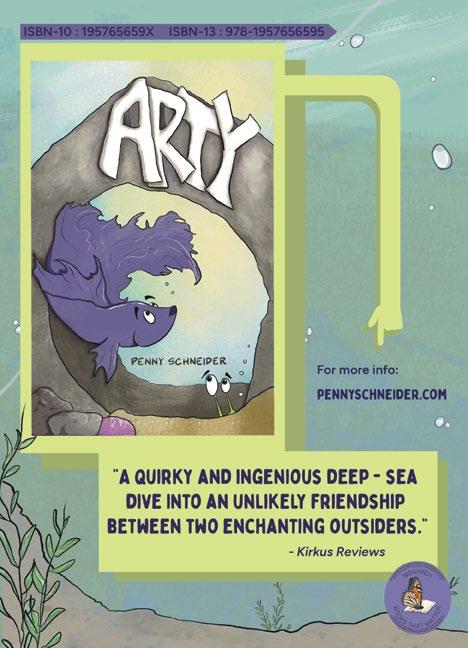

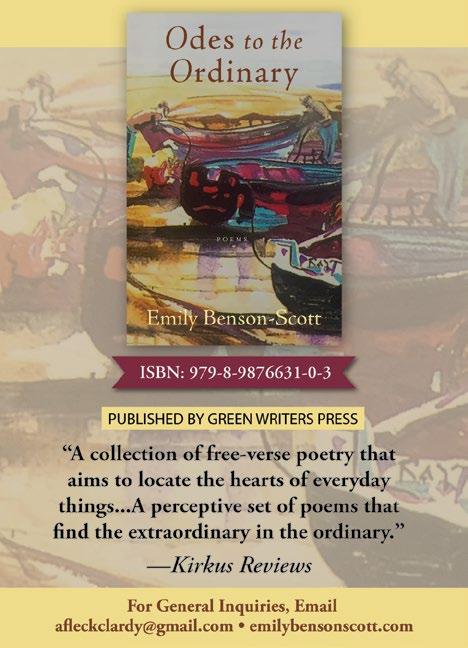
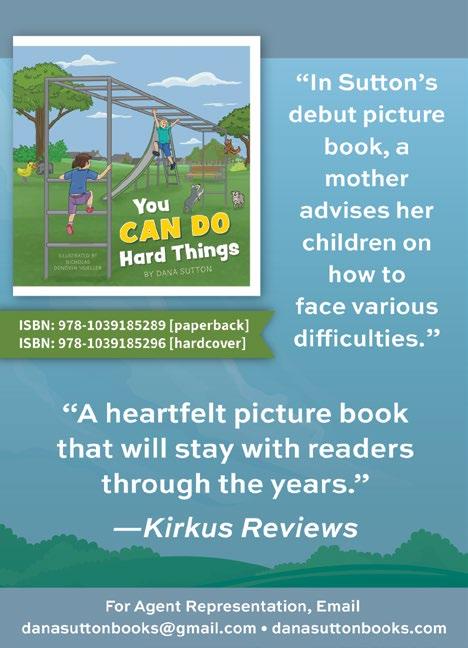
Amazon MGM Studios is developing the movie based on Beverly Cleary’s 1965 book.
Beverly Cleary’s The Mouse and the Motorcycle is headed to the big screen, publisher HarperCollins announced in a news release.
The 1965 children’s novel, illustrated by Louis Darling, follows Ralph S. Mouse, a daredevil rodent who befriends a boy staying in a California hotel. A critic for Kirkus wrote of the book, “The whimsy is slight—the story is not—and both its interest and its vocabulary are for the youngest members of this [8- to 12-year-old] age group.”
Cleary wrote two sequels to the book, and the original novel was adapted for a stop-motion animated film in 1986 by director Ron Underwood.
The new adaptation, being developed by Amazon MGM Studios, will be a hybrid film, incorpo -
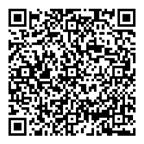

rating live action and CGI. Writing the screenplay are David Guion and Michael Handelman, who also wrote the scripts for the films Night at the Museum: Secret of the Tomb, Slumberland, and Harold and the Purple Crayon Cleary, who died in 2021 at the age of 104, was a prolific author, but her books haven’t been adapted for the screen frequently. Her series of books featuring the memorable character Ramona Quimby formed the basis of Ramona, a Canadian television series that launched the career of actor Sarah Polley. The novels were also adapted into Ramona and Beezus , a 2010 film directed by Elizabeth Allen and starring Joey King and Selena Gomez. —M.S.

Some adult intervention may be required to clarify what precisely is happening on the page. Sky-based pyrotechnics make for a fun if somewhat confusing telling. (Picture book. 4-7)
Scillian, Devin | Illus. by Tim Bowers | Sleeping Bear Press (32 pp.) | $18.99 | Aug. 1, 2024 9781534112995 | Series: Memoirs

A day in the life of a very busy pooch. A fluffy white dog named Topanga starts the day at 6:30 a.m. First, Topanga awakens the rest of the household: parents “Big Guy” and “Lady,” children “Ponytail,” “Moptop,” and “Freckles,” and brand-new baby “Poop-and-Cry.” Topanga helps out all day long, finding Ponytail’s tights, keeping Poop-and-Cry occupied while Lady works on her computer and Big Guy does laundry, and alerting Lady to a kitchen fire. Later, Topanga saves Freckles from the neighbor bully dog Buster and lends a sympathetic ear when Moptop describes a bad day at school. When the family erupts into a series of arguments, Topanga knocks over the flour in the kitchen, distracting everyone from their various crises. The day comes to a close as Topanga entertains Poop-and-Cry, who says her first word: Topanga! Scillian and Bowers add another winning volume to their successful Memoirs series. Scillian’s text, narrated by Topanga, perfectly captures a dog’s perspective. Topanga is a mix of exuberance, self-confidence, and patience—everything readers young and old love about dogs. Though Topanga’s a crucial part of this family, the humans are often oblivious to the ways
in which their pet saves the day; readers will giggle knowingly. Bowers’ energetic cartoon illustrations ramp up the humor. The family is light-skinned. A fantastically fun tale; little ones longing for their own dogs will come away even more eager for a fourlegged friend. (Picture book. 4-9)
Shah, Amar | Scholastic (224 pp.)
$7.99 paper | Oct. 15, 2024
9781338840346 | Series: Play the Game, 2

Looming team tryouts don’t quite overshadow friendship and family crises for a b-balling Florida seventh grader. Energized by summer lessons in both hoops and life in Hoop Con (2024), Raam Patel faces a barrage of challenges as middle school commences: financial worries at home and the dismaying discovery that his bullying, charismatic basketball nemesis Payton Newman is now his classmate. Payton isn’t just a rival for a coveted spot on the school team; he’s also pulling Raam’s lifelong best friend, Cake, into his circle. Despite Raam’s obsessions with practicing and staying focused on the boards in the face of Payton’s jeering, the story contains little direct hoops play. What stand out instead are Raam’s experiences of daily life, from the rich evocation of the values and rhythms in his Hindu Indian American family and community to his crush on a classmate and his repeated efforts to get his coach to stop mispronouncing his name as “Ram.” Raam also wrestles with his dawning
A heartening tale of cultural clashes, family drama, and, ultimately, forged bonds.
V. MALAR
realization that Cake’s obsession with his social media presence and getting in with Payton signals a fading friendship. Sports journalist Shah really puts it to his protagonist with a family emergency just as the tryouts are beginning; seeing how he responds will give readers more good reason to cheer him on. Light on hoops action, but when it comes to social-emotional substance, nothing but net. (Fiction. 9-13)
Smith, Miranda | Illus. by Kaja Kajfež, et al. Bright Matter Books (224 pp.) | $24.99 Oct. 15, 2024 | 9780593903353

Th is companion volume to Smith’s A Dinosaur a Day (2024) presents one extant animal species per day through illustrations, fast facts, and short informational paragraphs. Despite the subtitle, the book covers a full leap year and includes 366 vertebrates and invertebrates from all over the world. Each spread includes vignettes showing the animal in its habitat. The fact lists cover the scientific name, animal group (such as reptile, fish, or bird), length and weight in metric measurements, diet, location, and conservation status. An explanation of the International Union for Conservation of Nature’s rating system appears on an early spread that also loosely defines the animal groups. At the end of the work, two spreads provide examples of animals that are currently endangered as well as conservation success stories, all of which appear earlier in the book. Twice each month, Smith groups animals according to a theme: sometimes by habitat, sometimes by habits. The attractive, engaging full-color illustrations are reasonably realistic and clearly recognizable. January 1 shows a polar bear mother and two cubs walking across ice floes. On the last day of the year, an Asian elephant adult and child stroll through the jungle. Readers
will be drawn to the varied examples of both familiar and less common species. The text concludes with a quiz and puzzles (which are not too difficult), a glossary, and an index, but no sources or suggestions for further research.
A treat for young animal lovers. (Nonfiction. 5-9)
Subramaniam, Suma | Illus. by Archana Sreenivasan | Candlewick (128 pp.) | $17.99 | Nov. 5, 2024 9781536229110 | Series: V. Malar

Malar can’t wait for her visiting American cousins to arrive. It’s almost Pongal, the Tamil harvest festival, and this year, 10-year-old Malar is especially excited. Her cousins Priya, 11, and Kamal, 6, are traveling all the way from their home in Seattle to Pori, the coastal Indian village where Malar and her family live. Although Malar is determined to be a “superhost,” her cousins don’t make it easy. Kamal ruins the lotus kolam design that Malar draws outside their house, and Priya condescendingly calls Malar’s house “tiny” before proclaiming that she’s counting the days until she can return to “civilization.” On top of all this, Malar has trouble understanding Kamal’s and Priya’s accents and feels left out of their secret-swapping. It’s only after Priya admits to Malar that she is homesick that Malar begins to empathize with her cousins. As the trio celebrate
Pongal with henna, bonfires, and sweets, this understanding grows until the cousins are closer than ever. Malar’s honest, insightful narratorial voice deftly guides readers through rural Indian life, Pongal traditions, and the experience of hosting Western visitors in the global South. While the cousins’ reconciliation feels a bit abrupt, overall, the layered characters and authentic conflict will resonate with a wide range of readers. Final art not seen.
A heartening tale of cultural clashes, family drama, and, ultimately, forged bonds. (Fiction. 7-10)
Walstead, Alice | Illus. by Emma Gillette & Andy Elkerton | Sourcebooks Wonderland (40 pp.)
$12.99 | Dec. 10, 2024 | 9781728293035
Series: How To Catch…

Having attempted to catch the Easter Bunny, Santa Claus, and the Gingerbread Man, a group of kids set their sights on a groundhog. After two score and counting How To Catch books, this latest addition suggests that there’s nothing left to capture. The verses are feeble (“But I’m chilled to my bones deep inside / I feel the wind across my backside”), while the illustrations are mundane. On one page, a child crouches in a drift eating “stick cheese” (apparently because it rhymes with “trees”). Another catches a football thrown by a friend but falls across a stone slab, breaking it in two. Far below, the anthropomorphic groundhog’s breakfast is disturbed; his cup,
A globe-spanning tribute to art and its many forms of expression. WHAT IS COLOR?
saucer, creamer, and sugar bowl are jostled. “Tomorrow is his big holiday,” the children note. “Will a shadow fall outside the den? / We need him to answer this riddle: / we know winter ends but not when.” Ultimately, though the intrepid hunters set a series of traps, they’re disappointed to catch only a rabbit. The groundhog, it turns out, is hibernating in an elaborate wrought iron bed. On the very next page, the mayor holds up the beast. How was he caught, then? We don’t know. What was his verdict on winter’s duration? We don’t know. Will the series ever stop? We can only hope. Human characters are diverse. This catch is fumbled. (Picture book. 4-7)
Weinberg, Steven | Roaring Brook Press (144 pp.) | $19.99 Aug. 20, 2024 | 9781250833419

An illustrator’s valentine to colors is a globe-spanning tribute to art and its many forms of expression. Taking each hue on the color wheel in succession and wedging in chapters on pink, black, and white, Weinberg answers the titular question in a lively and thought-provoking if “superly duperly” simplified way: Color is art, science, a recipe, a feeling, language, time, change, and, well, “Everything!” Though he only passingly refers to artificial colors, the topics he addresses are fascinating and clearly explained, from the flora and fauna that humans have ground up to create natural pigments to the electromagnetic spectrum to the arsenic-laced green wallpaper that may have killed Napoleon. Rightly noting that different people and
cultures actually see colors differently, the author presents examples of art from a broad range of places and eras. Readers can compare and contrast Jan van Eyck’s Arnolfini Portrait or King Tut’s mask with the art of First Nations Australian painter Emily Kame Kngwarreye and Haida wood and stone carver Charles Edenshaw. Conducting his tour in “person,” Weinberg incorporates informally drawn images of himself and his dog throughout, tucking in other artist portraits as well, notably in a hilarious spread of Raphael’s School of Athens. The result is a winning, impressively comprehensive multidisciplinary take on the topic. Closing with a wealth of further information and resources, Weinberg includes lists of color-centric stories, plus recipes for making natural dyes (with adult help). People represented feature a wide range of skin tones. A droll, effervescent, and wide-ranging work. (glossary, map, table of elements, sources, index) (Nonfiction. 10-13)
Kirkus Star
Widener, Leslie Stall | Illus. by Johnson Yazzie | Charlesbridge (32 pp.) | $17.99 July 9, 2024 | 9781623543969

A single act of kindness has a ripple effect over generations. In 1845, a young Irish girl pulls a rotting potato from the ground: “It is the beginning of the great hunger that changed Ireland.” This devastating news travels across the Atlantic Ocean. In 1847, the Choctaw people connect the dire situation in Ireland to their own plight during the Trail of Tears and decide to help by sending money. The Irish people don’t forget their generosity; in 2017, they honor the special friendship with a sculpture titled Kindred Spirits , created by Alex Pentek. During the 2020 Covid-19
pandemic, the Irish reciprocate by collecting donations to aid the Choctaw, Navajo, and Hopi Nations. Widener (Choctaw Nation) vividly sets the stage with lyrical writing that appeals to the senses. Choctaw phrases such as “shilombish ittibachvffa” (“kindred spirits”) are sprinkled throughout. The author breaks up the narrative with illuminating sidebars that offer additional information about each crisis. Yazzie’s (Navajo Nation) folk art–esque illustrations pop with emotion and come alive from his vibrant use of color. No matter their historical background, readers will come away with a strong understanding of these topics—and deeply moved by the compassion demonstrated by the Irish and Choctaw communities. Backmatter, including a timeline, provides more historical context.
A richly detailed, phenomenally told true story about paying it forward through history. (author’s and illustrator’s notes, glossary, further reading) (Informational picture book. 5-8)
Woitas, Timmy | Illus. by Addy Rivera
Sonda | Penguin Workshop (32 pp.)
$18.99 | Dec. 10, 2024 | 9780593659779

Big feelings call for a big valentine.
Bobby, a tan-skinned youngster with round spectacles, is smitten with his best friend, Eddie, a brown-skinned boy with a gap-toothed smile. Bobby and Eddie are inseparable. They ride bikes, they bake cookies, and for Halloween they even dress up together as a
knight and prince. For Valentine’s Day, Bobby wants to show Eddie how much he means to him with a very special card. He has some pretty bold criteria: “The card would have to be colorful…and sparkly…and BIG ! As big as Bobby’s heart felt when they were together.” Bobby creates a large heart cutout with many layers of meaning (and many layers of glue). Along the way, he has flashes of insecurity but also strong moments of resolve. “He [has] to believe that Eddie [will] always be by his side.” When the pair meet at school, Eddie has an equally large card for Bobby. In an explosion of hearts, rainbows, butterflies, and sparkles—along with the biggest, most joyful smiles on the two tots’ faces—Bobby and Eddie show the world their true feelings. Woitas expertly charts the quiet but potent dramas that Bobby experiences, while Sonda’s art—which turns delightfully childlike for images of the card—sets a gentle tone. This is a charming queer read-aloud, ideal for Valentine’s Day or at any time of year. Demonstrates the courage of following your heart. (Picture book. 4-7)
Yayo | Tradewind Books (56 pp.)
$18.95 | June 15, 2024 | 9781990598234

A picture-book parable on environmental stewardship.
“Usually I don’t talk to strangers on the street,” says Lalo, a sailor. But our hero makes an exception upon encountering a talking goldfish in a fishbowl atop a pile of trash. Befitting her bright red color,
Life may not be fair, but at least we have books like this to soften the blow. THAT’S NOT FAIR
her name is Rosa, and she longs for “a better life.” To fulfill this wish, Lalo takes Rosa on a global journey, but everywhere they go—a pond, a mountaintop, the Arctic, the jungle, the desert, the River Seine, the beach—they find empty, plastic water bottles, symbolic of broader environmental degradation. “We wondered where all of them came from,” says Lalo on a climactic spread showing the pair in a rowboat on a body of water choked by bottles. The following wordless spread depicts them watching aghast as people lug water bottles from a store; then they join not people but several anthropomorphic animals in cleaning up the ubiquitous litter. In their efforts, they encounter a garden gnome who finally gives Rosa a new home on his fantastically pristine property, and Lalo closes the story with a refreshing glass of tap water. (Fine-print warnings tell readers not to free goldfish in waterways and to ensure tap water’s potability.) Yayo blends attractive visuals, a sense of whimsy, and sound lessons on environmentalism. Human characters have skin the white of the page. A fanciful tale with practical guidance for protecting our planet. (Picture book. 4-7)
Yee, Paul | Illus. by Shaoli Wang Tradewind Books (32 pp.) | $18.95 June 15, 2024 | 9781990598265

Three Chinese sisters outsmart Emperor Wang with the power of music.
Emperor Wang is infamous for his endless wars. His advisers summon court musicians Lady Li and Master Yen, whose singing and erhu playing often soothes him. The couple’s young daughters are also gifted musicians, and Emperor Wang demands that they come, too. Lady Li and Master Yen are initially reluctant, but they give in to his threats. Master Yen offers each daughter advice: “Stay true to your
No matter their historical background, readers will come away with a strong understanding of these topics—and deeply moved.
KINDRED SPIRITS
music, and you will see its power and its magic.” First Sister arrives accompanied by her mother and plays her flute. When Emperor Wang blocks their exit, First Sister plays again, and the palace paintings of birds come alive; amid the confusion, First Sister flees. Second Daughter comes next to play her gu zheng. When Emperor Wang stops her, her music brings to life images of waterfalls, and she escapes. By the time Third Sister arrives, Emperor Wang has stripped the walls of art, but she nevertheless finds a creative solution as she plays her pipa. Pursued by Emperor Wang, the sisters all play their music, summoning mythological creatures and bringing the tale to a fantastical climax that brings peace to the kingdom. The straightforward narrative is accompanied by detailed line drawings with bold colors set against white backdrops. Characters have exaggerated facial expressions; Emperor Wang’s features are especially distorted to emphasize his grotesque nature.
A whimsical folktale filled with music and magic. (Picture book. 6-9)
Yoshitake, Shinsuke | Chronicle Books (32 pp.) | $17.99 | Aug. 6, 2024 | 9781797216911
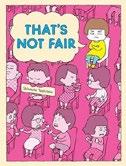
She’s mad as heck, and she’s not gonna take it anymore!
“Daddy! I have some complaints!” Silly daddy/daughter
dynamics are in full swing in this entry in the Yoshitake oeuvre, following the most recent and equally funny I Can Open It for You (2023) and I Can Explain (2022). In this latest, the jig is up! A young child bursts into her father’s room and systematically sets about seeking answers to an incredible list of unfair situations she’s suffered at the hands of adults. Trouble is, whenever she confronts her father, he always has a goofy answer. Why can’t kids stay up late? Because Santa sends investigators throughout the year to make sure kids go to bed early. For every question she asks, he produces an increasingly fantastical response. And, lest we forget, kids can be unfair, too! The two reach a détente by the story’s close, but the lists of grievances will surely inspire some young readers to come up with objections and ridiculous answers of their own. As ever, Yoshitake’s minimalist yet expressive cartoons and comedic timing are on point. Even the endpapers are in on the game, showing problems at the front and a happier relationship between the girl and her dad at the end. Characters have skin the white of the page.
Life may not be fair, but at least we have books like this to soften the blow. (Picture book. 4-6)

The story of two families—both filled with love, both encountering hardship and joy—connected by a simple table.
Illustrated by Caldecott Honoree JASON GRIFFIN, The Table is a deeply personal story from coauthors WINSOME BINGHAM and WILEY BLEVINS.


★ “A moving, elegantly constructed celebration of differences.” —Kirkus Reviews
★ “This is a story that will encourage family discussion and reflection.” —School Library Journal
★ “A brilliantly twined telling.” —Publishers Weekly

Neal
Books Share this powerful picture book with your community!




EDITORS’ PICKS:
The Brightwood Code by Monica Hesse (Little, Brown)
Life After Whale: The Amazing Ecosystem of a Whale Fall by Lynn Brunelle, illus. by Jason Chin (Neal Porter/Holiday House)
The God of the Woods by Liz Moore (Riverhead)
THANKS TO OUR SPONSORS:
From Broken to Blessed by Jerome Petty
The Story I Told Myself by Arvashni Seeripat
Make America Kosher Again by Marc Daniels
Fully Booked is produced by Cabel Adkins Audio and Megan Labrise.

Kyle Lukoff takes on apologies and consolations in two top-notch picture books. BY MEGAN LABRISE
On this episode of Fully Booked, Kyle Lukoff discusses two new picture books, Just What To Do (Dial Books, July 16) and I’m Sorry You Got Mad (Dial Books, Aug. 23).
Lukoff, a former school librarian and bookseller, is the author of many fine books for young readers, including Stonewall Award winner When Aiden Became a Brother and the middle-grade novel Too Bright To See, which received Stonewall and Newbery honors and was a finalist for the National Book Award. Recent titles include Different Kinds of Fruit , Awake, Asleep, and There’s No Such Thing as Vegetables. Forthcoming books feature unicycles, rainbows, and the third grade.




What To Do
Just What To Do, illustrated by Hala Tahboub, contends with supporting loved ones through various kinds of loss—from the death of a cactus to that of a beloved grandparent. “With its emphasis on being there and listening to what people need in times of sorrow,” Kirkus writes, “this book is the perfect complement to Cori Doerrfeld’s The Rabbit Listened . The ultimate message that there is no certainty when it comes to grief complements the minimalist art. A lesson here for adults and children alike, if only people listen.”
I’m Sorry You Got Mad, illustrated by Julie Kwon, is a “master class in apologies and in storytelling through words and art,” Kirkus writes in a starred review. In this vibrant epistolary picture book, a boy tries (and tries again) to write an apology note to a classmate at his teacher’s behest.
Lukoff and I begin by deciding which book to discuss first: the one that was published first ( Just What To Do) or the one that was written first (I’m Sorry You Got Mad ). We start
I’m Sorry You Got Mad
with I’m Sorry You Got Mad: inspiration and writing process, how he decided to quit a full-time job as a bookseller to focus on his writing career, and how interacting with young readers—as a former bookseller and school librarian—helps inform his fiction. We talk about the characters in I’m Sorry You Got Mad , the richness of Julie Kwon’s illustrations, and apologies that make the grade. Then, we turn to Just What To Do, and how to comfort loved ones through various griefs. We discuss the book’s structure, which resembles a sonnet, Lukoff’s love of teaching creative writing, and much more.
Then editors Laura Simeon, Mahnaz Dar, and Laurie Muchnick share their top picks in books for the week.

THE ROLE OF FOOD in our lives is both mundane and profound. Food can be a source of nourishment, comfort, bonding, cultural expression, psychological or financial stress, political activism, moral judgment, and more. Each day, we make countless decisions about whether and what we choose to eat, many of them shaped by childhood experiences and larger societal forces that we may not be consciously aware of—as the renowned food writer Bee Wilson explores so thoroughly and evocatively in her adult title First Bite (2015). These 2024 titles approach the topic of food from different and intriguing perspectives that reflect the developmental needs of teen readers.
The Baker and the Bard by Fern Haught (Feiwel & Friends, March 5): Juniper
(the baker) and Hadley (the bard) work together at an inn that’s famous for its baked goods. One day, a customer offers a bag of jewels in exchange for 100 galettes—but they must “shimmer and glow in the dark.” The friends embark on an adventure in the forest, seeking the special luminescent pink oyster mushrooms they need in this warm and cozy graphic novel.
What’s Eating Jackie Oh? by Patricia Park (Crown, April 30): In this deftly nuanced work, Jackie’s happiest memories involve helping her Korean immigrant grandparents in their deli. But the opportunity to compete in a teen version of her favorite TV cooking competition highlights conflicts that cut to the heart of her selfhood and purpose; her parents want her to pursue


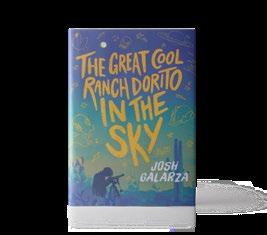
a career with greater security, while the show’s producers continually pigeonhole her based on her ethnicity.
The Great Cool Ranch Dorito in the Sky by Josh Galarza (Henry Holt, July 23): This debut, inspired by the author’s own experiences with disordered eating, is a sensitive, complex, and insightful portrait of a teenage boy who’s at war with his feelings and his own body. Brett tries to mute his pain—his selfloathing over his weight, his anxiety over his mother’s lung cancer, and conflicts with his best friend—by binge eating junk food. His character arc will resonate with many readers.
Guava and Grudges by Alexis Castellanos (Bloomsbury, Sept. 3): For immigrant families, food traditions often support


powerful intergenerational bonds. In this charming Cuban American rom com, the Ybarras and the Moraleses are inextricably bound together through a yearslong feud that originated in a dispute over stolen recipes. Aspiring pastry chef Ana Maria and Miguel, who uses his foodphotography skills to help her with a scholarship contest, are caught between their families’ tensions and their feelings for each other. (Read our interview with Castellanos on page 116.)
A World of Flavor: A Celebration of Food and Recipes From Around the Globe by Gabrielle Langholtz, illustrated by Tània García (Phaidon, Oct. 22): Developing the confidence to try new foods and acquiring the skills to prepare a variety of interesting and healthful meals for oneself are critical foundations of adulthood that help open new doors. This bright, inviting, and accessible work offers readers a bite size overview of food history that describes commonalities and differences among world cuisines and will launch teens on a lifelong journey of curious eating through appealingly diverse recipes.
Laura Simeon is a young readers’ editor.
As an asexual high school senior dips her toe into romance, she also starts an online advice account to get her friends to listen to her. Mia is a consummate stage manager, talking her friends through their dramatics both on and off the stage. But since no one ever actually takes her advice, Mia launches HeretoHelp, an anonymous social media account. Maintaining anonymity is tough when Mia knows her friends so well, however— and she’s starting to have more insight into their lives than is comfortable. Plus, someone is finally
paying attention to her: new student Sadie, a confident piano prodigy who seems truly interested in learning what makes Mia tick. As asexual Mia figures out what a relationship might look like for her, she also learns more about friendship—and what to do when people take her for granted. Horan neatly subverts tired genre tropes, forgoing manufactured drama for a strongly developed character driven narrative. Sadie and Mia’s romance moves beyond the question of whether a relationship between asexual and allosexual partners can work, investigating the how of it with humor and heart. Mia’s strong, likable voice propels the story, and readers will come to care

about the cast around her as much as she does. Mia and Sadie are cued white. Take our advice—this one is a joy from start to finish. (Fiction. 13-18)
Agyemang, Elizabeth | Delacorte (384 pp.) $19.99 | Nov. 26, 2024 | 9780593484494
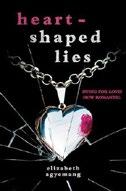
When a social media prankster is found dead, his love interests become suspects. High schooler Thomas Harding is a popular internet personality, but in the last year, a number of his pranks have gone wrong, causing scandal and controversy. Tommy, who’s white, is determined to stage a comeback, however, by pulling off “the greatest prank of the century” during the senior class trip to Sunny World Resorts and Park. But a night that starts off with drinking and drugs at a secret party in the theme park ends in Tommy’s murder—and the top suspects are the three young women who just found out they were all dating him. Kiara is the class valedictorian and the girlfriend Tommy’s fans know about. As an upandcoming beauty vlogger, Priscilla was Tommy’s frequent social media costar, and behind the scenes they’d made plans to be together. Nevaeh is the pastor’s daughter whom Tommy corrupted. Although the three Black girls have little in common, they decide to work together to solve the murder before it’s too late. While Tommy is the book’s central focus, his character is barely developed prior to his death. Because the story is told in viewpoints that alternate among the girls, readers get to know Kiara, Priscilla, and Nevaeh intimately, yet their reasons for remaining loyal to an abusive and manipulative partner are not sufficiently explored. Fans of social media drama may enjoy this lightly characterized murder mystery. (Mystery. 13-18)

Allen, John | ReferencePoint Press (64 pp.)
$33.95 | Sept. 1, 2024 | 9781678208080

A wellrounded overview of the rising population of unhoused people in the U.S. and the ways that mental illness can lead to a loss of housing.
Allen presents a timely, unbiased, wellresearched reference guide that covers a wide range of topics, including the ways that mental health treatment has evolved in the U.S. and current policy and outreach programs that are attempting to find housing solutions for people experiencing mental health struggles. The author explores the complex problems caused by the dissolution of state psychiatric hospitals that began in the 1950s. Although the movement toward deinstitutionalization was driven by good intentions for providing humane treatment and improved care, many released patients had nowhere to go and ended up living on the streets or in cheap tenements or landing in jails and prisons. Allen covers the daily challenges unhoused people face regarding food, transportation, medication, and basic safety. He also describes relevant subjects such as legislation, “hostile architecture” (features in public spaces that are designed to be uncomfortable for unhoused people), advocacy for a Homeless Bill of Rights, the right to refuse treatment, and current initiatives such as “street psychiatry teams.” The facts and figures are interspersed with rich narratives, making the text
approachable, interesting, and relatable. Stock photos reflect racial diversity among unhoused people and those who help them, and sidebars provide additional information. The text doesn’t discuss the widespread preference for the term unhoused An accessible, up-to-date, and comprehensive resource. (picture credits, source notes, for further research, index) (Nonfiction. 12-18)
Blake, Kendare | Quill Tree Books/ HarperCollins (416 pp.) | $19.99 | Oct. 29, 2024 9780062977236 | Series: Heromaker, 2
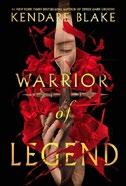
A sisterhood of extraordinary female fighters navigates new trials. In this sequel to Champion of Fate (2023), Reed has jumped into her new role as a fullfledged Aristene, one of an order of immortal women warriors who groom and sacrifice heroes to their goddess, Kleia Gloria. With three celebrated fallen heroes under her belt already, Reed and her feisty colt, Silco, seem destined for a greater purpose within the Aristene order. Meanwhile, Lyonene, Reed’s beautiful and equally deadly sister, surprises everyone by defying the goddess and falling in love with her hero, and Veridian, their hotheaded sister (who trained with them, but left the Aristene), is finding little happiness as an “immortal outcast.” Evolving dynamics between the sisters soon take a back seat to a monstrous emerging threat that causes no
Bonds with immortal horses will delight readers who yearn for equine friends.
WARRIOR OF LEGEND
shortage of grisly violence. When the growing tension among the Aristene collides with sinister machinations in the world of men, each sister faces unwelcome but grimly satisfying plot twists. As in the first book, the strength and the complexity of the female friendships are the most rewarding elements of the story, especially in contrast to the moments of patriarchal violence. The Aristene’s unique bonds with their chosen immortal horses will also delight readers who yearn for equine friends. The characters are varied in appearance; many are cued white. This second series installment will amuse, absorb, devastate, and tantalize fans of the first. (map) (Fantasy. 14-18)
Kirkus Star
Brown, Alex | Page Street (368 pp.)
$18.99 | Oct. 15, 2024 | 9798890030702

A high school mascot runs amok. Quinn Marcelo is the thirdgreatest Peaches the Parrot mascot ever to serve at private girls’ school Olivia NewtonJohn High. But her appearance during the homecoming halftime show—wearing a much anticipated new costume and accompanied by a live parrot companion—is sabotaged, exposing her closely held secret identity. Soon after, a dead body falls from the ceiling, kicking off a string of bloody killings. Violence isn’t new to the touristy beach town of Ocean’s Reach, California: A year earlier, the community was rattled by the double murder of a science teacher and the woman he was having an affair with. As Quinn investigates, she teams up with Tessa, who was also her first crush and whose clout as a cheerleader and senior class president contrast with Quinn’s status as “an anonymous, useless nobody.” The girls, who
Delightfully heart-pounding, suspenseful, and campy horror.
both have one white parent, originally met while attending Filipino parties with their families. Thoughtful social commentary about race and the justice system is baked into this entertainingly absurd, page turning slasher, which expertly balances several complex mysteries with humor and camp. The well drawn characters get involved in situations that lead to wacky but believable twists. Transcripts from the true crime podcast of Justice Hope (Quinn’s best friend, with whom she had a fling she now regrets) and short, sardonic notes from the killer are interspersed among Tessa’s and Quinn’s alternating chapters, providing additional depth and intrigue.
Delightfully heart-pounding, suspenseful, and campy horror. (Thriller. 14-18)
Cesare, Adam | Union Square & Co. (368 pp.) $13.99 paper | Oct. 1, 2024 | 9781454954248

A manipulative teen sets his sights on destruction. When Crystal Giordano, who’s Puerto Rican and Italian American, recognizes new student Aaron Fortin as the
Speaker—the masked streamer her friends obsessively follow—she blurts out that fact at their lunch table, not realizing the havoc that will follow her revelation. Aaron insinuates himself into the friend group, easily winning over “Extremely Online” Harmony and standoffish Paul (all three teens are white). Meanwhile, closeted Trevor (who’s Black and Muslim), goth Gayle
(who’s white), and Crystal herself are harder nuts to crack. Crystal begins to suspect that Aaron has a dark side, but when he releases her private video diary to the entire school, the exposed secrets drive a possibly insurmountable wedge between her and her friends. But when she realizes Aaron has something huge planned for prom night, she knows it’s up to her to save the day. A clean cut teenage amalgam of Charles Manson and Slenderman, Aaron employs a variety of techniques to control his online followers and reallife peers. The point of view alternates between Aaron and Crystal, putting readers right in the middle of the deadly cat andmouse game. Cesare keeps the tension ramping up, while the stakes rise higher and the murders keep coming. Horror fans will have a tough time putting this down once they start reading. A killer read. (content warning, resources) (Thriller. 14-18)
Ch’ng, Joyce | Snowy Wings Publishing (234 pp.) | $14.99 | Nov. 12, 2024
9781958051788 | Series: Fire Heart, 1

In the land of Metakse, a girl training as a swordsmith discovers societal injustice. Wehia Jirin t’Doniyat is a young apprentice who has left the holding where her family members are makers of ornamental daggers and kitchen knives, all looked down upon by swordsmithing families for their utilitarian products. Yearning to create a longsword similar to Cold Steel, her family heirloom, Wehia journeys to the City of Swords to stay at
the holding of her kin, the famed t’Tolani swordsmiths. There, she apprentices with her aunt, forge mistress Hadana, and, tempering her hotheadedness, undertakes grueling chores. The descriptions of Wehia’s training, feelings of homesickness, and the smithing process, while repetitive, fit the training montage trope and suit her comingofage story. Her budding romance with Geri Shaara, another apprentice, feels stilted and distant compared to their warm friendship, however. The disjointed worldbuilding includes a religious framework—matriarchal swordsmith holdings and worship of the Sword Goddess—that isn’t coherently integrated into the societal issues involving the ruling aristocracy and gender inequities. Similarly, Wehia’s developing views on the unequal treatment of the nomadic border people feel frustratingly distant rather than being an organic, thoughtprovoking parallel to modern issues. The repetitive, infodumpprone narrative style reduces the emotional impact and dramatic tension, but the story is buoyed by touching childhood flashbacks. The characters are minimally described physically and present as fantasydiverse. An intriguing premise that gets bogged down in telling rather than showing. (guide to Metakse, months of the Metakse year) (Fantasy. 12-16)
Kirkus Star
Cipri, Nino | Henry Holt (304 pp.)
$19.99 | Nov. 12, 2024 | 9781250791405

There are ghosts in the woods… but they’re not the worst things out there.
Their mother, who struggled with addiction, has skipped town, so 17yearold Riley Walcott lives on the edge of Voynich Woods with her 10 yearold sister, Sam, and their uncle. Uncle Toby makes a living giving tours of the woods to
DEAD GIRLS DON’T DREAM
tourists who are morbidly interested in the many people who have disappeared there. One day, Sam wanders off during a tour, looking for the Wishing Tree, another one of the woods’ mysteries. Riley follows to keep an eye on her but ends up getting lost herself. She stumbles across the elusive Wishing Tree—and is promptly murdered by people in masks. Shortly after, Madelyn, who lives in the woods with her abusive witch mother, revives Riley with her own magic. But—at Riley’s own invitation—something attached itself to her before she came back to life. As events bring the two girls closer together, they each seek an escape—Riley from being another Voynich Woods mystery and Madelyn from her powerhungry mother. Cipri’s young adult debut is a comingofage tale that’s dripping with dark magic, steeped in motherchild trauma, and brimming with feminine power. Readers get a strong sense of place and characters from the text, which candidly reveals the two protagonists’ complicated inner emotional lives. Even the more outrageously fantastical elements fit naturally into this world. Characters largely present white.
A stellar example of how the horror genre can embody authentic emotional experiences. (Horror. 14-18)
Comerford, Helen | Bloomsbury (384 pp.) $19.99 | Nov. 12, 2024 | 9781547614790

Despite craving peace and quiet, a teen becomes embroiled in nonstop superhero action. After a fire breaks out in the British town of Nine Trees, Blaze appears on the scene to rescue Jenna Ray, who collapsed
while trying to escape the heat and smoke. With his superspeed and ability to fly, he becomes Nine Trees’ hero. Blaze is a member of the Heroics and Power Authority, the organization that registers and manages those who demonstrate special abilities rumored to come from the accelerated evolution of the planet. Blaze’s actions trigger speculation that because Jenna is his first rescue, she’s also his Love Interest—a distinction the feminist Jenna initially rejects. She’s a keen swimmer who prefers a lowkey life with her dad and sister; dealing with media intrusion worsens her anxiety and panic attacks. Not long after her identity goes public, Jenna is approached by the Villains, an opposition group with its own powerful members who want her to spy on the HPA. If she agrees, the Villains promise to reunite Jenna with her mother, who left the family when Jenna was 7. Comerford peppers her work with clever, inventive twists as Jenna starts falling for Blaze. This fastpaced story culminates in a dramatic, satisfying conclusion that promises an exciting sequel. Jenna is Black, and Blaze is Chinese and white.
A sharp romantic comedy that takes aim at the patriarchy. (mental health resources) (Fantasy romance. 14-18)
Foxfield, Kathryn | Sourcebooks Fire (320 pp.) | $11.99 paper Nov. 5, 2024 | 9781728278919

Nine teens are trapped in a deadly game that’s overtaken by rogue AI. Saffron and twin sister Georgia both have internships coming up: Saffron at Play a Game, a new hightech
escape room, and Georgia at the local newspaper. Even though the sisters have had a falling out, they still play the online game Sole Survivor together with a group of seven others. Saffron overhears a conversation at Play a Game in which a software engineer warns the owner that Lightman, the AI running the game, has grown too powerful. Meanwhile, Lightman, posing as a work friend of Saffron’s, uses a group chat to invite the other members of the sisters’ gaming group to Play a Game. It’s scheming for them to compete in a reallife version of Sole Survivor; the goal is “to be the last player standing when the 10 minute timer runs out.” As they begin to compete, compelling details slowly emerge, revealing that several group members have past relationships that have led to simmering tensions among them. The breakneck series of events is engrossing, and the explicit onpage gore thrillingly escalates the stakes as the players begin to die. Disappointingly, the abrupt ending fails to live up to the story’s earlier strengths. Most characters are white; unfortunately, one of the gamers—a boy who’s “brownskinned with chaotic black hair”—is described as an “unrepentant criminal” who’s been arrested multiple times. A page-turning locked-room mystery that doesn’t stick the landing. (Mystery. 14-18)
Gangsei, Jan | Harper/HarperCollins (336 pp.) $19.99 | Nov. 19, 2024 | 9780063310445
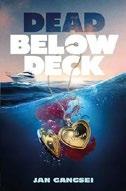
Four friends set out for a fiveday cruise—but when they arrive at their destination, they discover that someone has gone overboard. Maggie, who’s cued white, nervously accepts queen bee Giselle’s invitation to join her on her final voyage on her family’s yacht. Giselle’s senator father has sold the boat, and Maggie will be accompanying Giselle (who’s Cuban
Readers follow the journey from finish to start.
DEAD BELOW DECK
and white), Nigerian and Greek Emi (who’s obsessed with her new boyfriend), and “blond bombshell” Viv (who’s working on being an influencer) on a firstclass adventure to deliver it to her new owners in Grand Cayman. Secrets abound as the girls, who are preparing to graduate high school, harbor resentments and grudges—all while pretending to have the time of their lives, sunning themselves, drinking, and gambling. But on the final day, Maggie wakes up to the news that Giselle has been thrown overboard—and she’s the prime suspect. Unfolding in reverse chronological order, this novel displays an impressive narrative feat: Readers follow the journey from finish to start. Giselle’s journal entries and news reports are interspersed throughout. As Maggie’s secrets are slowly revealed, readers realize how much the characters are hiding about their true identities. The final reveal is surprising yet well supported by details that appeared earlier in the story. The privileged lifestyles of the wealthy and the resulting friction that arises are a wellpresented thematic undercurrent. An epic spring break cruise turns into an intriguing whodunit. (Thriller. 13-18)
Diet Soda Club
Hayden, Chaz | Candlewick (320 pp.) $18.99 | Oct. 8, 2024 | 9781536223125

After his mother leaves, a teen takes drastic measures to support his disabled younger sister. Ever since Dad died, Reed Beckett’s mom has been distant, “either working or
sleeping,” leaving 17yearold Reed to care for his homeschooled 10 yearold sister, Beatrice, who has spinal muscular atrophy. When Mom starts dating Seth, her behavior grows even more erratic, culminating in her abruptly taking a vacation with him—and leaving Reed and Beatrice alone. As weeks pass, and their food and money dwindle, Reed fears Mom won’t return. How will he pay the rent—or the $5,000 deposit for the scoliosis surgery that could improve Beatrice’s life? His solutions are lucrative but illegal—if he’s caught, Beatrice could be taken away. To pull off his schemes, he’ll have to enlist the help of Helena Shaw…the childhood friend he feels betrayed him terribly. Though some plot elements may require suspending disbelief, Hayden, who has SMA himself, effectively explores grief, neglect, and complex family dynamics. While Beatrice’s care drives much of the plot, and her precocious hacking skills prove convenient, the tender, frank bond she has with Reed prevents her from being merely a plot device. Reed and Helena’s recovering relationship offers thoughtprovoking insights into privilege and what makes a family. Though Reed’s mom’s depression and neglect are addressed rather late in the novel, leaving little room for readers to process the topics, the author realistically acknowledges that healing and forgiveness are neither instant nor easy. Most characters read white. Poignant and insightful. (Fiction. 14-18)

RANI CHOUDHURY MUST DIE
Hirsh, Ananth | Illus. by Tess Stone Random House Graphic (224 pp.) $24.99 | Nov. 12, 2024 | 9780593124857

A young woman joins two strangers on a road trip to find her missing sister. Two years ago, Maya’s then25yearold sister, Amara, had a music career that was on the rise. But Amara left to seek the pillar of light that members of her family are cursed to see. Now, Maya works as a barista and feels stuck, abandoned, and conflicted. When high school senior Cardea, an Amara superfan, shows up at Maya’s coffee shop claiming to know where her sister is, Maya is angry at first. But she decides to join Cardea and Dyno, Cardea’s childhood friend, on their road trip to find Amara. They all have their own reasons for embarking on the journey, and none are fully prepared for what they’ll find. Unfortunately, the characters, their motivations, and the plot all feel superficial, so there’s little to ground readers in the story. The art is bold and vibrant, playing with depth to establish a beautiful contrast for the dreamy art of the otherworld the trio discovers, but often at the expense of nuance in facial expressions and background details. This graphic novel may appeal to those who enjoy impressionistic or openended stories; others may simply feel frustrated and unmoored. Maya’s Hindispeaking family is cued Indian American; Cardea and Dyno present Black.
Light characterization and worldbuilding make for a work that’s hard to settle into. (character sketches, author’s note) (Graphic fantasy. 12-18)
Jaigirdar, Adiba | Feiwel & Friends (320 pp.) $19.99 | Nov. 12, 2024 | 9781250842084

Two Bangladeshi Irish teens reluctantly team up to enact justice on the boy who’s cheating on both of them. It’s bad enough that Meghna Rahman’s boyfriend, Zak Sardar, has been seeing another girl, but why did it have to be her former best friend, Rani Choudhury? As if Rani doesn’t already have it all: She’s pretty, rich, smart, and accomplished, as Meghna’s parents constantly remind her. Once Meghna and Rani realize that Zak has played them both for fools, however, the two STEMminded teens devise a revenge plot—they’ll develop an app to “revolutionize relationships” by tracking a suspected cheater’s digital footprint. Zak will be their case study when they present it at the upcoming European Young Scientist Exhibition. Since team members can be given individual awards, Meghna also secretly hopes to impress the judges enough to finally do better than Rani. But working together isn’t easy; their closeness brings repressed vulnerabilities in their relationship to the forefront. Is there something more to the long standing tension between them? Will teaming up only drive them even further apart—or will exposing their backstabbing boyfriend bring them much, much closer together? The science fair setting provides a platform for the
author to thoughtfully examine issues surrounding women of color in science and technology. The shared Bangladeshi background of Meghna, Rani, and Zak also offers room for frank and insightful discussions of cultural familial expectations and generational conflict.
An unconventional and original revenge story with a sweet Sapphic romance. (content note) (Fiction. 13-18)
Jeong, Lena | Harper/HarperCollins (368 pp.) | $19.99 | Oct. 29, 2024
9780063241701 | Series: Sacred Bone, 2
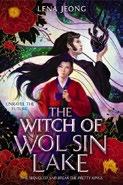
Mirae embarks on another adventure to defeat the Netherking in this second series entry. A year has passed since Mirae’s harrowing journey to ascending the throne of Seolla. She’s led everyone to believe that an age of peace is coming, even as she issues new decrees and rights the wrongs of her predecessors. In truth, her older brother, Minho, has been possessed by the queendom’s biggest threat, the Netherking. Mirae’s imprisonment of the Netherking’s soul resulted in Minho’s body also being held captive, decaying in the dark prison of the Deep. Mirae finally agrees to let her mother and her friend Kimoon, a Josan prince, enter the Deep to attempt to save Minho. But when the Netherking escapes with the powerful magical dragon pearl, Mirae’s carefully crafted world falls apart. Mirae and her friends set out to stop the Netherking from realizing his plans of destroying not only Seolla but also the heavens and the gods who gave Seolla women their power. Traveling across foreign lands, she faces old enemies, powerful legendary forces, and impossible choices. This fastpaced sequel combines plenty of action with an exploration of ancient
secrets, revealed truths, politics, and morality. The uncovered history of Seolla thoughtfully challenges Mirae to examine her biases and perceptions of her people. The complex worldbuilding and storyline include detailed descriptions and time jumps and will draw in readers with its fresh magic and landscapes inspired by Korean culture and mythology.
Exciting, yet thoughtful and reflective. (Fantasy. 13-18)
Kallen, Stuart A. | ReferencePoint Press (64 pp.)
$33.95 | Sept. 1, 2024 | 9781678208066

A comprehensive and charming introduction to the world of Kpop.
Divided into six parts, this is an engaging and thorough overview. Kallen opens his guide to this popular music genre with a description of the 2016 Los Angeles KCON, a “hybrid convention and concert series” that showed the impact Kpop has had on U.S. fans. The following chapter looks at the origins of Kpop, taking readers on a journey through the influential vision of Lee Soo man, the founder of SM Entertainment. Although the glamour of this world will dazzle fans, the book doesn’t shy away from criticizing the exploitation of idols, sharing their perspectives on how they wished things were different. The author includes trendsetters such as BoA, Rain, Super Junior, and Girls’ Generation, along with global phenomena like Psy, BTS, and Blackpink. Addressing the importance of the internet and virality, the book also contextualizes the success of newer groups. No book about Kpop would be complete without a dedicated look at the fanbase, and this one doesn’t disappoint: The final chapter covers the power of fans, both the good and the bad. Ample
photos and bright text boxes add to this work’s appeal.
A valuable and inviting resource for readers seeking to learn more about K-pop. (source notes, for further research, index, picture credits) (Nonfiction. 12-18)
Langholtz, Gabrielle | Illus. by Tània García | Phaidon (240 pp.) | $29.95 Oct. 22, 2024 | 9781838669140

An admirably global trip through the world’s fascinating foods. An introductory section includes cooking tips and terms, capsule biographies of the contributors, and a world map (of continents, not countries). Most of the book consists of three types of content: country profiles, types of food (for example, “beans around the world” and “seafood around the world”), and recipes. The writing leans on lists and alliteration (“India has dazzlingly distinctive desserts”) and frequently includes delightful facts, such as that lim mraqqed, the Moroccan name for preserved lemons, means “lemons put to sleep.” The work is organized geographically and contains a good mix of savory and sweet recipes, snacks, mains, and drinks. The header for each recipe includes the prep time, cooking time, level of difficulty, and number served as well
as a paragraph or two of cultural or historical context. The lists of ingredients and numbered steps are clear, although the time estimates may be unrealistic for inexperienced cooks. Page spreads on specific countries present bite size bits of information on special ingredients, dishes, holidays, etiquette, and occasionally people. Some recipes will work for readers who follow plant based diets (others can easily be adapted); they’re not labeled or indexed as such, however. The history and impact of colonization on present day cuisines are acknowledged in passing throughout but not explored in depth. The appealing digital artwork features bright, plentiful illustrations. Broad, ambitiously comprehensive, and attractively presented. (index of recipes, index, notes on recipes) (Nonfiction. 12-18)
LeBrun, Cynthia | Fitzhenry & Whiteside (248 pp.) | $21.95 paper Oct. 15, 2024 | 9781554556434
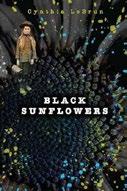
A closeknit family struggles to survive, first in the Sovietoccupied Ukraine of the 1930s and then, in the early 1940s, after Germany invades Ukraine. Polish Catholic Veronika lives with her parents on a farm outside the Ukrainian village of Kuzmin, where Polish, Ukrainian, and Jewish communities coexist. The story opens in 1929 when Veronika is 6, depicting her idyllic family
A significant moment in Ukrainian history brought to light in an accessible way.
BLACK SUNFLOWERS
A YA author celebrates the joys of Cuban American food, family, and heritage.
BY LAURA SIMEON
ALEXIS CASTELLANOS GARNERED numerous accolades for her heartwrenching and beautifully rendered 2022 debut, Isla to Island , a middlegrade graphic novel about Marisol, an unaccompanied child refugee who left Cuba for the U.S. during Operation Peter Pan. Now she’s returned with Guava and Grudges (Bloomsbury, Sept. 3), a charming, spirited rom com set in a small town on Washington state’s Olympic Peninsula. Scenic Port Murphy has two Cuban bakeries run by rival clans, the Ybarras and the Moraleses. When Ana Maria Ybarra meets Miguel Fuentes on a college tour in California, she has no idea he’s a Morales cousin—until he moves to Port Murphy. Ana Maria’s dad hopes she’ll take over the struggling bakery, while her mom is urging her to go to college, but she hopes to study at the Cordon Bleu. Miguel secretly helps her photograph her culinary creations for a scholarship that could make her Parisian patisserie dreams come true. The young lovers encounter many bumps in the road, and their journey thoughtfully explores questions of personal autonomy and family loyalty, innovation and tradition, and more. Castellanos spoke with us over Zoom from her home in Los Angeles; the conversation has been edited for length and clarity.


a lot, the Pacific Northwest. It was a happy experience and exactly what I needed to heal.
I loved how seamlessly all the plot strands in Guava came together. Are you the kind of writer who’s a methodical planner?
Your first two books are both so lovely—and yet so different from one another.
Isla to Island was a wonderful book to work on in so many ways, but it was also really challenging. It was inspired by my family’s experience immigrating to this country, and so I was having difficult conversations with my family about that and reading about the subject. And then I was
juggling a full-time job and my own freelance design business. It was physically demanding. I was emotionally tired. By the end, I needed some kind of palate cleanser, and I knew I wanted to write something that was pure fluff— still pulling from those experiences of being of Cuban American descent but focusing much more on the joyful aspects and a part of the [U.S.] that I love
I have [writer] friends who have color-coordinated spreadsheets. I’m so impressed—and every time I sit down for a new project, I’m like, I’m going to be that person this time. I’m going to take notes . I’m not a super-organized person in general; it’s very chaotic in my mind. I try my best to give myself some form of organization. A lot of my creative process is very visual, because I’m an artist. I need to see a picture: What does the Morales bakery look like? What does [the Ybarras’ bakery], Café y Mas, look
like? I try to keep those pictures organized for worldbuilding. But then when it comes to actual plotting, I call it the “onion method.” For this book, my partner at the time was working at Molly Moon’s—since you’re from Seattle, you know [the ice cream shop] at the Wallingford location on 45th—and his manager was telling us about a food trade he’d made with Grand Central Bakery across the street. He’d gotten a bunch of sandwiches, and in trade, he’d given them some ice cream. That was the initial seed of the idea: What if you have these two rival businesses, and everyone [else is] trading food, but you can’t? OK, why are they rivals? Who are these people? And then, slowly, like an inverse onion, I add layers to that question, and they build the world.
Food plays such an important role in this book—I got so hungry reading it! And I also appreciated how it was woven into Ana Maria’s family’s story. Do you have formative food memories from childhood that influenced the story? I was pretty much raised by my grandparents. My mom was a single mother, and she worked overtime, so my earliest memories are being in the kitchen with my grandmother and helping her cook. I was her little sous chef. And the TV I watched as a kid at their house was the Food Network. My memories of my grandparents and growing up are so closely tied to food. My grandparents just let me loose in
the kitchen, let me do whatever I wanted. [Food] is not only how I connect to the memories of my grandparents; it’s also how I’ve connected to my culture with them. My grandmother taught me how to make so much Cuban food—merenguitos, arroz con leche, bistec empan izado, ropa vieja, vaca frita…I was always there in the kitchen with her, learning and paying attention. How we connected was over food, and now, when I go back and eat those things, it’s this time machine—a wonderful vehicle for capturing memories and experiences. I wanted to highlight all the wonderful things that food can do: It can fuel a decadeslong grudge
between two families, but it can also heal that feud.
You described this book as “pure fluff,” but you do show the complexity of Ana Maria’s life. Also, I think fluffy books often don’t get the respect they deserve.
This was a book I needed for myself to heal, and I hope it can serve that same purpose for someone else. I remember being a teenager and having issues with my own identity. Having a book about the joyful aspects of being a child of immigrants, being Cuban American, could be just the thing that someone needs. Publishing has an issue where it only tends to highlight the stories about our pain when it comes to
My grandparents just let me loose in the kitchen, let me do whatever I wanted.

Guava and Grudges
Castellanos, Alexis
being immigrants and people of color. That was something I was told time and again after writing Isla to Island —how important the book was. I don’t want to negate that.
I visited my high school [in Florida] last year to do school visits. When I went there [as a student], it was majority white. As a family, we experienced a lot of racism and xenophobia in that town. But our experiences are so much more than the painful parts. I remember working on Isla to Island, and someone said to me, “How can there be a happy ending if these issues of racism and xeno phobia don’t get resolved in the book?” And I was like, “These people are going to experience that for the rest of their lives. Unfortunately, there’s going to be dark times in your life, but that doesn’t take away from the wonderful things that happen.”
I think it’s just as important to highlight those parts of immigrant experiences and the experiences of people of color, because they hold just as much weight. It seems like the perfect complement to Isla to have Guava. I joke that this is a book about being a teenager whose parents never went to therapy, because the parents aren’t perfect. They’re humans; they have unresolved issues. They have generational trauma that’s impacting their daughter, and she has to work through that. That isn’t the focus of the book, that isn’t driving the plot, but it’s still there, and it still influences the story.
life before the Soviet regime intrudes on their lives, forcing collectivization on Ukraine’s farmers. What follows are the devastating years of the Holodomor, the human caused famine that led millions across the country to starve. Though Veronika survives, their community is terrorized by the Soviet secret police, who deport members of her extended family to Siberia and Kazakhstan in politically motivated purges. While forces beyond her control shape Veronika’s life, the support of her family allows her to grow into a confident young woman who befriends a Jewish classmate and dreams of becoming a teacher. Told in Veronika’s and her father Janek’s alternating perspectives, this historical account is based on the experiences of the author’s motherinlaw and is grounded in historical research. Janek’s perspective gives voice to the violent brutality of Soviet rule and the heartbreak of trying to provide for one’s family under an authoritarian regime, while Veronika’s chapters offer moments of impish levity and youthful hope. A significant moment in Ukrainian history brought to light in an accessible, moving, and personal way. (maps, family tree, photographs, author’s note, bibliography) (Historical fiction. 16-adult)
Lewis, Kayvion | Nancy Paulsen Books (320 pp.) | $19.99 | Nov. 12, 2024 9780593625392 | Series: Thieves’ Gambit, 2

Ross Quest must compete against internationally renowned thieves with the help of her friends. In this heartstopping sequel to Thieves’ Gambit (2023), Ross, an 18 year old professional thief, once again finds herself at the whims of the organization, competing in something that’s “less like a gambit,
The nail-biting action continues, making for a fun and satisfying read.
HEIST ROYALE
more like a gauntlet” to help their leader retain control after a takeover attempt puts the Quest family at risk. From New Orleans and Antarctica to Monte Carlo and Cape Town, the returning cast of beloved characters, including Ross’ friends Noelia, Mylo, and Kyungsoon, among others, find themselves competing against Devroe, Ross’ former crush, and his mother, Diane, who deeply hates the Quest family. Ross must continue to face the uncertainty of choosing to trust her friends’ loyalty, despite her mother’s continually urging her to do the opposite, all while she attempts to remain one step ahead of her opponents. Much of the same nailbiting action continues here, making for a fun and satisfying read. While Ross and Devroe’s relationship falls a little flat, losing some of the sparkle from the earlier entry, Ross’ other relationships bloom as she grows confident in her own personhood, building a future for herself. New readers will want to start with the first book to grasp the plot and get to know the internationally diverse cast.
An entertaining and worthy follow-up. (Thriller. 13-18)
Light, Alex | Harper/HarperCollins (384 pp.) | $15.99 paper Nov. 5, 2024 | 9780063334076
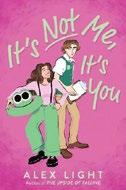
A new high school graduate in Ridgewood, New York, grapples with her future and her relationships. Eighteenyearold Jackie has
three goals for the summer: spend as much time as possible with best friend Suzy, earn enough to buy a used car for their longanticipated crosscountry road trip, and figure out what she should do next. What she didn’t have planned was being demoted from waitressing to wearing a frog costume at work. Why was she sent to “amphibian jail”? Wilson, the annoyingly handsome new assistant manager at Monte’s Magic Castle, where Jackie helps with kids’ birthday parties, disciplined her for a minor infraction, thus becoming Jackie’s “mortal enemy” whom she takes pride in annoying. As she tries to find herself, Jackie secretly draws on her older twin sisters’ dating experiences to launch a social media account giving breakup advice; it quickly goes viral. But when she learns that her anonymous guidance has led Wilson’s girlfriend, Kenzie, to break up with him, she guiltily tries to help him win her back. Jackie’s summer soon becomes more complicated than she could have imagined. This novel told in Jackie’s firstperson perspective is a leisurely enemiestolovers story. The light tone is entertaining, and Jackie’s growth is (refreshingly) not dependent on her male love interest; however, the dialogue feels flat and repetitive in places. Jackie and Wilson present white, Kenzie is cued Black, and Suzy is Korean and white.
A breezy, if slow-paced, teen romance with a healthy dose of self-discovery. (Romance. 13-18)

For another enemies-to-lovers romance, visit Kirkus online.
Marquis, Krystal | Dial Books (384 pp.)
$19.99 | Nov. 12, 2024 | 9780593463369

T his followup to Marquis’ charming bestselling debut continues the saga of young, Black Chicagoans in the early 20th century.
It’s been several weeks since the masquerade ball for Ruby’s father’s political campaign, and she’s eager to solidify her social status as a newlywed and the daughter of Chicago’s first Black mayor. But after Ruby and her parents learn of horrible rumors, their aspirations fall prey to uncertainty and chaos. Meanwhile, Olivia, Ruby’s best friend, focuses on building political power among local Black women, but her parents continue to pressure her to marry. They’re unaware of her star crossed, long distance entanglement. “Life can’t be just about work…What about love?” younger sister Helen asks Olivia. To which she replies, “Who said my decision wasn’t for love?” Helen may be open to romance, but she also concocts an ambitious plan to prepare the family’s carriage company for a horseless future. Ultimately, she must collaborate with a young man she finds irritating to pull it off. Domestic workerturned entrepreneur AmyRose tries to keep her mind off Davenport business heir apparent John, but new circumstances make that tricky. The Davenport universe, which has history, humor, and heart baked into it, maintains its continuity in this volume, and Marquis will satisfy fans with the characters’ expanding narratives. The breezy and fluid prose supports the love filled merry go round of willtheywon’tthey storylines. An enjoyable sequel in a well-oiled coming-of-age series. (Historical fiction. 12-18)
McGee, Katharine | Random House (368 pp.) $20.99 | Nov. 12, 2024 | 9780593710708
Series: The Princess Game, 1
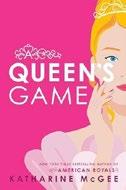
In a world where only servants or Americans get to marry for love, three European noblewomen try to control their destinies.
Queen Victoria generally decides who weds whom among her large family—and she wants stunning beauty Alix of Hesse to marry her grandson and heir to the throne Eddy, aka Prince Albert Victor Christian Edward. Alix, however, has fallen for Nicholas, the eldest son of the Russian tsar. Meanwhile, the exiled French princess Hélène d’Orléans has a chance encounter with Eddy during which sparks fly. For her part, Her Serene Highness May of Teck struggles with being poorer and lower in status than her cousins; she’s also desperate to escape her cruel father and hopes to catch Eddy’s eye. Each young woman battles her confines in order to achieve happiness: Hélène owns her desires, but they may be held against her; Alix, though beloved by Queen Victoria, isn’t welcomed by the Russian court; and May leans into manipulative situations. The book ends on a cliffhanger, so readers will need to wait for the next entry to find out how these problems are resolved. The characterization builds over the course of the story, but the timelines can be confusing, and even though the events are loosely based on the lives of real people and the
social stakes are clearly defined, the setting doesn’t feel fully immersive. Characters read white.
May entice fans of royal dramas but struggles with uneven execution. (author’s note) (Historical fiction. 13-18)
Mooney, Carla | ReferencePoint Press (64 pp.)
$33.95 | Sept. 1, 2024 | 9781678207885

A basic introduction to social anxiety, including its symptoms, coping mechanisms, and treatments. Mooney uses interviews and excerpts from articles, research papers, and personal essays by experts to look at the basics of social anxiety. She also includes personal accounts from teens and 20 somethings from varied backgrounds to provide real life examples of social anxiety’s effects and treatments. In discussing the pervasiveness of social anxiety, the author also seeks to define what separates this chronic mental health condition from natural nervousness and introverted tendencies. Through multiple sources, readers will learn about the ways social anxiety interferes with daily life, interrupts personal and professional relationships, and causes significant physical symptoms. In a matter offact tone, the text discusses factors that contribute to social anxiety, including genetics and trauma, along with potential treatment options ranging from medication and lifestyle changes to
The Davenport universe has history, humor, and heart baked into it.
THE DAVENPORTS
therapy. The coverage of common medications and their possible side effects is a particularly nice touch. Educators and readers looking for more information may find the suggestions for further reading and obtaining help useful. While many young people may be interested in the personal stories and expert insights, the rest of the text borders on the sterile and repetitive, making it more useful as a resource to dip into than one to read cover to cover. Stock images depict a diverse range of young people.
Concise, useful, and thorough but weakened by dry writing. (source notes, index, picture credits) (Nonfiction. 13-18)
Nardo, Don | ReferencePoint Press (64 pp.)
$33.95 | Sept. 1, 2024 | 9781678208004
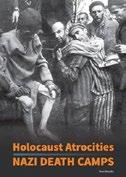
An overview that educates readers about the Nazis’ horrific efforts to eradicate Jews along with their targeting of Communists, the Roma, gay and disabled people, prisoners of war, and Polish civilians.
Nardo’s work is divided into a helpful introduction followed by five chapters: “Rise of the Nazi Death Camps,” “The Barest Existence,” “Processing Death,” “Resistance and Rebellion,” and “Downfall of the Camps and Liberation.” Quotes from eyewitnesses—such as Gen. Dwight D. Eisenhower and an American soldier who helped liberate Buchenwald, as well as survivors of death camps, such as Edith Friedman Grosman, who said she believed she had survived because “one of us had to still be here to tell you what happened”—add vivid details about the appalling conditions. The author includes grim descriptions of the transit by train to the camps, the prisoners’ daily work schedule at Auschwitz, and the experiences of teenage Jewish girls who
A fairy-tale
with the dark complexity of a contemporary fantasy.
A SWORD IN SLUMBER
were kidnapped from Slovakia. The firsthand account of a German army officer and details about medical experiments done by Josef Mengele will have a strong impact on readers. Teens may be surprised to learn about the rebellions at Treblinka and Sobibor. Text boxes highlight quotations and provide additional context, supplementing the graphic archival photographs and adding to the immediacy of this short, accessible text. Nardo unfortunately repeats an outdated and offensive term for Roma people without providing sufficient context.
A powerful source for beginning to learn about the Holocaust. (picture credits, source notes, for further research, index) (Nonfiction. 12-18)
Osongco, Clare | Disney-Hyperion (368 pp.) $18.99 | Nov. 12, 2024 | 9781368101936
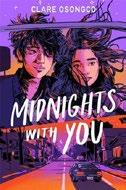
While a Massachusetts teen navigates a budding relationship, family issues threaten everything she longs for.
Ever since her white American father died, Lourdes “Deedee” Walters has lived with her controlling Filipino immigrant mom, who seems to hate her and never talks about the Philippines. Deedee yearns for an escape. While out walking restlessly around the neighborhood one night, she meets Jay Hayes, her mysterious new white and Vietnamese American neighbor. They strike a deal: Deedee will tutor
him, and Jay will give her driving lessons. Their secret midnight drives blossom into something more, but the closer they get, the more life tears them apart. As Jay helps Deedee uncover her mother’s past, and Jay reveals more about his own history, the family traumas they’re each dealing with may prove too significant to overcome. As they navigate their painful inheritances, Jay and Deedee must decide what’s best for them, both individually and together. Romance grows within a story that’s heavily rooted in the family issues that affect both teens’ thoughts, emotions, and actions. The central theme of love is depicted and explored through the lenses of suffering, sacrifice, money, friendship, and efforts to fix others. Deedee’s mother’s verbal abuse, often repeated in Deedee’s own selfhating thoughts, weighs heavily. Racism, microaggressions, and internalized racism are prevalent throughout; the teens live in a predominately white town and have family histories of war and immigration. A romance steeped in an emotionally gut-wrenching tale of trauma. (content warning) (Romance. 14-18)
Raasch, Sara | Disney-Hyperion (336 pp.) | $18.99 | Sept. 3, 2024 9781368092845 | Series: The Queen’s Council, 4

A Disney princess narrative tempered by a dose of reality. Princess Aurora of Austria remembers being Briar Rose and struggles to unite
GENOCIDE
her two conflicting identities. She still recalls singing at the tavern in Hausach with her two best friends, but her new, privileged status comes with heavy responsibilities. First, Aurora witnesses the brutal murder of her father, King Stefan, by Matilda of Bavaria. Now, Frankfurt seeks a new emperor, and Aurora must step up and oppose Queen Matilda’s candidacy with her own. Still reeling from the shock of losing her father, she navigates a dangerous system. New to the world of political intrigue, Aurora relies heavily on the advice of her magical fairy aunts Flora and Merryweather. She also enters into marriage with Prince Phillip. Meanwhile, Aurora continues to have disturbing visions that make her wonder whether Maleficent is dead after all. This novel answers many of the questions left unanswered in the Disney movie Sleeping Beauty. The characters in the book also have greater complexity and provide social commentary about violence, trauma, and class disparities. Aurora’s fairytale life doesn’t seem nearly as rosy as the happily ever after version would have us believe. Twists and turns—and a small dose of spice—will appeal to modern readers and challenge a more reductive version of events. Main characters are cued white.
A fairy-tale spin-off with the sensuality and dark complexity of a contemporary fantasy. (Fiction. 14-18)

For more books in the Queen’s Council series, visit Kirkus online.
Springer, Jane | Illus. by Santiago Solís Groundwood (160 pp.) | $14.99 paper Oct. 1, 2024 | 9781773067605
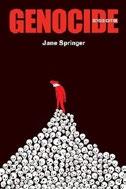
This thoroughly researched and alltoorelevant history, an updated version of the 2006 original, examines questions of why genocide happens, who is involved, and how it can be prevented. Springer defines genocide as “actions carried out with the intent to destroy a national, ethnic, racial, or religious group,” though she notes that the ongoing global debate on what constitutes genocide has been fraught, even after the signing of the 1948 United Nations’ Genocide Convention. The book covers a wide variety of genocides in up to date detail, including the conflict in Darfur that was reignited in 2023, the ongoing persecution of the Rohingya people of Myanmar, the continued fallout of Russia’s invasion of Ukraine in 2022, and many more, including historical events. Each featured instance is separated into manageable, bite size case studies; Springer also draws out similarities and connections among them. She discusses climate change, armed conflict, and gender and socio economic inequities as contributing factors, highlighting the intersectional nuances woven into each issue. The expansive yet concise text manages to tackle a broad, tough topic while remaining digestible to teen audiences—and
without shying away from tough questions about the trans Atlantic slave trade or the brutal treatment of Indigenous children in residential schools. Solís’ starkly dramatic red, black, and white full page illustrations punctuate the text. A compact, critical exploration of the devastating history, context, and consequences of global genocides. (timeline, genocides through history, genocides around the world, notes, further reading, index) (Nonfiction. 14-18)
Stocker, Shannon | Blink (288 pp.)
$18.99 | Oct. 1, 2024 | 9780310162353
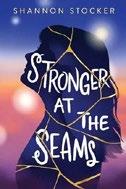
A competitive athlete battles grief over her mother’s death as well as mysterious, increasingly unbearable health issues. After a week of stomach upsets that strike randomly, 14 year old Twyla Vogel feels nauseated before her field hockey game. At first, she doesn’t want to admit to her pain for fear of being pulled from the summer tournament, but her symptoms worsen. Soon, she begins experiencing headaches, vision issues, and lack of appetite, and the doctor diagnoses her with constipation. Twyla is convinced that he’s wrong, however. Her science class at school is covering genetics, and Twyla wonders whether her mother’s death several years ago might be related to her current health issues. She finds her mother’s autopsy report, which provides surprising news. Meanwhile, Twyla’s two best friends are avoiding her, and she doesn’t know why. Tender scenes between Twyla and her curious, talkative younger brother provide muchneeded relief from the tension and drama of her health concerns and friend issues. Mama Rose, her friend’s mom, and Ms. Givens, her coach, neighbor, and AP Biology teacher, are
supportive bonus adults in Twyla’s life who add realism and hope in the face of the realities of dealing with complicated health problems, but frustrating, easily resolved communication issues between Twyla and her father hinder the pacing. Disappointingly, a couple of fatphobic comments about characters’ body sizes aren’t unpacked. Most main characters read white. An unevenly executed medical drama. (author’s note, bibliography) (Fiction. 12-16)
Stokes, Mason | Calkins Creek/ Astra Books for Young Readers (256 pp.)
$18.99 | Nov. 5, 2024 | 9781662680885
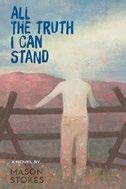
A boy in his senior year of high school experiences first love and bitter heartbreak in this work inspired by the 1998 murder of Matthew Shepard. Seventeenyear old Ash meets Shane while volunteering as a theater tech for a production of Oklahoma! at a local college. He’s immediately drawn to 19 year old Shane’s enigmatic and alluring personality—and Shane appears to be showing a similar interest in him. At first, Shane’s friend Jenna, who’s writing an article on the meth trade in their town of Juniper, Wyoming, for the college newspaper, tries to set the boys up. She tells Ash that he’s nicer than Shane’s previous boyfriends. But Jenna later backtracks, warning Ash against dating Shane and explaining that he’s “a mess” who’s “carrying around a lot of damage.” It turns out that Shane has been known to disappear for a few days, worrying and enraging Ash and Jenna, who have lost their mom and brother, respectively. But Shane’s most recent disappearance isn’t like the others, and the tragedy that follows leads Ash and Jenna to ask questions they might not want
answered. Even though the prologue signals that tragedy lies ahead, the novel doesn’t feel predictable— instead, it carries an eerie sense of dread. Ash’s closeness to Shane carefully brings Shane’s story into vivid focus without conveying a feeling that Ash is speaking for him. The central cast reads white. A tender fictionalization that sheds light on human complexity. (author’s note, note on sources) (Historical fiction. 14-18)
Sukumar, Suja | Soho Teen (288 pp.)
$19.99 | Nov. 19, 2024 | 9781641295369

C ousins Tanvi and Mimi, born just one year apart, were as close as sisters, but recently everything has changed. Ever since her mother killed her father, Tanvi has gotten used to being bullied. But now, Tanvi’s had enough. She’s already lost Mimi to the pull of the popular crowd and their leader, Beth. When Tanvi spies on the annual end of summer party Beth hosts at her mansion, she’s shocked to see Mimi and Beth doing drugs together. She takes a photo but is torn about what to do. The next day, Tanvi wakes up with bruises she can’t explain, a bump on the back of her head—and no idea where Mimi is. The photo she took somehow ends up being posted on her social media account, causing a stir at school. Without Mimi there to explain herself, Beth is widely
seen as Mimi’s victim. The police suspect Mimi’s run away, but her mother and Tanvi are sure she wouldn’t do that. Tanvi begins looking for answers—and worries about where the search will lead. Unfortunately, the timeline of events is muddy and not helped by Tanvi’s first person narration, which jumps around and includes confusing, repetitive thoughts. The shallow character development leaves readers with unanswered questions about their motivations. Beth, who’s white, reads like a blond, mean girl stereotype. Mimi and Tanvi are Indian American; Mimi’s dad is white.
A quick read that fails to coalesce into a coherent whole. (content warning) (Mystery. 14-18)
Thomas, Aiden | Feiwel & Friends (416 pp.) $19.99 | Sept. 3, 2024 | 9781250822086
Series: The Sunbearer Duology, 2
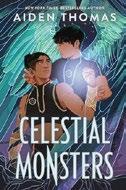
Th is thrilling sequel to The Sunbearer Trials (2022) follows Teo and Xio, two semidioses (or demigods) and former friends, as they fight on opposite sides during a war and an apocalypse.
Following the theft of the Sol Stone by the formerly exiled and now unleashed Obsidian gods and their monstrous Celestials, the inhabitants of Reino del Sol are plunged into a dark and uncertain future. Flanked by
The central messages will resonate with readers who are facing challenges.
his best friend and crush, Teo embarks on an odyssey to resurrect Sol and save the world, while Xio wrestles with their role in the Obsidians’ revenge. Teo learns that the power structures and histories he learned from the ruling dioses (including his mother, Quetzal) may hide injustices and inequities that he doesn’t want to restore. Meanwhile, Xio begins to question whether the quest for justice for which they were conscripted to fight might instead be a subterfuge that’s intended to enact an oppressive new world. While actionpacked with both battles and romance, the story also deftly delves into themes of systemic violence, generational trauma, and abuse of power. Teo and Xio are complex characters who offer strong representation of and for trans and nonbinary teens, respectively. The central messages of selfdiscovery, social justice, and building communities of care in a hostile world will resonate with readers who are facing challenges themselves. A powerful duology closer that explores gender, power, and community in a unique world infused with Aztec mythology. (Fantasy. 13-18)
Thomas, Charlene | Dutton (320 pp.) $19.99 | Nov. 5, 2024 | 9780593618868

When 17year old Kady Dixon wins timetraveling candies at her tiny town’s Halloween festival, her whole world is upended. Kady wanders away from her friends at
Streetlight’s carnival and winds up at an old school gaming booth, where the Timekeeper (“TK for short”) promises her his biggest prize if she wins. When she does so, he gives her magic candies that will allow her to relive episodes from her past—as long as she follows the rules. Kady uses the candies to re experience some of the sweetest
The novel is filled with numerous surprises, and once the twists start, they don’t stop, keeping readers engaged.
STREETLIGHT PEOPLE
moments of her life with her boyfriend, Nik, and her best friends. She also goes back to change sour moments that threaten to upset the balance of her relationships. But things get complicated when her time travel starts to attract unwanted attention, and TK reveals to Kady that someone has broken the rules—and it’s now up to her to rectify the situation. The narration alternates between Kady and Aaron, who’s part of Nik’s friend group. Both teens are Black; a multiethnic cast of characters rounds out the book. Streetlight is divided socially into the wealthy Have Lots and the Have Nots. This hierarchy highlights the sharp socio economic divide that drives much of the drama. The novel is filled with numerous surprises, and even though the leadup to the main story is slow, once the twists start, they don’t stop, keeping readers engaged. A reflective, time-bending look at power and young love. (Science fiction. 14-18)
Wright, Julie | Shadow Mountain (272 pp.) $19.99 | Nov. 5, 2024 | 9781639933259

A n unhoused teen finds her foundation. Ireland Raine is living in a public bathroom on the outskirts of Arcata, California. She’s pretty selfsufficient, having been raised by her grifter father, who
skipped town several weeks ago, leaving her to face eviction from their apartment. Ireland has “only a hazy memory of a mother.” She’s determined to pull off the ruse of not allowing anyone at school to know she’s unhoused. She’s also got a crush on new kid Kal Ellis, who’s an artist and plays in a band. When Kal sees Ireland for the first time, he’s shocked by her uncanny resemblance to his beloved Brell, who died in a tragic accident. He becomes smitten with Ireland and recruits her to be part of the school mural project he’s in charge of. Everything gets complicated quickly because, having followed her home one night (in a non creepy way), he discovers her secret. But the weight of hiding this knowledge becomes an unbearable burden for Kal, setting off a series of events that threaten to come between the young couple, who are each holding on to demons they’re unable to share with one another. Told from each of their third person perspectives, the story doesn’t rush readers along; it takes its time, thoughtfully allowing events to unravel and revealing secrets. Kal has dark hair and olive skin, and Ireland is cued white.
A sweet love story and a thoughtful exploration of timely social issues.
(Fiction. 14-18)

For another story about a teen dealing with family hardship, visit

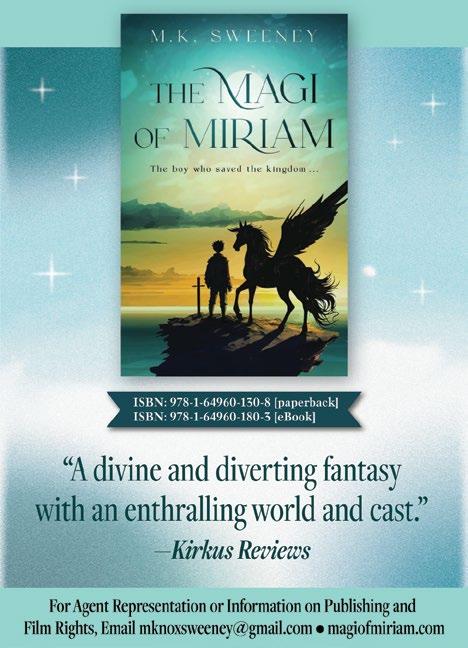



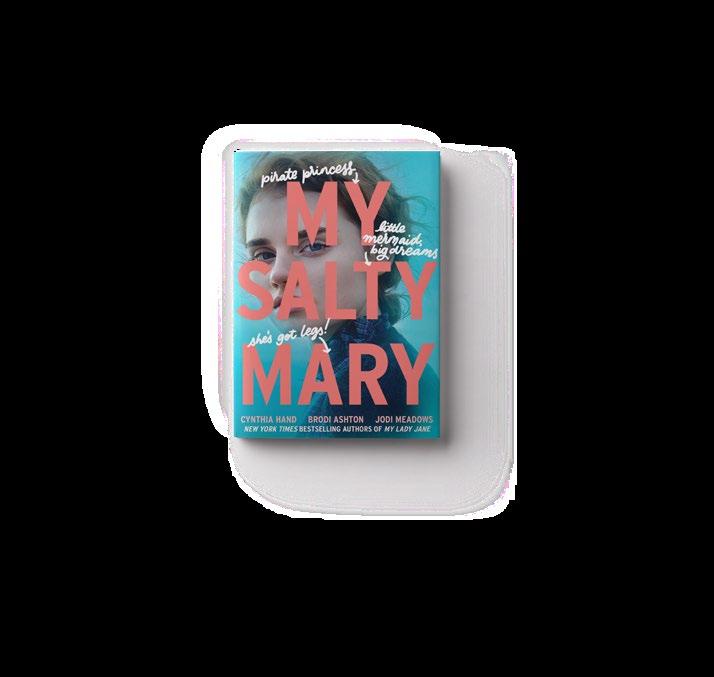
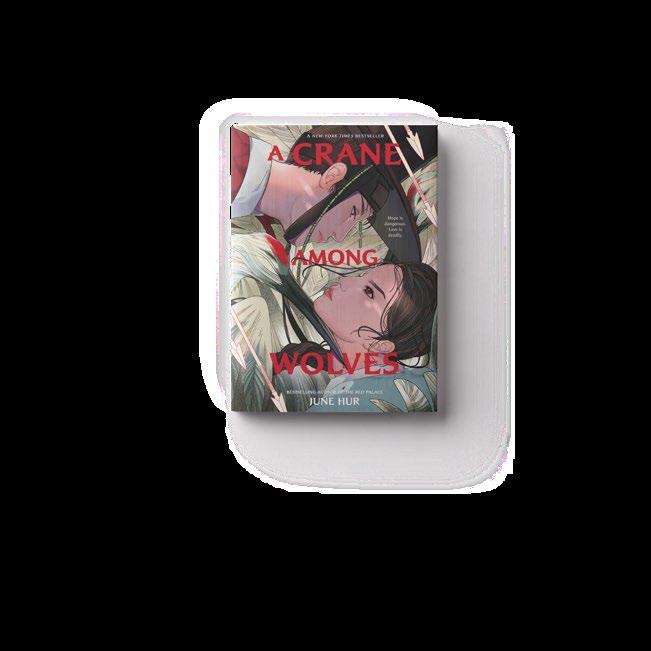
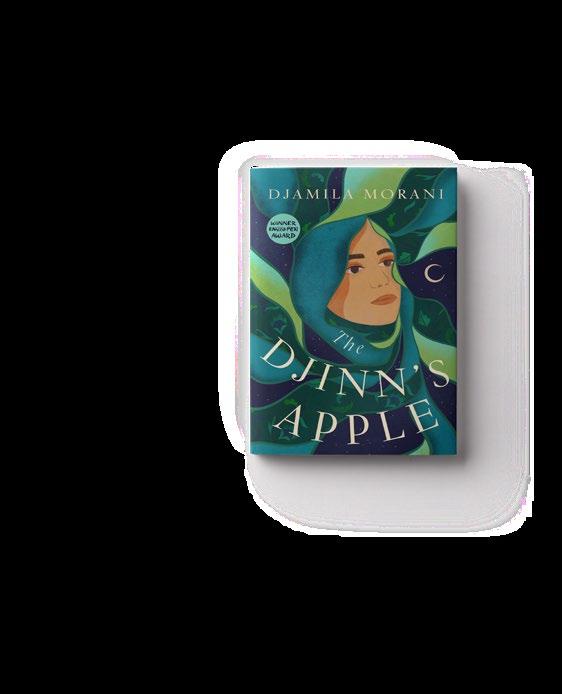

THESE INDIE EDITORS’ picks on eating and drinking well cover the essential (how to shop wisely at the supermarket), the informative (the history of and recipe for an excellent mint julep), and next-level skills (Ayurvedic cooking to create healthy, often plant-based meals with dals, chutneys, and endless flavor).
Most of us know to avoid food shopping while hungry, but Carol Ann Kates, whose background is in grocery store management, devotes an entire guide to successful supermarket shopping, Grocery Shopping Secrets . Kates’ father was a grocer; he taught her that excellent ingredients trump a good recipe, so she emphasizes choosing quality produce and proteins. The author covers the fundamentals (make a list and stick to it) but also addresses how to store produce, cheese, meat, and pantry staples. She defines common but confusing terms, like “pasture raised” vs. “animal welfare certified.” Our reviewer considers the book an ideal primer: “The level of detail in each category is surprising in its thoroughness. All these
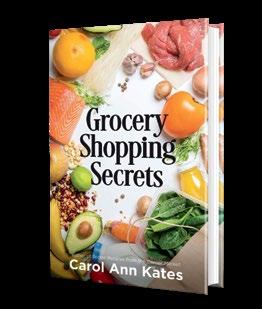
features make it a useful starter guide for college students, newlyweds, or anyone else braving the world of grocery shopping and cooking on their own for the first time.”
Home bartender C. Townsend Brady says, “Most cocktails are simply not worth drinking.” In Mastering Classic Cocktails , he covers the drinks that are worth drinking and have stood the test of time. It turns out margaritas have been around at least 75 years, and the source of the modern cosmo existed long before Sex and the City. What makes this guide stand out are the stories behind the cocktails, along with the easy-to-follow directions for drink making. Our reviewer notes, “It’s this combination—useful information and beautifully designed pages—that really distinguishes this


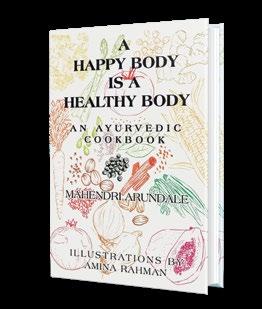
charming book from run-of-the-mill bar guides; this attractive volume will, of course, be at home behind the bar, but also on a coffee table. Brady’s guide is a winner across the board, with recipes and techniques galore, beautiful and colorful illustrative photos, and a bit of illuminating history served up along the way.”
Author Mahendri Arundale, who’s written several Indian cookbooks, left India for the U.S. in the 1970s and has since worked to perfect her Indian recipes. In A Happy Body Is a Healthy Body, she outlines how to use an ayurvedic diet to improve well-being. “The book presents Indian recipes that promote health with subsections dedicated to spice blends, oils and dairy, soups, khichadis (rice/lentil dishes), legumes/ dal, grains, breads, side vegetables, and chutneys
and salads,” says our reviewer. “The text includes healing recipes for specific ailments, such as apricot juice with nutmeg for constipation, fresh mango juice for building bodily tissues, and spinach, beet, and celery juice for uterine disorders and arthritis. This cookbook emphasizes ancient cultural wisdom and will enable cooks to produce authentic Indian dishes that cater to individual and family health needs.” While our reviewer notes that A Happy Body Is a Healthy Body doesn’t offer any case studies that point to the efficacy of ay urveda or provide recipes for those who can’t tolerate gluten and dairy, it “beautifully incorporates a healthy perspective with delicious, authentic Indian cuisine.”
Chaya Schechner is the president of Kirkus Indie.
Depression, incompetence, hidden illnesses, idiotic political decisions, assassination attempts, and sex scandals are among the dark secrets unearthed in this compendium of presidential lore.
California State University historian Henig meanders through thematically arranged biographical anecdotes about presidential quirks and failings. Topics include the effects of personal tragedies (the death of his son turned Calvin Coolidge from an engaged leader into a listless recluse); deceptive image-making (like Edith Wilson’s cover-up of husband Woodrow’s debilitating stroke and Franklin Roosevelt’s charade of mobility after his legs were paralyzed by polio); gross policy miscalculations (James Polk imagined that war with Mexico would
help unify the United States, but it sowed the seeds of the Civil War); and the relentless sexual appetites of the cold, brusque John Kennedy and the schmoozy, smarmy Bill Clinton. Appearing in many categories of dysfunction is Lyndon Johnson, who is revealed here to be a bullying boss, a liar and strategic bungler, and a deeply perverted man (he had a fetish for displaying his penis, which he dubbed Jumbo, in many inappropriate contexts). Henig’s bite-size essays reveal the banal flaws of great men but also humanize them— Washington, he notes, became president in part because he was deep in debt and needed a steady paycheck. The colorful profiles reveal character in vivid, elegant prose, whether depicting Warren

Henig, Gerald S. | Wise Ink Creative Publishing | 352 pp. | $20.00 paper
Aug. 8, 2024 | 9781634896801
G. Harding’s hapless self-loathing (“he had no shame revealing how he felt: ‘I am not fit for this office and should never have been here’”) or Teddy Roosevelt’s unstoppable self-promotion. (“Amidst gasps of horror and cries of ‘Oh no! Oh no!’ Roosevelt unbuttoned his vest and revealed his bloodstained shirt,” he writes of an incident in which Roosevelt went ahead
with a scheduled speech minutes after being shot by a madman.) Full of surprising revelations—conservative icon Ronald Reagan tried to join the Communist Party in 1938, but they rebuffed him—the result is a stimulating reference book for history buffs and casual readers alike. A trove of entertaining stories about the drama, pratfalls, and sheer weirdness of presidents.
C. Calvin
By Barbara Jane Hannon
Gerald S. Henig
By Thomas A. Thomas
An entertaining love story featuring sharply etched, appealing characters with palpable chemistry.
Acuff, S. David | BravoBay Books (441 pp.) $24.99 | $19.99 paper | May 2, 2024 9798988829324 | 9798988829331 paper
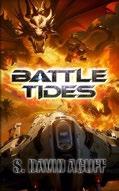
In Acuff’s SF novel, the first in a series, a soldier in hiding attempts to discover the secret of the ghost haunting his biosynthetic body. The year is 2561. Human colonies have spread across the universe through the use of wormholes, and extreme genetic modification has progressed to the point where some people, like Jacques Bastille, have become very hard to kill. When Jacques wakes up in the middle of a dune-filled desert, one of his biosynthetic arms ripped from its socket, he looks up to find his spaceship wrecked and smoldering nearby. He has no idea how he got there—his mind is missing key information, and his memories seem to be spliced with those of another person, a test pilot on Earth named Dash Strouthers. Jacques’ first order of business is to fight off the reptile-like bounty hunters that shot him down. He steals their ship and heads to the edge of the settled universe to find out who wants him dead and why. There he visits Bender the Reek, the universe’s last living Reek (or Re-cycle geek), whose business is extending human life by illegally replanting consciousnesses in new bodies (or “meat-suits,” to use the industry parlance). Bender is the man who put Jacques in his current meat-suit; he’s also the one who tried to collect the bounty. Jacques forces Bender to reattach his arm but has to flee before he
finds out why Bender has several tanks filled with meat-suit versions of the woman in Dash Strouthers’ visions: Dash’s beautiful, blue-haired Mizuke. As Dash’s consciousness grows stronger in Jacques’ body, the confused fugitive relies on the dead man’s piloting skills to survive on the treacherous frontier of space. As he goes, Jacques attempts to figure out his own past as a former king of the Ma’Kobi clan who retired in the midst of a conflict with an authoritarian warlord—as well as how he came to be linked with Dash Strouthers and a mysterious biosynthetic woman named Mizuke BLU. The novel’s lore, particularly when it comes to genetic modification, is complex and jargon-heavy, but Acuff brings texture and humor to the work, as well as the ability to humanize the characters, even those who aren’t recognizably human. Here a medic— who is described as looking more like a mechanic—appraises a patient: “She ain’t like us, man. She’s gentetically altercated. Total bonzai! She is stable. But inna computer terms, it’s more’n like, I dunno, sleep mode than a coma. Her skinbag is fixin’ ’erself right up at a super high cycle, but her mind shows zippo activity.” The narrative’s DNA is at least three-quarters action movie, with scene after scene of fistfights, shootouts, explosions, and escapes. Acuff’s touch is light enough to handle the transitions between Jacques and Dash, though, and while readers will initially be pulled along by the set pieces, they will soon find themselves invested in the convoluted mystery of the protagonists’ origins. Most will return to find out what happens in the next volume. An inventive, fast-paced SF thriller.
Aiseman, Emma | Self (275 pp.) | $12.99 paper May 18, 2023 | 9798218210649

A personal trainer agonizes over whether to dump her jerk of a boyfriend in favor of a rich dreamboat in Aiseman’s fizzy romance. Chloe Barrett is a 20-something Baltimore-area brunette whose unemployed, live-in boyfriend Jimmy is possibly the world’s worst: He constantly criticizes her looks and clothes, derides her ambition to finish college and open a combination Pilates/yoga/ nutritional counseling studio, openly flirts with other women, and says things like “you could lose some pounds, you know” and “even your parents knew nothing good would come out of you” (Chloe was raised in foster homes). Enter the dashing young Will Allentown, who runs his family’s billion- dollar real estate business and is “slightly too handsome to be real” with his captivating dark eyes and awesome lats and deltoids. Will takes Chloe’s business dreams seriously, and she supports his dream of becoming a writer; the two bond over s’mores, steamy hands-on personal training sessions, and Will’s intervention when he rescues Chloe from a creepy groper. Unfortunately, Chloe’s self-esteem is so undermined by Jimmy’s abuse that she can’t bear to leave him, even after he steals $6,000 from her to invest in a nutritional-supplement scam. A further complication arises in the person of Sydney Bell, a gorgeous real estate agent whom Will’s snooty mom Alina wants Will to marry. Aiseman’s colorful, evocative prose ably conveys both catty comedy (“Sydney gets up to hug [Will], making sure her cleavage rubs onto his chest”) and the tremulous buildup of passion (“She moves a tad closer to him almost reflexively…he must notice that little hitch in her breath, because his smile curves upward a little more”). Chloe is a winsome hero, hesitant, wary, and determinedly independent but
suffused with quiet yearning; readers will root for her to land the right man. An entertaining love story featuring sharply etched, appealing characters with palpable chemistry.
Allen, Julia M. & Jocelyn H. Cohen
Lever Press (480 pp.) | $41.99 paper
Oct. 16, 2023 | 9781643150352
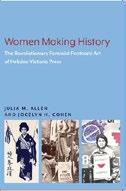
Allen and Cohen tell the story of a grassroots operation to expand the knowledge of women’s history through the circulation of accessible art. In 1972, journalist Nancy Poore and artist Jocelyn Cohen met in Los Angeles, where they formed a romantic relationship. Poore and Cohen shared a desire to tell the stories of women throughout history via art that could be easily accessed by everyone—and to make a living by doing so. They began an artistic and business partnership in 1973 when they founded the Helaine Victoria Press, a lesbian, feminist small press that published postcards (as well as other ephemera) relating women’s narratives taken from history. Allen and Cohen lead readers through the story of the press from its inception until its folding in 1990, contextualizing the activities of Poore and Cohen within the movement of second-wave feminism while giving an overview of the art of letterpress printing. This history includes 100 images that allow readers not only to follow the journey of Helaine Victoria Press but also, and more importantly, to examine the feminist postcards they circulated. The images also emphasize the diversity of the women represented, a priority of the press’s founders. At times, the intense detail in which each postcard series is considered can be overwhelming to the reader. Still, the anecdotes about
connecting with descendants of the women depicted in the postcards—particularly in the case of Alfreda Duster, the daughter of Ida B. Wells-Barnett— demonstrate the impact of the project and the wide-ranging contributions of others. One might not think of postcards as an obvious educational tool, but this work makes it clear that “the cards were, in short, history recovered in the service of generating feminist memory.”
A fascinating history of a unique, consciousness-raising feminist organization.
Asadi, Aaron | Little Orchard Publishing (233 pp.) | $12.99 paper April 25, 2024 | 9781399985819
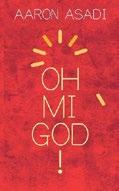
A deeply anxious man deals with the disruptive reappearance of God in Asadi’s comic novel. God has come back to earth. The deity, who looks “like everyone thought he did,” is standing motionless in a Middle Eastern desert as the devout gather around to stare (and record him for TikTok). At home in the United Kingdom, Sam Dalton has no intention of seeing God. The agnostic Brit’s anxiety and aversion to change are intense on a normal day, and the prospect of a returned creator is too overwhelming. As God begins to speak and world leaders call for an ecumenical embrace of the deity, Sam frets over whether the garbage will be picked up at the regular time. His mother panics and his ex-girlfriend tries to reconnect. Sam just wants to go about his life—his errands, his morning run—and do his best to ignore God’s actions, which are quite distressing: He curses Egypt with a plague, foments further conflict in Palestine, and rains brimstone down upon the inhabitants of Las Vegas. When the president of the United States declares war on God to prevent further loss of life, things only spiral further out
of control. God is killed soon after, heaven disappears, angels visit the earth in human form (including one particular angel named John who ends up on Sam’s doorstep), and…well, it’s starting to feel as though things will never be the same. Asadi has a great sense of human nature, and the book is often quite funny, even in its darkest moments. “Hope you’re okay,” Sam texts his ex, Emma, early in the crisis. “Yeah, god stuff is a bit mad. Just wait and see, I think.” The book ingeniously captures the contemporary sense of powerlessness that accompanies world events, from wars to pandemics to autocratic rulers, and the struggles one undergoes to simply get through the day. Asadi does not simply rest on the strength of his premise but continues to throw in new twists, digging deeper into Sam’s sense of incongruity. A suspenseful, insightful satire of modern calamity.
Ballard, Bruce | Atmosphere Press (148 pp.) $24.99 | $16.99 paper | Aug. 6, 2024 9798891323582 | 9798891323285 paper
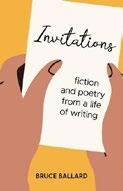
Living with Parkinson’s disease, the nuances of urban gay life, and a bloody uprising of livestock against their human oppressors are among the subjects of these beguiling poems and stories. Ballard, who blogs about his own Parkinson’s experiences, pens many sonnets and haiku about living with the ailment, offering a plangent but good-humored take on motion disorders (“A poppy’s petals / Gently fall to the soft earth. / Not me—I crash land”) and the limitations of the condition. Several short stories explore gay life in Manhattan. In “Invitations,” a narrator riding the subway is fondled—to his delight— by a younger man who then gives him an invitation to a sex club where he enjoys raunchy encounters but contracts a mild STD; months later he runs into
the fondler again, who now regrets past excesses. In “Rufino,” a narrator falls in love with the title character, a Mexican American of Mayan ancestry, and wrestles with the conflicted legacy of Rufino’s Catholicism—both its homophobia and its tradition of caring for the persecuted. Ballard rounds out the collection with intriguing genre pieces. In the eerie “Weathered,” an American teacher in Asia notices an occult pattern playing out in a repeated, seemingly random confluence of bowls, swirling fluids, tunnels, and people shouting at him—which are always followed by devastating tropical storms. And in “The Turkey,” a serio-comic mashup of “The Raven” and Animal Farm, a young barnyard turkey learns of the approaching doomsday of Thanksgiving and leads the animals in revolt against Farmer Joe, wreaking havoc on humans and beasts alike and prompting bleak reflections on mortality. Ballard’s writing is infused with subtle, mysterious, open-ended meanings, but it’s always grounded in sharply observed, painfully intense physical specificity.
(“I’m scared of choking,” he writes in the poem “Six Years With Parkinson’s Disease: Status Update.” “Every time I pour / A tall, cool glass of water, I’m afraid / The water will explode like a grenade.”) The result is a richly textured take on an illness and on other baffling complexities of life.
A captivating collection, full of charged atmospherics, lyrical emotions, and searing imagery.
Burns III, B. John | Self (372 pp.)
$29.95 | $15.00 paper | May 16, 2024 9798325798368 | 9798324292690 paper

Victor Du Plessis and Daniela Gomes Costa (a South African and a Brazilian, respectively), parents who never bothered to secure her American citizenship after they moved to the United States when she was 6 months old. However, Marisa is as American as they come—she grows up in Kansas City, Missouri, attends high school there, and even serves for four years in the Marines before receiving an honorable discharge. She leads a mischievous life, one that sometimes drifts into criminality—she is arrested for drug possession and check fraud. When the federal authorities realize she is not an American citizen, they deport her. Traumatized by her expulsion from the only place she’s ever known, Marisa defiantly returns to the U.S.; her remarkable plight is compellingly conveyed by the author. When she’s caught yet again by the authorities, she is charged with illegal entry into the country following deportation, a serious crime that could land Marisa in prison for 20 years. She’s given assistance and encouragement by Alvey, a 67-year-old musician who gives her a lift one night before she’s arrested and takes a profound interest in her case and her life (“After all that had transpired in the previous month, there was no question in Alvey’s mind but that he would attend the preliminary hearing. Of all the events of the summer of ’23 to date, [Marisa] was the undisputed champion in the arena of Alvey’s attention”). As he investigates her past, both out of a burning curiosity and a desire to help, he peels back the bewildering layers of a life as fraught with difficulty as it is filled with promise.
be resurrected over the years to confront challenges for which Marisa, despite all her innate intelligence, was unsuited to cope. And Desiree would develop in her complexity as life’s circumstances grew correspondently complex.” It is simply impossible for the reader not to sympathize with Marisa—even the legal authorities prosecuting her do—but it’s also impossible not to find her relentlessly self-destructive behavior a source of culpability (and exasperating). The plot has a tendency to meander and stall—Burns simply packs too much into a novel that balloons into something unmanageably prolix. For example, readers learn far more about Marisa’s parents than is necessary to the story, and the narrative probably spends too much time on Alvey as well. Still, this is an extraordinary tale, a riveting “dramatization inspired by true events.” A gripping story brimming with psychological subtlety.
Campbell, Carol Lee | Rebel Satori Press (162 pp.) | $14.95 paper May 31, 2024 | 9781608642786

A troubled young woman is arrested and faces deportation and prison time in Burns’ novel.
Marisa Susanna Du Plessis was born in Canada, the daughter of
The heart of the story is Marisa, a memorable protagonist who is exceedingly intelligent—she has a “genius level IQ”—but also possibly mentally ill. As a child, she begins assuming an alter ego, Desiree (which would be amended to “Dessyre”), who cheered on and legitimated her rebelliousness; this identity expanded to encompass a growing defiance of the law. “Desiree was a vestment that would open doors that were otherwise locked to Marisa. Desiree was an intuitive invention that didn’t die in the third grade. She would
A girl learns to make her voice heard in Campbell’s historical novel. In early 1500s England (in a slightly more magical version of the real world), a talented young poet named Mathilde dreams of being a writer and sharing her verses—but she lives at the Convent of the Blessed Comfort, and the sisters there have plans for her to marry. After the sisters attempt to “rid the evil” inside her by using physical punishment, she runs away to a cathedral in Exeter and disguises herself as a boy to seek shelter among the monks. There, she befriends the kind Roberto, an Italian missionary with a love of orchards. But after Roberto falls ill, Mathilde’s true identity as a woman is revealed to the monks and she is cast out. This starts her on a journey of friendship, love, and
heartbreak, all conveyed in short scenes that sometimes feel like vignettes. Mathilde forms a sweet bond with Hamlyn Clemens, the cart driver who originally took her to Exeter, and his eccentric niece Isca, who is obsessed with the magical fairy folk (who may or may not be real). In the background, a group of women called the rogue mistresses fight against the nascent forces of capitalism as Mathilde spins sonnets and falls for the enchanting, green-eyed Jack Straw. The narration is lyrical and flows nicely: “The winter makes war with everyone’s vanity, but mine is like one hundred hits to the head.” However, Campbell occasionally drops readers into scenes already underway, and the lack of description leading into them can make it hard to understand what’s happening. The story works best when it’s focused on Mathilde’s relationships, which feel raw, grounded, and charmingly relatable. A beautifully written but sometimes rocky read.
Chiles, Adam | Measure Press (70 pp.) $20.66 | Jan. 8, 2024 | 9781939574374

A moving collection of poems that explores Chiles’s childhood memories and aging parents. From the opening poem (“We had neared the end of something / though it was morning, the day young”), Chiles’s collection is concerned with nature, change, and loss. While non-narrative
and originally published across a wide range of publications, a story of his late father and mother emerges. In the first few gentle yet emotionally complex poems, we learn that Chiles’ father is in the U.K.’s Hull Royal Infirmary, “hands in restraint gloves so he can’t drag out / the feeding tube.” When Chiles’ father dies, as recounted in “The Afterlife,” he sleeps at the foot of his mother’s bed and helps her through the next few days. A beautiful poem follows (“Nocturne”), which reflects on his father’s fading memory lingering in his mother’s ears. This work is followed by two elegiac poems about his father’s left-behind hearing aid, including one where his mother puts it in her own ear, “As though my father is listening // as her body thrums / the motor’s unanswerable pleas.” After his father’s death, the focus moves to his mother—her accent, her habits, her own childhood—and stretches back to his grandparents. The focus, as before, is on carefully reconstructed images and warm memories. He describes his mental image of his childhood house as “an isle of incalculable light,” despite being a location associated with mundane daily tasks for his parents. The last section of poems follows his mother’s own failing health, her move into an assisted living facility, and her routines of looking out the window and following the movements of the wrens. The title poem, which can be considered the theme of the collection, focuses on the inevitability of aging and death and the power of enjoying even the smallest moments along the way: “We’re all headed for the bluff, // the gale, its clarifying salt. / May as well enjoy the view, / I do…”
An often beautiful collection of verse, personal yet still universal.
An inspiring tale about the importance of freedom and how it defines us.
Cobra, Jeremiah | Obsidian Ink (302 pp.) $32.99 | July 24, 2024 | 9780999904329

A young, enslaved man sets off on a quest to live life on his own terms in Cobra’s historical novel.
In October 1858, 18-year-old Percival Bishop tries to flee to freedom across the Mississippi River from Missouri to Illinois. As the unrecognized Black son of white enslaver Joachim Bishop, Percival has never known a life outside of the tobacco plantation that his father owns. Shortly after his escape, he’s tracked down and caught by two men who make a living by kidnapping people and bringing them back to their former enslavers. But before they can drag Percival back to the plantation, a white man named Winthrop Goodfellow shoots one of them and rescues the teen. Later, Winthrop learns of Percival’s skills as a sculptor, and he teaches him how to hone them as a way to help himself in the future. They head to Quincy, Illinois, where Percival secures a fake identity and forged paperwork that says that he’s a free man. When his love of sculpting attracts the attention of someone familiar, and interest from a mysterious buyer from across the river, he fears that someone’s onto his secret. To gain his freedom once and for all, Percival finds that he must do whatever it takes—even with a bounty on his head, and despite the fact that Winthrop may have a dangerous secret of his own. Over the course of this novel, every character, including relatively minor players, feels rich and complex, from Cassandra, a Black woman who works at a Quincy store and befriends Percival, to the head cook, Esther, at the Bishop mansion. Cobra’s lyrical prose brings life to the story, as does the present-tense immediacy of Percival’s narration: “In [Cassandra’s] gaze, I wonder if the beholder cannot be made beautiful by the things he beholds.” Some readers might find a few violent
scenes hard to get through, but one never feels that they’re without purpose. An inspiring tale about the importance of freedom and how it defines us.
Croft, Nicolette | Historium Press (288 pp.)
$16.99 paper | June 4, 2024 | 9781962465403

Croft’s homage to the classic Gothic novel follows a plucky heroine’s adventures.
The novel is set in the late-18thcentury Regency period and centers on Renna, a confident waif who’s loosely attached to a “cotton house” in York, England. Renna is under the care of Camilla and is befriended by a burly and mysterious fellow named Donovan McGuiness, but she’s romantically drawn to a sailor named Capt. Henry Moore. Soon she and Camilla find themselves elevated to maid status at Harewood House, an estate where Renna loses her virginity (not unwillingly) to Capt. Moore. The book has a number of plot twists and characters, but with Donovan’s help, they escape to Venice, where Camilla’s sister, Danielle (aka “Mother”), grooms Renna to be a courtesan. Renna is not wild about her new occupation, but she’s good at what she does. Much intrigue follows, and by book’s end, as Venice falls to Napoleon’s army, Renna has a choice of three suitors: the young and idealistic Alistair, the buff and honest Donovan, or the aristocratic Capt. Moore. Readers might think she ends up making the worst choice possible, but perhaps the implied moral is that one learns more from bad choices than good. Croft strongly hints at a trilogy, based on the idea of “Maiden, Mother, Crone.” The book is a worthy tribute to Gothic literature, with surprising revelations at every turn, although the numerous surprises toward the end flirt with parody. All the ingredients are here: randy and arrogant aristocrats, grand manors with secret passageways, spunky young heroines, perverted clergy, secret potions,
An accessible introduction to institutional racism in the United States and its ongoing effects.
PREJUDICE, RACISM, AND TRIBALISM
and madness and wretched asylums. The coming-of-age theme involves a young woman trying to make her way in a harsh world, with everything playing out amid the baroque trappings of the late 18th century. The writing can sometimes be eccentric and over-the-top (“Am I doomed to this life of chaos that befalls me?”), but on balance this is an engaging historical novel with plenty of melodrama to hold readers’ interest.
An entertaining romp, with a female protagonist who will constantly subvert readers’ expectations.
D’Agostino, Anthony M. | Page Publishing (378 pp.) | $18.95 paper Jan. 24, 2023 | 9798886546453
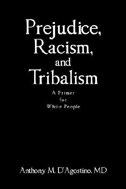
A psychiatrist explores the legacy of American racism in this second edition of his nonfiction book.
“The problem with America is not that there are too many non-White people,” author D’Agostino asserts. “The problem is that White people are afraid of change and have given up on democracy.”
As a white Catholic born in 1940s Chicago, the author notes, he “almost always voted Republican” in Illinois state elections, and he sees himself as “representative of elderly White American males.”
After the election of Donald Trump and the growth of the racial justice movement after the death of George Floyd, the author began a journey of self-reflection and contemplation about race in America. The book includes a discussion of how he
grappled with Robin DiAngelo’s book White Fragility (2018), and explicitly offers white readers a “primer” on how America’s racial history continues to affect the present. The book’s emphasis on precise terminology will be useful for readers who are unfamiliar. This well-researched book draws on the work of contemporary academics who challenge the conflation of the term racism with prejudice. Prejudice, they note, refers to an unfavorable opinion towards a group, often based on stereotypes, but racism historically manifests as an institutionalized doctrine through government policy. Much of the book centers on the American history of Black and white people, but D’Agostino also devotes chapters in this updated edition to prejudices against women, immigrants, Muslims, and LGBTQ+ communities. The author has a solid grasp of U.S. history and uses it to explore such topics as the connection between wartime propaganda and Japanese internment camps, and the role of the eugenics movement in fostering racist policies. Perhaps most convincing is the book’s argument that there’s “both financial and political gain in maintaining inequality, and racial inequality sells best,” noting that for many white men, there’s a “tangible benefit” in preserving the status quo. This is the reason, according to the author, that many white Christians “are willing to give up on democracy” to embrace an “authoritarian government,” as they see it as their “only way to preserve their vision of culture.” The book won’t be revelatory for readers who are already aware of the insidious legacy of racism, but it excels at introducing the subject to its intended audience of skeptical white men. Its concluding chapter, “The White Man’s Dilemma,” offers a poignant reflection on the concept of white guilt, highlighting differences between guilt and shame
and reminding readers that the purpose of the latter is to “behave better in the present.” D’Agostino admits that he’s not a scholar on the subject of racism or prejudice, but his background as a medical doctor and former president of the Illinois Psychiatric Society brings a learned approach, which blends nuanced analysis with a down-to-earth, conversational writing style. The stories of his personal history with race and prejudice may not appeal to those whose backgrounds and identities differ from his, but they may offer a valuable perspective to his target audience.
An accessible introduction to institutional racism in the United States and its ongoing effects.
DeHart, Barbara & Gayle Long | Self (244 pp.) $18.83 paper | June 6, 2024 | 9798989893706

In this nonfiction book, two women respond to a series of disappointing relationships by swearing off men for a year. At a glance, DeHart and Long didn’t have much in common. DeHart was a hotshot executive at a large tech company who juggled a demanding career, a broad profile of investment properties, and the care of her two children with her spouse. Long, a stay-at-home wife and mother, spent her abundant free time shopping, volunteering, and maintaining the custom home she shared with her husband and three children. Just beneath the surface, though, the two shared an unshakeable habit: Both tended to pursue difficult relationships with disappointing men, due to their fears of being alone. Indeed, early on, DeHart admitted, “I do not know how to live in this world without a man”—a sentiment that many women will find relatable. A chance encounter at a party led the women to bond over their failing marriages and embark together on a plan to improve their lives: They challenged themselves to
swear off sex and romance for a full year, starting on June 1, 2010. Rather than looking for male partners to assuage the anxieties in their lives, the two pursued an intense regimen of therapy, holistic healing, and travel to improve their relationships with themselves and grow closer to each other. This chronicle of their efforts—written in a series of vignettes, with the two authors alternately narrating—is refreshingly honest in revealing the women’s struggles to adhere to their plan, despite temptation from potential suitors. They also show their processes of recognizing the patterns in their behavior that resulted in unfulfilling relationships, and their nonlinear progression toward true independence and self-love. The book’s tone is playfully crass and wrenchingly earnest, by turns, and its narrators are aspirational but never feel out of touch.
A powerful journey to independent womanhood, described with frankness and self-effacing humor.
Dossett, Natalie Musgrave Atmosphere Press (366 pp.) | $18.99 paper Sept. 10, 2024 | 9798891323131

In Dossett’s historical novel, a teena ge girl in the Prohibition era vows to avenge the murder of her brother by tequila smugglers. Sarita Gibson lives on the family ranch, La Barroneña, with her ailing father John and her younger brother JJ. She’s somewhat adrift after her mother’s death, unable to graduate school in San Antonio as she had planned and barred from fully devoting herself to working on the ranch by her father, who doubts her capability on the basis of her sex. One day, a catastrophe forever changes her life: When two tequila smugglers rob Sarita and JJ of four of their horses, JJ is shot and dies in his sister’s arms. John turns to the local sheriff and the Texas Rangers for justice, but both entities are too preoccupied to be of any meaningful
assistance, a predicament that only exacerbates John’s “frail heart.” To exact vengeance on JJ’s behalf and prove to her father that she can take over the ranch (John is poised to sell the spread to Burr Archer and his “greedy white teeth”), Sarita sets off in search of the killer, Javier Salsito de Ortega, a ruthless bandit and smuggler. Her resolve is stirringly captured by the author: “JJ had not been peaceful in death. His face had brimmed with confusion and fear. He’d had no chance; his life had been taken, running out of him like sand through a funnel. He had died trying to save me. I couldn’t give up so easily.” The plot is aggressively paced, packed with vividly rendered action, but this is more than just a tale of adventure and revenge; Dossett astutely captures the near lawlessness along the border at that time, a circumstance only worsened by the prohibition against alcohol. Sarita is a deftly drawn character encompassing complexity, toughness, and vulnerability. This novel will please readers in search of a thrilling plot that is thoughtfully executed.
A powerful tale of revenge and perseverance in the face of danger.
Erman, Matthew | Illus. by Shelby Criswell Papercutz (184 pp.) | $14.99 paper Sept. 17, 2024 | 9781545811887

A down-on-theirluck sixth grader takes a chance in this graphic novel about a haunted school and buried gold. Sixth-grader Bluejay “Blue” Evers wouldn’t call themselves lucky. They’re the child of a single mother, wear secondhand clothes, and live close to the train tracks, which makes them a target of three bullies at their school: Chad, Don, and Paloma. They trick Blue into undertaking a quest for the legendary Amberline Treasure, said to have been buried under the Amberline school by its corrupt founder, Edwin Amberline, and surrounded by ghosts: “Edwin Amberline will get you!”
the bullies say. In the hopes that the treasure will change their life, Blue enlists the help of their best friend, Hersch Pepperman, to sneak into school after-hours and search for it. Their prospects look bleak at first, especially after they fall victim to another prank, but Blue and Hersch gain ground after teaming up with the school’s groundskeeper, Madison Beaker, who’s a descendant of Edwin Amberline. However, the closer Blue gets to the riches they’d always dreamed of, the greater the risk of their encountering a very real ghost and losing what’s priceless to them. Writer Erman and artist Criswell’s story shines in the charming friendship between the main characters. Blue and Hersch’s conversations about curses, video games, and socioeconomic status are amusing and authentic. In a dialogue about their friendship, Blue, after accepting Hersch’s label as his “cool sidekick,” asks why their peers don’t think they’re cool, too; Hersch’s delightful response: “I guess I’m just a special little boy.” Visually, the novel’s style is reminiscent of a classic Sunday comic strip, with simple, brightly colored characters and backgrounds. The panel arrangement is easy to follow and adds visual interest to action-oriented scenes to great effect—for example, the panel lines become more geometric and jagged when Hersch fights off bullies while pretending to be his favorite video game character, Cranky the Quillhog. Friendship is the real treasure in this spooky and vividly illustrated adventure.
Florio, Mike | PFT Publishing (400 pp.) Sept. 3, 2024 | 9798987944042

In Florio’s crime novel set in the 1970s, gangsters pursue a young couple and fight among themselves. As the story opens, it’s 1973 and J.J. Mesagne has just fled the scene of a gangland shootout in Wheeling, West Virginia, involving his father. He travels across the country
with a stolen dog named Gnocchi to Scottsdale, Arizona, where he meets up with his mother, Maria Jenkins, and Leslie Fitzpatrick, the girl carrying his baby. Leslie also happens to be the mistress of Paul Verbania, West Virginia’s main mob boss. The three soon learn that J.J.’s father has been executed as a reprisal for the couple’s relationship. J.J. assumes a false name and starts working at a hospital in an effort to keep a low profile, but it isn’t long before he arouses the suspicions of Billy, a local man with organized crime connections. Before long, J.J. realizes he must decide between doing the unthinkable or continuing to run. Back in West Virginia, Paul’s crew, led by the menacing Vinny, are taking the search national: Anyone who finds J.J., and sends his severed hand to them as proof that he’s dead, will receive a sizable reward. Meanwhile, Jimmy Dacey, the 72-year-old best friend of J.J.’s father, is infiltrating the West Virginia mob; he starts working with Vinny’s crew and learns that there’s dissension in the ranks over whether to keep pursuing J.J. Jimmy hatches a plan to take down the bad guys and set J.J. free for good.
Over the course of the novel, Florio presents a mob drama that spans years before delivering a satisfying conclusion that ties all the various plot threads together. Right from the exciting opening—which starts in the middle of the action, leaving readers unsure of who was just shot, whom we should trust, or what exactly is in J.J.’s immediate future—readers will be eagerly turning pages as Florio fills them in on past and future events. The cast of characters is large, and several are the focus of individual chapters, told from their first-person point of view. This device could have offered an intriguing patchwork of perspectives, but it’s not entirely successful in its execution; they often feel too similar in style, and the cutting back-and-forth between different points of view slows some exciting action sequences. Despite this, Florio’s characters are well drawn and engaging. He has a flair for dialogue that keeps the plot moving, as in punchy exchanges between Vinny and his dimwitted crew, or between J.J. and his sharp-tongued
mother, as when he tells her it’s his duty to get revenge: “‘Duty my ass.’ Maria smacked a hand against her backside as she said it. ‘Your only duty is to take care of this family. If you don’t come back, where does that leave us?’” The plot treads familiar territory for the genre, but the inclusion of Maria and Jimmy as elders with their own agendas, romances, and doubts feels fresh.
A fast-paced mob-family saga with compelling characters, great dialogue, and hardboiled vengeance.
Fordyce, Jill | Post Hill Press (272 pp.) $21.99 | $18.99 paper | Jan. 30, 2024
9798888451748 | 9798888459287 paper
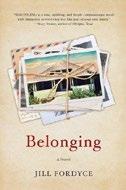
In Fordyce’s novel, a teenager leaves her hometown in search of healing and returns decades later to face her painful past. It’s 1977 in Bakersfield, California, and 13-year-old Jenny Hayes has a troubled home life. Her mother is a cruel alcoholic, and her father is passive and silent. Jenny finds solace in the prayer cards she collects, and from her friends and members of her extended family: her best friend, Henry Hansen; her great-uncle, Gino Vitelli; her cousin Heather Moretti; her aunt Hope Moretti; her loving grandmother, whom she calls Nonna; and her first love, Billy Ambler. After a catastrophic dust storm rips through her hometown, Jenny contracts a serious fungal lung infection, and a loved one, who’d shown her more love than her parents ever had, unexpectedly dies. After enduring years of her mother’s abuse, Jenny leaves for college with Henry, but they drift apart when he later becomes “increasingly secretive and distant”; only later does this reason become clear. By 2017, Jenny has built a life of her own, but she must return to her small town to face a tragedy and seek answers about her past. In a narrative that spans 40 years, Fordyce explores one woman’s quest for self-preservation in
scenes that are punctuated with plenty of music, as well as plenty of tears. Woven throughout the story are religious quotes from the prayer cards that Jenny collects (“May I be at peace. May my heart remain open. May I be aware of my true nature. May I be healed ”), which gives the novel an overall tone that readers may find soothing. The prose style feels naïve and gentle at the start, but the writing matures over the course of the novel, as Jenny herself does. The characters’ Catholicism plays a major role in the story, as does the fact that some people justify bigotry in the name of faith. Fordyce doesn’t shy away from this and other harsh realities, and her complex characterization feels fully realized by the story’s end.
A faith-based, character-driven novel that effectively tackles difficult topics.
Friday, Orion | Vervical Media | Aug. 30, 2024
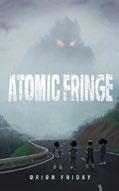
Tweens and an otherworldly robot may be a small town’s only defense against a planet-destroying alien in Friday’s debut middlegrade novel. A bizarre purple glowing object flying through the dense woods near her Oregon home unnerves 11-year-old Mattie James. She’s reluctant to call it a UFO, or to even mention aliens, but she’s still eager to know what’s out there. Surely, her best friend, Nova Diaz, and the new kid in school, Parker Wu (who has a drone), can help her find out. But the kids—soon joined by Nova’s twin sister and aspiring social media influencer Rora—find much more than they anticipated: a fight between aliens with a strange robot in the mix. The confrontation ends with the robot damaged and missing nearly all of its memory. Mattie and Nova, members of their middle school’s robotics club, think they may be able to fix “Cache,” as Nova dubs the robot. The tweens want to make sure that Earth is safe from an extraterrestrial creature that Cache
Extraordinary characters headline this brisk, unputdownable SF romp.
ATOMIC FRINGE
claims is powerful enough to annihilate the planet (“This situation is suboptimal”), but covert alien-hunting government agents may foil their plans. Friday’s story boasts a wonderfully diverse cast, including Auntie Taj, a 3-D animator watching her beloved niece Mattie while the girl’s parents are away; Rora, who, quite unlike her sister, is one of the most popular kids in school; and the intriguing aliens, both good and evil. The story makes room for several nods to SF pop culture, especially the Star Wars franchise (there’s a broken robot in a backpack and a crucial hologram recording). It’s all in service of a boisterous narrative (boasting stellar action sequences) of friends sticking together. It’s convincing, too; Mattie, Nova, and the others are realistically aware of their skill sets and their limits as they overcome such obstacles as nosy government types and school detention. Extraordinary characters headline this brisk, unputdownable SF romp.
Glimp, Cherelle Iman | Pact Press (146 pp.) | $17.95 paper Oct. 29, 2024 | 9781646035236
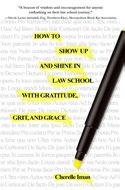
A practical primer for students entering the intimidating first year of law school. With intimacy and vulnerability, Glimp, an accomplished graduate of Columbia Law School, shares not only her own experiences—from receiving her acceptance letter and her first failed test
to taking the bar with a cracked tooth in hand—but also her practices of gratitude, mindfulness, and meditation to help “1Ls” succeed. These tools go beyond simple insights into the Socratic method or exam strategies, though those are here, too. The author provides tips for developing a Super PAC (or “Personal Affirmation Committee”) of family members, friends, upperclassmen, and mentors to help maximize support and make important connections that will serve future lawyers well past their first year in school. Glimp identifies common pitfalls like negatively comparing oneself to peers, the mediocrity of complacency, and the myth of multitasking. She details specific language and tactics that POCs and other marginalized individuals can use to combat implicit bias, microaggressions, and systemic discrimination, and she suggests pragmatic ways to confront inequality and to self-advocate. Each chapter includes a “Solo Sidebar” with questions that encourage self-examination (“What excites you the most about starting law school?”) along with mindfulness exercises that focus on stretching, breathing, and other self-soothing techniques. A resource on law school that emphasizes gratitude and touts the importance of self-care as much as academic fastidiousness might seem a little New Age-y at first, but its straightforward practicality and easy-to-implement advice keep things grounded. Glimp never sugarcoats how difficult law school can be and shares accessible strategies to deal with fear and anxiety. The advice on how to “show up and shine” often focuses on basic (and easy to neglect) areas like diet, exercise, and good sleep hygiene. The text is well supported by citations and provides recommendations for further reading. Though this guide is a resource aimed at first-year law students, there is much here
that would be a boon for anyone entering an intensive academic program. Constructive counsel for future counselors that should be part of every law student’s brief.
Kirkus Star
Golecha, Devshree & Kiara Golecha
Creative Book Writers (78 pp.)
$24.99 | $15.99 paper | June 12, 2024 9781964209814 | 9781964209807 paper
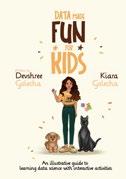
Devshree Golecha and her 10-yearold daughter Kiara Golecha offer a brief, colorful explanation of data science for young readers. In their nonfiction debut, the Golechas make Kiara (and her two dogs) the focal point of a short, extensively illustrated guide for teaching kids how to visualize and analyze “big data,” which “helps scientists find cures for diseases, lets companies create better products, and enables cities to plan for a brighter future.” To help younger readers unlock this “treasure chest of knowledge,” the authors, in a series of brief chapters full of charts and bulleted points, lead readers through some of the basic data skills, including how to interpret data averages like mean and median and how to spot patterns and make predictions based on data habits or trends. Concepts like the range visible in any given data set or the nature of outliers to that data are explained using a combination of text, pictures, and charts. Every chapter includes activities designed to help both students and teachers in addition to prompts for “reflection and conclusion” aimed at bringing the whole picture into sharper focus. “Data science is like a magical key that unlocks secrets hidden in numbers and information,” the Golechas write, and the joyful energy of this book actually has a magical feeling. The sheer enthusiasm for the adventure that unfolds in these pages is infectious, and it serves very effectively to demystify
the charts and numbers the text includes. The choice to reiterate at regular intervals the importance of data in our modern world is a wise one, guaranteeing that young readers won’t lose interest when the going gets more technical. Touching on everything from scores to statistics, this book does an excellent job of making data exciting. A warm and thoroughly inviting children’s introduction to understanding data.
Haarsager, Mhairi | Luminare Press (238 pp.) | $14.95 paper Dec. 5, 2023 | 9798886793826

A doctor must reckon with her traumatic childhood to expose a far-reaching conspiracy that targets infants in Haarsager’s thriller. The tragic and increasingly suspicious death of an infant transferred to Children’s Hospital in Baltimore sends Dr. Lussi Sim down a conspiratorial rabbit hole. Dr. Sim’s “integrity, intelligence, work ethic and perseverance” are put to the ultimate test when she uncovers an “appalling” rogue operation being perpetrated by “a highly sophisticated and depraved international network.” When she is ordered to cease her investigatory activities and to keep a low profile, her internal response is, inevitably, “I can’t do what you ask.” The author, herself a doctor, establishes a sense of menace from the get-go as Dr. Sim notices she is being tailed by a black limousine on the night she is called in about the infant, who had been misdiagnosed at another hospital. The deeper her suspicions go and the closer she gets to figuring out what’s going on, the more serious the threats on her life become. (In one harrowing scene, she is injected with a killer dose of fentanyl.) An effective hospital-set thriller, this debut novel is just what the doctor ordered when it comes to setting its plot in motion. Haarsager knows her way around a hospital, and in Dr. Sim, who is haunted
by flashbacks and nightmares born of childhood trauma, she creates an empathetic character whose professional expertise can be undermined by her personal demons. Early on, she is revisited by a childhood malady of “screams and shouting” in her head: “Her body tensed and she could feel sweat trickling between her breasts and shoulder blades as the threats...mounted in ferocity.” The conspiracy targets the most vulnerable, which makes the perpetrators especially heinous. The final portion of the book is on the talky side when it comes to “unanswered questions,” but this will be appreciated by those who like their mysteries spoon-fed.
A taut medical thriller that will keep readers in suspense “to the bitter end.”
Hannon, Barbara Jane | Self (283 pp.) $41.99 | $19.99 paper | June 22, 2023 9798399389233 | 9798399261591 paper
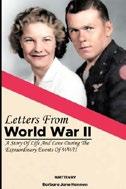
Hannon’s biography draws on her parents’ correspondence during the Second World War. This debut has an origin story that’s worthy of a Hollywood movie.
When Hannon and her sisters were clearing out the family home after their mother’s death, they found two boxes in Dorothy’s bedroom closet. One was a collection of World War II memorabilia, including documents, news clippings, and photos, and the other was a cache of letters between Dorothy and their late father, George. The two were teenagers together in 1930s Cedar Rapids, Iowa, and they’d only been wed for a brief period in 1943 when George shipped out to England to serve in the U.S. Air Force. “Although neither of them knew at the time,” Hannon writes, “they would not see each other for almost two
years, not until the war ended.” In the following pages, she presents their correspondence, including reproductions of Western Union telegrams, letters with marvelous prewar cursive handwriting, and plenty of family photos, mostly in color. Hannon extensively contextualizes the letters, relating everything from day-to-day details of Dorothy’s and George’s lives in the ’30s and the war years to the tense drama of George parachuting out of a burning plane in January 1944 and spending more than a year as a prisoner of war in Germany. The extensive detail creates a compelling picture of the lived experience of the World War II era. Dorothy’s letters to George are particularly winning, as in one dated May 1, 1944, when she was thinking of enjoying spring days with him upon his return: “You know we never had a chance to enjoy spring together, much less fall and winter…. Let’s go on picnics and take the car out for nowhere in particular.” Hannon and her siblings should be cheered for so lovingly preserving these records. An enchanting epistolary account of a wartime love story.
Kiehne, Angie | Warren Publishing (254 pp.)
$27.33 | $19.95 paper | April 2, 2024 9781963569407 | 9781963569414 paper

Kiehne presents a memoir of moving across the United States, enduring culture shock, and dealing with her parents’ divorce. After a short prologue, the author’s story begins in 1987 in Vermont, when she, along with her
mother, father, and four siblings, lived in a small New Age–influenced religious community, where her parents ran a bakery. The family attended services at a nearby ashram; their belief system included abstention from consuming meat, eggs, or alcohol, or using recreational drugs or tobacco. Their lives changed in 1989, when her parents decided to move the family west to Washington state, where their domestic cohesion unraveled. Kiehne’s father and mother, who took new jobs as a teaching assistant and an administrative assistant, respectively, faced ongoing financial problems, and they later separated. The author lived with her mother, who dated various men and strayed from her previous beliefs; she also started wearing makeup, which she hadn’t back in Vermont. The author’s father, Kiehne writes, grew distant and later married someone new without informing his children beforehand. Meanwhile, the author found it difficult to change schools and live, for the first time, “outside a community of like-minded individuals.” Even after she returned to Vermont to finish high school, she found things weren’t the same as when she’d left. Over the course of this memoir, Kiehne doesn’t shy away from uncomfortable details, as when she tells of finding the new intimate apparel that her mother began wearing after the marital separation; at another point, the author relates her interactions with an oddball cousin, who’d skinned a chipmunk. The book effectively underscores how comfortable routines can unravel, and how seemingly minor occurrences can produce immense anxiety, as when Kiehne’s father gave away her pet rat to a pet store: “Experience had taught me that I couldn’t share my frustration or disappointment, as it only resulted in my parents withholding love from me.” Some accounts are less
A boon for parents managing the early years of childhood development.
compelling, such as the author’s quest to get her driver’s license, but a feeling of revealing honesty shines through. A nuanced, touching remembrance of a disintegrating home life and its lasting aftermath.
Matthews, Froukje M. | Balboa Press Australia (114 pp.) | $11.99 paper Aug. 8, 2022 | 9781982295561
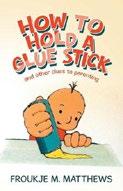
Matthews offers strategies to aid the parents of toddlers and preschoolers in this amended version of her 2013 guidebook. Parents, especially new parents, often struggle as their infants transition into toddlers. Their once entirely dependent babies now solely “live in the moment” as they focus on staying upright, moving around, and becoming familiar with their expanding world. Matthews’s guide seeks to address 10 common challenges during “the most labour-intensive time” for new parents, when their child is between the ages of 2 and 5 and experiencing their most rapid period of physical and mental growth to date. Drawing from the tenets of Montessori education, the author promotes skills like self-regulation and patience, which help parents maintain a consistent routine and cultivate an ideal low-stress learning environment. She breaks down specific behaviors, like tantrums, as nuanced reactions, providing tips on how to identify and approach each situation in ways that will encourage obedience and discourage bad habits. Revisited and amended in 2022, Matthews’ original guidebook for new parents has been updated into the post-Covid-19 era. Each chapter offers detailed, relatable scenarios followed by breakdowns of how each situation was handled and why certain methods are more significant or effective in their approach than others. Most chapters include concise summaries at the end,
Whimsical illustrations and a catchy refrain result in a joyous celebration of what makes us unique.
allowing for quick reference in a pinch. A detailed bibliography and links to online videos offer further information on (for example) the emotional needs of a developing child’s brain or Maria Montessori. Ultimately, this is a sensible parenting resource that does not assume its content to be widely accepted common sense.
A boon for parents managing the early years of childhood development, with plenty of practical strategies and clear examples.
McCarthy, Catherine | Brigids Gate Press (324 pp.) | $16.99 paper Oct. 24, 2023 | 9781957537733
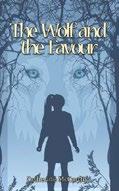
In McCarthy’s fantasy novel, a girl with Down syndrome finds herself in the company of supernatural entities.
Hannah is 9 years old when she and her father leave England for a cottage in Wales. It’s a tough point in her life, with puberty approaching and her estranged mother more invested in her acting career than her daughter. But Hannah, who has Down syndrome and sometimes escapes to her own inner world, easily adjusts to this new place. She cherishes time with her dad, Bleddyn, and quickly bonds with Miss Morgan, her school-assigned classroom assistant. Back at the cottage, “The Lane,” an ostensibly unused stretch of road, both fascinates and scares her. To its right sits her and Bleddyn’s garden, and to the left, woods. It’s near the woods where she comes across two astonishing
beings: a seemingly docile wolf who talks and what appears to be a “tree creature.” While the wolf warns her to stay out of the woodland, the creature beckons Hannah into the trees. McCarthy aptly fuses a coming-of-age tale with urban fantasy as Hannah turns 10, inches closer to high school, and gradually becomes independent, which both she and Bleddyn must acclimate to. Scenes with the otherworldly creatures are subtly woven into the narrative to simply become parts of the girl’s daily routine. Readers gradually learn more about the reality of the situation, and the unforgettable ending offers further clarity. The author masterfully conveys the story from Hannah’s mindset as the protagonist works out certain pronunciations, struggles to understand the nonliteral aspect of idioms, and reads a person’s true emotion in their eyes. Descriptions throughout are lyrical, whether it’s a voice in the breeze whispering Hannah’s name or Hannah merely looking out her bedroom window, the trees “black against the creeping darkness of the sky,” the “hand-shaped silhouettes of summer leaves” waving at her. This smartly understated, arresting urban fantasy boasts a charming young hero.
Kirkus Star
Page, C. Calvin | Self (47 pp.) | $12.99 paper | June 10, 2024 | 9798990736603

picture book features the statement, “Different ducks duck differently!”; this refrain is repeated throughout the text. The unnamed narrator explains that they’ve heard this ever since they were 3 years old and encourages readers to “ask a duck just how it ducks.” Each page of text alternates with the author’s full-page illustrations featuring ducks “ducking” in their own unique ways, whether dancing ballet on a stage in full costume (“with some pluck”) or in some other hilariously odd scenario. The prose consists of gentle rhymes that are broken up every few pages by the refrain. The illustrations, characterized sharp lines and bold colors, are highly detailed. (The duck “stuck in muck,” for example, is seen in the act of flinging off mud that drips and drops in a way that feels as if readers can reach out and touch it.) Page manages to instill an important message about being yourself in astonishingly few words—words that prove to be both powerful and silly, a combination that is sure to delight both children and adults. The book shines brightest in its illustrations, which are gorgeous and richly layered; the exquisite details prompt eyes to linger. This attention to detail, paired with an inspiring message expressed in a fun new way, makes for a refreshing read. Whimsical illustrations and a catchy refrain result in a joyous celebration of what makes us unique.
Parker, Honey | Slow Burn Marketing (322 pp.) $11.99 paper | June 25, 2024 | 9798986205137 Series: Sugar Bernstein RV-Living Vampire, 1
Page’s picture book features ducks who are determined to go their own way. The first page of this playful

In Parker’s horror comedy series starter, a novice vampire struggles to adjust to her new reality. “Be steely.” That’s what Sugar Bernstein’s boyfriend Curtis always told her, and it’s advice that she needs more than ever, now that her life has been completely upended. Curtis is dead; Sugar’s no longer a Manhattan
condo-dwelling ad executive with a penchant for shopping, wine, and mani-pedis; and her close-knit Jewish family is far away. Now, jobless Sugar both travels and resides in a Sprinter van, avoiding people and sunlight because she’s a vampire—the effect of a bite from Alexandria, also known as She-vil, a “vamp who lives on hate.” Alexandria constantly intrudes into Sugar’s dreams; while awake, Sugar struggles to feed herself by killing small animals. Also, her twin brother keeps trying to get her to attend his daughter’s bat mitzvah, which is inconveniently scheduled for the daytime. She does find some aspects of “V-life” more appealing: She lost a few pounds that she wanted to shed, and sometimes she manages to fly; when she falls, her broken limbs heal quickly. She also discovers a chain of RV parks that cater to an undead clientele, and that vampire sex is fantastic. Still, Sugar grapples with guilt—especially when it comes to her boyfriend’s untimely death at Alexandria’s hands. She’s increasingly aware that a possibly fatal showdown with Alexandria is inevitable. Over the course of the novel, Parker delivers a winning paranormal tale with quirky details. One fanged couple that Sugar meets, for instance, lives in a converted ambulance, and readers find out that even vamps care about gas mileage. Sugar is an inspired creation who’s relatable and quick-witted, and Parker excels at witty banter, especially between Sugar and her twin. Still, there’s an effective undercurrent of seriousness: Human companionship is off the table for Sugar, who’s forced to take lives to keep hers. The first person she deliberately kills is loathsome, but she can’t help but feel moral revulsion—and sadly, there’s no turning back. A lighthearted road novel that doesn’t shy away from the inherent darkness of vampire life.

Rinpoche, Lama Lhanang & Mordy Levine New World Library (128 pp.) | $16.95 paper Oct. 29, 2024 | 9781608688722

Lama Lhanang Rinpoche and Levine of the nonprofit Jigme Lingpa Center offer a quick reference and guide to understanding karma and bringing goodness into one’s life.
In this short nonfiction title, the authors aim to introduce readers to the concept of karma and show how they can use it to improve their lives and make the world a better place. Starting with the origins of the idea, over 2,600 years ago, they include how the Buddha started teaching the concept of karma and how his method may have differed from those of past teachers. Although many readers may understand the idea of good and bad karma, and how one might earn each, the authors expand upon the topic at length. They discuss “heavy” versus “light” karma, how karma is a type of habit that’s related to “the ways we view ourselves and our identity” in “the stories we tell ourselves,” the importance of “right speech,” and other topics. The book focuses heavily on Buddhist teachings, but the authors do a fair job of also explaining how concepts and practices may be followed within other spiritual or religious beliefs. The book relies heavily on agricultural metaphors, as karma is ultimately a practice of sowing good seeds for a future harvest, but it brings in pop culture references as well, including mentions of the films Groundhog Day (1993) and The Big Lebowski (1998). The book’s short chapters allow for a quick read, but readers can also elect to take their time by using the end-of-chapter exercises to focus on inner peace and building good karma. To that end, the authors
include useful meditations, examples of virtuous and non-virtuous acts, and visualizations in appendices.
A short but detailed introduction that may inspire readers to set out on a karmic journey.
Roberts, Janet | Ten16 Press (342 pp.) $26.99 | $17.89 paper | May 7, 2024 9781645387671 | 9781645387411 paper

In Roberts’ legal drama, a cybersecurity expert blackmails his boss to get a promotion in a reckless move that lands him in a world of trouble. Ted McCord works as a cybersecurity expert at River City Trust in Pittsburgh, desperately endeavoring to save enough money to buy a house for his wife Charlotte and their 5-year-old daughter Kelsey. Inadvertently, he stumbles upon a plot at work that involves his superiors, Ben Keene and Bob Thornton, to embezzle millions of dollars from the company and flee the country. Instead of reporting the conspiracy, Ted blackmails Ben into giving him a hotly contested promotion. His plan backfires, however, when Ben and Bob make it seem as if he’s the one embezzling money into a bank account established under his daughter’s name. Ted is fired and faces both criminal and civil charges, a terrifying predicament powerfully depicted by the author. The “house of lies” he’s built completely collapses—he needed the money from the promotion so badly because he inherited his father’s ranch in Montana, which was in financial arrears; he lied and told Charlotte that his brother, Jesse, was the owner, fearing that, if she knew the truth, she’d push to move there. In addition to delivering thrilling legal drama, the author sensitively chronicles the emotional tension that builds between Ted and Charlotte; she is devastated not only by his legal jeopardy and their newfound financial
distress, but also by his profound dishonesty. (“I don’t have to start anything with you,” she spits when Ted attempts a reconciliation. “Not until I’m ready. Maybe not ever. Definitely not now.”) She is the most complex and fully satisfying character in the novel, torn between standing by a man she loves but does not trust and starting over with a new partner, Danny Manella, a man she considers honest. Roberts resists any temptation to offer moral platitudes or cheerfully neat resolutions—as in real life, all of the biggest decisions are fraught with compromises. This is a deeply intelligent work and, unlike its protagonist, a refreshingly honest one, too.
A thoughtfully rendered combination of crime thriller and emotional drama.
Royce, M.E. | Self (470 pp.) | $19.99 paper July 1, 2024 | 9798990006508
Series: Alagana Trilogy, 1

In Royce’s fantasy novel, an elven woman learns that sometimes a gift is also a curse. Amid the familiar tents and taverns of Aideil, an otherworldly war is brewing. At its heart is Eyolin, a beautiful elf burdened with a terrifying gift. Imbued with nigh-unstoppable “magik,” she blames her abilities for the death of her mother and disappearance of her sister. Pursuing a life of anonymity, she longs to flee to a place without magik. But there are those who hunger for the power she eschews—and they are closing in with malevolence. When a vicious attack pushes her into the hands of Tequerra Arendt, Master scariyai of Aideil, she becomes a reluctant guest of The Great Hall, where her past and future are revealed: Once believed to be dead, Eyolin Kyenz is the orphan of powerful magik-wielders. But more important to the High Court than her noble blood is the hope that Eyolin is the “Fifth Sarom,” a being of immense magik who
Evil wears many faces in this absorbing fantasy tale.
THE MOON TEAR
may mold Fate itself. Sought by a necromancer King for the power she conceals and bound to an assassin with dark plans of his own, Eyolin learns that there are few she can trust. As innocent elves begin to die, she must learn to master her gift to stop the encroaching evil. When she identifies the dark presence that stalks her dreams, Eyolin confronts her greatest nightmare: her own destructive power (“There will always be monsters. It is when they show their face in the light, we realize that we knew them all along”). Weaving elements of magic and mystery, Royce offers a satisfying story with more suspense than many mainstream fantasy works. Slowly revealing the truth behind the death of Eyolin’s mother, the author deftly guides readers through shocking twists, leaving them guessing until the final page. Dark in tone, the work is frequently frightening and violent. (However, these moments are seldom graphic, and the work is appropriate for most adult readers.) The story ends on a cliffhanger; readers will be on the edges of their seats awaiting the unfolding of Eyolin’s future and the fate of the realms that seek her power. Evil wears many faces in this absorbing fantasy tale.
Sinclair, Sophie | Self (378 pp.) | $12.99 paper | June 14, 2024 | 9781735953960

Love under the Tuscan sun comes to an unlucky-inlove American in Sinclair’s romance novel. Summer Andrews is 36 years old and tired of dating. After one disastrous date too many, she
accidentally gets drunk at home and wakes up the next morning to find out that she has, inspired by her favorite film, Under the Tuscan Sun (2003), booked a cycling tour of Tuscany. When it becomes clear that she can’t cancel the trip, she decides to embrace the opportunity, leaving behind her life in San Francisco for new adventures while allowing her unreliable and estranged mother, Barbara, to live in her town house. Unfortunately, a bike accident leaves Summer and her new friend Harrison stuck in the Tuscan village of Tuttoscano to recover. Desperate not to return to America quite yet, Summer finds herself working and staying on the Rossi olive farm, under the watchful eye of the formidable Nonna Rossi and her very handsome grandson Lorenzo. Sparks begin to fly after a fiery start. Sinclair has created a sweeping romance that firmly places readers in the middle of a heady, hot Italian summer. The plot is not exactly revolutionary, and the book has many romantic cliches throughout. Nevertheless, Summer is an endearing and complex heroine who is torn between a life in “gorgeous, breezy, lazy afternoons sipping wine, Italia” and repairing the relationship with her mother back in California. There’s a complexity to her character, and her frustration with the lack of connection in modern dating is sure to resonate with readers. Though the scenario might sound a bit too familiar, Sinclair doesn’t make the love story play out too easily. Above all, the novel beautifully transports readers to the olive groves of the Italian countryside, which will surely end in many booked vacations and numerous repeat views of Summer’s favorite movie in the interim.
For readers who love holiday romances, a brilliantly charming novel about living your best life.
Smith, W.E. | Moose Mountain Books (238 pp.)
$22.99 | $14.99 paper | Feb. 21, 2024
9780998484792 | 9798991312905 paper
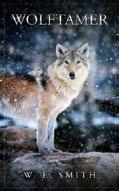
Cultures clash and merge when a white youngster and his pet wolf cub join an Ojibway clan in the Michigan Territory in Smith’s historical novel of the Great Lakes.
It’s the 1820s, and Morning Star is an 11-year-old Ojibway girl whose family subsists on hunting and fur-trapping in the Michigan Territory. But they fear that encroaching settlers will put an end to their traditional ways and force them onto a reservation. Caleb Jordan is a white 12-year-old boy living with his blacksmith father, Daniel, in Albany, New York, where he broods over the death of his mother and sister in an epidemic the previous year and yearns to live in Indian Territory like his hero, Daniel Boone. Caleb gets his chance when his dad takes a job as a blacksmith at the new reservation at Saginaw Bay, Michigan, and the pair set out on the long journey. As they trek north from Detroit to Saginaw, Daniel and their Ojibway guide, Standing Bear, go missing in the primeval forest; Caleb gets lost in a snowstorm, taking shelter in a wolf’s lair, where he finds a lone pup. He’s rescued by Morning Star and her kind family. Fearing that Daniel is dead and that he’ll be sent to an orphanage, Caleb, with his pup, goes with Morning Star’s family as they head north by canoe to Lake Superior, far from settlers and reservations. There, he learns Ojibway traditions, becomes an accomplished hunter, and is adopted into the nation under the name Mahengun-wangawi, meaning “Wolftamer,” in honor of his strong bond with his growing pup. Unbeknownst to him, Daniel is alive and has started his own trek through the Michigan Territory, chasing vague rumors of a blondhaired boy and a wolf.
Smit h’s yarn paints an engaging panorama of the setting, detailing such things as Ojibway methods of harvesting and processing wild rice and an epic six-day stagecoach run from Albany to Buffalo—an ordeal of bone-rattling jolts over frozen, rutted roads. The vast, gorgeous Michigan wilderness is an entrancing presence. Smith also takes a deep dive into the colorful history of the Northwest Territory, from the bloodbath of the 1791 Battle of the Wabash, in which Miami and Shawnee warriors killed more than 600 American soldiers, to Commodore Oliver Perry’s capture of a British flotilla at the 1813 Battle of Lake Erie. There’s rambunctious, entertaining action in the narrative, but Smith’s prose also takes on a lyrical cast in its explorations of characters’ psychology and spirituality; on a vision quest, Morning Star is described as having “heard a voice inviting her to walk the Shining Trail, which leads from earth to the heavens….She climbed and climbed along the Trail, surrounded by stars and galaxies, until at last she came upon Everlasting Shining Woman...clothed in cloth as bright as the brightest stars; her face, her hair, and her eyes shone with double brightness.” The result is a captivating historical re-creation of a tumultuous and stirring era.
A rousing period saga, full of rich detail, engrossing lore, and vibrant emotion.
Smock, William | Atopon Books (190 pp.) $22.27 | April 1, 2024 | 9798986610924

A self-indulgent prepubescent nobleman hits the road and experiences life outside his earldom in Smock’s middlegrade novel.
Eleven-year-old Bobby is the Earl of Acton Waters, a village in mid-12thcentury England. He orders people to do what he wants, including servants and his own father, as Bobby inherited his title from his uncle. One day, Fahd, a “beggarman” who hails from Africa,
arrives in the village. Bobby is seemingly drawn to Fahd’s cheery disposition—a sharp contrast to the young Earl’s unequivocal brattiness. He opts to travel with the African and picks up personal stories from the likes of a magician and a baker’s wife. Making these connections with people ignites a desire in Bobby to be more mature like Fahd. Meanwhile, Fahd dreams up a “Great Deed” the two can carry out, provided they can deal with local bandits. Bobby soon learns that Acton Waters is apparently in worse shape than when he left; will the hopefully improved tween be the one to turn things around? Smock’s diverting tale is a quick read chock-full of lively descriptions, from a bustling town’s crowded market and streets to such unforgettable cuisine as a “flat green spinach pie soaked in honey.” There’s plentiful humor, especially when people, unaware they’re speaking to Acton Waters’ runaway earl, deliver unfiltered gossip about the boy. (He evidently reeks of “athletic socks”— probably true, since he avoids baths—and is reputedly no longer in the village on account of a bear eating him.) It’s encouraging to see Bobby gradually learn to empathize with others and fight to better himself, even willingly putting himself in harm’s way for that Great Deed. All the while, Bobby and Fahd move from place to place in a brisk narrative that ends with a befitting denouement.
This coming-of-age tale smoothly blends uplifting moments with welcome drollness.
Suesse, Gwen | Cantando Press (208 pp.)
$15.99 paper | Sept. 10, 2024 | 9798989755219

Suesse offers a pragmatic field guide to coping with the loss of a loved one. When her husband died unexpectedly, the author, who was in her early 60s, found herself torn from her normal life
and deposited onto what she calls “Planet Widow,” a “desolate, hostile land” marked by a “strange barren landscape.” In this memoir, she chronicles her journey to finding her way out—or, rather, to finding her footing on unfamiliar ground. While Suesse is adamant that the book is not meant to be universally instructional (“This is my story, colored by my specific circumstances, but its revelations and lessons can, I believe, be applied to a broad spectrum of loss experiences,” she writes), its prescriptions suggest otherwise. Rather than delving too deeply into the specifics of her personal experience, Suesse relies on collective pronouns and calls to action throughout the book, no doubt drawing on her experience as a life coach. (“We need to stop. Full stop!” she writes when discussing the importance of people giving themselves grace in times of grief.) Of course, readers in the throes of such grief might not mind a little firm guidance. In taut, uncluttered prose, the author organizes her thoughts in accordance with the core lessons she learned during her healing process. What emerges is a trio of “talismans,” a kind of mantra for the bereaved: Grace, Curiosity, and Questions. Her advice ranges from encouraging readers to allow themselves to feel whatever feelings come their way (sanctioned by quotes from Rumi and Maggie Smith) to assembling a support team (cosigned by Mr. Rogers). While she avoids listing the stages of grief, Suesse’s conventional wisdom is by no means novel. Still, when it comes to feeling less alone after the loss of a loved one, the simplest messages (imparted here in the familiar argot of self-help gurus) can sometimes bring the most solace. Spiritual platitudes abound in this formulaic yet satisfying grief memoir.
Kirkus Star
Thomas, Thomas A. | Moonpath Press (70 pp.) | $16.99 paper June 1, 2024 | 9798989948703

A collection of poems about love enduring through illness and impending loss. Love is patient, but is it patient enough to withstand a miserable decade of Alzheimer’s disease? In his melancholic collection, Thomas’ love for his wife comes alive in small details and shared moments—the very same moments that she, his muse, is robbed of as her mind and body degenerate. There is a loose chronology to the poems, which are organized in subtly titled sections that belie their intensity: “Heart-Stirred” represents the rosy period of love, “Onset” begins the descent into heartsickness, and “At Sea” limns the bereft acceptance of loss. The tone continually shifts throughout, from the prismatic joy of the couple’s first meeting to the grim diagnosis as the work charts the ways in which partnership becomes caregiving as the afflicted wife is eventually exiled to “the little boat / of her hospital bed.” As Thomas grows increasingly unable to connect to his wife, he becomes more involved with the natural world around him, as seen in “My Returning”: “a flower at the highest blossoming in the moment she / turns toward death. I am, I am, I am not separate…I am sitting in an oak / tree watching.” Thomas’ specificity breathes all the shades of love into these verses, from the erotic “My Wife’s Last O” (“rocks me warm and mesmerized, / presses my skull against her mound / and pelvic bone and
her hips rise just / so gently”) to the mournful “The Sirens, Before Dawn” (“the tiny hairs of your forehead, / trace their way to your temple hollow, my / breath warming the scent of your skin… in that other life we had, that gone cosmos”). The reverence for granular details—temple bones, an embrace in the dark, cleaning and feeding routines— conveys the depth of Thomas’ feelings. This work is a moving reckoning with the value and cost of love.
A morose, bewitching elegy to love.
Towsey, Kate | Rosenfeld Media (336 pp.) $52.24 paper | Sept. 17, 2024 | 9781959029229

Towsey’s comprehensive guide aims to help employees plan, manage, and scale their research to improve methods and results. Anyone whose job description involves researching—whether as a ResearchOps specialist, marketing manager, or professor—will be interested to learn new methods for improving their operations processes. The first section of this manual breaks down scaling research vocabulary and strategies, including the relatively new term “ResearchOps” (which largely refers to maximizing value wherever it’s most needed) and the ways that “research outputs, people, and systems must be balanced and orchestrated to achieve strategic priorities.” The second section covers the eight elements of ResearchOps: “Participant recruitment” (how to find people for your study); “Knowledge management” (emphasizing the importance of trust within a study team); “Onboarding and support” (which includes choosing the proper support operating model); “Tools and vendors” (how to create your own “research tooling blueprint”); “Ethics and privacy” (how to protect your participants); “Money and metrics” (including the four operational tactics to get maximum money for your
research); “Program management” (how to prioritize tasks); and “People and skills” (how to attract and keep top talent). Each chapter contains plenty of industry and real-world examples, such as when the author observes that any map of a public transit system mimics a kind of “decision tree.” Despite its nearly encyclopedic length and density, Towsey’s guide manages to leaven the heavy use of technical terms and jargon with a warm and engaging tone. Copious amounts of graphs and charts, many of which are extremely technical, break up the text and provide guidance for more visual learners. The author even works in some lightheartedness by recommending that readers “tackle one or two big hairy audacious goals.” While the material certainly isn’t for beginners, Towsey’s suggestions are both useful and relevant for professionals in the field of research.
An approachable reference tool that packs in an impressive amount of information.
Vinson, Samuel Jennings | R & Stone House Publishing (102 pp.)
$27.50 | $17.99 paper | Aug. 15, 2024 9798990702448 | 9798990702417 paper
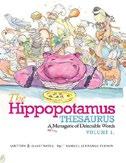
Funny words in the English language come to life in Vinson’s illustrated collection of poems.
Each poem in the collection is a highly imaginative rhyming embodiment of a peculiar (and often downright funny) word, with poems titled “Pottle,” “Quixotic,” “Hullabaloo,” and “Flibbertigibbet” (and yes, that is an actual word). A full glossary at the end defines each word, in addition to some trickier words found throughout the book. The fun is in reading the poem for a sense of what the title word means before checking the glossary for the accuracy of your interpretation. In “Bibliopole,” the speaker
lists his most prized books (“Beowulf, Iliad, Anna Karenina, Dickens and Poe, / The Great Gatsby, Don Quixote, even Thoreau. // Be careful, don’t touch, these are exceedingly rare, / the pages are old so they could easily tear”), and the page includes an illustration of a proud Santa-like man in his library apron holding his precious books. “Quomodocunquize” is accompanied by an illustration of a young woman with blond hair wearing a business suit and tending her lemonade stand: “I must be clear, everything here has a price, / no freebies here, not even the ice. // The lemonade is a quarter, / the cup is a dime, / I also charge for the straw, / and that isn’t a crime.” Vinson’s illustrations are whimsical line drawings with muted watercolors, usually adding a little extra heft to the poems. For example, “Interrobang” is illustrated with a big-nosed question mark colliding with a mustachioed exclamation mark. The poetry is exquisite, the rhyming and meter feels just right, and the vocabulary has an invigorating, no-holds-barred feel to it. The book offers a rare and wondrous opportunity, mainly because there’s something practical at stake: uncovering the meaning of the title word. Even younger readers will likely delight in the musical rhythm, imagery, and silliness of the poems, at least until they’re old enough to engage with the vocabulary. An enchanting way to nurture fascination with and a love of words and poetry.
von Simson, Ernest | iUniverse (438 pp.)
$21.69 | $22.31 paper | April 24, 2023 9781663250537 | 9781663250513 paper

A new edition of a book chronicling the early years of computers. Centering on the period from the 1970s to 2000, Simson charts the rise of the computer industry and the men and women who helped
transform it. As Simson puts it, he had a ringside seat for the period, running, along with his wife, the “quietly powerful” think tank Research Board, which “observed and occasionally guided the computer industry.” From this vantage point, he met many of the crucial figures of the period, including Bill Gates (who “intuited that the future belonged to volume”) and Steve Jobs (who expanded the personal computer market “from thousands of enthusiasts to millions of homes”) and learned some essential lessons. One important lesson was that “vision is a perishable currency until executed,” and another, equally central, dealt with “how disruptive technology can work to destroy even those who understand it well.” Simson looks at a variety of powerhouse companies, like Hewlett-Packard, Wang Labs, Digital Equipment, and IBM, and he profiles some of the company leaders who had to deal with upheavals in IT, showing their insights and mistakes. Ken Olsen, for instance, the head of Digital Equipment and the man who famously said, “There is no need for a computer in the home” (“the remark,” Simson notes, “that draws squeals of disbelief to this day”), is characterized as “a brilliant strategist who lost his touch” as his company failed to adapt to industry changes. Simson is a knowledgeable, insightful guide, and although his insights are often densely wonkish (“product-group allocations of scarce technical resources were entirely self-serving and without regard for the revenue potential of a company’s account as a whole,” and so on), he astutely notes the root cause of corporate failure in the face of seismic changes: the tendency of upper management to stubbornly stick around instead of leaving or changing.
An invaluable insider’s guide both to the IT explosion and to surviving massive tech advances.

For more Indie content, visit Kirkus online.
The Day I Had a Dinosaur
Wall, Ashley | Illus. by Vaughan Duck
MamaBear Books (36 pp.) | $17.95
$9.95 paper | June 11, 2024 9781960616111 | 9781960616128 paper
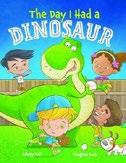
A normal day turns positively Jurassic with the appearance of four dinosaurs. Luke and his dog, Bobo, are digging in their backyard sandbox when they encounter an unexpected surprise—a full-size T. rex! They’re barely able to introduce themselves to Rex before Luke’s friend Noah arrives with a brachiosaurus and invites the three of them to the playground. Dinosaurs can’t use the monkey bars, though, so they invent their own games. Emma and Mikey, along with their triceratops and pterodactyl, join the fun. “Today was officially the best-osaurus day ever!” Hide-and-seek goes very well, but as they launch into other games, Luke and his friends notice Rex struggling to participate. He becomes so disheartened that he wants to leave. They remind him of all the adaptations they’ve already made to better accommodate him and encourage him to modify and practice the new activities until he improves. Rex, now inspired, absorbs the lesson of support and perseverance. This follow-up to The Day I Had a Bulldozer (2023) is likely to hit home with the dinosaur-loving preschool crowd. While we don’t learn much about dinosaurs, Wall’s lesson of accommodation and resilience is crystal-clear. Duck portrays a diverse group of friends, including Asian, white, and Black children. The kids have cartoonishly large heads, and the illustrator uses a bright palette of blue, green, purple, and orange.
A simple, charming story about dinosaurs, adventure, and friendship.
Whitman, Ernestine | She Writes Press (344 pp.) | $17.99 paper Sept. 24, 2024 | 9781647427320
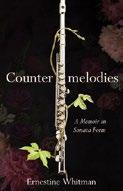
W hitman, an accomplished flutist, shares her struggles to overcome abuse from male authority figures to establish her career in the cutthroat world of classical music.
Born in 1946, the author grew up in Atlanta in the shadow of the older sister she idolized, Melinda. Four years Whitman’s senior, Melinda was the family’s overachieving superstar.
Whitman spent her childhood and early adulthood seeking the same approbation from her father that he showered upon Melinda. Per the author, his cruel dismissiveness regarding her many accomplishments and her career aspirations in classical music instilled in her an insecurity that would be reinforced by the abusive behavior of a series of men she trusted. Her friend Anne encouraged her to join the junior high school band with her, where both of them could learn to play the flute. It was a turning point in Whitman’s life; the flute spoke to her soul. In eighth grade, she began taking private flute lessons with the perpetually scowling high school band conductor Warren Little, considered to be Atlanta’s best flutist. To her surprise, he was warmly supportive during their private lessons.
Thus began “the quick transformation of Mr. Little from strange band director to beloved teacher and father figure.” In 1966, while in her sophomore year at Emory University (where her father was a tenured professor), Whitman was invited to audition for, and was offered, the position of second flute in the prestigious Atlanta Symphony, becoming its youngest full-time member. It was a major professional achievement that would simultaneously present one of the greatest psychological challenges of her young life. The acclaimed Little was the Atlanta Symphony’s first flutist, sitting next to her in the orchestra. The author describes an inexplicable transformation from Dr. Jekyll into Mr. Hyde, reporting that Little spent five years denigrating her performance, grimacing, and threatening to have her fired. Several years later, after leaving Atlanta, she sought counseling from a Freudian psychoanalyst in training, who, Whitman asserts, betrayed her trust and his professional ethics. After an especially egregious therapy session, she made her second attempt at suicide. Classical music forms the structure and provides the energy for this beautifully composed and occasionally heart-wrenching memoir. The author’s passion for the subtleties and mechanical complexities of great orchestral productions flows from her pages. Although the copious minutiae about individual pieces and conductors will be best appreciated by those already well versed in orchestral music, there are passages here that soar, and even the uninitiated (whose eyes may occasionally glaze over a bit) are likely to be intrigued by this behind-the-curtain portrait of the highly competitive classical music arena. Engaging details concerning pitch, range, and techniques of mastering the flute are descriptive enough to fine-tune the attention of the most casual concert attendees. There are incidents in this personal saga that would qualify for inclusion in any compendium of “Me Too” accounts; still, this is a robust story of remarkable perseverance and success in the face of many obstacles.
A disturbing and compelling tale of resilience, determination, and musical passion.

1. Title: Kirkus Reviews
2. Publication Number: 078-070
3. Date of Filing: August 15, 2024
4. Issue Frequency: T 5. Number of Issues Published Annually: 24
6. 2024 Annual Subscription Price: $179.00
7. Complete Mailing Address of Office of Publication: Kirkus Media LLC 1140 Broadway, Suite 802 New York, NY 10001
8. Headquarters Office of Publisher: Kirkus Media LLC 1140 Broadway, Suite 802 New York, NY 10001
1140 Broadway, Suite 802 New York, NY 10001
9. Full Names and Complete Mailing Addresses: Publisher and CEO: Meg Kuehn, Kirkus Media LLC Editor in Chief: Tom Beer, Kirkus Media LLC 1140 Broadway, Suite 802 New York, NY 10001
A. T
B Paid and/or requested circulation
1. Paid/requested outside-county mail subscriptions
2 Paid in-county subscriptions
3. Sales through dealers and carriers, street vendors, counter sales, and other non-USPS paid distribution
4 Other classes mailed through the USPS
C. Total paid and/or requested circulation
D Free distribution by mail
1 Outside-county
2 In-county
3 Other classes mailed through the USPS
4 Outside the mail
E. Total free distribution
F.
G

Owner: Herbert Simon Revocable Trust - Herbert Simon Trustee
11. There are no bondholders, mortgagees, and other security holders owning or holding 1 percent or more of total amount of bonds, mortgages, or other securities.
12. Tax Status: The purpose, function, and nonprofit status of this organization and the exempt status for federal income tax purposes have not changed during preceding 12 months
Publication Title: Kirkus Reviews Issue Date for Circulation Data Below: Oct. 1, 2024 Extent and Nature of Circulation: National distribution to libraries, publishers, publicists and other publishing professionals
